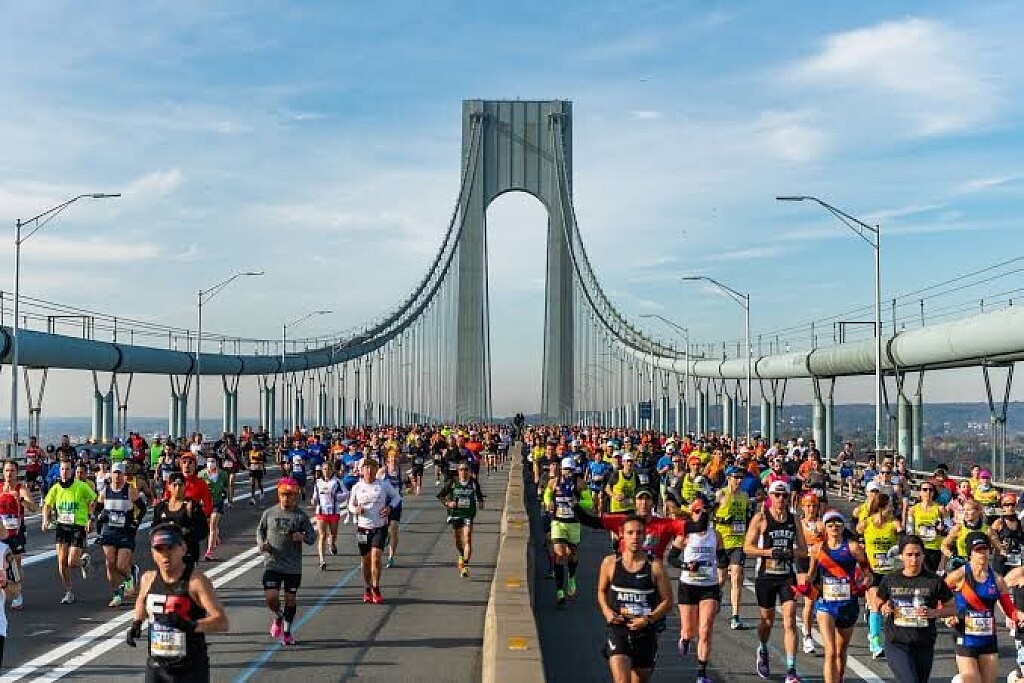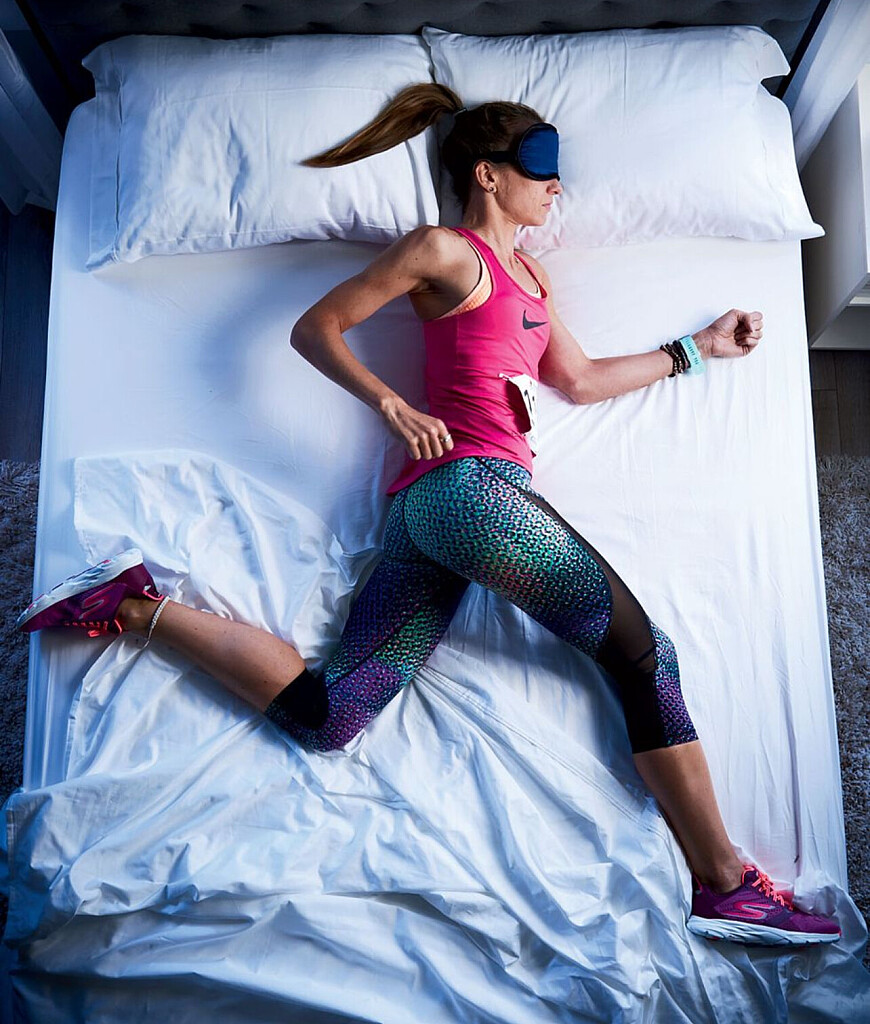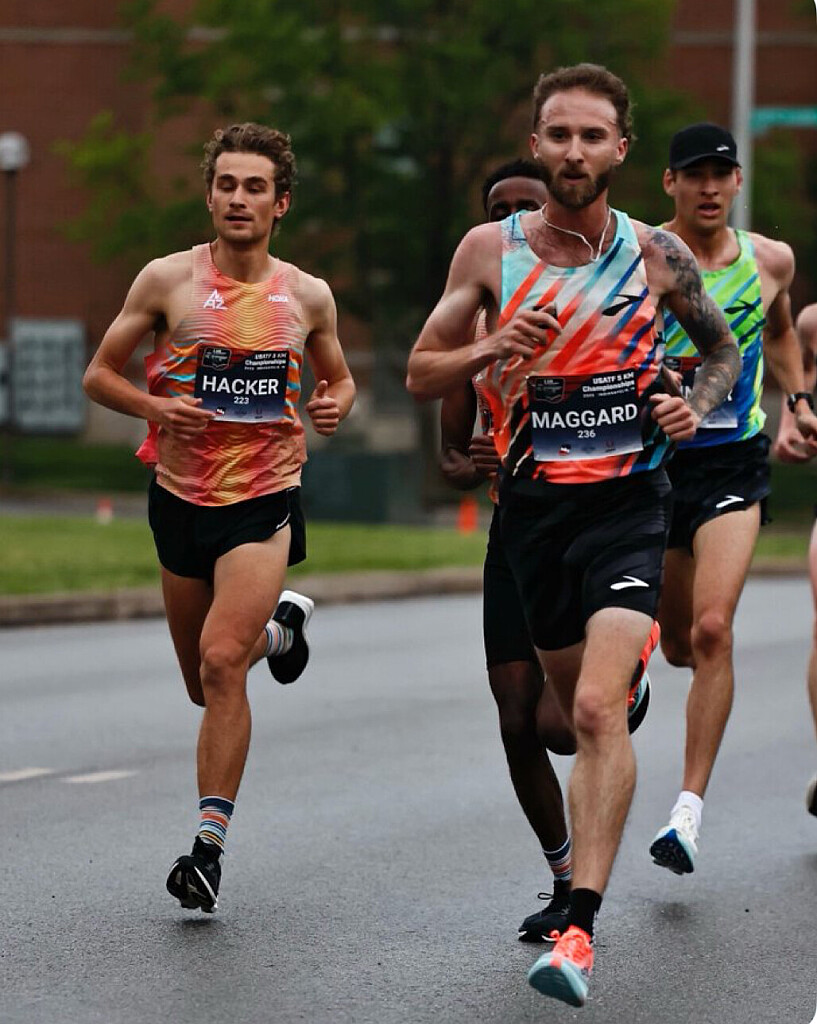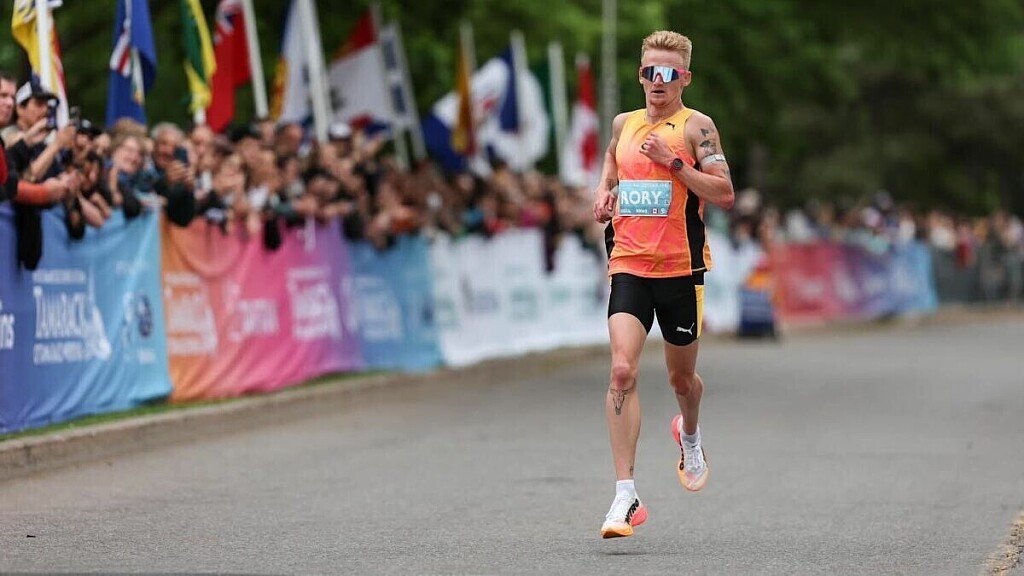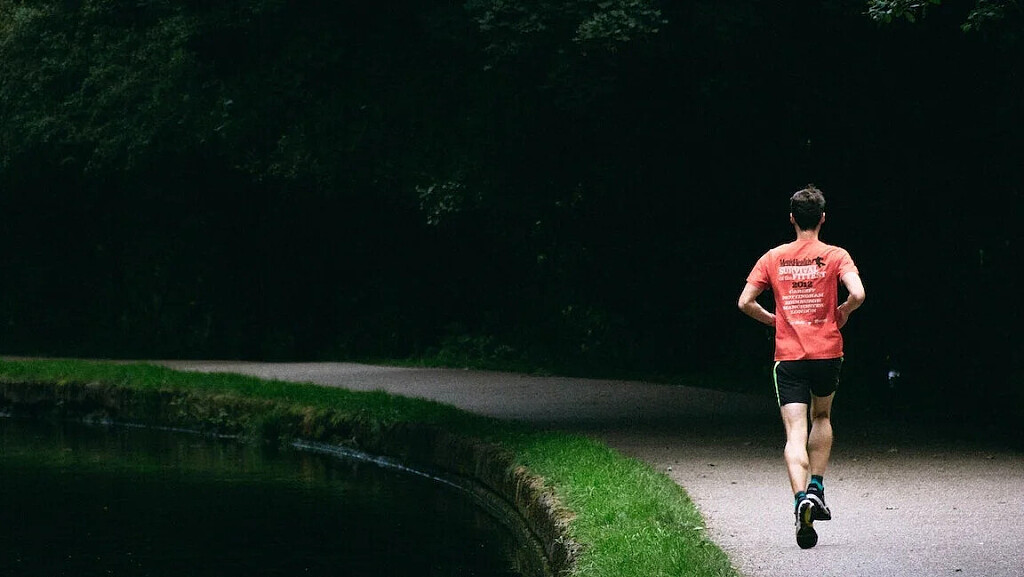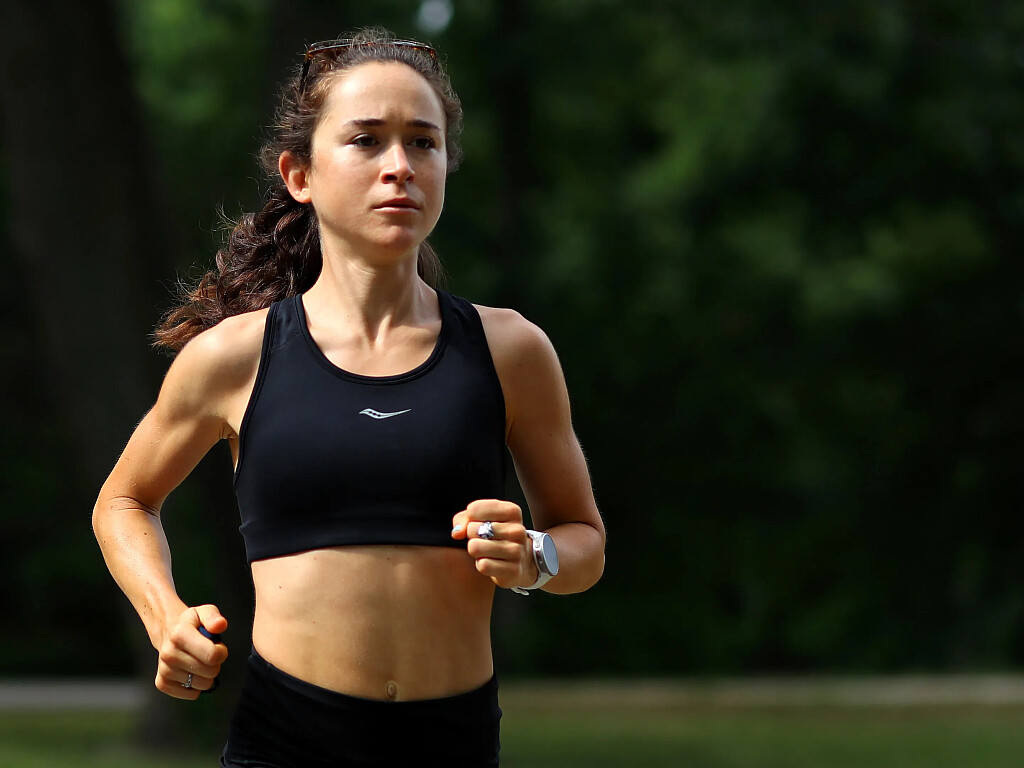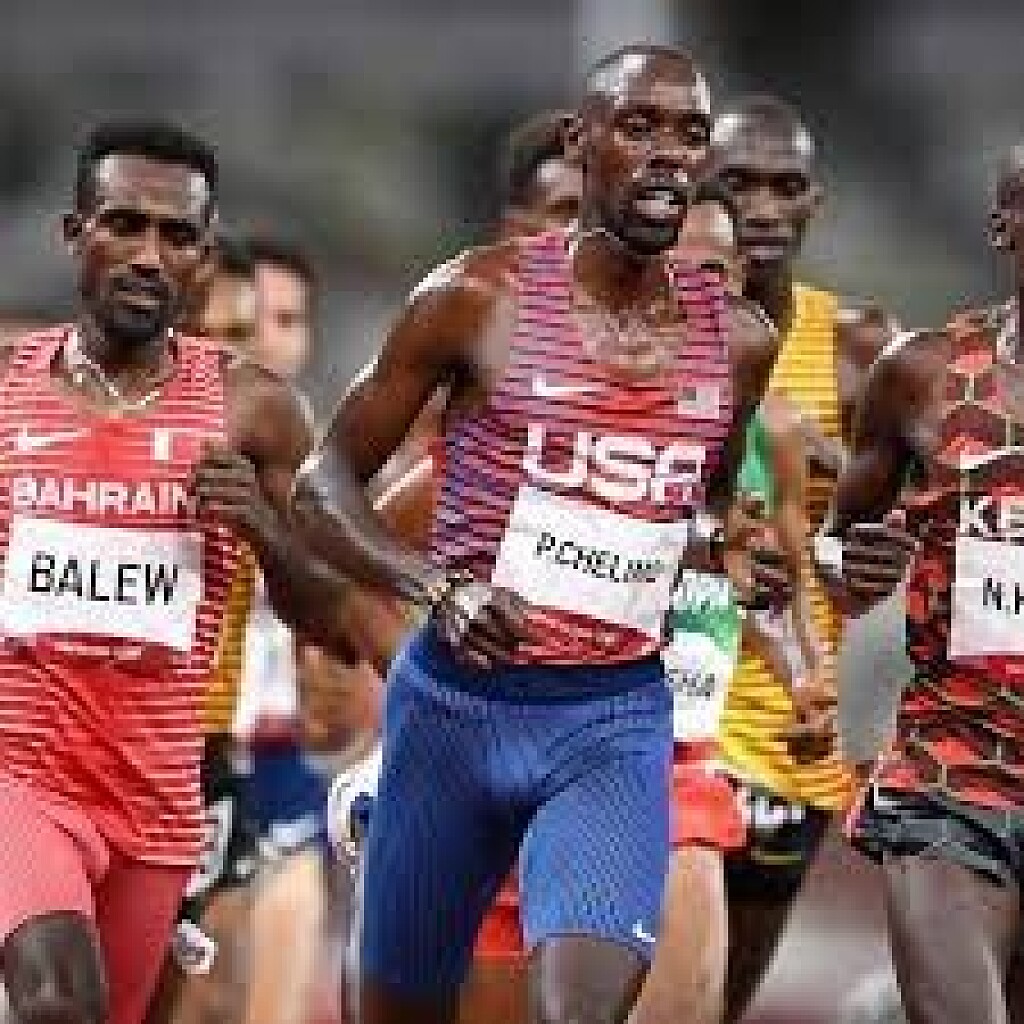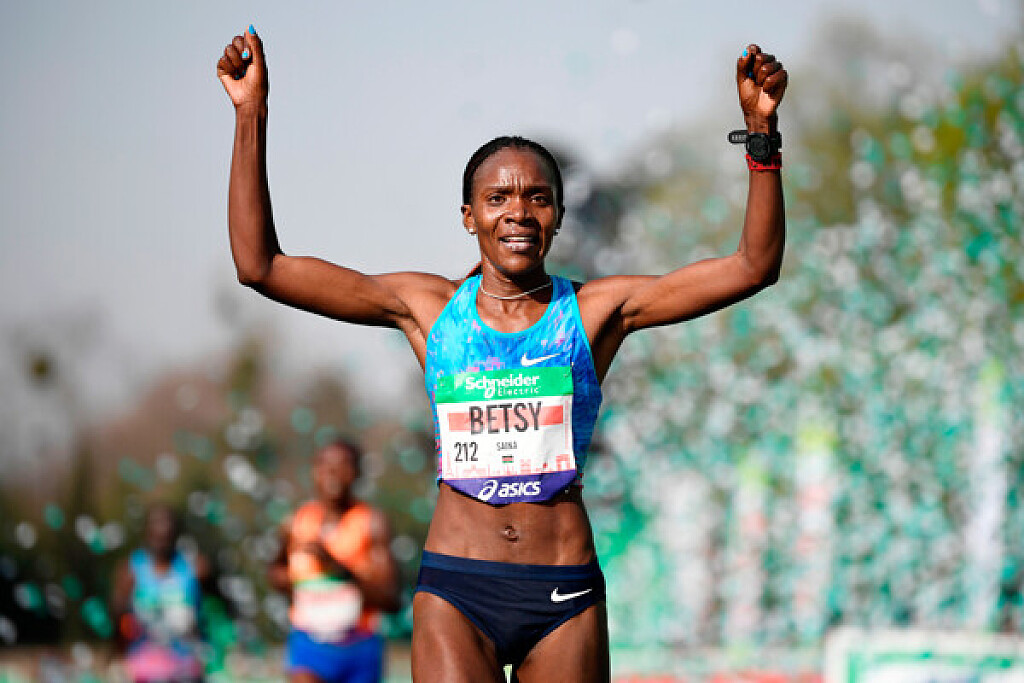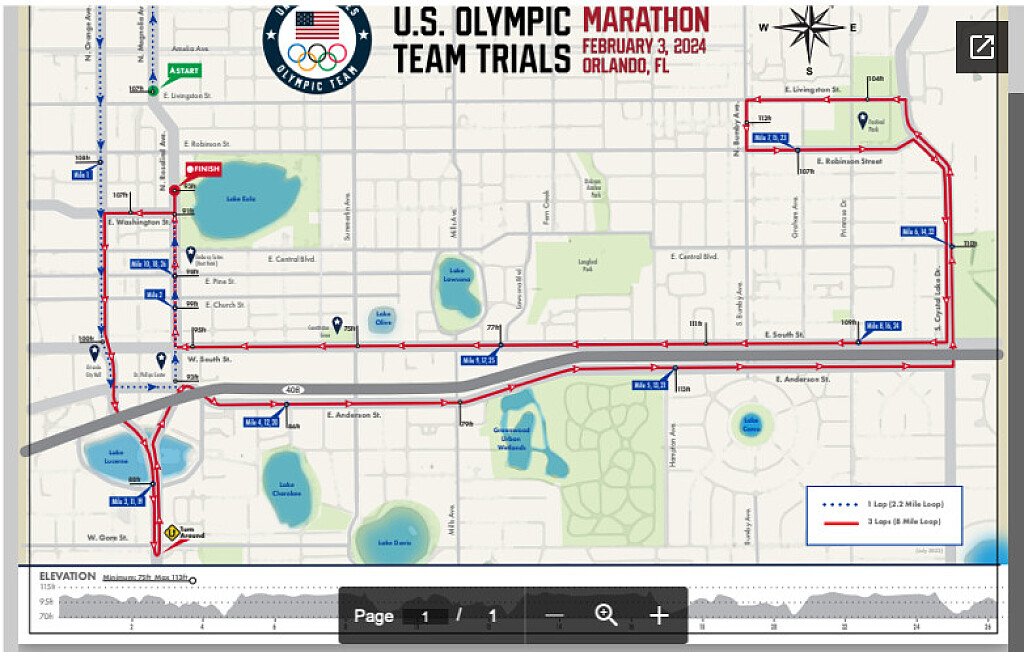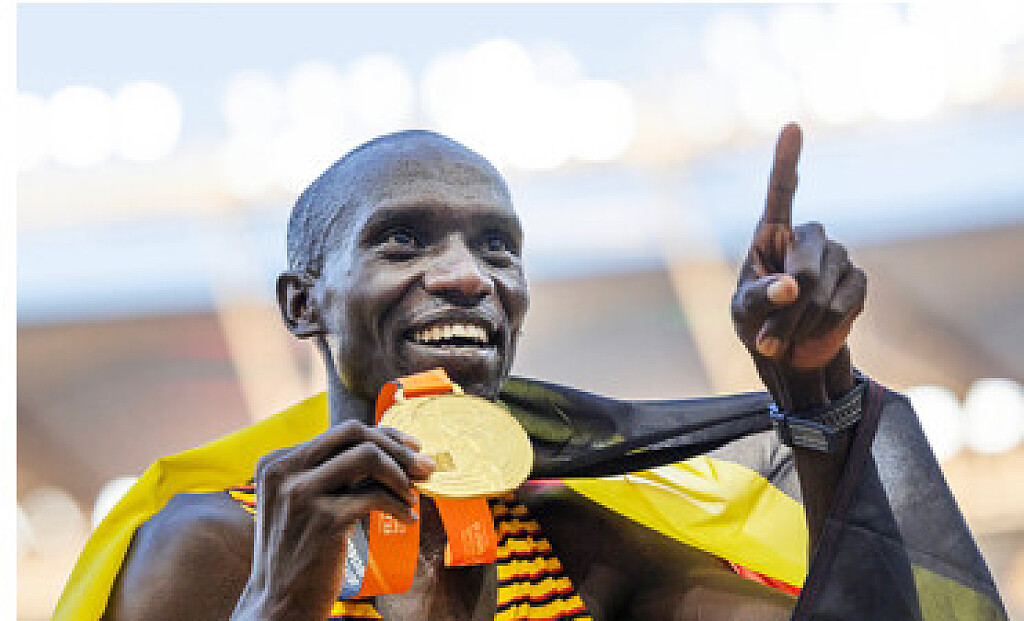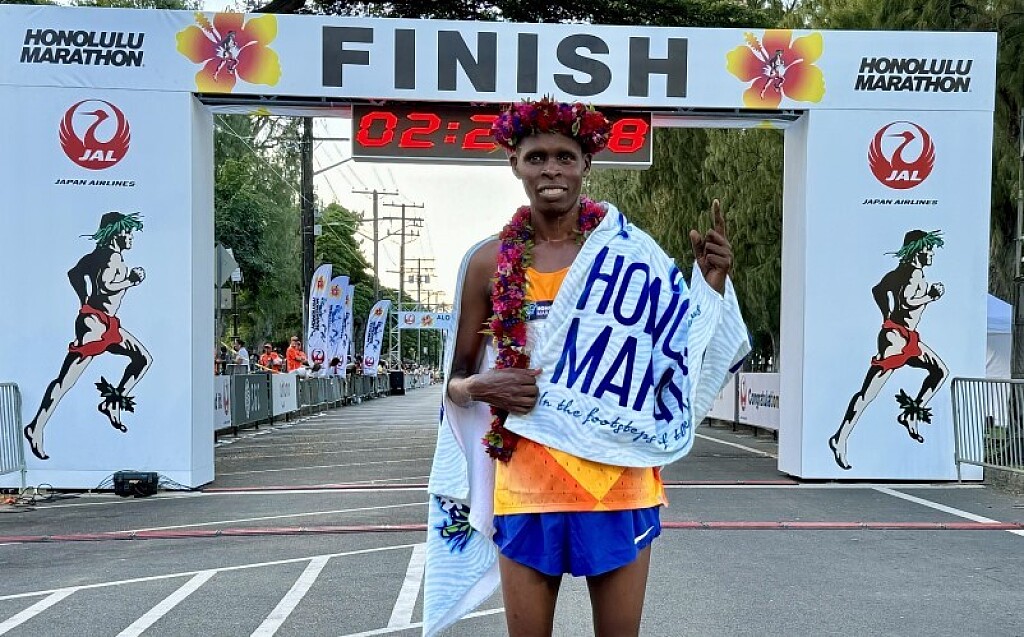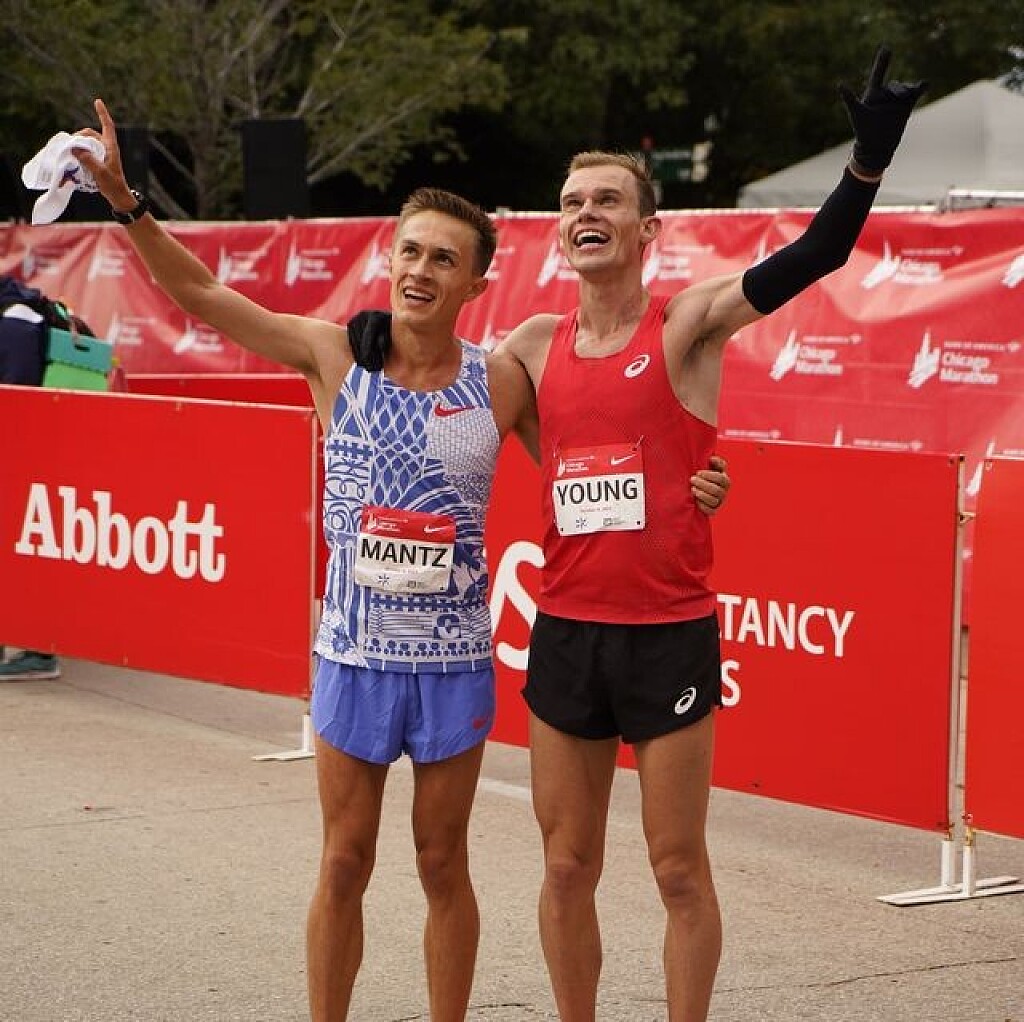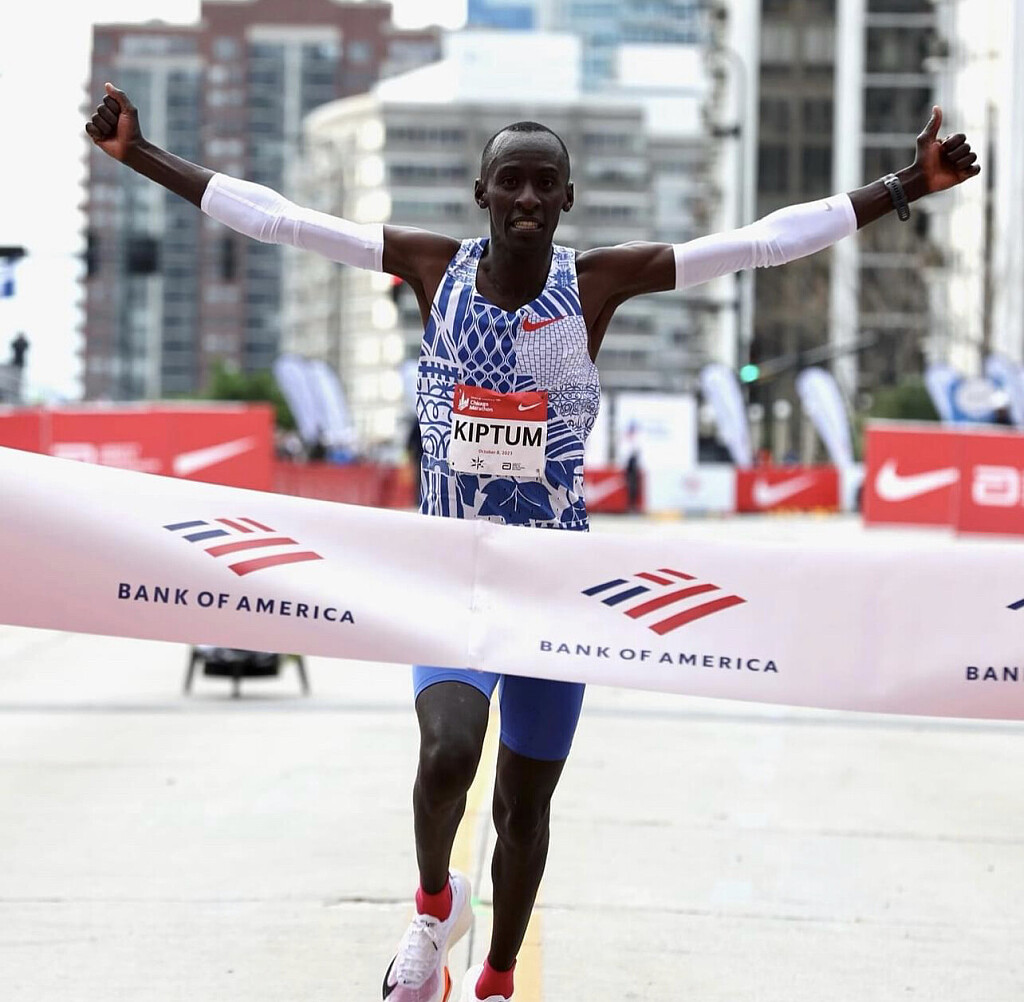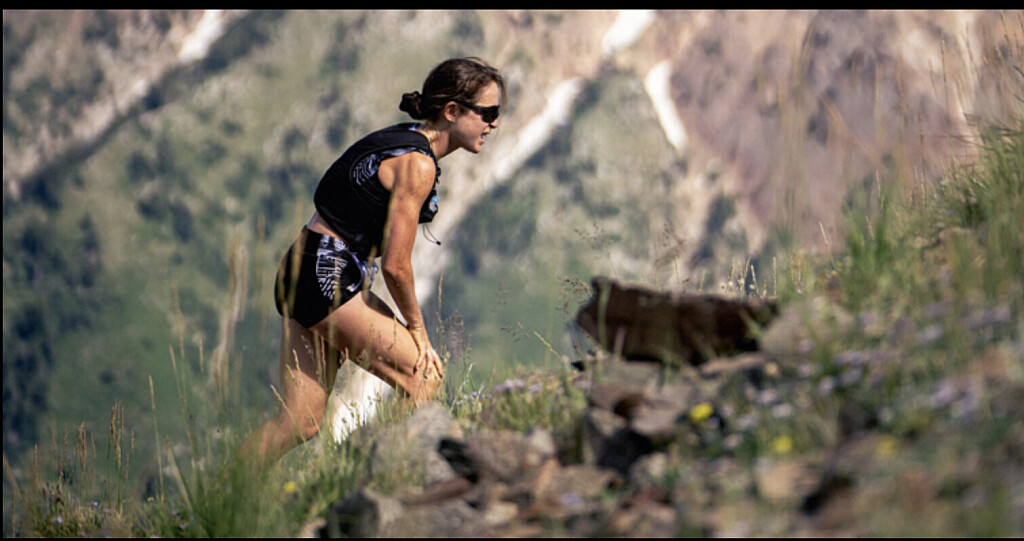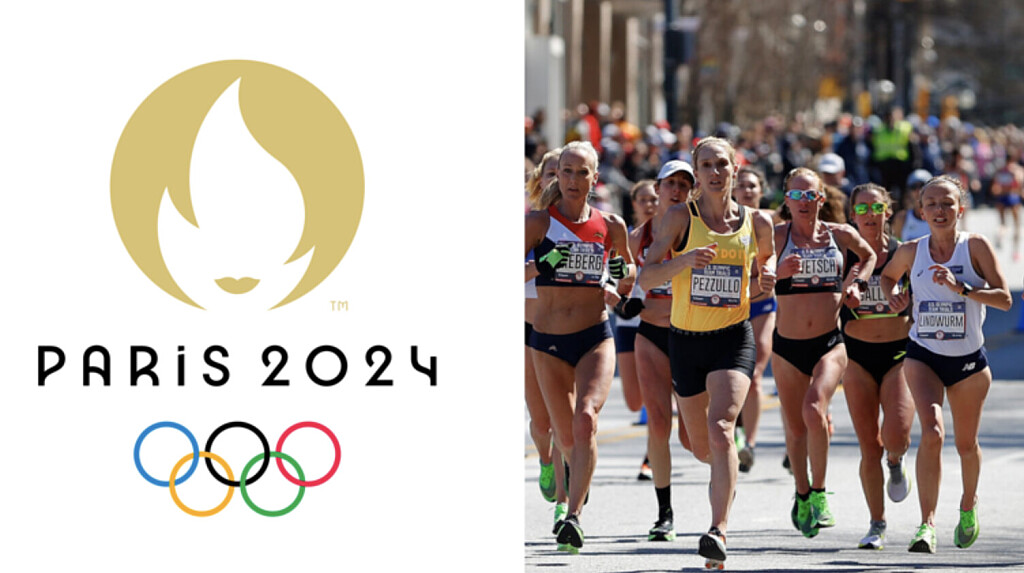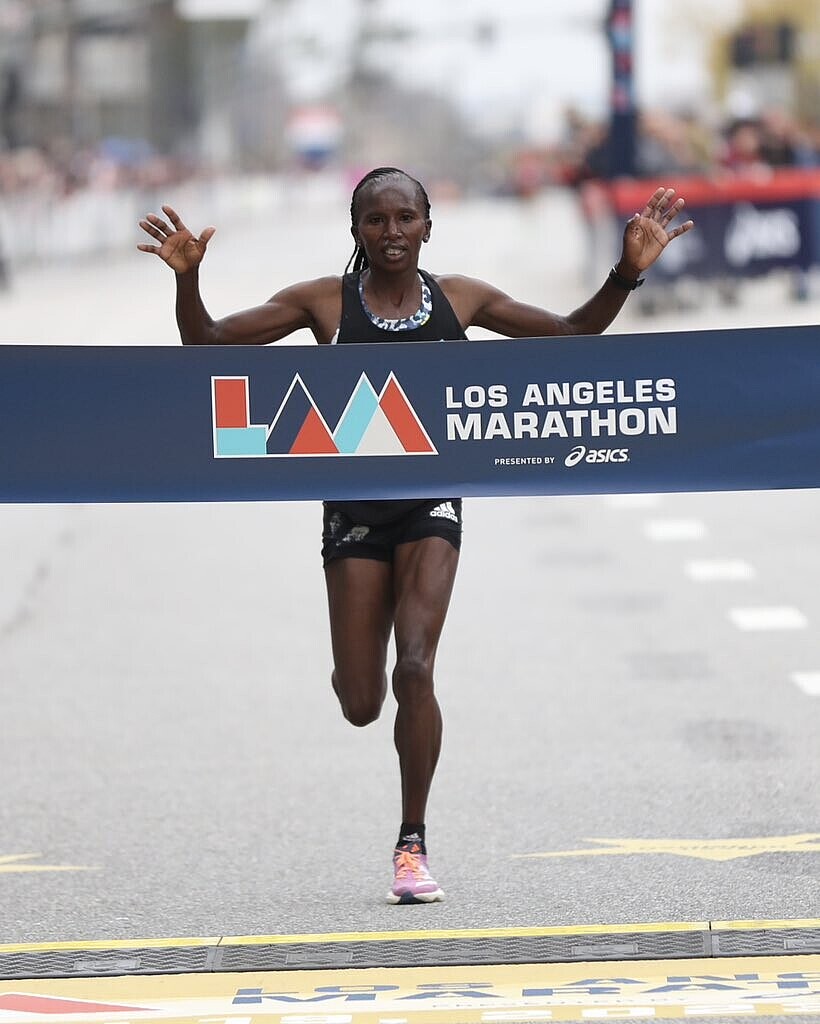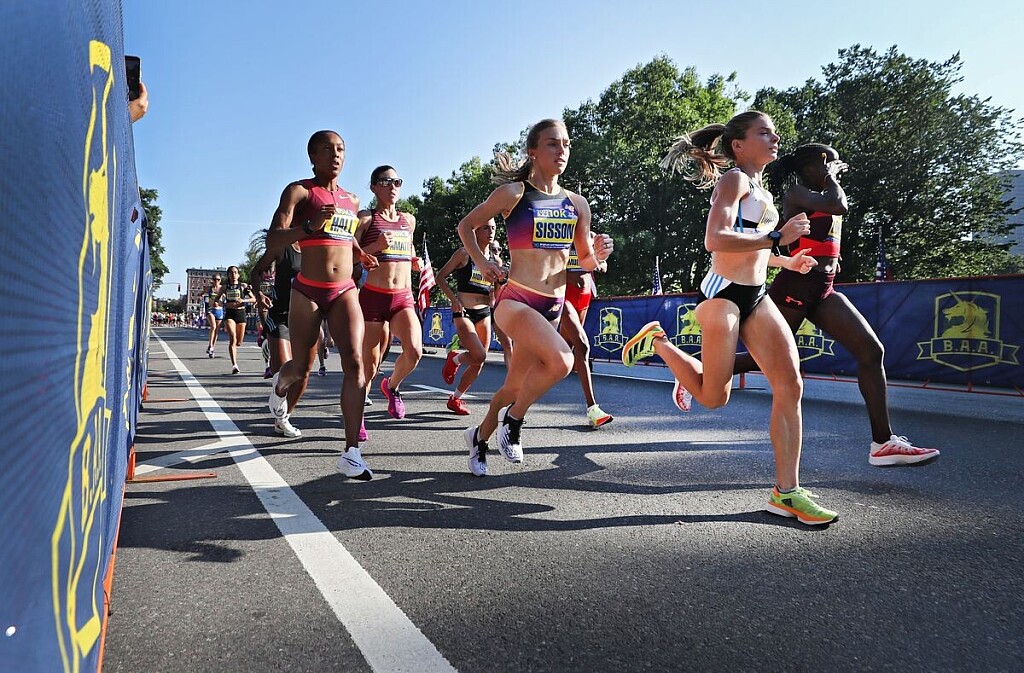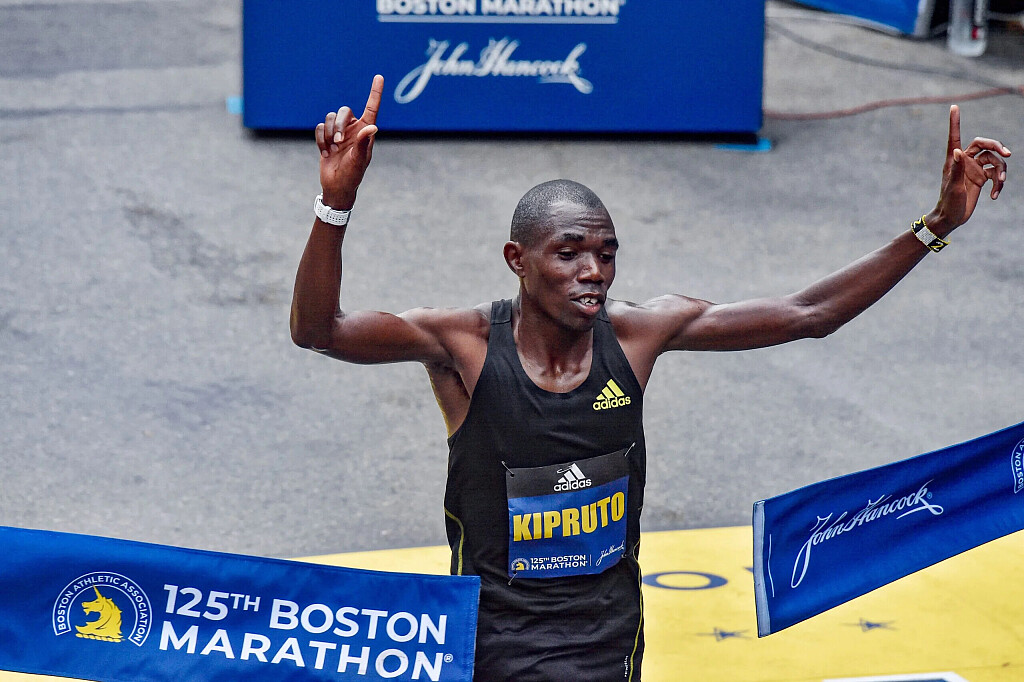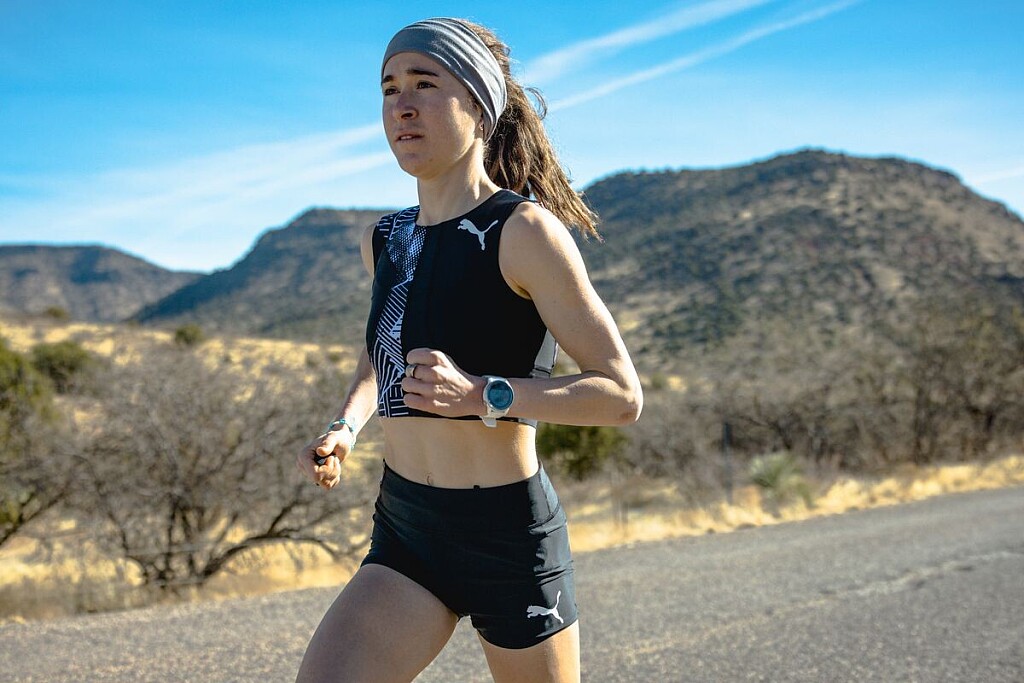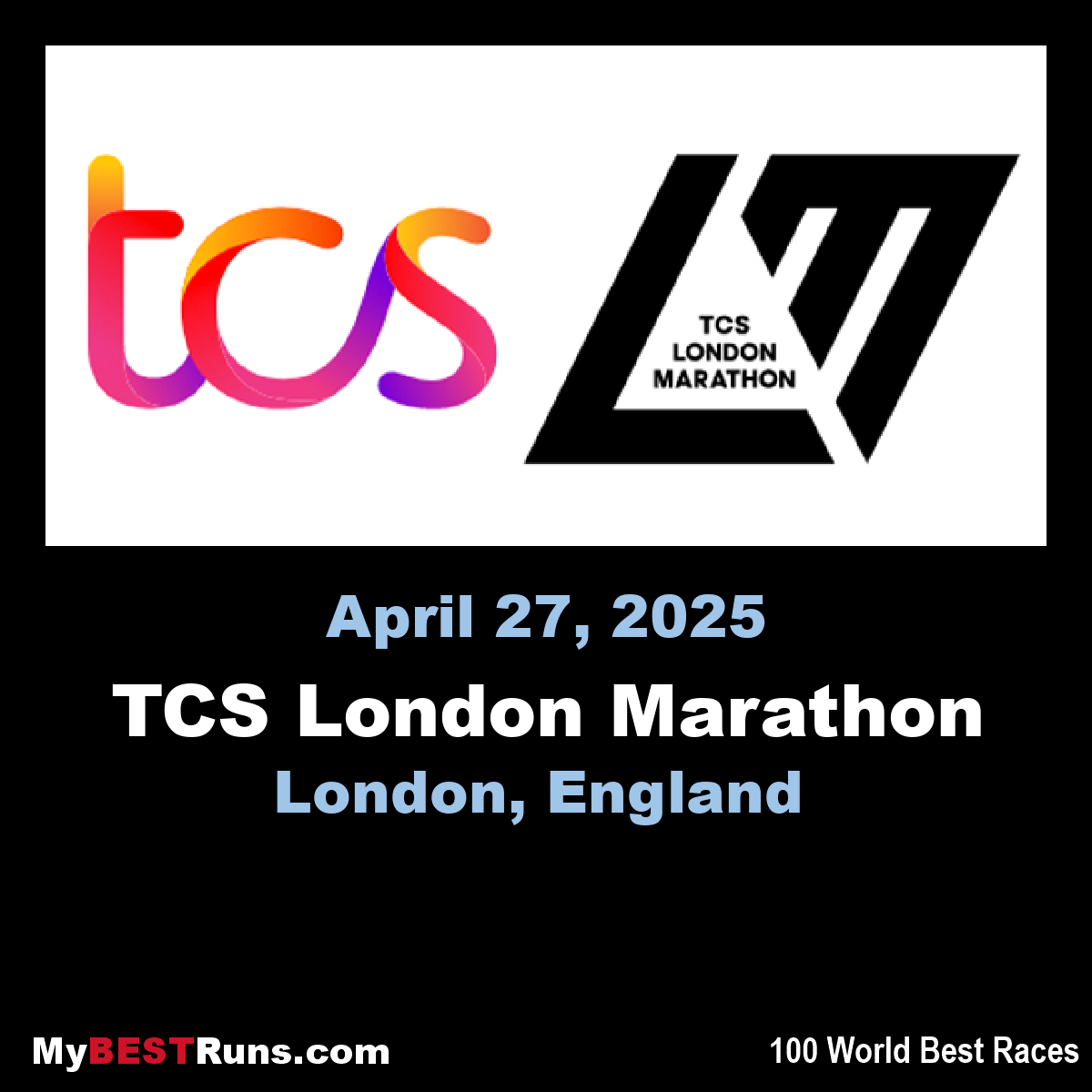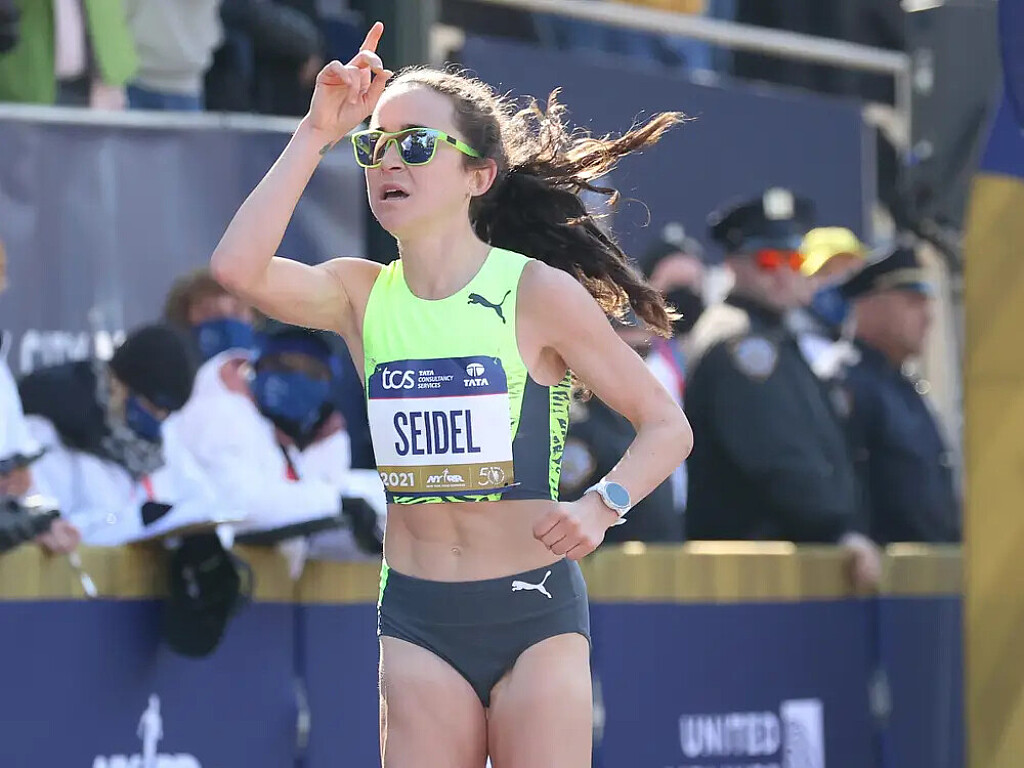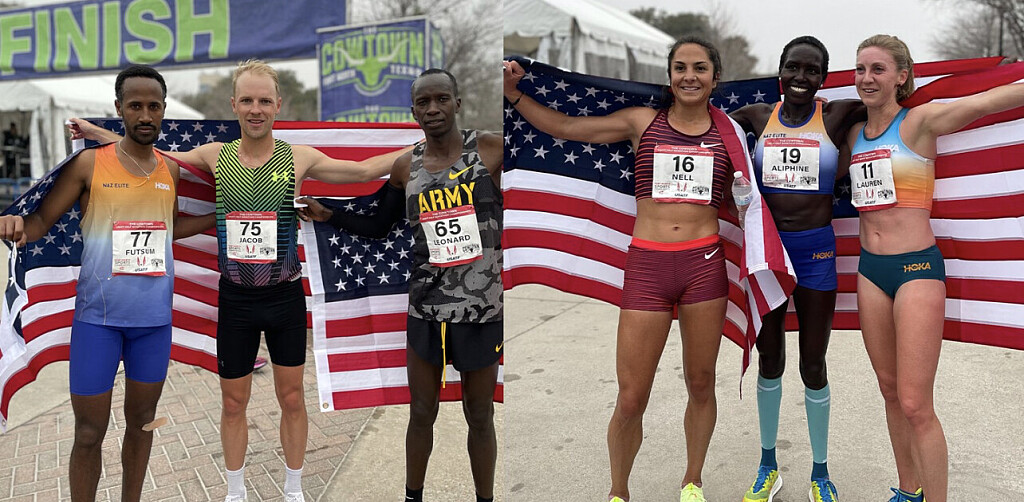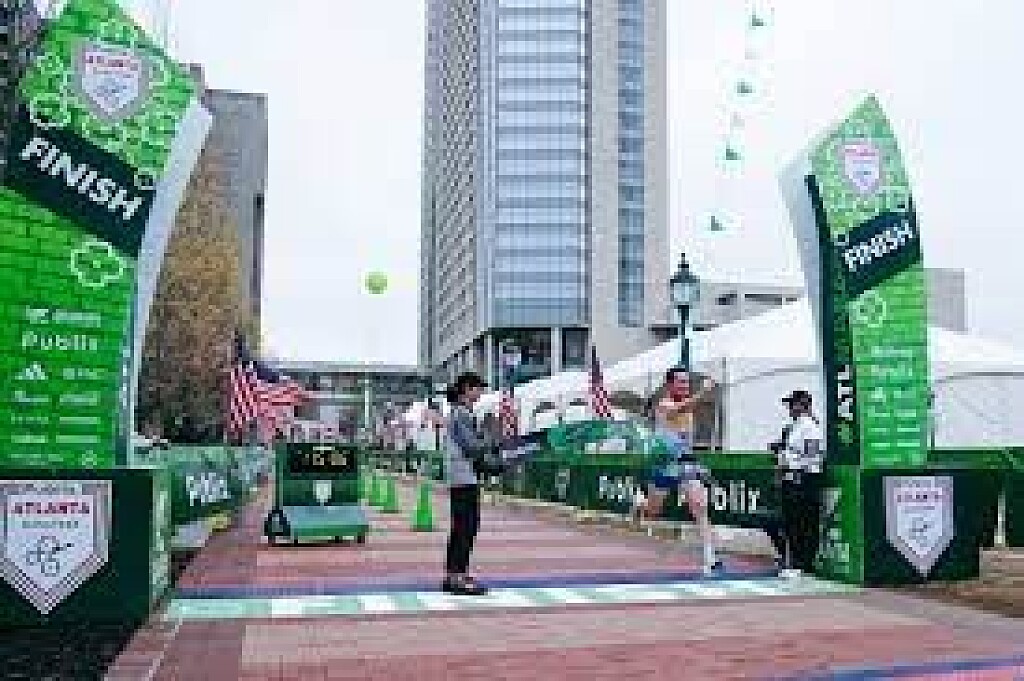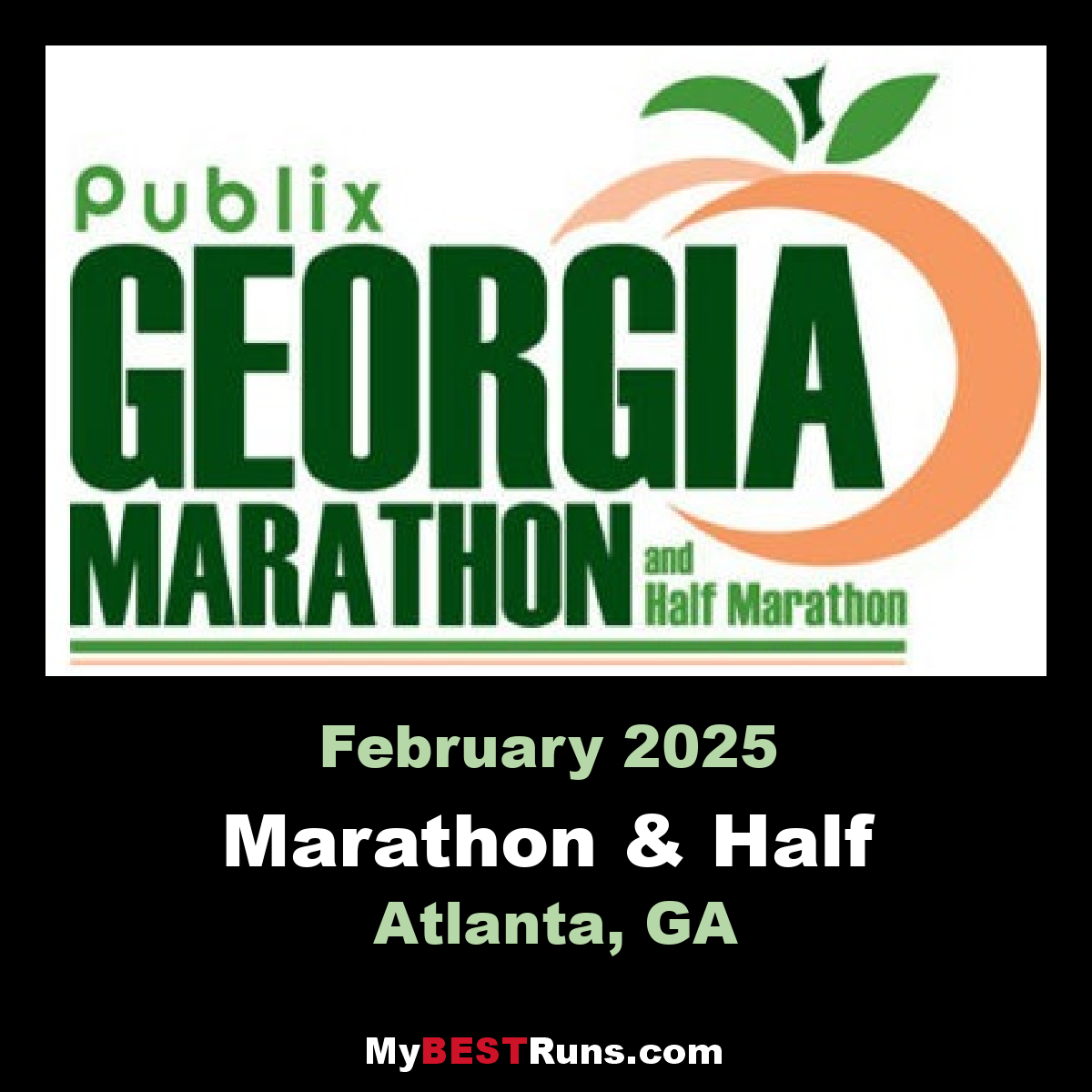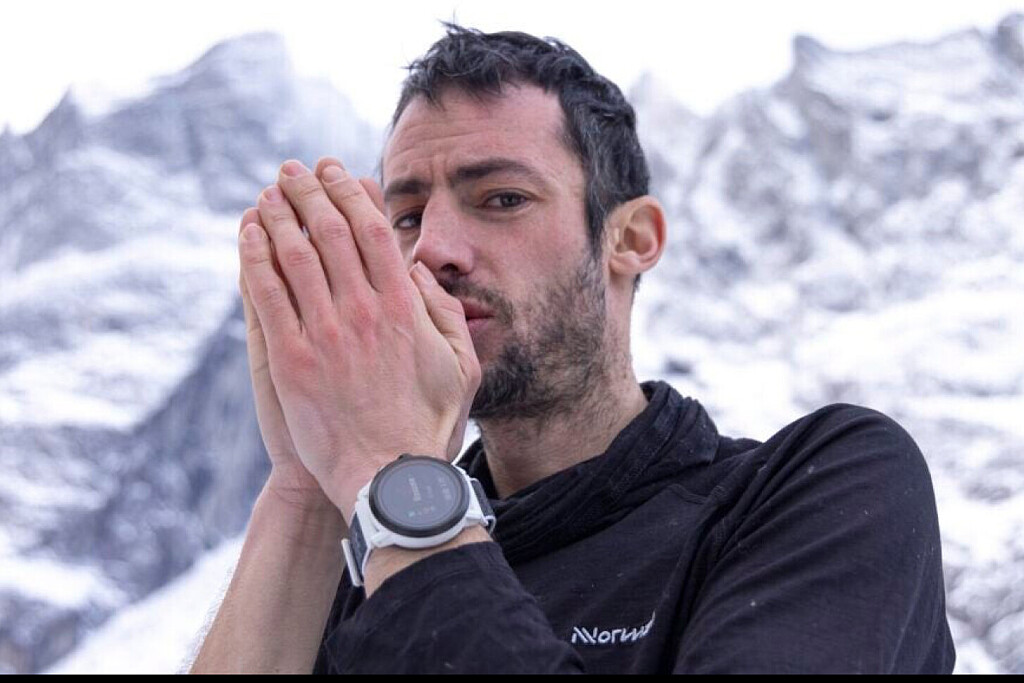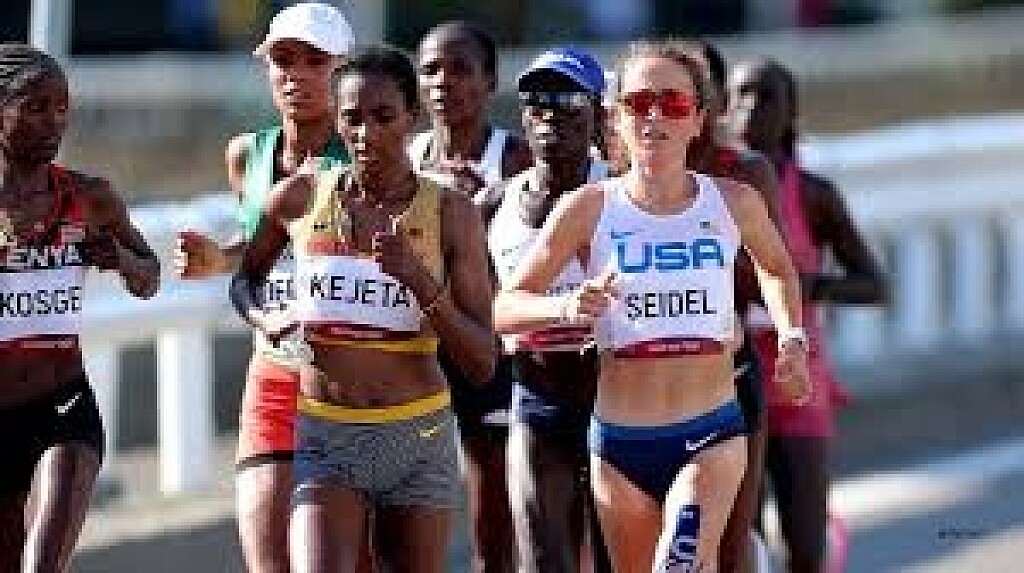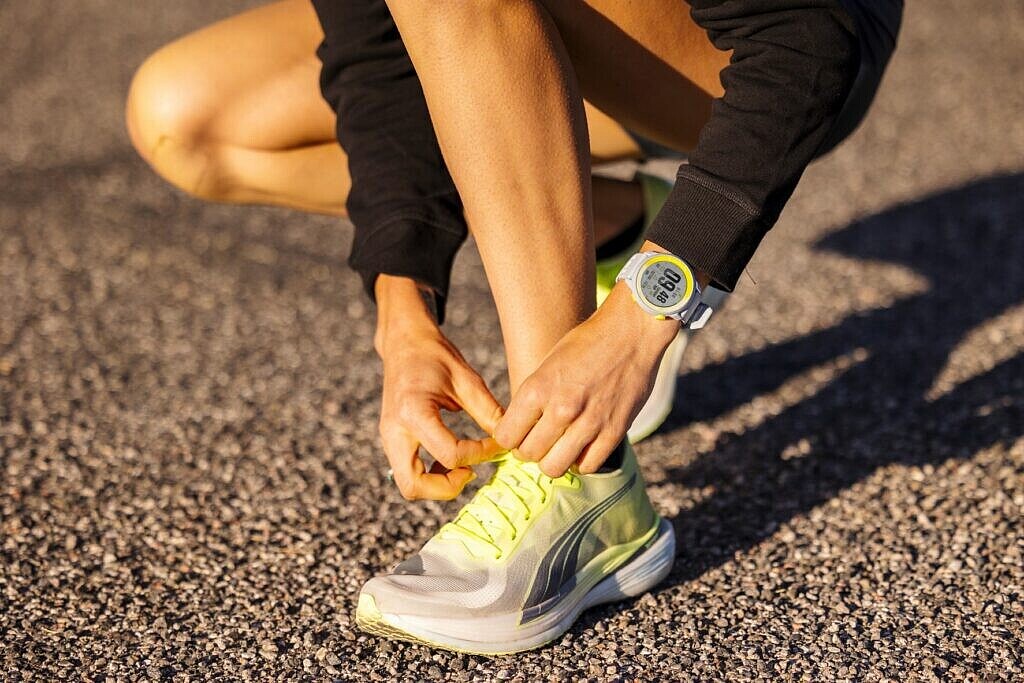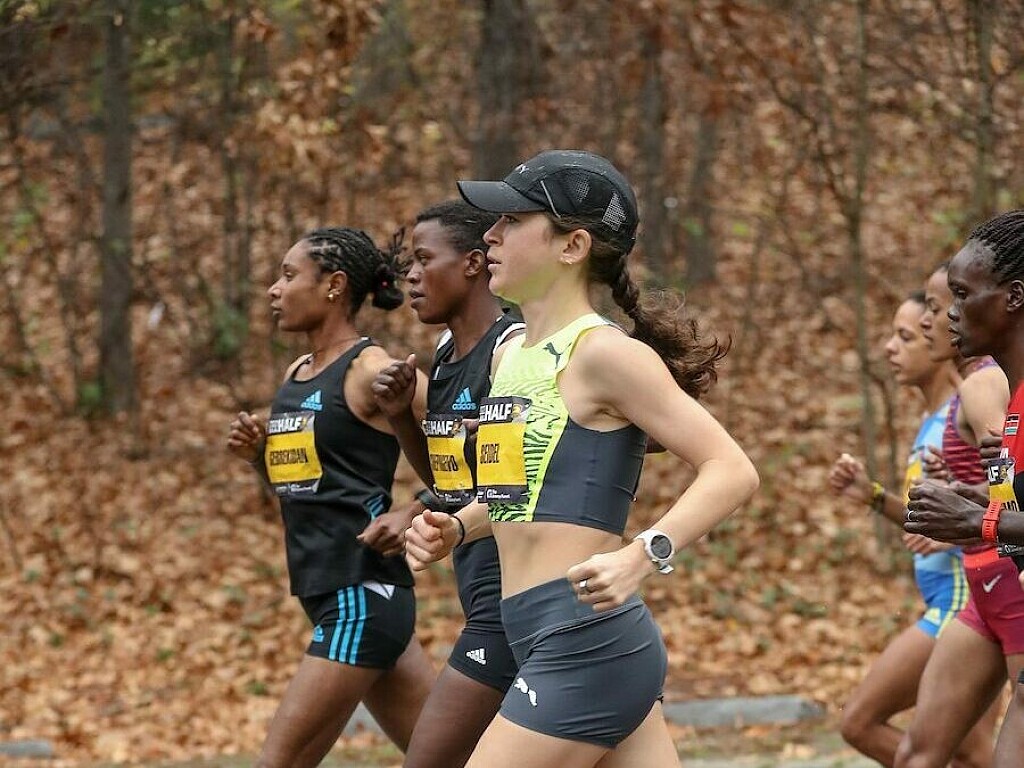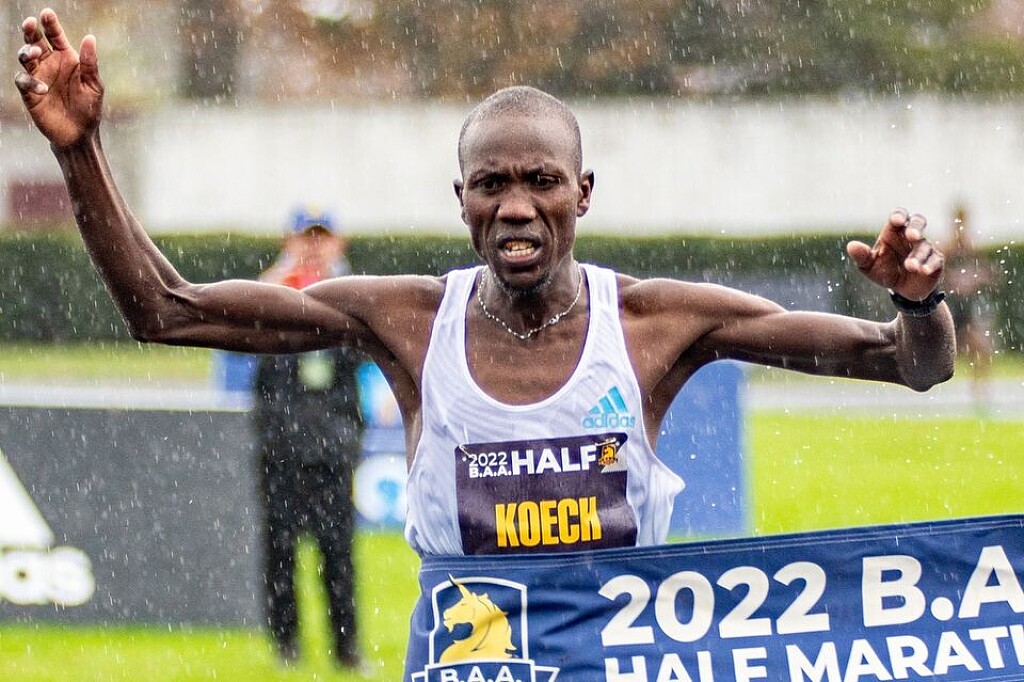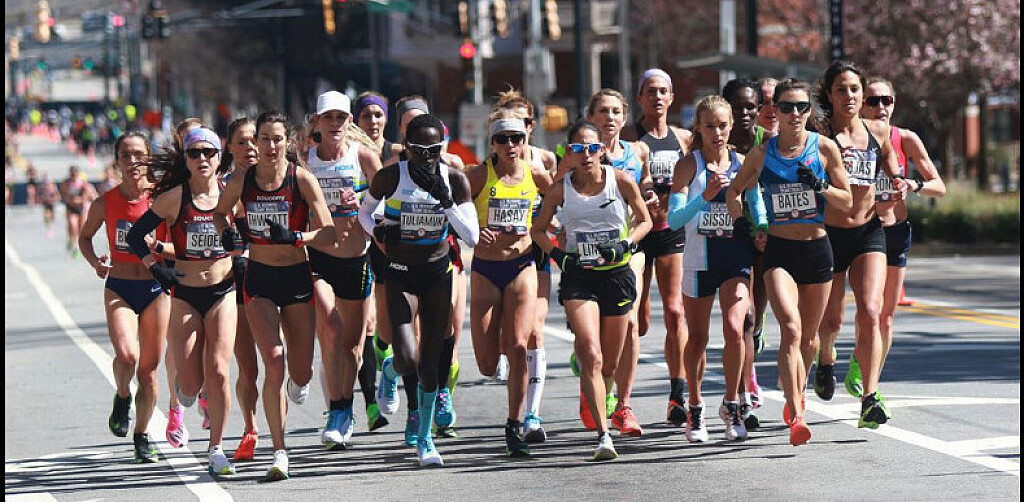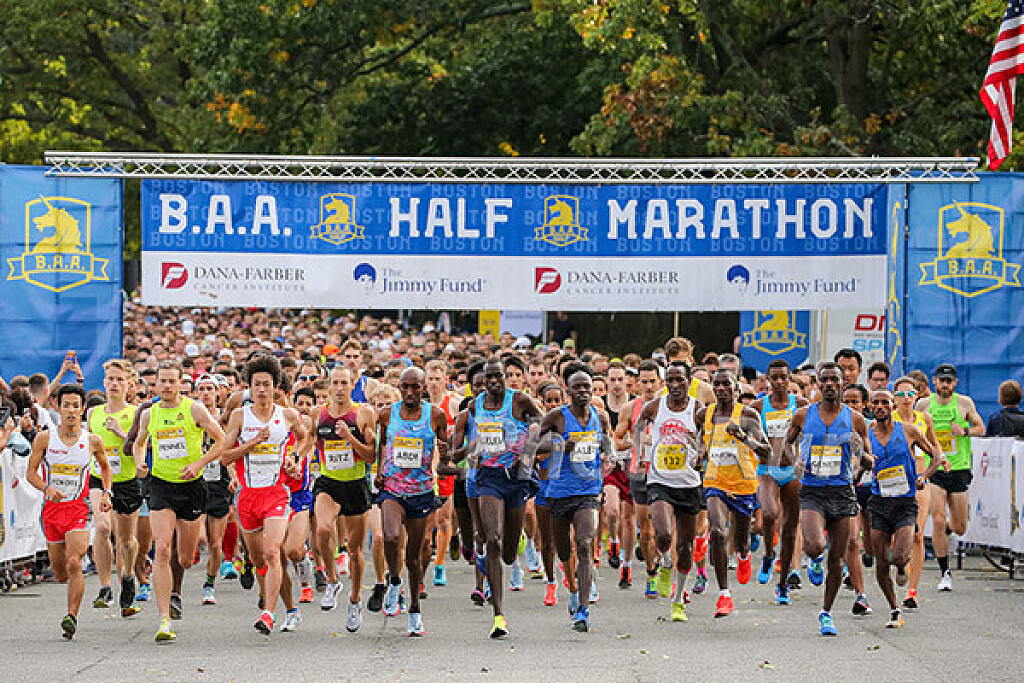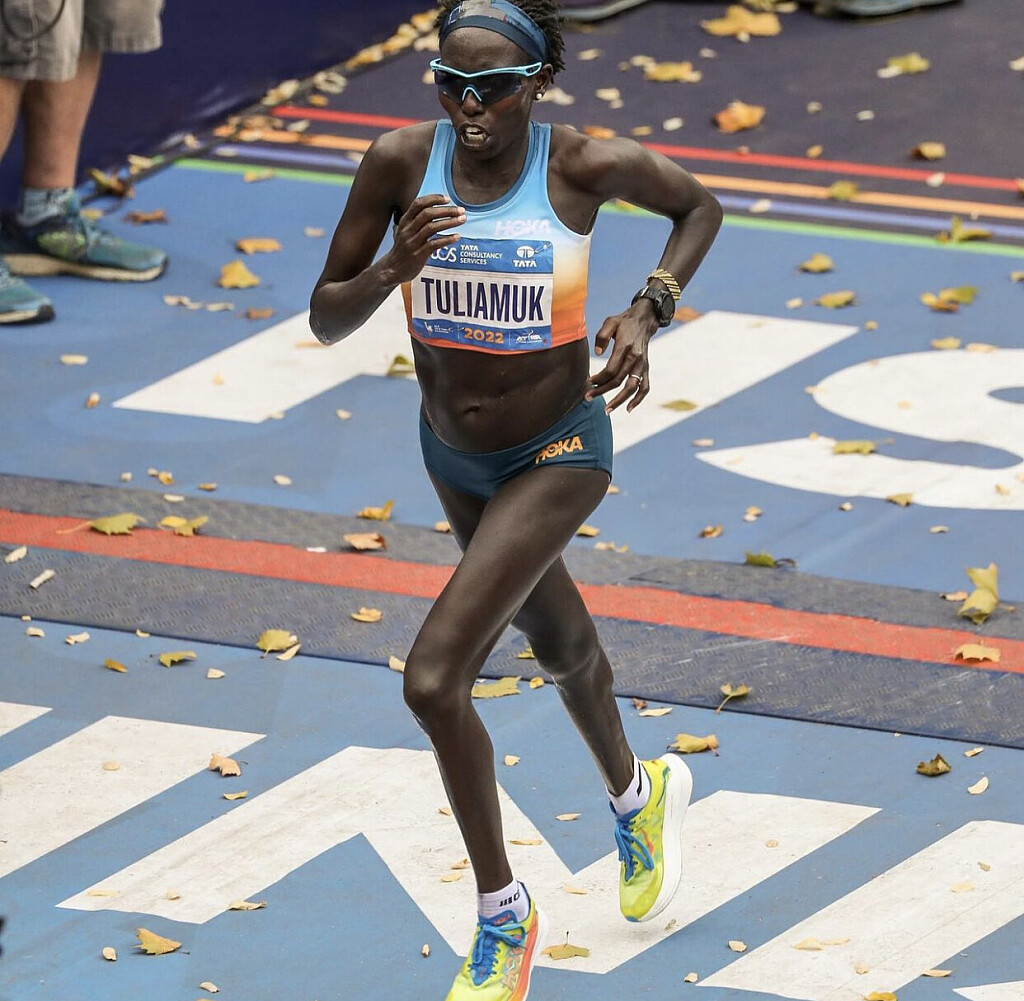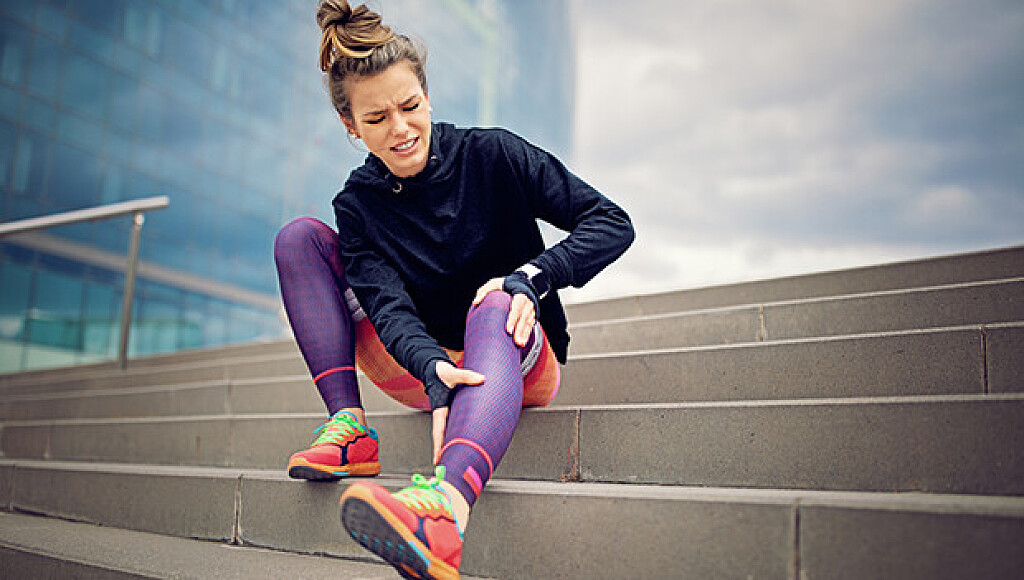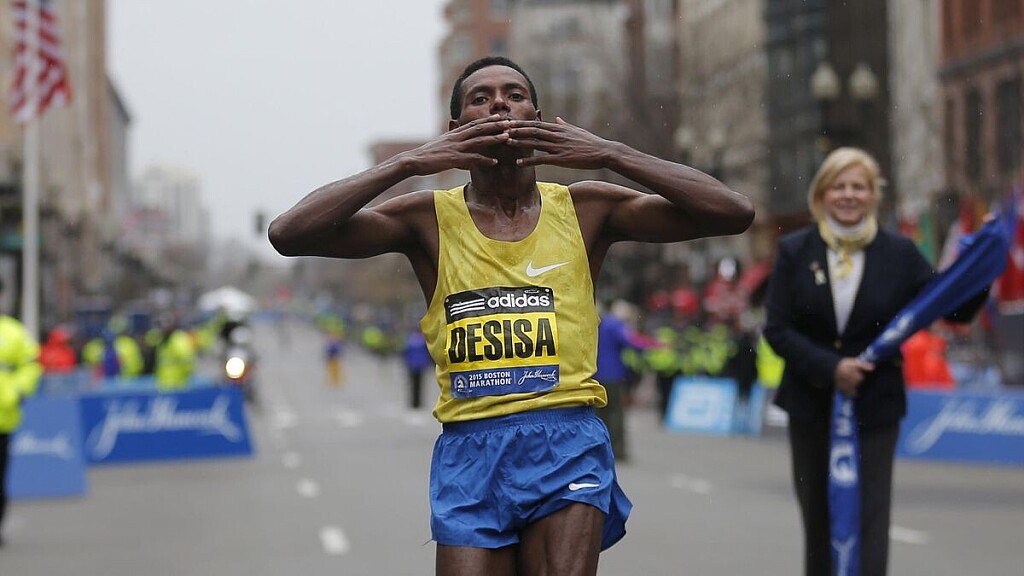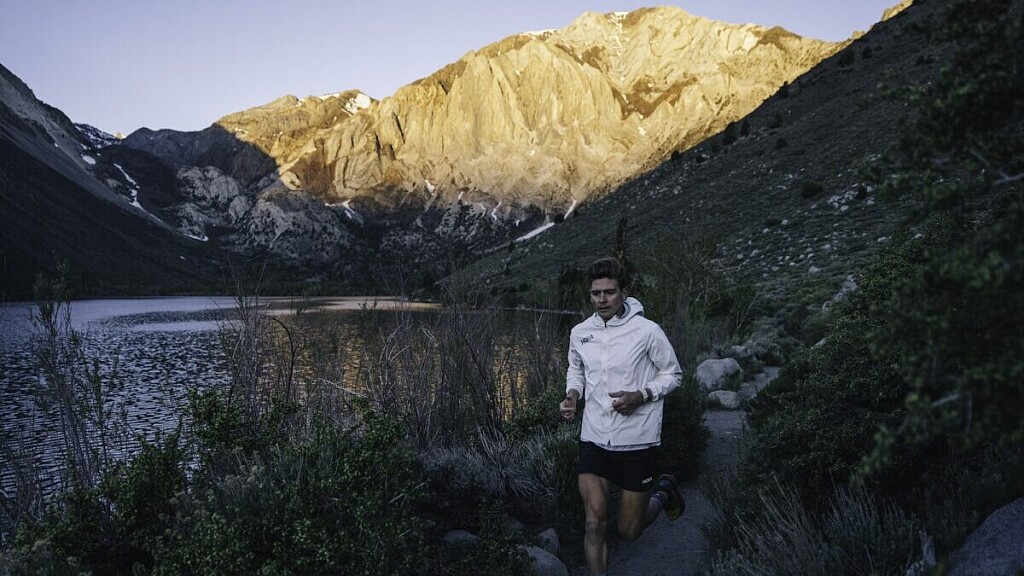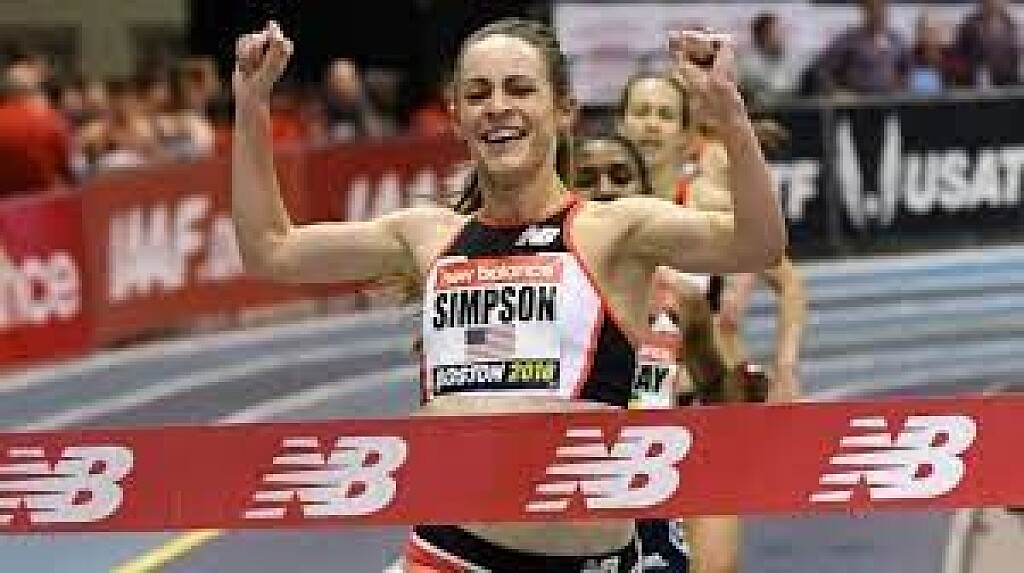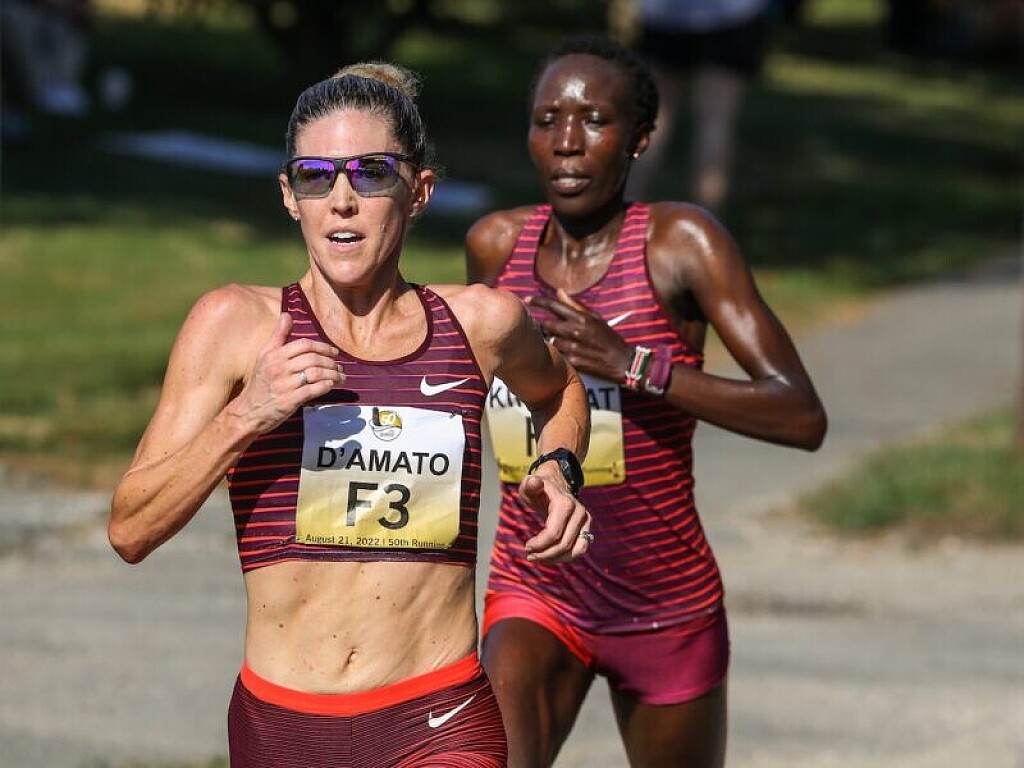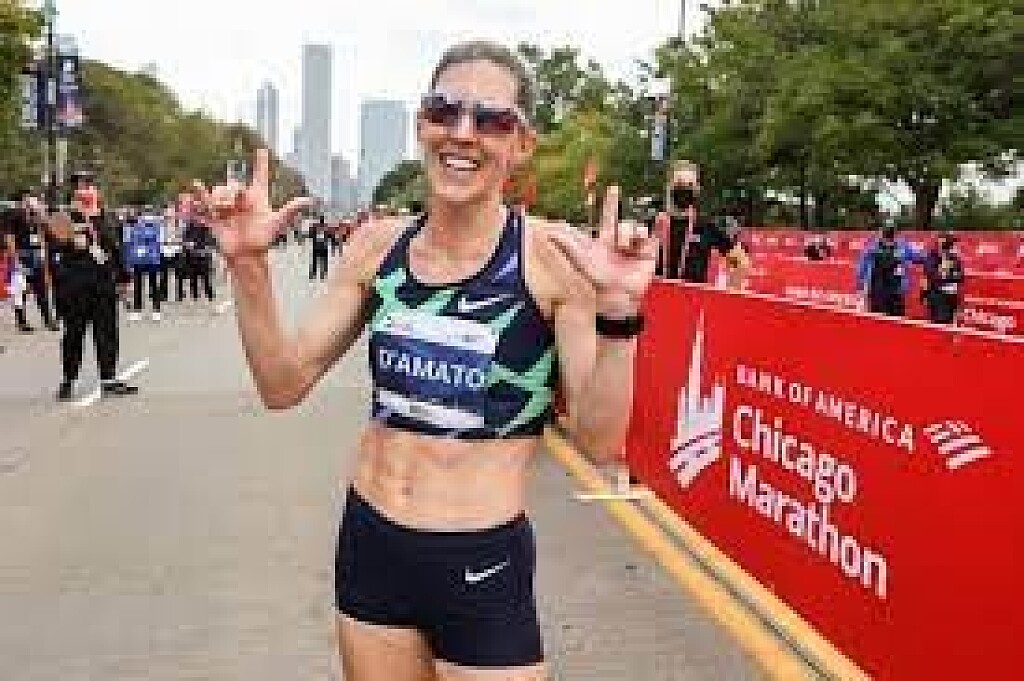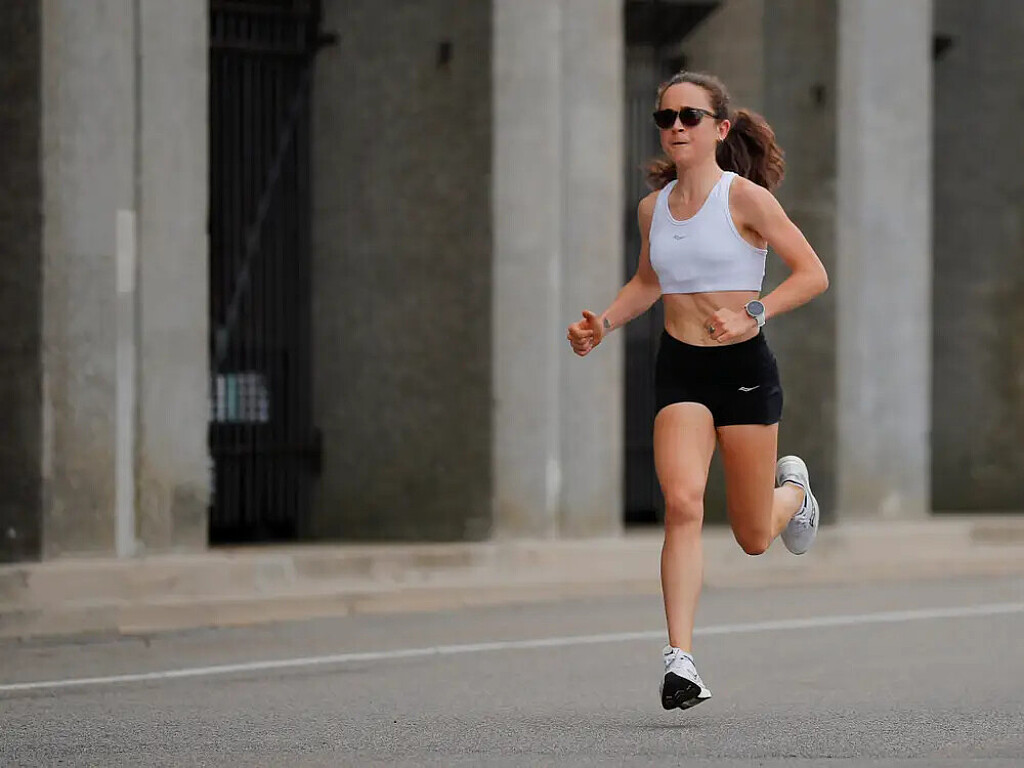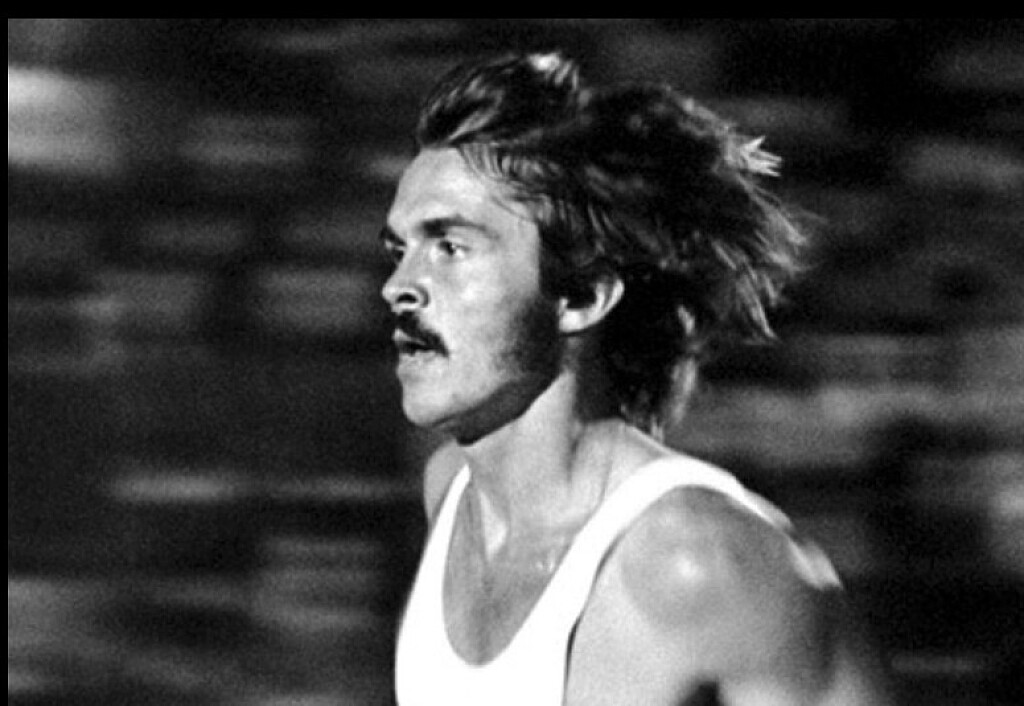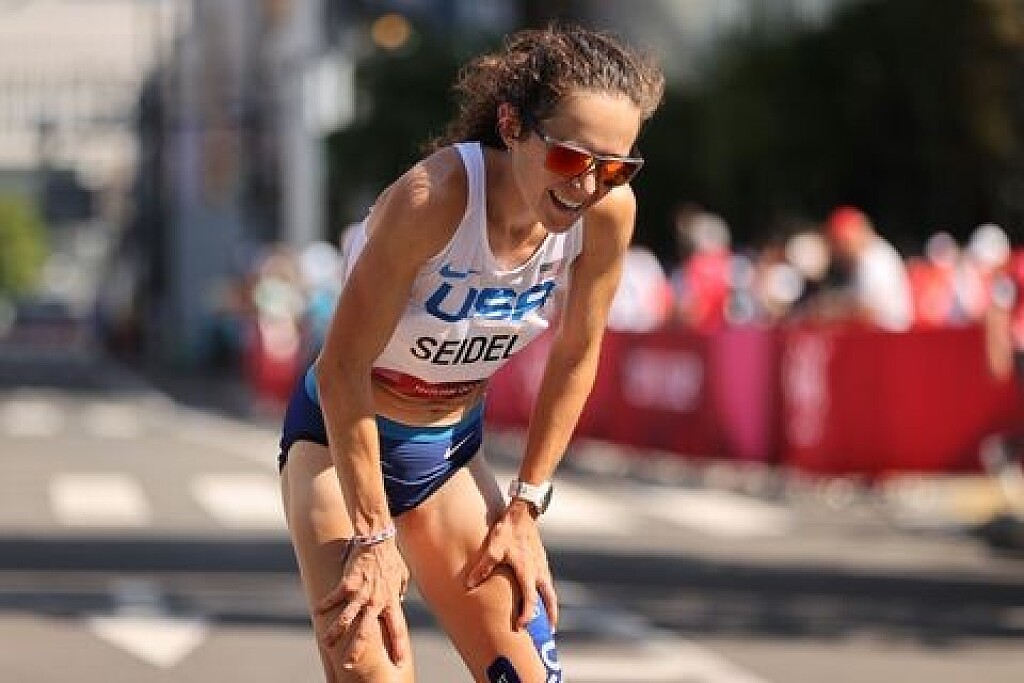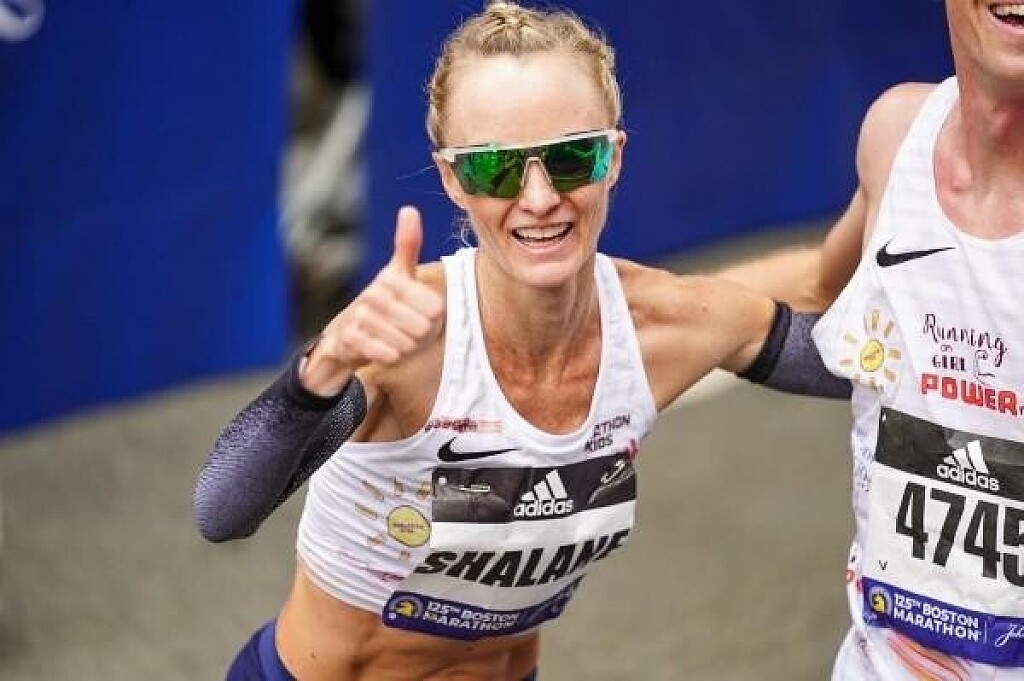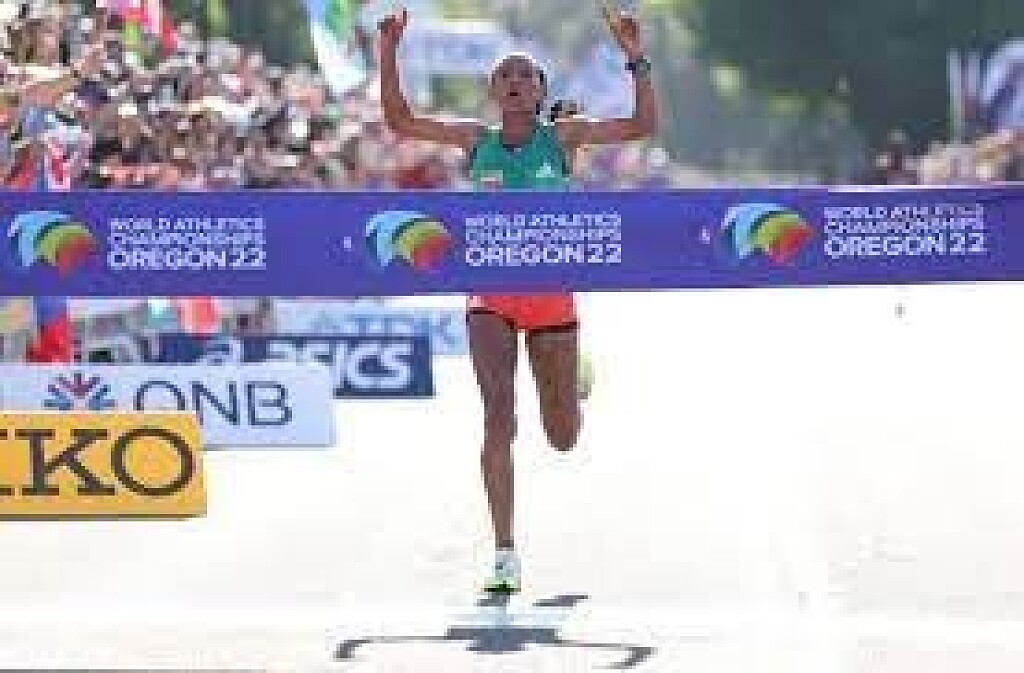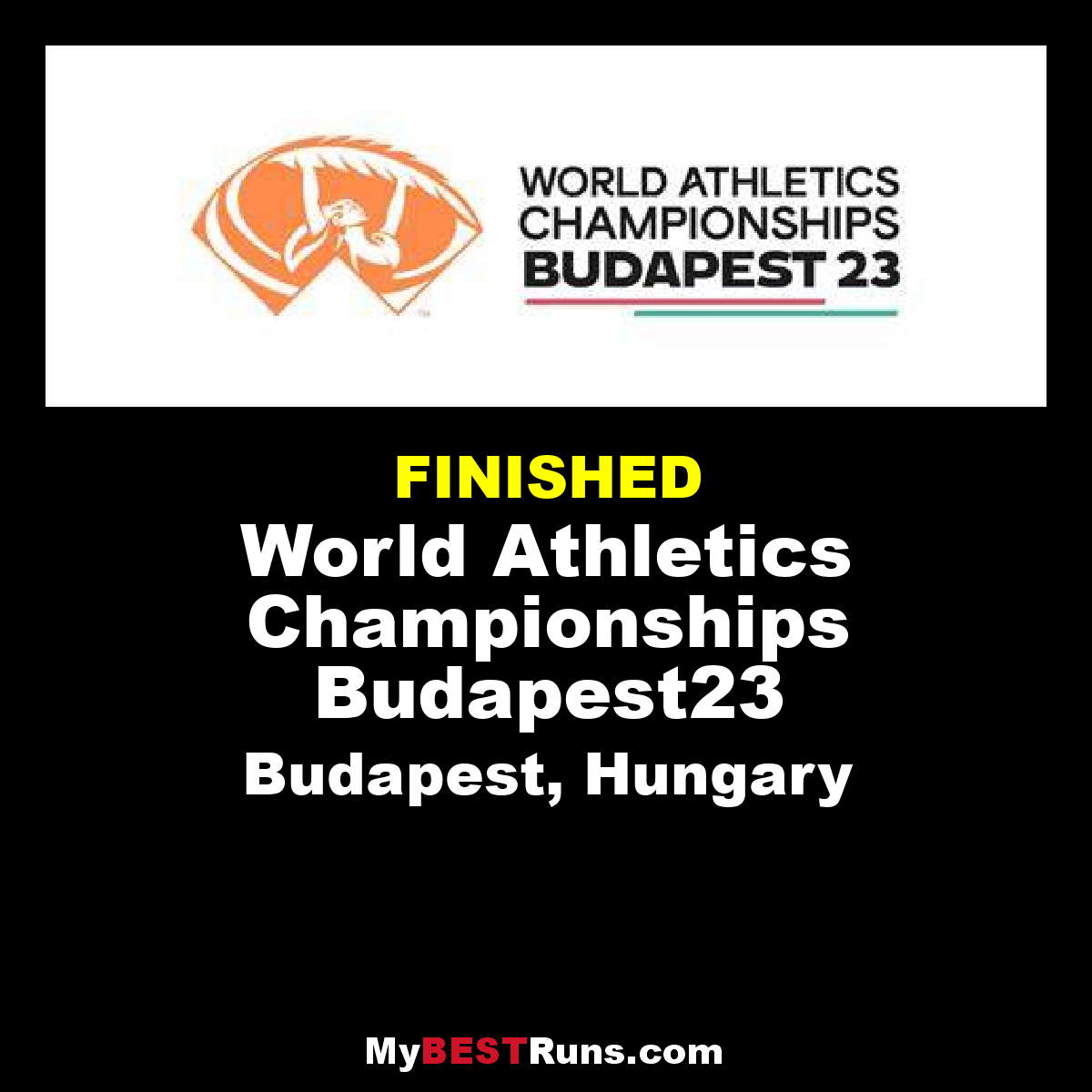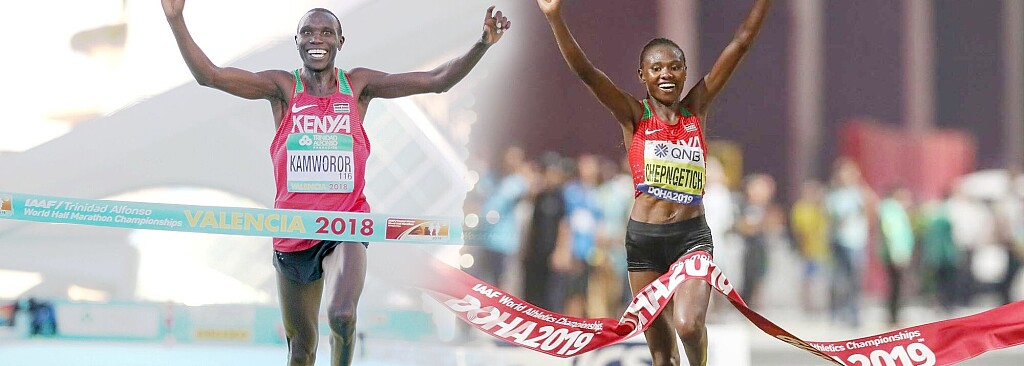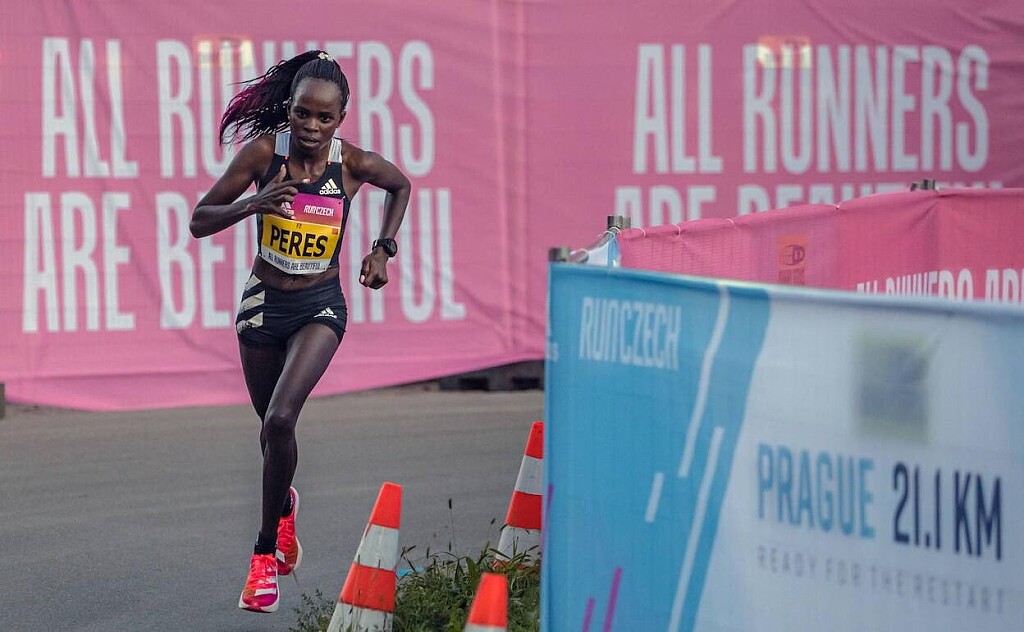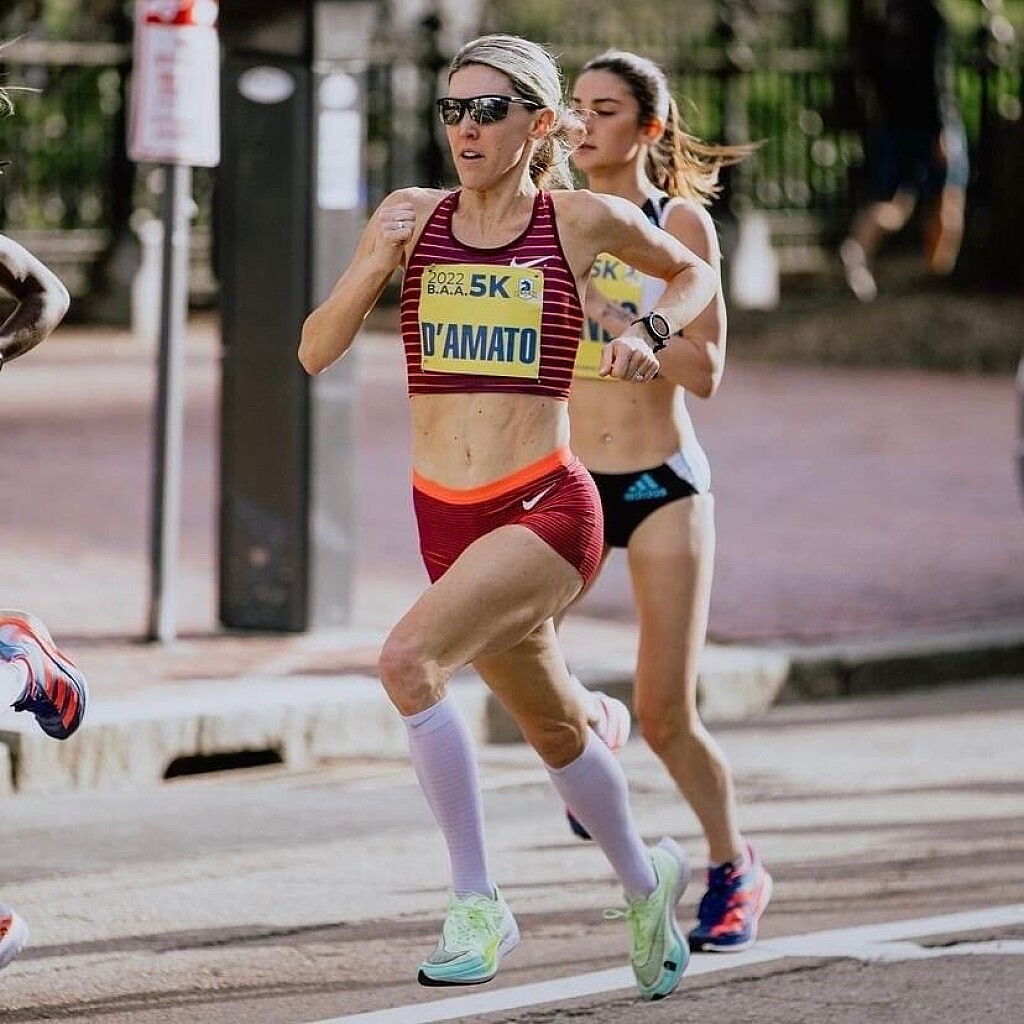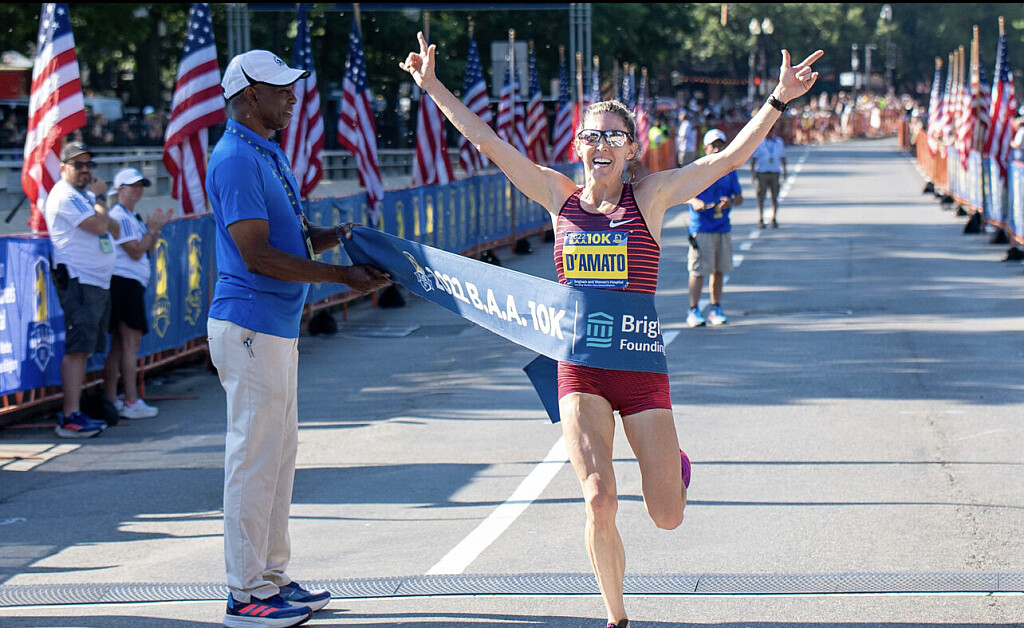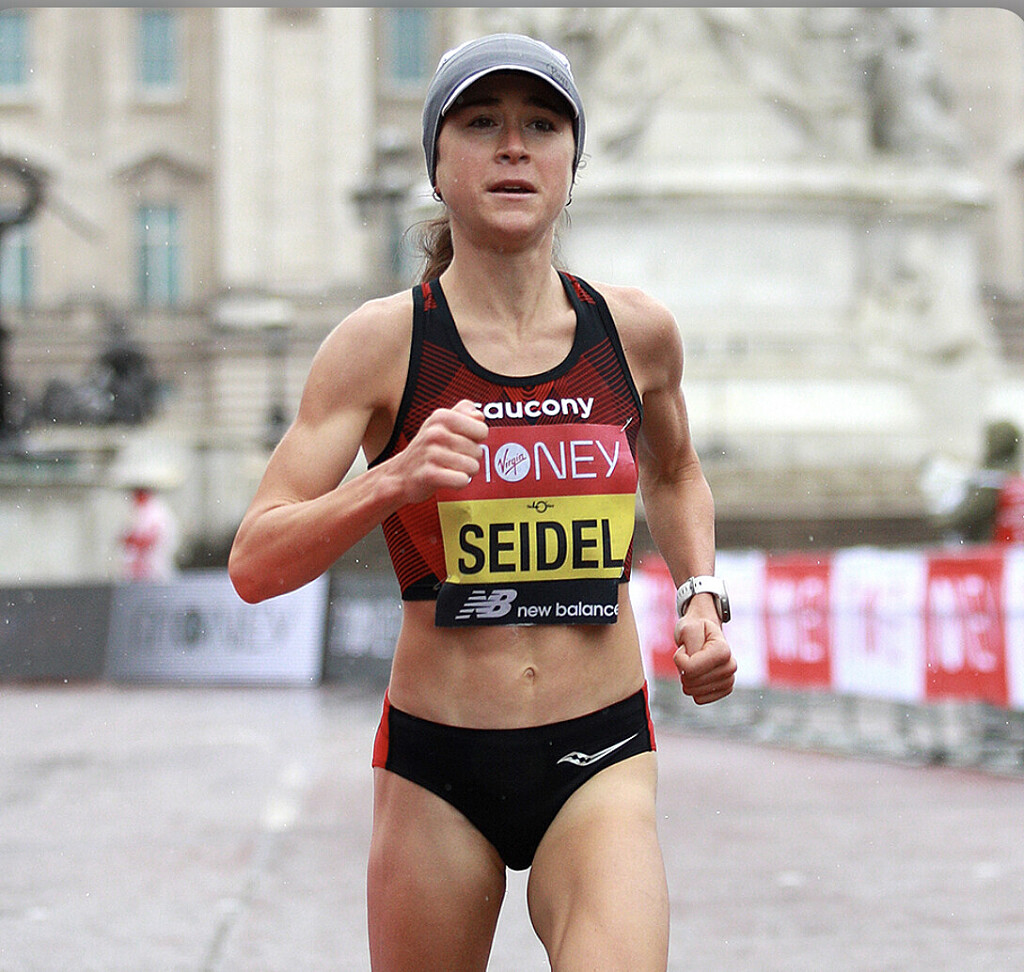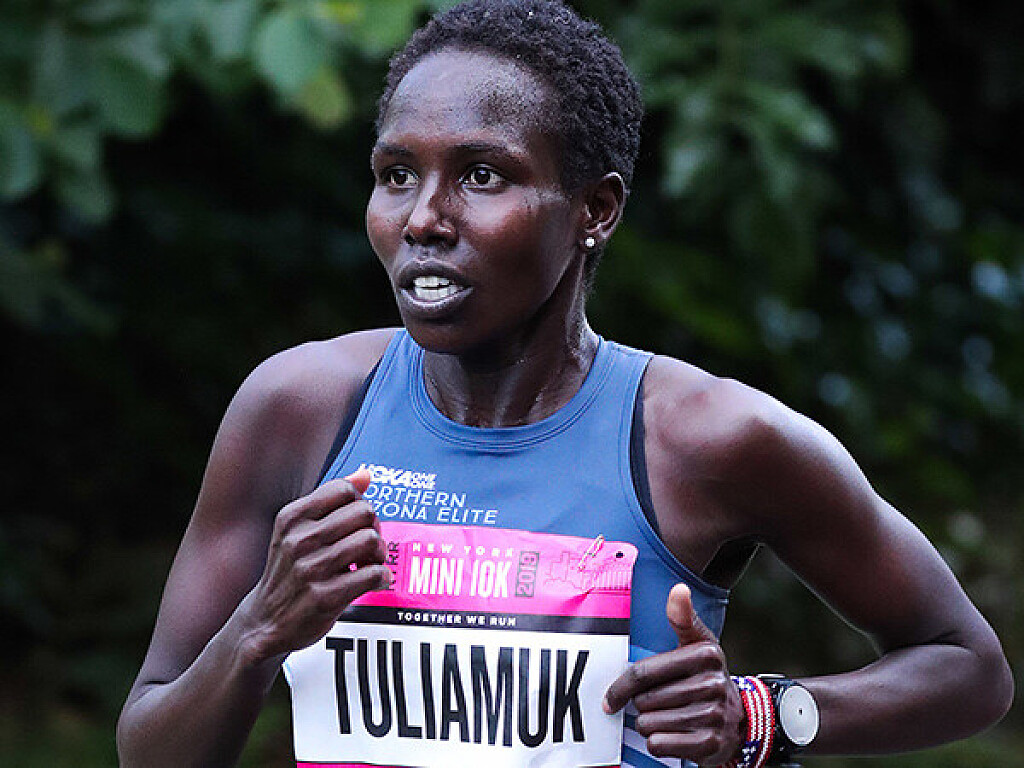Running News Daily
Running News Daily is edited by Bob Anderson. Send your news items to bob@mybestruns.com Advertising opportunities available. Train the Kenyan Way at KATA Kenya and Portugal owned and operated by Bob Anderson. Be sure to catch our movie A Long Run the movie KATA Running Camps and KATA Potato Farms - 31 now open in Kenya! https://kata.ke/
Index to Daily Posts · Sign Up For Updates · Run The World Feed
Articles tagged #Molly Seidel
Today's Running News
Chasing New York: What to Watch at the 2025 TCS New York City Marathon
Every November, the streets of New York City transform. Five boroughs become a stage. Dreams meet asphalt.
The 2025 TCS New York City Marathon is fast approaching — and for runners, coaches, and fans alike, it remains one of the most electric events on the global running calendar.
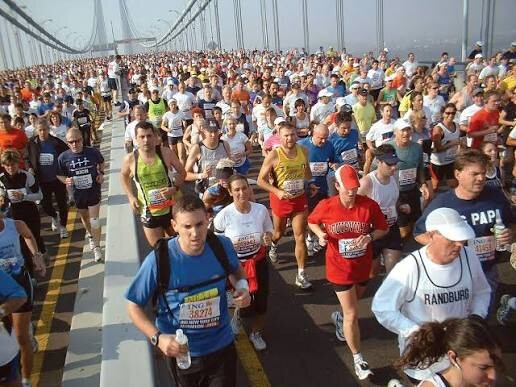
The Big Picture
• Date: Sunday, November 2, 2025
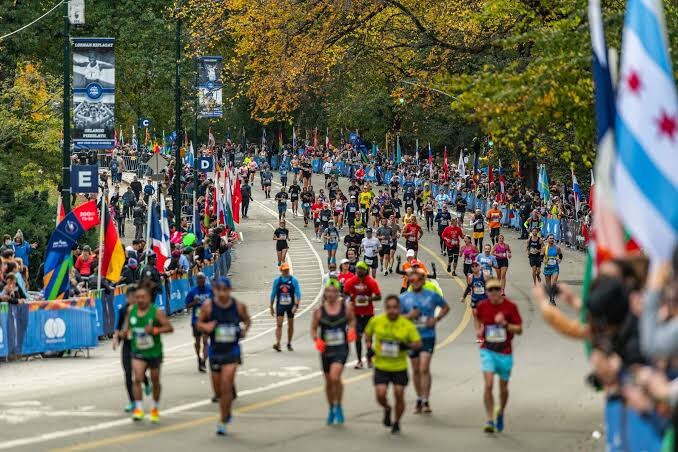
• Field size: More than 55,000 runners representing over 130 nations will take on the 26.2-mile journey from Staten Island to Central Park.
• Defending champions: Abdi Nageeye (Netherlands) and Sheila Chepkirui (Kenya) return to defend their crowns.
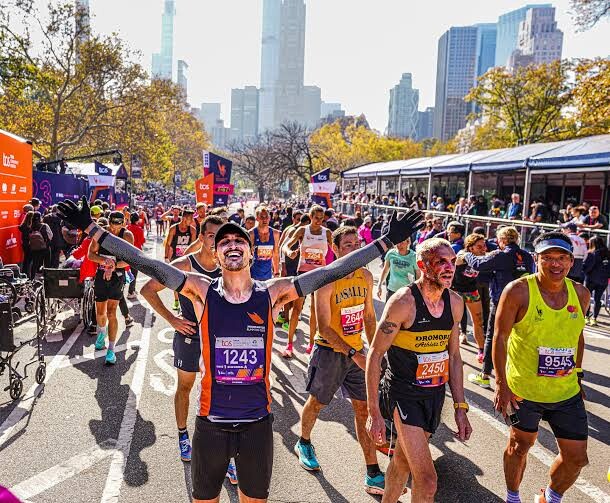
• Debut stars: Marathon legend Eliud Kipchoge and Olympic champion Sifan Hassan will make their long-awaited New York debuts — a storyline that has the running world buzzing.
• Classic route: The course again threads through all five boroughs, starting at Fort Wadsworth on Staten Island, crossing the Verrazzano-Narrows Bridge, and finishing in Central Park.
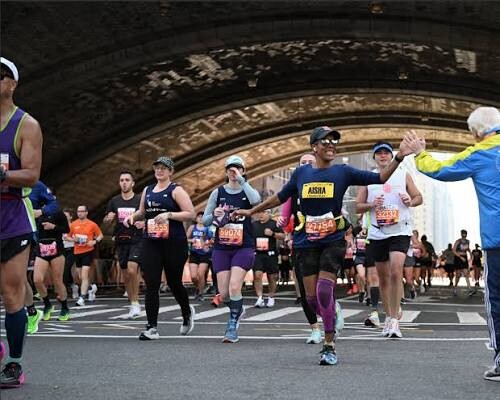
• Sustainability focus: Organizers at New York Road Runners (NYRR) continue to expand environmental initiatives, including recyclable aluminum water bottles and reduced single-use plastics.
Course Records
• Men’s Record: 2:04:58 – Tamirat Tola (2023)
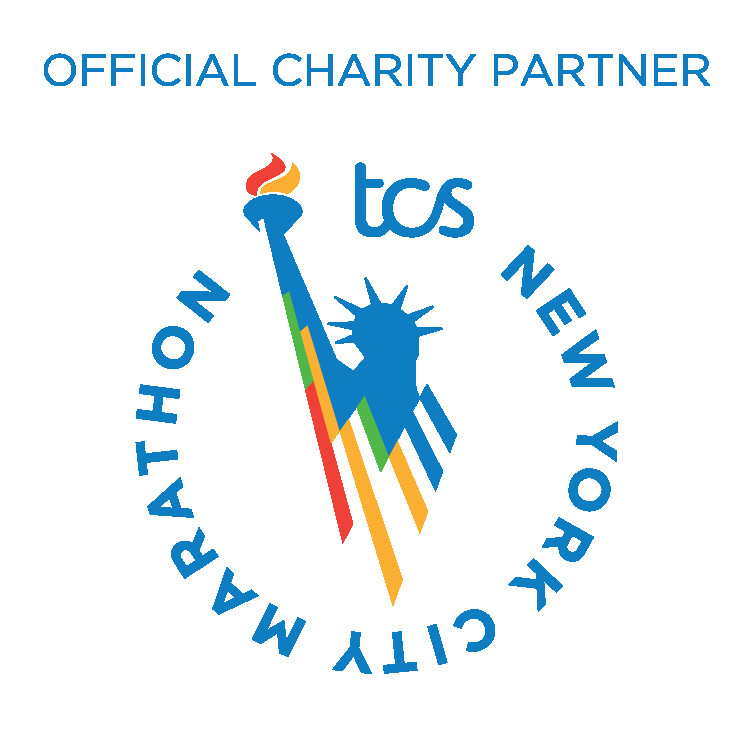
• Women’s Record: 2:22:31 – Margaret Okayo (2003)
Both marks remain tough to challenge on New York’s rolling, bridge-laden course — but with Kipchoge, Chebet, and Nageeye in the men’s field, and Hassan, Obiri, and Lokedi among the women, the potential for history is very real.
Men’s Elite Highlights
• Eliud Kipchoge (Kenya) – two-time Olympic champion, 2:01:09 PB, running NYC for the first time.
• Abdi Nageeye (Netherlands) – defending champion and Olympic silver medalist.
• Evans Chebet (Kenya) – two-time Boston Marathon champion.
• Benson Kipruto (Kenya) – Chicago 2022 winner.
• Albert Korir (Kenya) – former NYC champion.
• Joe Klecker (USA) – U.S. Olympian making his marathon debut.
• Hillary Bor (USA) – U.S. steeplechase champion transitioning to the roads.
• Charles Hicks (USA) – NCAA cross-country champion now turning professional.
Women’s Elite Highlights
• Sifan Hassan (Netherlands) – Olympic champion, winner in London (2023) and Chicago (2024).
• Hellen Obiri (Kenya) – Boston 2023 and NYC 2023 champion.
• Sharon Lokedi (Kenya) – NYC 2022 winner, still a local favorite.
• Sheila Chepkirui (Kenya) – defending NYC champion.
• Emily Sisson (USA) – current American marathon record holder (2:18:29).
• Molly Seidel (USA) – Tokyo Olympic bronze medalist.
• Fiona O’Keeffe (USA) – 2024 U.S. Olympic Trials marathon champion.
• Susanna Sullivan (USA) – Top-10 finisher at Boston 2023, consistent national contender.
This year’s field features 49 Olympians and Paralympians, nine past major marathon winners, and 16 medalists from Olympic or World Championship events — arguably the deepest lineup in New York history.
What Makes New York Unique (and Brutal)
• Rolling terrain and bridges: The Verrazzano, Pulaski, Queensboro, and Willis bridges each sap rhythm and energy.
• Crowd power: Two million spectators line the course, creating unmatched atmosphere — and volume.
• Late-season unpredictability: Weather can swing from cold drizzle to crisp fall perfection.
• Tactical racing: With its uneven pacing demands, NYC rewards strategy over pure speed.
Storylines to Watch
• Kipchoge’s debut: The marathon GOAT takes on the sport’s loudest stage. Can he master New York’s relentless hills and twists?
• Hassan’s bold quest: Coming off London and Chicago wins, can she complete the trifecta in her first NYC appearance?
• Lokedi vs. Obiri: The Kenyan duo continue their fierce rivalry on familiar ground.
• Nageeye’s defense: Last year’s champion faces his toughest test yet with Chebet and Kipruto in pursuit.
• American charge: Sisson, Seidel, O’Keeffe, and Sullivan lead the most complete U.S. women’s team in years — while Klecker and Bor look to ignite the next chapter for American men’s marathoning.
• Record watch: Tola’s 2:04:58 may finally be tested, and Okayo’s 22-year-old mark could fall if conditions align.
For Runners and Coaches
• Train the bridges. Practice long tempo runs that mimic New York’s undulating rhythm.
• Respect the pace. The roar of Brooklyn can trick even the best into going out too fast.
• Fuel flexibly. NYRR’s eco-station setup may differ from other majors — plan accordingly.
• Stay mentally sharp. The final 10 K through Central Park can break anyone unprepared for its hills.
• Layer smartly. Start slightly chilled; the crowds and effort will warm you fast.
The Bottom Line
The 2025 TCS New York City Marathon blends star power, unpredictability, and history like no other race. From Kipchoge’s long-awaited debut to the fiercest women’s field ever assembled in New York, every mile promises drama.
For runners chasing personal bests, and for millions of spectators lining the streets or watching from afar, November 2 will again remind us why this marathon is more than a race — it’s a celebration of endurance, spirit, and the human story that unfolds across 26.2 miles of the world’s greatest city.
by Boris Baron
Login to leave a comment
TCS New York City Marathon
The first New York City Marathon, organized in 1970 by Fred Lebow and Vince Chiappetta, was held entirely in Central Park. Of 127 entrants, only 55 men finished; the sole female entrant dropped out due to illness. Winners were given inexpensive wristwatches and recycled baseball and bowling trophies. The entry fee was $1 and the total event budget...
more...Sleep Like a Champion: Why Rest May Be Your Most Powerful Running Tool
Most runners focus on mileage, splits, and fueling—but there’s one key performance enhancer that’s often overlooked: sleep. Elite athletes and sports scientists increasingly agree that rest isn’t just recovery—it’s training.
Sleep and Performance: What Science Says

During deep sleep, the body releases human growth hormone (HGH), which repairs muscles, rebuilds tissues, and restores energy. Your immune system strengthens, the brain consolidates motor memory (important for running form), and muscles rebuild stronger.

Sleep deprivation can lead to:
• Slower reaction times and decision-making
• Increased injury risk
• Poor glycogen storage
• Reduced endurance and mental focus
Simply put: if you’re not sleeping well, your training gains are compromised
What Elite Runners Are Doing
Top runners are making sleep a priority—right alongside workouts and recovery days.
• Eliud Kipchoge sleeps 9+ hours per night and takes a daily nap to support his high-volume training.
• Molly Seidel calls sleep her “number one recovery tool.”
• Jakob Ingebrigtsen is known for dialing back screen time and evening stress to protect sleep quality.
Coaches across the globe now structure training schedules to ensure athletes can rest, especially before and after intense sessions.
Sleep Tech: Measuring What Matters
Devices like the Whoop Strap, Oura Ring, and Garmin sleep trackers are giving runners new insight into recovery. These tools track heart rate variability (HRV), sleep stages, and readiness scores, helping athletes fine-tune their training and rest cycles.
How to Optimize Your Sleep for Better Running
1. Stick to a sleep schedule – go to bed and wake up at the same time daily.
2. Create a wind-down routine – limit screens, caffeine, and stress before bed.
3. Keep your bedroom cool and dark – around 65°F (18°C) is ideal.
4. Avoid late-night workouts – they can spike adrenaline and delay sleep.
5. Prioritize naps if nighttime sleep falls short – even 20 minutes helps.
Your next personal best might not come from a new training block or pair of shoes—it might come from simply getting more sleep. If you’re serious about performance, sleep is non-negotiable.
Train hard. Sleep smarter. Recover stronger.
by Boris Baron
Login to leave a comment
Fast Finishes in Indy as Hacker and Andrews Claim 5K Crowns
On a crisp morning in downtown Indianapolis, the 2025 USATF 5 km Championships delivered thrilling finishes and fast times, with Olin Hacker and Josette Andrews emerging as national champions.
In the men’s race, Olin Hacker of HOKA Northern Arizona Elite made a decisive move in the final kilometer, pulling away from a tightly packed lead group. His surge proved untouchable, and he crossed the finish line in 13:31.93 to claim the national title. Casey Clinger of Brooks was just a stride behind in 13:33.04, with Hacker’s teammate Ahmed Muhumed rounding out the podium in 13:36.88—completing a trio of sub-13:40 finishers.
Men’s Top 10 Finishers
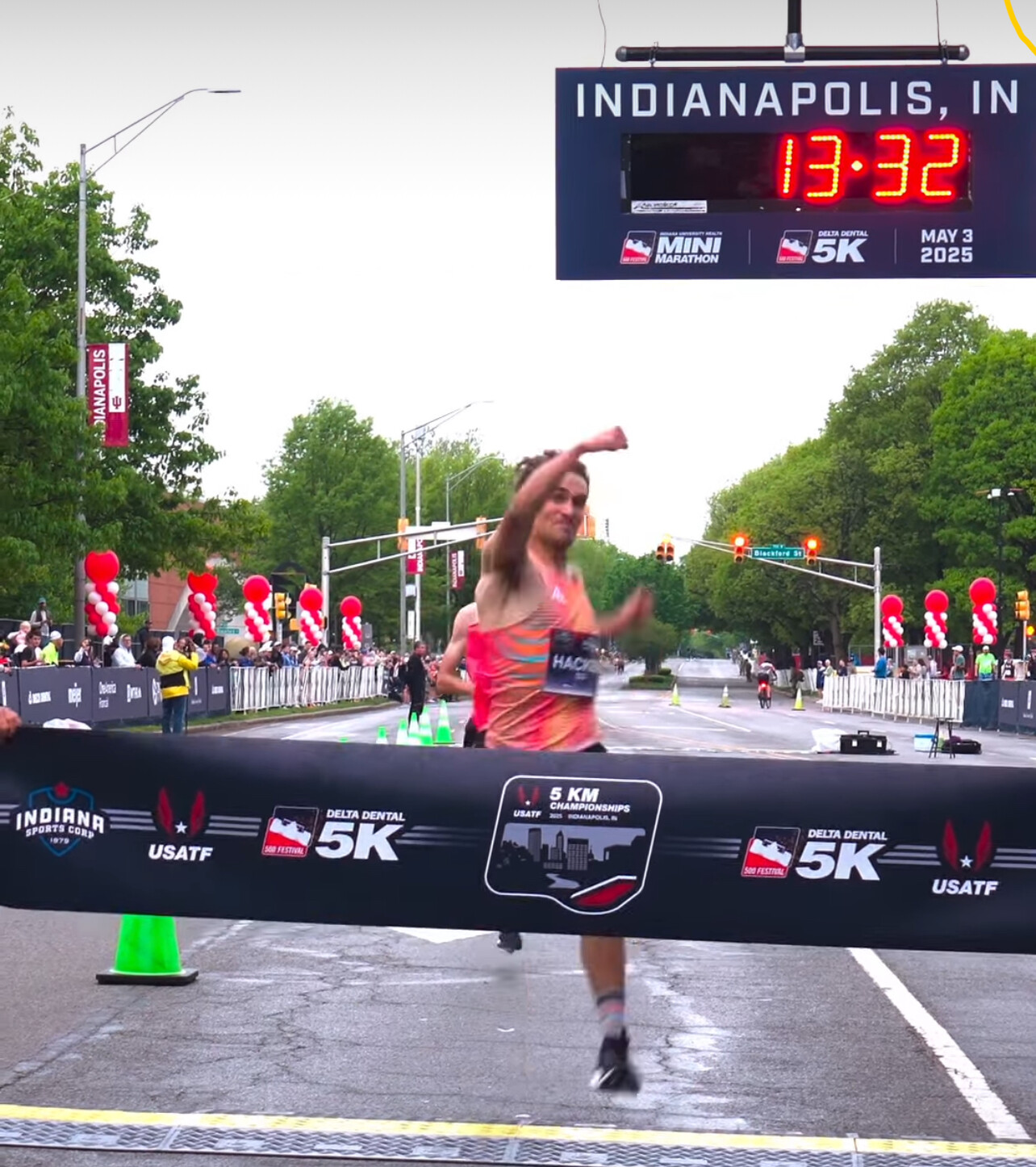
1. Olin Hacker (HOKA NAZ Elite) – 13:31.93
2. Casey Clinger (Brooks) – 13:33.04
3. Ahmed Muhumed (HOKA NAZ Elite) – 13:36.88
4. Morgan Beadlescomb (adidas) – 13:39.50
5. Graham Crawford (Reebok) – 13:42.10
6. Reed Fischer (Tinman Elite) – 13:44.75
7. Sam Chelanga (Nike) – 13:47.30
8. Ben Flanagan (On Running) – 13:49.60
9. Emmanuel Bor (U.S. Army) – 13:52.25
10. Eric Avila (HOKA) – 13:54.80
In the women’s race, Josette Andrews showed impressive strength and timing, kicking hard in the final stretch to take the win in 15:12.34. Emily Infeld of Nike followed closely in 15:14.50, and Karissa Schweizer of Bowerman Track Club secured third in 15:16.75, as the top trio pushed each other to the line.
Women’s Top 10 Finishers
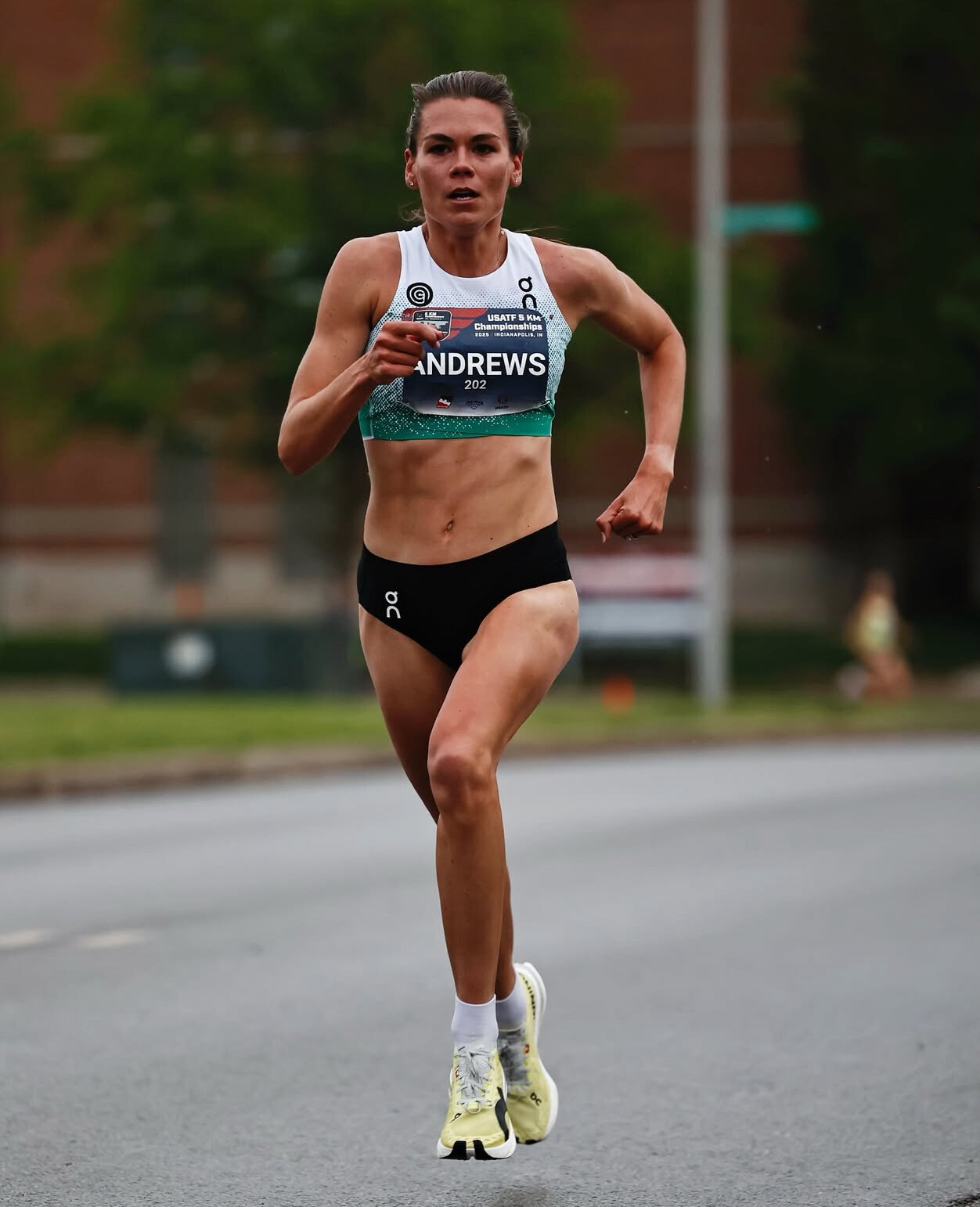
1. Josette Andrews – 15:12.34
2. Emily Infeld (Nike) – 15:14.50
3. Karissa Schweizer (Nike Bowerman TC) – 15:16.75
4. Elly Henes (adidas) – 15:19.20
5. Rachel Schneider (Under Armour) – 15:22.85
6. Abbey Cooper (New Balance) – 15:25.40
7. Molly Seidel (Saucony) – 15:28.95
8. Vanessa Fraser (Nike) – 15:31.50
9. Emily Lipari (adidas) – 15:34.05
10. Natosha Rogers (Hansons-Brooks) – 15:36.60
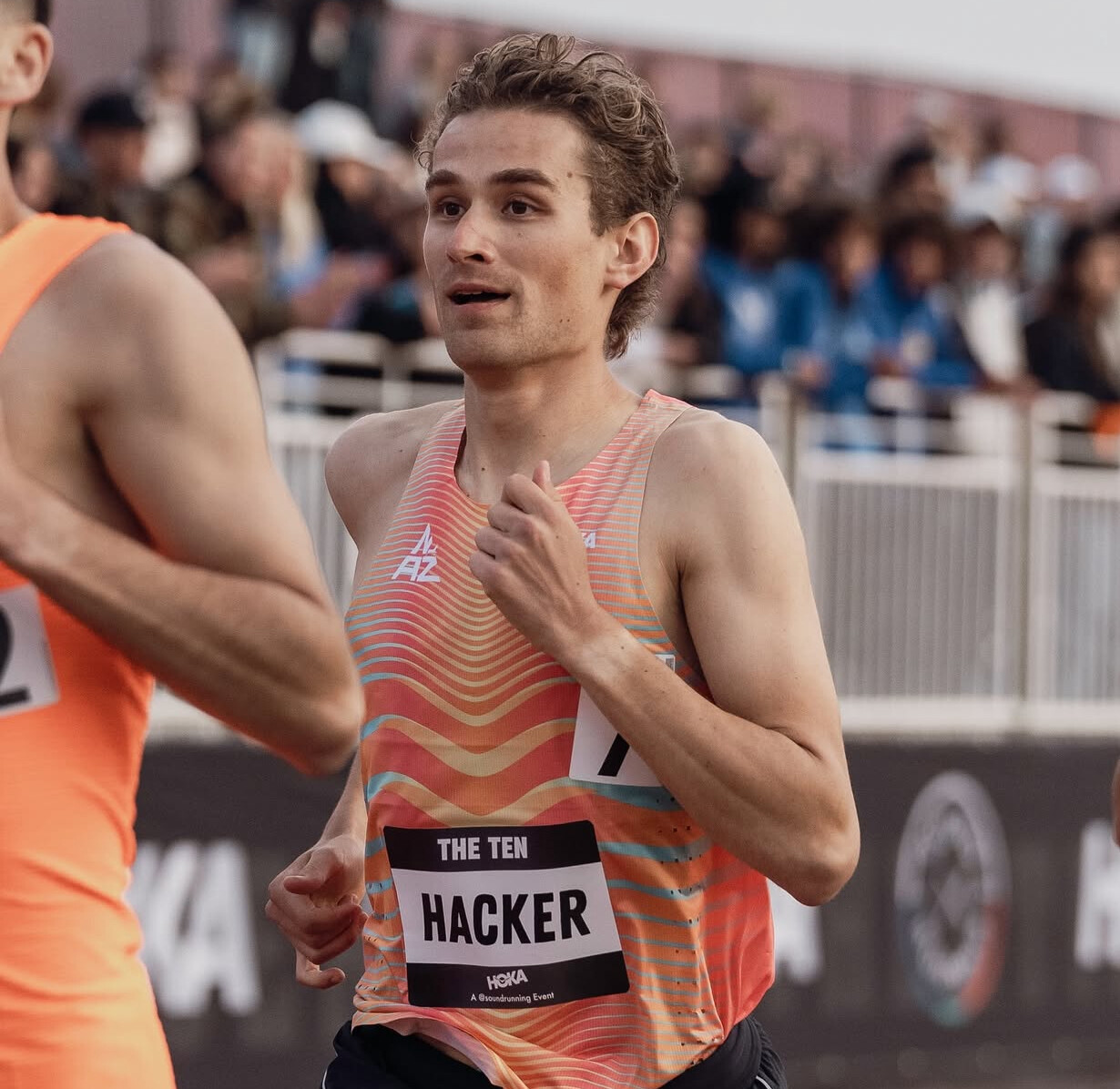
The performances in Indianapolis set the tone for what promises to be a fast and competitive summer racing season across the U.S. road circuit.
by Boris Baron
Login to leave a comment
OneAmerica 500 Festival Mini-Marathon
The mission of the 500 Festival is to produce life-enriching events and programs while celebrating the spirit and legacy of the Indianapolis 500 and fostering positive impact on the city of Indianapolis and state of Indiana. As an organization providing multiple events and programs, many of which are free to attend and impact over 500,000 people annually, our mission to...
more...Rory Linkletter adjusts to new coach ahead of TCS New York City Marathon
Canadian marathoner Rory Linkletter is preparing for the 2024 TCS New York City Marathon on Nov. 3 with a new coach and a renewed focus. After his previous coach, Ryan Hall, decided to step away from coaching following the Paris 2024 Olympics, Linkletter was forced to seek new guidance with less than 10 weeks to go until the race.
For Linkletter, his Paris Olympic marathon was a mix of pride and disappointment. He was proud to represent the red and white at an event he had always dreamed about competing at, but he felt his race was underwhelming. “I feel like I didn’t show my best,” Linkletter said on his 47th-place finish (2:13:09).
Linkletter told Canadian Running his preparation for Paris centred heavily on mastering the challenging course and hills: “I felt like I needed to get strong and run hills, but at the end of the day, it’s always the fittest man who wins,” he says. “I got too far away from speed and power.”
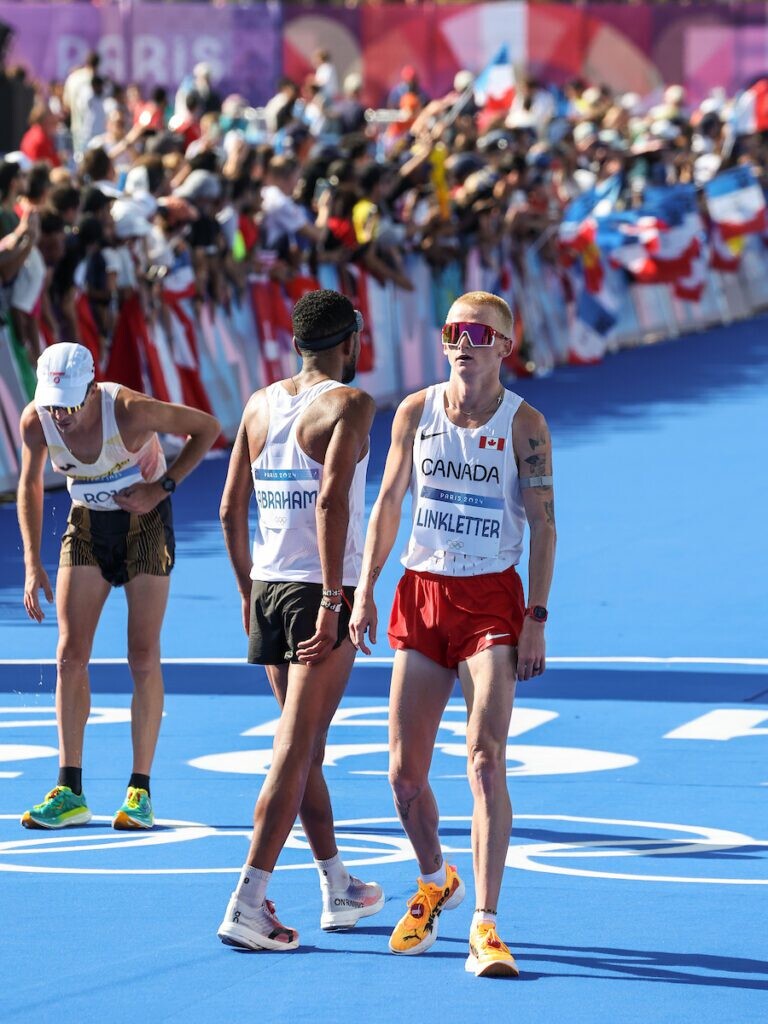
He took a week off after Paris and then dove back into training, focusing on his next challenge–the 2024 New York City Marathon. During his time off, Linkletter was taken by surprise when Hall announced he would be stepping back from coaching. “I was shocked. It was all so sudden,” Linkletter admits. “If you knew Ryan, you wouldn’t be surprised, but I didn’t expect it to happen so soon.”
New beginnings
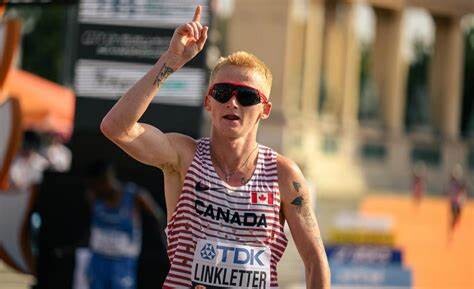
Balancing the post-Olympic blues with the sudden coaching transition wasn’t easy, but Linkletter says he’s the most motivated to train when he’s disappointed.
The 2:08:01 marathoner initially created his own training plan for NYC, and reached out to a few people he trusted for feedback. One of those was Jon Green, coach of U.S. Olympic marathon bronze medallist Molly Seidel. “We met up, had a conversation, and he said he’d be happy to help me get to NYC,” Linkletter says. “By the time we met again, he had mapped out a plan for me. I liked what he had.”
Green is someone Canada’s second fastest marathoner has long respected, going back to their days racing against each other in the NCAA—Linkletter competing for Brigham Young University (BYU) and Green for Georgetown. Now, as a coach-athlete duo, they’re working to fine-tune Linkletter’s strengths for the NYC Marathon in his home of Flagstaff, Ariz.
Moving forward
Training in Flagstaff has become a constant for Linkletter. He’s found a home in the high-altitude environment, which is known for its ideal training conditions. “I love it here,” he says. “It’s one of the best, if not the best, places to train.” With the NYC Marathon on the horizon, Linkletter is content in Flagstaff, but remains open to exploring options that will best prepare him for the future. “Paris was awesome, but I want to be there again in L.A. 2028 and be the best version of myself,” he says.
By then, Linkletter will be 31 years old—what he believes will be his prime—and he’s determined to make every year count as he builds toward the goal.
by Marley Dickinson
Login to leave a comment
TCS New York City Marathon
The first New York City Marathon, organized in 1970 by Fred Lebow and Vince Chiappetta, was held entirely in Central Park. Of 127 entrants, only 55 men finished; the sole female entrant dropped out due to illness. Winners were given inexpensive wristwatches and recycled baseball and bowling trophies. The entry fee was $1 and the total event budget...
more...How to increase your weekly mileage with minimal effort
When trying to add to their weekly mileage totals, a lot of runners jump immediately to longer long runs and bigger workouts. But this may actually do more harm than good. For a number of reasons, lengthening your warmup and cooldown are likely the safest, and easiest, ways to add extra mileage.
First, the warmup and cooldown are done at a slow, easy pace. If there’s anything we’ve learned from runners like Eliud Kipchoge or Molly Seidel, it’s that you have to run slow to run fast. These runners do up to 80 per cent of their mileage at a very slow pace, which helps them run more without increasing the stress on their bodies. By increasing the length of your warmup and cooldown, you’re increasing the time you spend on your feet without stressing your body with more hard running.
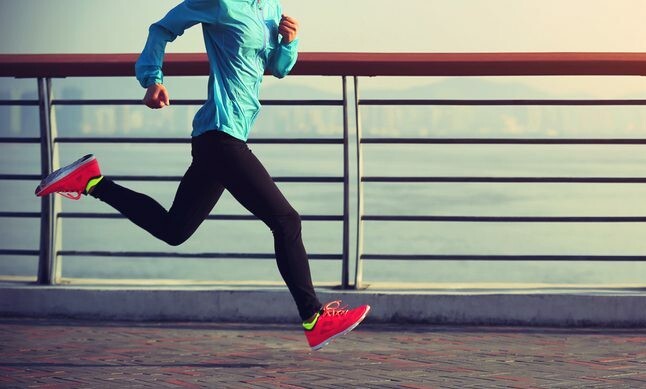
Second, it’ll help you better prepare your body for your workout. If you’re like a lot of runners, you probably cut your warmup and cooldown a little bit short in favour of just getting the workout done. We get it–sometimes you just want to get on with it, and when you’re tired from a hard workout, cooldowns can feel like cruel punishment. But they are both important aspects of training, since they help prepare your body for the work ahead (the warmup) and helping kick-start the recovery process (the cooldown) so you’ll be ready for your next speed session.
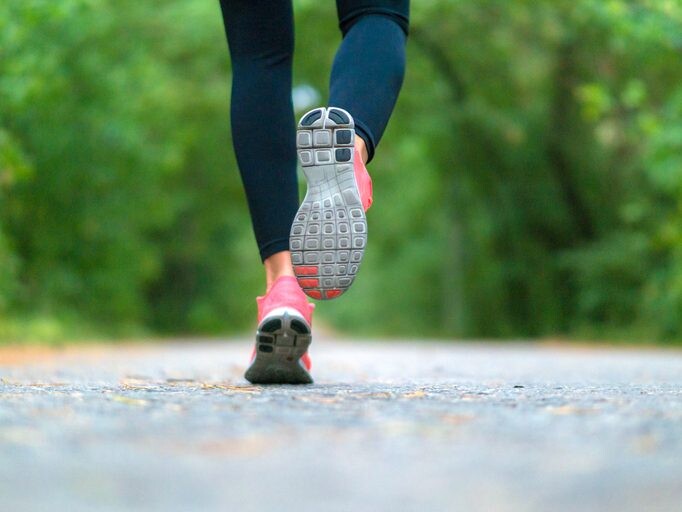
Finally, the warmup and cooldown are a great place to add mileage because, other than the extra time put in, you’ll hardly notice the change–it’s like free mileage! Simply start by adding five minutes more of easy jogging on either side of your workout (on workout days), and you can gradually continue to add to your warmups and cooldowns in this way until you’re satisfied with your weekly mileage total. While it sounds like a small amount, the extra kilometers add up.
You’re not doing workouts, you say? If you have race goals, at some point you should be doing speedwork. There are many ways to gradually introduce speedwork without getting injured. (But if you’re really not ready, you can still increase your weekly mileage by simply adding five minutes to the start and end of your runs.)
by Brittany Hambleton
Login to leave a comment
Molly Seidel withdraws from Olympic Marathon Trials due to injury
Tokyo Olympic bronze medalist Molly Seidel announced she is withdrawing from Saturday’s U.S. marathon trials for the Paris Games due to a knee injury.
Seidel, 29, said in a video posted Thursday that she suffered a knee injury a month ago, couldn’t run on it and got an MRI that revealed a broken patella and a partially torn patella tendon.
“I have done everything in my power over this last month to try and get myself to the (starting) line,” she said. “I’ve had just the most incredible physios and doctors doing everything in their power to help me. I’ve been cross-training my (butt) off, but ultimately I got to this week, and my knee had not healed up enough, and I knew that I could not race a marathon hard on it in its current state without really, really injuring myself.”
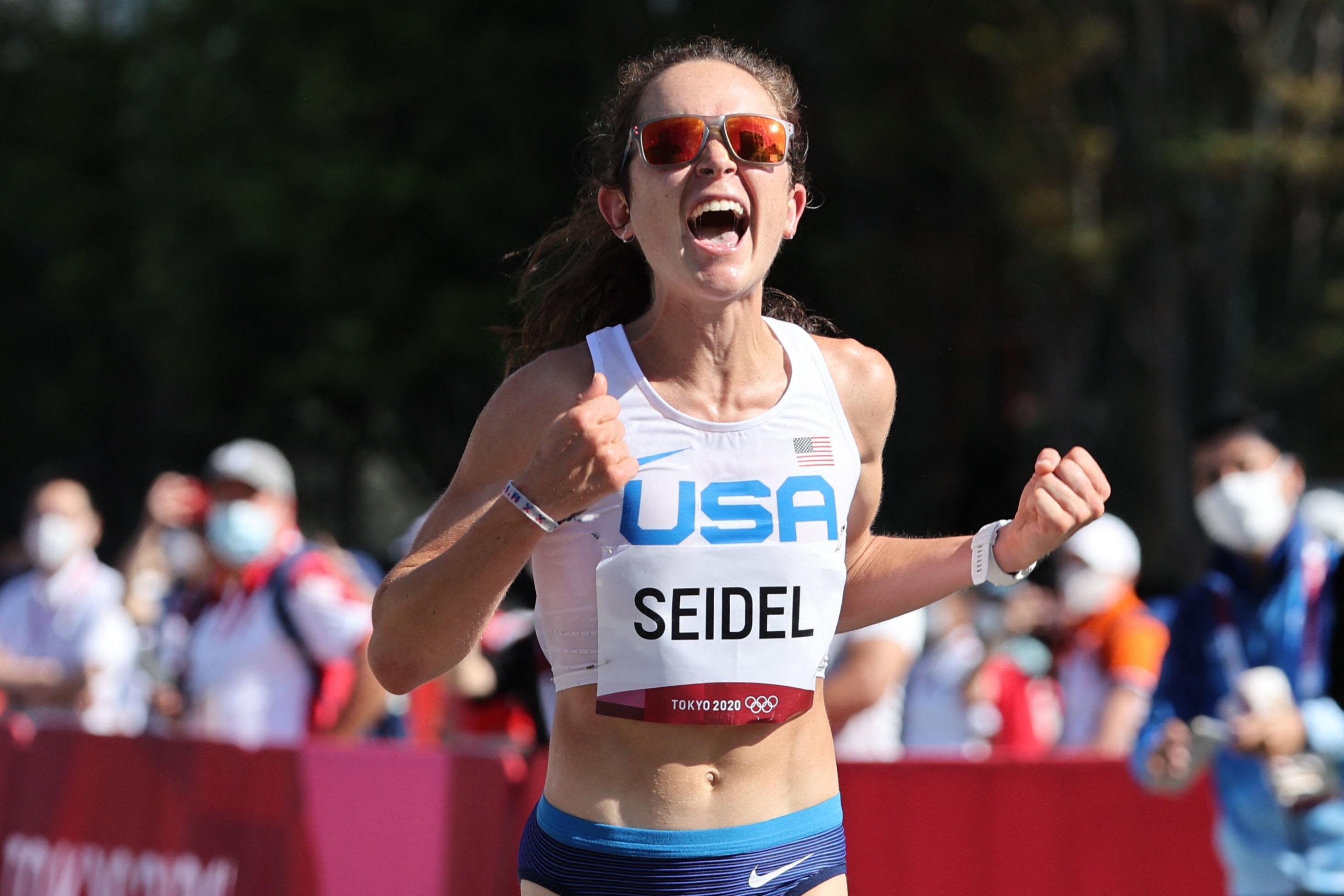
The trials are Saturday at 10 a.m. ET from Orlando, airing live on Peacock with coverage on NBC, NBCSports.com and the NBC Sports app at noon.
Four years ago, Seidel placed second in the trials in her marathon debut to make the three-woman Olympic team.
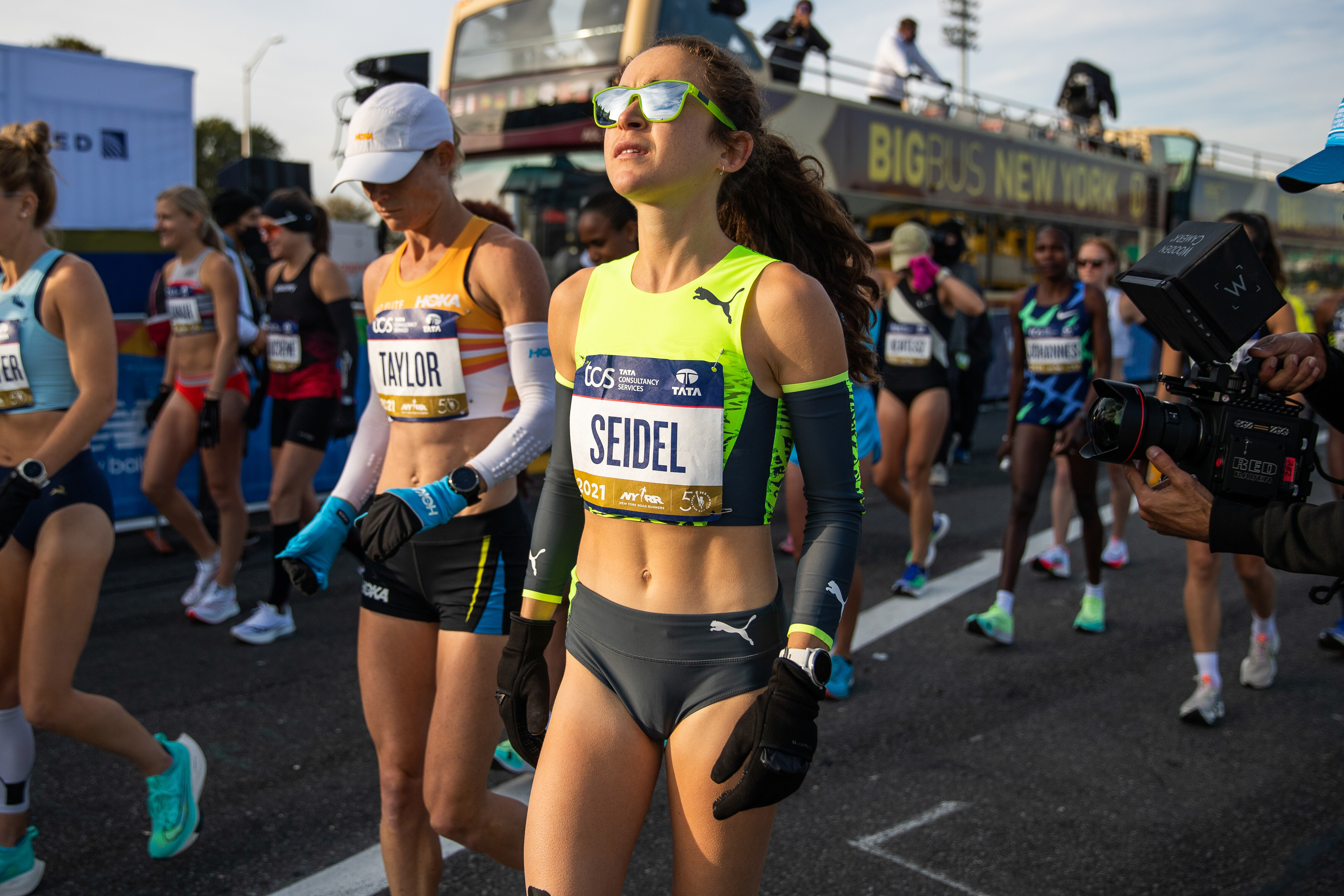
After the COVID-19 pandemic postponed the Tokyo Games by one year, Seidel finished third in the Olympic marathon held in Sapporo.
She became the third U.S. woman to win a marathon medal after Joan Benoit Samuelson, who won the first Olympic women’s marathon in 1984, and Deena Kastor, the 2004 bronze medalist.
After Tokyo, Seidel dealt with a hip injury and anemia, plus took time to focus on mental health after an eating disorder relapse.
Then last Oct. 8, Seidel finished a 26.2-mile race for the first time in two years. She was the second-fastest American woman at the Chicago Marathon, running a personal best and re-establishing herself as a prime candidate to make the Paris team of three at trials.
Seidel is the second contender to withdraw in the lead-up to trials.
Emma Bates, the third-fastest U.S. female marathoner of 2023, bowed out Jan. 7, saying then, “There’s just not enough time to be where I need to be.”
The field still includes three of the four fastest American women in history — American record holder Emily Sisson, former American record holder Keira D’Amato and Sara Hall, No. 4 on the all-time list.
Plus, former Iowa State teammates Betsy Saina (the fastest American in 2023) and Aliphine Tuliamuk (Tokyo Olympic Trials winner).
by Olympic Talk
Login to leave a comment
2028 US Olympic Trials Marathon
Most countries around the world use a selection committee to choose their Olympic Team Members, but not the USA. Prior to 1968, a series of races were used to select the USA Olympic Marathon team, but beginning in 1968 the format was changed to a single race on a single day with the top three finishers selected to be part...
more...Paul Chelimo is set to make marathon debut at Olympic Trials
Paul Chelimo, an Olympic 5000m silver and bronze medalist, will make his marathon debut at the U.S. Olympic Trials on Feb. 3 in Orlando.
“Ever since I was a kid, I dreamed of running a marathon… The day has come- this is it!” was posted on his social media Friday.
Chelimo, 33, qualified for the marathon trials by running a 1:02:22 half marathon last April 2, safely quicker than the 1:03:00 minimum to get into the field.
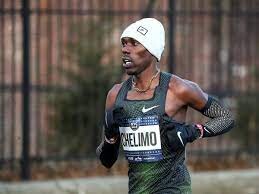
He didn’t publicly commit to racing the marathon trials until now. He could still contest the track trials in June.
“Let’s start by Orlando... then we will see!” Chelimo’s agent wrote in an email when asked about track trials.
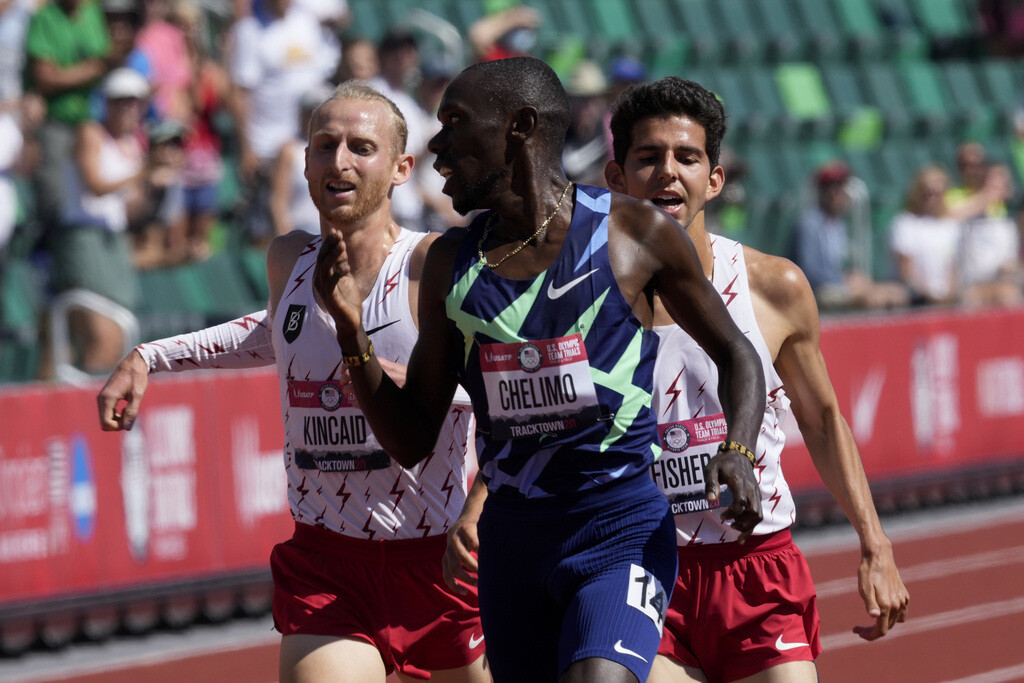
At marathon trials, the top three finishers on Feb. 3 are likely to make up the team for Paris. Since Chelimo has never raced a marathon, he also must run 2:11:30 or faster to hit a minimum qualifying time for Olympic eligibility.
Chelimo made five of the last six Olympic or world outdoor championships teams on the track in the 5000m. He won Olympic silver in 2016 and bronze in 2021, the latter being the lone U.S. men’s distance medal at the Tokyo Games.
Now, he joins a recent list of American global track medalists to move up to the marathon after Kara Goucher (2007 World 10,000m silver), Shalane Flanagan (2008 Olympic 10,000m silver), Galen Rupp (2012 Olympic 10,000m silver) and Bernard Lagat (world 5000m medals in 2007, 2009 and 2011).
Jenny Simpson, a world champion and Olympic bronze medalist at 1500m, also plans to make her marathon debut at the Feb. 3 trials.
Rupp made the 2016 Olympic marathon team in his debut at the distance at those trials. Molly Seidel did the same for the Tokyo Games. Each won a bronze medal in their first Olympic marathon.
Rupp, eyeing a fifth Olympics, headlines the men’s trials field along with Conner Mantz, the fastest American marathoner in 2022 and 2023 going for his first Games.
by Olympic Talk
Login to leave a comment
2028 US Olympic Trials Marathon
Most countries around the world use a selection committee to choose their Olympic Team Members, but not the USA. Prior to 1968, a series of races were used to select the USA Olympic Marathon team, but beginning in 1968 the format was changed to a single race on a single day with the top three finishers selected to be part...
more...For Betsy Saina, the U.S. Olympic Trials Marathon Presents a Chance to Represent Her Son
For much of last year, Betsy Saina had a plan. She would race the Chicago Marathon in October, eager to run alongside Emma Bates (who placed fifth at last year’s Boston Marathon in a new personal best of 2:22:10) in pursuit of breaking Emily Sisson’s American record of 2:18:29, set the previous year at that same race.
Saina, 35, a naturalized U.S. citizen who represented Kenya in the 2016 Olympics in Rio de Janeiro—she placed fifth in the 10,000 meters 30:07.78—had reason to be confident. Last spring, she set a new personal best of 2:21:40 with her fifth-place finish at the Tokyo Marathon, which wound up being the fastest marathon by an American woman in 2023 and made her the eighth-fastest U.S. female marathoner of all-time, solidifying her position as a top U.S. Olympic marathon team contender.
The Chicago Marathon had assured Saina’s agent, Tom Broadbent, that she was in for the race. But when the elite field was announced in August, Saina learned she had not been accepted, which not only threw a wrench in her fall training plans, but made for a lot of stress as she was planning her U.S. Olympic Marathon Team Trials buildup.
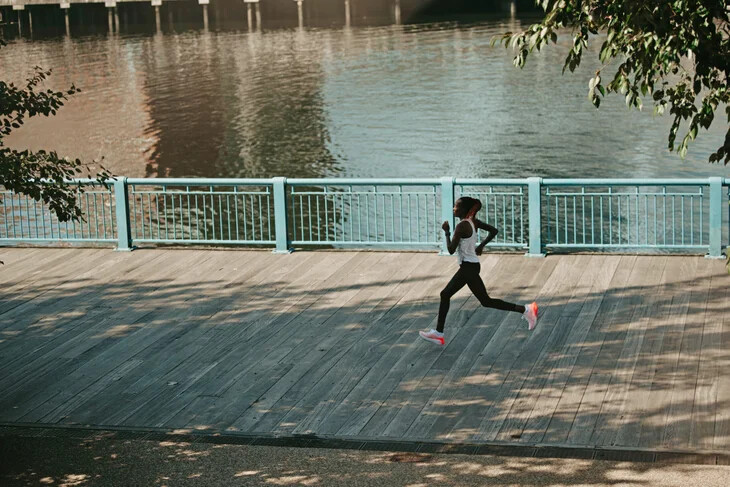
“I was shocked and spent three days looking at myself and trying to find any mistakes I made to not make the field, especially after running 2:21 in Tokyo,” Saina says. “I had never been rejected from a race before, and never got a response or an explanation as to why I didn’t make it. Being denied to run in Chicago honestly was one of the most disappointing things I’ve experienced in my career.”
Saina looked into entering the Berlin Marathon the following month, but had no such luck getting in with it being so late in the game. She was ultimately accepted into the Sydney Marathon (which shares its sponsor, ASICS, with Saina) on September 16. Unlike Chicago—with its fast, flat course that ended up having ideal racing conditions with temperatures in the 40s—Sydney has a hilly course and race-day weather was on the hotter side, with a starting temperature of 68 degrees.
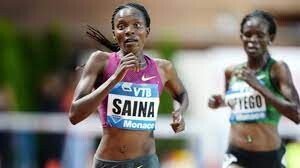
Despite the conditions, Saina proved herself once again, winning the race in 2:26:47. This sealed her confidence as she began to look ahead to the Olympic Trials in Orlando on February 3. If she’s one of the top three finishers in the women’s race in Florida, she’ll earn a spot on the U.S. team that will compete in the marathon at the Paris Olympics on August 11.
“Challenges make people strong, and running a good marathon on a harder course made me come back feeling motivated,” she says. “[Even though it wasn’t the faster time I originally wanted], it didn’t stop me from being a better version of myself.”
Transcendent Transplant
Despite her impressive performances in 2023, Saina has remained largely under the radar in terms of media coverage and fan predictions leading up to the Trials in Orlando, similarly to what fellow Kenyan-born marathoners Aliphine Tuliamuk and Sally Kipyego (both of whom made the last Olympic marathon team) experienced in 2020. The lack of attention relative to her competitors hasn’t fazed Saina, however.
“I know how to deal with pressure, having been in the sport since 2013, so as long as my training is going well, I don’t pay too much attention to what people say,” Saina says. “I’m just more excited to see many of the U.S. women [who are also] my friends, like Emily Sisson, Sara Hall, and Keira D’Amato, and to be racing so many amazing U.S. athletes for the first time.”
Saina’s result in Tokyo was only about a minute faster than her debut at the distance at the 2018 Paris Marathon, which she won in 2:22:56 (after dropping out of the 2017 Tokyo and New York City Marathons). It was also a confidence boost for Saina because it was also her first marathon since giving birth to her son, Kalya, now two, in December 2021, after previously running 2:22:43 and 2:31:51 at the 2019 Toronto Waterfront and Honolulu Marathons, respectively.
Saina—who originally came to the U.S. to attend Iowa State University where she trained alongside Tuliamuk and was a three-time individual NCAA champion and 11-time NCAA All-American—has remained in her hometown of Iten, Kenya, for the majority of the time since having her son, as her husband, Meshack Korir, is a doctor completing his postgraduate education there.
Although Saina became a U.S. citizen in late 2020 and has a home base in Colorado Springs, she made the decision to return to Kenya to have additional family support and childcare as she worked to come back from pregnancy and childbirth to prepare for the Olympic Trials, which she’ll return for just a few days before the race. Saina also keeps busy managing a couple of guesthouses, which she regularly rents out to visiting athletes and tourists. She also works with Cross World Africa, a nonprofit that sponsors underprivileged children in pursuing secondary and higher education.
“Before I came from Kenya, my family was struggling and we had to fundraise for my flight ticket to come to the U.S. Being here has changed my family in a different way—I have two sisters who are now nurses in the U.S., and my parents can now more easily fly to visit us, and while it is not where I began running, the U.S. where I began competing at such a high level,” she says. “My son also gives me so much motivation and is my inspiration. When I see him, I see beauty in myself and see myself getting better when I’m running. So I am excited both to compete and represent my son, and to hopefully wear the U.S. uniform because it has so much meaning for me.”
Back in Iten, Saina has been training in a group with personal pacemakers alongside 2019 New York City Marathon champion Joyciline Jepkosgei, which she describes as game-changing for her progress in the marathon. Both Saina and Jepkosgei, who is also the former world-record holder in the half marathon and Saina’s best friend from high school, are coached by Jepkosgei’s husband, Nicholas Koech.
“Sometimes you will train with people who don’t want to help someone else get better, but [Jepkosgei], who has run 1:04 [in the half marathon] and 2:17 [in the marathon] is unique in that she has sacrificed a lot, which I don’t think a lot of women will ever do for each other, and I don’t think I would either,” Saina says. “But she has been pushing me a lot since the first day I joined her, and I think that’s the reason I came back and I’ve had better races. I have someone to chase and it’s like competition in training, but in a good way.”
American Original
Saina returned to the U.S. twice last year, to race the USATF 25K Championships in Grand Rapids, Michigan, (where she took the win in 1:24:32 for her first U.S. title, narrowly beating D’Amato) and to be inducted into Iowa State’s Athletics Hall of Fame in September. Saina had planned to do some shorter U.S. races, including the Bolder Boulder 10K in May and the NYRR Mini 10K in June, following her national championship title in the 25K. However, she ultimately decided she couldn’t bear to be away from her son any longer.
“As a mom, when you’re away, you are so worried because you’re like, ‘How is he doing right now? How can I handle the pressure, being away from him?’” Saina says. “This year, it’s really different for me because the only race I want to travel to without Kalya is the Olympic Trials. He is growing now and getting better, so I want to travel with him afterward to compete in the USATF circuit. That’s the biggest goal for 2024, to travel with my son.”
Later this year, Saina hopes to also run the April 7 Cherry Blossom 10-Miler in Washington, D.C., the Mini 10K on June 8 in New York City, and a fast spring half marathon to pursue the current American record (which was broken yet again by Weini Kelati on January 14 in Houston), before running another marathon in the fall. In the meantime, she noted that she is especially eager to compete in one of the deepest fields ever assembled for the Trials.
Although Bates withdrew from the Trials, Saina figures to be one of the favorites in Orlando along with Sisson, Hall, Tuliamuk, D’Amato, and Seidel. However, Lindsay Flanagan (ninth in last summer’s world championships), Sara Vaughn, Susanna Sullivan, Gabriella Rooker, Dakotah Lindwurm, and Nell Rojas are all sub-2:25 marathoners, and thus top contenders, too.
“The U.S. is no longer small and non-competitive. Look at Molly Seidel. She got bronze at the Tokyo Olympics, and I remember when Amy [Cragg] was a bronze medalist at the 2017 World Championships. If you put that in perspective, it has changed even more right now compared to that time,” she says. “The competition [to make the U.S. team] is no longer as easy as the way some people [thought], and I’m super excited to be competing with a lot of solid women. There is no difference between the U.S. and other countries right now—it’s not just to go compete at the Olympics; they’re going to compete for the medals, just like other countries.”
by Emilia Benton
Login to leave a comment
2028 US Olympic Trials Marathon
Most countries around the world use a selection committee to choose their Olympic Team Members, but not the USA. Prior to 1968, a series of races were used to select the USA Olympic Marathon team, but beginning in 1968 the format was changed to a single race on a single day with the top three finishers selected to be part...
more...Orlando Unveils 2024 US Olympic Marathon Trials Course, Announces Races Will Start at 12:10 and 12:20 pm ET
Just over six months out from race day, organizers revealed the course for the 2024 U.S. Olympic Team Trials – Marathon on Tuesday morning. The race, which will be held on February 3, 2024, in Orlando, Fla., will consist of one 2.2-mile loop through the downtown business district and three 8-mile loops through the city’s Milk District — so-called because it features the headquarters of T.G. Lee Dairy, which has been based in the area for 98 years. It will start and finish at the Walt Disney Amphitheater at Lake Eola Park. None of the course will run through Disney World, which is located to the southeast of the city of Orlando.
Unlike the Paris Olympic marathon course, which features considerable climbing and descending during the middle of the race, the Orlando course is relatively flat, with few small inclines but a variation of just 38 feet (11.6 meters) between the course’s lowest and highest points.
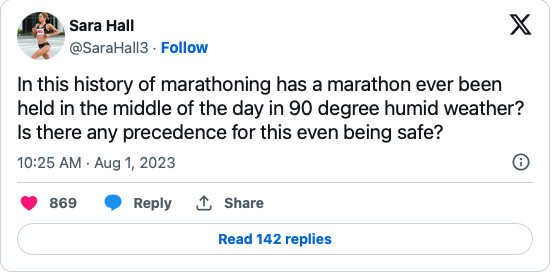
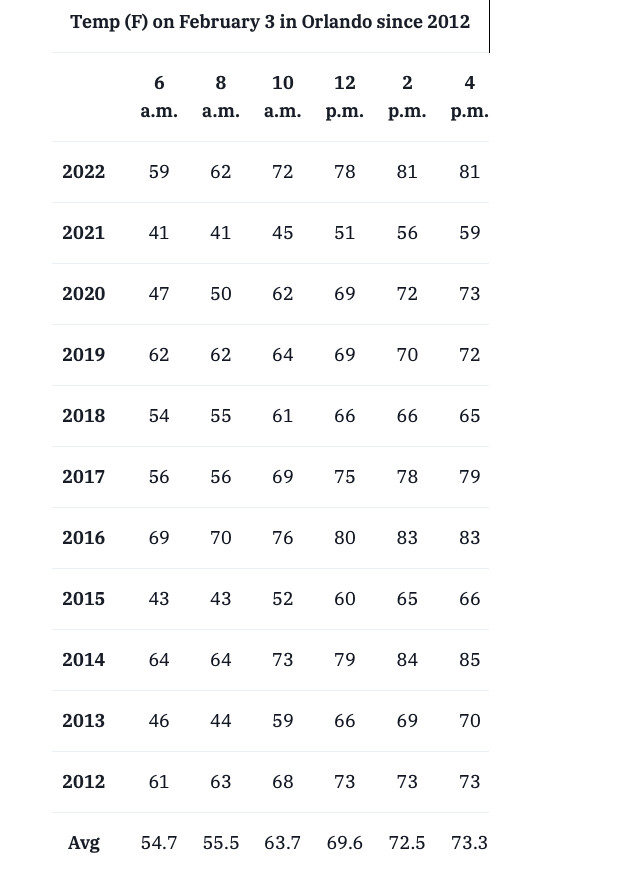
Mid-Day Start Time
Getting the actual course layout is nice but not that significant. We knew the course was going to be mostly flat as Orlando is mostly flat.
Organizers also announced something more significant: the start times for the race. The men will begin at 12:10 p.m. ET with the women to follow at 12:20 p.m. ET. Both races will be shown in their entirety on NBC.
With basically a noon start in Florida, it’s possible the race could be run in quite warm conditions. The debate of the once-rumored but now confirmed 12ish start times has been intense on the LRC forums for over a month now.
A couple of Trials veterans have already shared their thoughts, with Sara Halland Des Linden offering contrasting viewpoints. Hall, who is known to not like racing in hot weather, expressed concern about the heat and the safety of the athletes. She even challenged USATF CEO Max Siegel to run a hot weather marathon this summer.
It must be noted that Orlando has not seen a 90-degree day in February since 1962.
Meanwhile, two-time Olympian Linden had no issue with the start time and thought it could boost her chances of making the team by running smart.
For those interested in what the weather is typically like in Orlando on February 3, here’s a look at the temperature, wind, and dew point at specific times from 2012-22.
If the goal of the Olympic Marathon Trials was for every athlete to run their fastest possible race, obviously it would be better to start the race earlier, but there are other concerns. Television is the reason why the race is being held in the afternoon (there’s not a huge amount of West Coasters watching TV at 5 or 6 a.m. on a Saturday). The 2016 Trials began at 1:06 p.m. ET (10:06 a.m. local in Los Angeles) while the 2020 Trials in Atlanta began at 12:08 p.m. ET. Both races were shown on NBC in their entirety.
The fact is, in professional sports, there are often competing interests — what’s best for the athletes isn’t always what’s best for TV, and someone is going to be unhappy. USATF designed its US championships schedule this year with athletes in mind but the result was that USATF could not get the US outdoor championships shown on NBC. With the Trials, USATF is prioritizing the broadcast on NBC with the athletes a secondary consideration. You can be mad about one of those two things, but not both.
Orlando can be warm in February, no doubt about it — from 2012-22, the average temperature at 2 p.m. on February 3 was 73 degrees. But guess which race also is warm? The Olympic marathon. The Olympic marathons will be held on July 10-11, 2024. On July 10-11 this year, it was 73 degreees at 10 a.m. in Paris, which is when the marathons would be nearing their completion (8 a.m. start times).
In general, we are for athletics to be on live TV so we are fine with the races being scheduled for 12:10 and 12:20. We do believe if the temperatures are truly extreme (say 75 or higher at the start, certainly 80), USATF should move the race up and show it on tape-delay. But if you’re looking for conditions that mirror the Olympic marathon, Orlando in February is not a bad facsimile.
The one big issue we still have is with the new Olympic qualifying system. If you haven’t run under 2:11:30 for the men or 2:29:30 for the women during the qualifying window, you aren’t going to the Olympics even if you are in the top three. We think that’s ridiculous but those are the rules. That’s tough to do in warm weather. While it’s very unlikely someone who hasn’t run at least 2:11:30 or 2:29:30 in the window finishes top three, it could happen in the case of someone just moving up the marathon like Molly Seidel did in 2020 or someone coming back from injury or maternity leave like Kellyn Taylor.
We really wish WA would simply accept the top three from the Trials since the US is sending three per gender most likely no matter what happens, but we’d rather take the small risk that someone without the 2:11:30/2:29:30 times is top three and have the race be on live TV than put it early in the morning. Plus athletes could chase the time up until April 30 and we’d love to see WA have to take the PR hit of someone on the way back from maternity leave having to run a time. Maybe it would finally make them let the spots go to countries as long as the countries hold legitimate trials.
(To cover all our bases, it’s worth noting there’s a small chance on the men’s side that the US has only one or two qualified men’s athletes at the start of the Trials. We’re pretty sure we’ll have at least three but it’s not set in stone and we won’t know for sure until after the fall marathon season is over. If that’s the case, then the start time is more problematic as the US men would either have to hit the 2:08:10 auto standard or run fast enough to raise their world ranking into a qualification spot. If that’s the case and the US men don’t have three spots guaranteed, we think the men’s start time should be moved up and shown on tape delay but keep the women’s race as scheduled).
Talk about the trials on our forum:
by Let’s Run
Login to leave a comment
The Pill That Over Half the Distance Medallists Used at the 2023 Worlds
What's the deal with sodium bicarbonate?What if there was a pill, new to the market this year, that was used by more than half of the distance medalists at the 2023 World Athletics Championships? A supplement so in-demand that there was a reported black market for it in Budapest, runners buying from other runners who did not advance past the preliminary round — even though the main ingredient can be found in any kitchen?
How did this pill become so popular? Well, there are rumors that Jakob Ingebrigtsen has been taking it for years — rumors that Ingebrigtsen’s camp and the manufacturers of the pill will neither confirm nor deny.
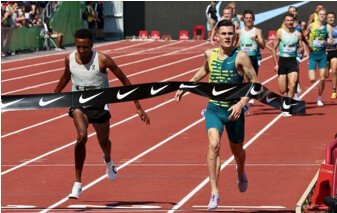
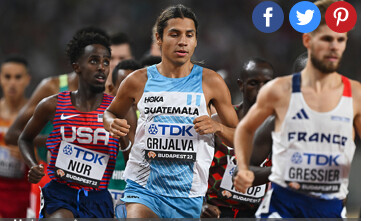
So about this pill…does it work? Does it actually boost athletic performance? Ask a sports scientist, someone who’s studied it for more than a decade, and they’ll tell you yes.
“There’s probably four or five legal, natural supplements, if you will, that seem to have withstood the test of time in terms of the research literature and [this pill] is one of those,” says Jason Siegler, Director of Human Performance in the College of Health Solutions at Arizona State University.
But there’s a drawback to this pill. It could…well, let’s allow Luis Grijalva, who used it before finishing 4th in the World Championship 5,000m final in Budapest, to explain.
“I heard stories if you do it wrong, you chew it, you kind of shit your brains out,” Grijalva says. “And I was a little bit scared.”
The research supports that, too.
“[Gastrointestinal distress] has by far and away been the biggest hurdle for this supplement,” Siegler says.Okay, enough with the faux intrigue. If you’ve read the subtitle of this article, you know the pill we are talking about is sodium bicarbonate. Specifically, the Maurten Bicarb System, which has been available to the public since February and which has been used by some of the top teams in endurance sports: cycling juggernaut Team Jumbo-Visma and, in running, the On Athletics Club and NN Running Team. (Maurten has sponsorship or partnership agreements with all three).Some of the planet’s fastest runners have used the Maurten Bicarb System in 2023, including 10,000m world champion Joshua Cheptegei, 800m silver medalist Keely Hodgkinson, and 800m silver medalist Emmanuel Wanyonyi. Faith Kipyegon used it before winning the gold medal in the 1500m final in Budapest — but did not use it before her win in the 5,000m final or before any of her world records in the 1500m, mile, and 5,000m.
Herman Reuterswärd, Maurten’s head of communications, declined to share a full client list with LetsRun but claims two-thirds of all medalists from the 800 through 10,000 meters (excluding the steeplechase) used the product at the 2023 Worlds.
After years of trial and error, Maurten believes it has solved the GI issue, but those who have used their product have reported other side effects. Neil Gourley used sodium bicarbonate before almost every race in 2023, and while he had a great season — British champion, personal bests in the 1500 and mile — his head ached after races in a way it never had before. When Joe Klecker tried it at The TEN in March, he felt nauseous and light-headed — but still ran a personal best of 27:07.57. In an episode of the Coffee Club podcast, Klecker’s OAC teammate George Beamish, who finished 5th at Worlds in the steeplechase and used the product in a few races this year, said he felt delusional, dehydrated, and spent after using it before a workout this summer.
“It was the worst I’d felt in a workout [all] year, easily,” Beamish said.
Not every athlete who has used the Maurten Bicarb System has felt side effects. But the sport as a whole is still figuring out what to do about sodium bicarbonate.
Many athletes — even those who don’t have sponsorship arrangements with Maurten — have added it to their routines. But Jumbo-Visma’s top cyclist, Jonas Vingegaard — winner of the last two Tours de France — does not use it. Neither does OAC’s top runner, Yared Nuguse, who tried it a few times in practice but did not use it before any of his four American record races in 2023.“I’m very low-maintenance and I think my body’s the same,” Nuguse says. “So when I tried to do that, it was kind of like, Whoa, what is this? My whole body felt weird and I was just like, I either did this wrong or this is not for me.”
How sodium bicarbonate works
The idea that sodium bicarbonate — aka baking soda, the same stuff that goes in muffins and keeps your refrigerator fresh — can boost athletic performance has been around for decades.
“When you’re exercising, when you’re contracting muscle at a really high intensity or a high rate, you end up using your anaerobic energy sources and those non-oxygen pathways,” says Siegler, who has been part of more than 15 studies on sodium bicarbonate use in sport. “And those pathways, some of the byproducts that they produce, one of them is a proton – a little hydrogen ion. And that proton can cause all sorts of problems in the muscle. You can equate that to that sort of burn that you feel going at high rates. That burn, most of that — not directly, but indirectly — is coming from the accumulation of these little hydrogen ions.”
As this is happening, the kidneys produce bicarbonate as a defense mechanism. For a while, bicarbonate acts as a buffer, countering the negative effects of the hydrogen ions. But eventually, the hydrogen ions win.The typical concentration of bicarbonate in most people hovers around 25 millimoles per liter. By taking sodium bicarbonate in the proper dosage before exercise, Siegler says, you can raise that level to around 30-32 millimoles per liter.
“You basically have a more solid first line of defense,” Siegler says. “The theory is you can go a little bit longer and tolerate the hydrogen ions coming out of the cell a little bit longer before they cause any sort of disruption.”
Like creatine and caffeine, Siegler says the scientific literature is clear when it comes to sodium bicarbonate: it boosts performance, specifically during events that involve short bursts of anaerobic activity. But there’s a catch.
***
Bicarb without the cramping
Sodium bicarbonate has never been hard to find. Anyone can swallow a spoonful or two of baking soda with some water, though it’s not the most appetizing pre-workout snack. The problem comes when the stomach tries to absorb a large amount of sodium bicarbonate at once.
“You have a huge charged load in your stomach that the acidity in your stomach has to deal with and you have a big shift in the partial pressure of carbon dioxide across the gut,” Siegler says. “And that’s what gives you the cramping.”
A few years ago, Maurten was trying to solve a similar problem for marathoners trying to ingest large amounts of carbohydrates during races. The result was their carbohydrate drink, which relies on something called a hydrogel to form in the stomach. The hydrogel resists the acidity of the stomach and allows the carbohydrates to be absorbed in the intestine instead, where there is less cramping.
“We thought, okay, we are able to solve that one,” Reuterswärd says. “Could we apply the hydrogel technology to something else that is really risky to consume that could be beneficial?”
For almost four years, Maurten researched the effects of encapsulating sodium bicarbonate in hydrogels in its Swedish lab, conducting tests on middle-distance runners in Gothenburg. Hydrogels seemed to minimize the risk, but the best results came when hydrogels were paired with microtablets of sodium bicarbonate.
The result was the Maurten Bicarb System — “system,” because the process for ingesting it involves a few steps. Each box contains three components: a packet of hydrogel powder, a packet of tiny sodium bicarbonate tablets, and a mixing bowl. Mix the powder with water, let it stand for a few minutes, and sprinkle in the bicarb.The resulting mixture is a bit odd. It’s gooey. It’s gray. It doesn’t really taste like anything. It’s not quite liquid, not quite solid — a yogurt-like substance flooded with tiny tablets that you eat with a spoon but swallow like a drink.
The “swallow” part is important. Chew the tablets and the sodium bicarbonate will be absorbed before the hydrogels can do their job. Which means a trip to the toilet may not be far behind.
When Maurten launched its Bicarb System to the public in February 2023, it did not have high expectations for sales in year one.
“It’s a niche product,” Reuterswärd says. “From what we know right now, it maybe doesn’t make too much sense if you’re an amateur, if you’re just doing 5k parkruns.”
But in March, Maurten’s product began making headlines in cycling when it emerged that it was being used by Team Jumbo-Visma, including by stars Wout van Aert and Primož Roglič. Sales exploded. Because bicarb dosage varies with bodyweight, Maurten’s system come in four “sizes.” And one size was selling particularly well.
“If you’re an endurance athlete, you’re around 60-70 kg (132-154 lbs),” Reuterswärd says. “We had a shortage with the size that corresponded with that weight…The first couple weeks, it was basically only professional cyclists buying all the time, massive amounts. And now we’re seeing a similar development in track & field.”
If there was a “Jumbo-Visma” effect in cycling, then this summer there was a “Jakob Ingebrigtsen” effect in running.To be clear: there is no official confirmation that Ingebrigtsen uses sodium bicarbonate. His agent, Daniel Wessfeldt, did not respond to multiple emails for this story. When I ask Reuterswärd if Ingebrigtsen has used Maurten’s product, he grows uncomfortable.
“I would love to be very clear here but I will have to get back to you,” Reuterswärd says (ultimately, he was not able to provide further clarification).
But when Maurten pitches coaches and athletes on its product, they have used data from the past two years on a “really good” 1500 guy to tout its effectiveness, displaying the lactate levels the athlete was able to achieve in practice with and without the use of the Maurten Bicarb System. That athlete is widely believed to be Ingebrigtsen. Just as Ingebrigtsen’s success with double threshold has spawned imitators across the globe, so too has his rumored use of sodium bicarbonate.
Grijalva says he started experimenting with sodium bicarbonate “because everybody’s doing it.” And everybody’s doing it because of Ingebrigtsen.
“[Ingebrigtsen] was probably ahead of everybody at the time,” Grijalva said. “Same with his training and same with the bicarb.”
OAC coach Dathan Ritzenhein took sodium bicarbonate once before a workout early in his own professional career, and still has bad memories of swallowing enormous capsules that made him feel sick. Still, he was willing to give it a try with his athletes this year after Maurten explained the steps they had taken to reduce GI distress.
“Certainly listening to the potential for less side effects was the reason we considered trying it,” says Ritzenhein. “I don’t know who is a diehard user and thinks that it’s really helpful, but around the circuit I know a lot of people that have said they’ve [tried] it.”
Coach/agent Stephen Haas says a number of his athletes, including Gourley, 3:56 1500 woman Katie Snowden, and Worlds steeple qualifier Isaac Updike, tried bicarb this year. In the men’s 1500, Haas adds, “most of the top guys are already using it.”
Yet 1500-meter world champion Josh Kerr was not among them. Kerr’s nutritionist mentioned the idea of sodium bicarbonate to him this summer but Kerr chose to table any discussions until after the season. He says he did not like the idea of trying it as a “quick fix” in the middle of the year.
“I review everything at the end of the season and see where I could get better,” Kerr writes in a text to LetsRun. “As long as the supplement is above board, got all the stamps of approvals needed from WADA and the research is there, I have nothing against it but I don’t like changing things midseason.”
***
So does it actually work?
Siegler is convinced sodium bicarbonate can benefit athletic performance if the GI issues can be solved. Originally, those benefits seemed confined to shorter events in the 2-to 5-minute range where an athlete is pushing anaerobic capacity. Buffering protons does no good to short sprinters, who use a different energy system during races.
“A 100-meter runner is going to use a system that’s referred to the phosphagen or creatine phosphate system, this immediate energy source,” Siegler says. “…It’s not the same sort of biochemical reaction that eventuates into this big proton or big acidic load. It’s too quick.”
But, Siegler says, sodium bicarbonate could potentially help athletes in longer events — perhaps a hilly marathon.
“When there’s short bursts of high-intensity activity, like a breakaway or a hill climb, what we do know now is when you take sodium bicarbonate…it will sit in your system for a number of hours,” Siegler says. “So it’s there [if] you need it, that’s kind of the premise behind it basically. If you don’t use it, it’s fine, it’s not detrimental. Eventually your kidneys clear it out.”Even Reuterswärd admits that it’s still unclear how much sodium bicarbonate helps in a marathon — “honestly, no one knows” — but it is starting to be used there as well. Kenya’s Kelvin Kiptum used it when he set the world record of 2:00:35at last month’s Chicago Marathon; American Molly Seidel also used it in Chicago, where she ran a personal best of 2:23:07.
Siegler says it is encouraging that Maurten has tried to solve the GI problem and that any success they experience could spur other companies to research an even more effective delivery system (currently the main alternative is Amp Human’s PR Lotion, a sodium bicarbonate cream that is rubbed into the skin). But he is waiting for more data before rendering a final verdict on the Maurten Bicarb System.
“I haven’t seen any peer-reviewed papers yet come out so a bit I’m hesitant to be definitive about it,” Siegler said.
Trent Stellingwerff, an exercise physiologist and running coach at the Canadian Sport Institute – Pacific, worked with Siegler on a 2020 paper studying the effect of sodium bicarbonate on elite rowers. A number of athletes have asked him about the the Maurten Bicarb System, and some of his marathoners have used the product. Like Siegler, he wants to see more data before reaching a conclusion.
“I always follow the evidence and science, and to my knowledge, as of yet, I’m unaware of any publications using the Maurten bicarb in a double-blind, placebo-controlled clinical trial,” Stellingwerff writes in a text to LetsRun. “So without any published data on the bicarb version, I can’t really say it does much.”
The closest thing out there right now is a British study conducted by Lewis Goughof Birmingham City University and Andy Sparks of Edge Hill University. In a test of 10 well-trained cyclists, Gough and Sparks found the Maurten Bicarb System limited GI distress and had the potential to improve exercise performance. Reuterswärd says the study, which was funded by Maurten, is currently in the review process while Gough and Sparks suggested further research to investigate their findings.
What about the runners who used sodium bicarbonate in 2023?
Klecker decided to give bicarb a shot after Maurten made a presentation to the OAC team in Boulder earlier this year. He has run well using bicarb (his 10,000 pb at The TEN) and without it (his 5,000 pb in January) and as Klecker heads into an Olympic year, he is still deciding whether the supposed benefits are worth the drawbacks, which for him include nausea and thirst. He also says that when he has taken the bicarb, his muscles feel a bit more numb than usual, which has made it more challenging for him to gauge his effort in races.
“There’s been no, Oh man I felt just so amazing today because of this bicarb,” Klecker says. “If anything, it’s been like, Oh I didn’t take it and I felt a bit more like myself.”
Klecker also notes that his wife and OAC teammate, Sage Hurta-Klecker, ran her 800m season’s best of 1:58.09 at the Silesia Diamond League on July 16 — the first race of the season in which she did not use bicarb beforehand.
A number of athletes in Mike Smith‘s Flagstaff-based training group also used bicarb this year, including Grijalva and US 5,000 champion Abdihamid Nur. Grijalva did not use bicarb in his outdoor season opener in Florence on June 2, when he ran his personal best of 12:52.97 to finish 3rd. He did use it before the Zurich Diamond League on August 31, when he ran 12:55.88 to finish 4th.“I want to say it helps, but at the same time, I don’t want to rely on it,” Grijalva says.
Almost every OAC athlete tried sodium bicarbonate at some point in 2023. Ritzenhein says the results were mixed. Some of his runners have run well while using it, but the team’s top performer, Nuguse, never used it in a race. Ritzenhein wants to continue testing sodium bicarbonate with his athletes to determine how each of them responds individually and whether it’s worth using moving forward.
That group includes Alicia Monson, who experimented with bicarb in 2023 but did not use it before her American records at 5,000 and 10,000 meters or her 5th-place finish in the 10,000 at Worlds.
“It’s not the thing that’s going to make or break an athlete,” Ritzenhein says. “…It’s a legal supplement that has the potential, at least, to help but it doesn’t seem to be universal. So I think there’s a lot more research that needs to be done into it and who benefits from it.”
The kind of research scientists like Stellingwerff want to see — double-blind, controlled clinical trials — could take a while to trickle in. But now that anyone can order Maurten’s product (it’s not cheap — $65 for four servings), athletes will get to decide for themselves whether sodium bicarbonate is worth pursuing.
“The athlete community, obviously if they feel there’s any sort of risk, they’re weighing up the risk-to-benefit ratio,” Siegler said. “The return has got to be good.”
Grijalva expects sodium bicarbonate will become part of his pre-race routine next year, along with a shower and a cup of coffee. Coffee, and the caffeine contained wherein, may offer a glimpse at the future of bicarb. Caffeine has been widely used by athletes for longer than sodium bicarbonate, and the verdict is in on that one: it works. Yet plenty of the greats choose not to use it.
Nuguse is among them. He does not drink coffee — a fact he is constantly reminded of by Ritzenhein.
“I make jokes almost every day about it,” Ritzenhein says. “His family is Ethiopian – coffee tradition and ceremony is really important to them.”
Ritzenhein says he would love it if Nuguse drank a cup of coffee sometime, but he’s not going to force it on him. Some athletes, Ritzenhein says, have a tendency to become neurotic about these sorts of things. That’s how Ritzenhein was as an athlete. It’s certainly how Ritzenhein’s former coach at the Nike Oregon Project, Alberto Salazar, was — an approach that ultimately earned Salazar a four-year ban from USADA.
Ritzenhein says he has no worries when it comes to any of his athletes using sodium bicarbonate — Maurten’s product is batch-tested and unlike L-carnitine, there is no specific protocol that must be adhered to in order for athletes to use it legally under the WADA Code. Still, there is something to be said for keeping things simple.
“Yared knows how his body feels,” Ritzenhein says. “…He literally rolls out of practice and comes to practice like a high schooler with a Eggo waffle in hand. Probably more athletes could use that kind of [approach].”
Talk about this article on our world-famous fan forum / messageboard.
by Let’s Run
Login to leave a comment
Kenyans Paul Lonyangata and Cynthia Limo win Honolulu Marathon
Kenyans Paul Lonyangata and Cynthia Limo patiently waited before making decisive moves to earn convincing wins at today’s Honolulu Marathon in challenging conditions. High humidity and long stretches of strong winds, combined with the course’s notorious hills, led to slow finish times in the 51st running of this race, the fourth largest marathon in the United States.
The race began in the darkness at 5:00 am local time with a fireworks display. Dickson Chumba of Kenya, the designated pacer, set an aggressive early pace for men’s leaders, coming through 5-K in 15:17, which projects to a sub-2:09 time. (The course record is 2:08:00.) In his wake were Lonyangata, fellow Kenyan Reuben Kiprop Kerio, Ethiopian Abayneh Degu and a pair of U.S.-based Eritreans, Filmon Ande and Tsegay Weldlibanos.
Through 10-K, the pace was picking up, with Chumba –a three-time winner of World Marathon Majors races– in front at 30:25. Kerio had drifted back and was 19 seconds behind. But the pace started to lag on an uphill section between 13-K and 14-K and Kerio quickly regained contact with the pack. Meanwhile, Weldlibanos, who had been fighting the flu in the week leading up to the race, was the first casualty, dropping out around 15-K.
During a long stretch along Kalaniana’ole Highway the pace was lagging in the 5:20 per mile range and it was clear that this would be a tactical battle. “This is the graveyard of fast times,” Honolulu Marathon Association president Dr. Jim Barahal, riding in the lead vehicle, lamented of this notoriously windy stretch. “But it means we’re going to have a great finish.”
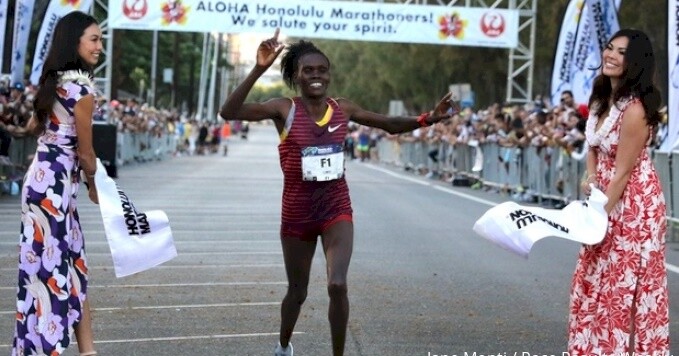
Indeed, the halfway point was reached in a modest 1:07:19. Chumba stepped off just before 25-K and moments later Lonyangata briefly surged ahead. The field came back to him within minutes, but as the course entered a less windy section, he made what would be the day’s decisive move. His pace quickened dramatically as he covered the 18th mile in 4:49. By 30-K (1:35:51) he had built a five-second lead over Kerio, with Ande another five seconds back. (Degu had dropped out some time after halfway, leaving only three men in the elite field.)
Lonyangata –who had finished second in his previous appearance in Honolulu in 2014, and owns a personal best of 2:06:10 from the 2017 Paris Marathon– continued to press the pace. Ande and Kerio were waging a back-and-forth duel for second place, and by 35-K, they were 21 seconds behind Lonyangata (1:52:14).
Lonyangata continued to look back for signs of danger, but a strong uphill surge as the course passed the Diamond Head volcanic crater for the second time kept him out of reach of his pursuers. “The hills you must run as hard as you can, you push uphill even if it’s hard,” he said.
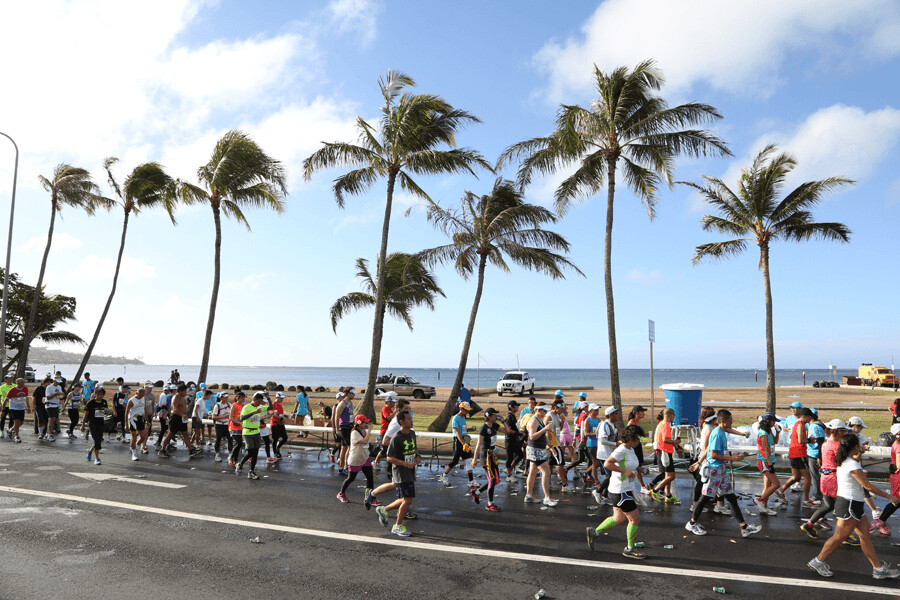
He crossed the finish line in Kapiolani Park in 2:15:42. “When you prepare for everything you know you are ready,” said Lonyangata, who was cleared to compete again on May 25 after serving a 19-month suspension for using a banned diuretic (the Honolulu Marathon has drug testing). “And when you decide when to make the move, you have to go hard.”
Ande made up some ground in the final miles, despite dealing with pain in his foot, and finished 19 seconds back in 2:16:01.
Kerio, who finished second here in 2018 and has served as the pacer four other times (including last year), came home third in 2:17:32.
In the women’s race, Limo was making her marathon debut, and decided to wait slightly longer to make her move. For the early going she ran alongside Ethiopians Sintayehu Tilahun Getahun and Kasu Bitew Lemeneh, who was running her fourth marathon of the year. They hit 5-K in 18:17, then picked up the pace slightly through 10-K (35:59). There was no change at halfway (1:16:43) and 30-K (1:50:05).
Finally, after the 30-K aid station, Lemeneh began to slip behind. Limo and Getahun forged ahead, running together for the next 5-K segment. Finally, at 35-K Limo started to pull away. By 40-K her lead ballooned to a minute and 38 seconds. She cruised home in 2:33:01, running the second half slightly faster than the first and finishing more than two minutes ahead of Tilahun (2:35:16).
“When we got to 35 kilometers, I felt that I was still strong and I knew it was only seven kilometers that remained, so I had to do it by myself,” said Limo, the 2016 World Athletics Half Marathon Championships silver medalist. “I tried to push and push. I am so pleased.”
In addition to the high mileage she logged in Kenya during her build-up to this race, she credited the speed she sharpened while competing in numerous American road races this year, including wins at the Cooper River Bridge Run 10-K in Charleston, South Carolina, the Carmel (Indiana) Half-Marathon, the Toledo (Ohio) Half-Marathon and Philadelphia’s Broad Street Run 10 Mile. “I can say that it was not really so hard to do the marathon,” she said. “It is a matter of making up your mind that you can do the training. And I am so happy that I did that.”
Bitew (2:36:04) held on for third, and Japan’s Yukari Abe, who finished tenth in her country’s Olympic trials in October, took fourth (2:47:32).
Lonyangata and Limo earned $25,000 for their victories, along with a flashy gold medal worth nearly $15,000. They both credited hearty support from fans along the course as well as the throngs of mass-race runners, who were going in the opposite direction on the out-and-back course. (One enthusiastic participant encouraged Lonyangata with an enthusiastic cheer of “Go get that money!”)
“The other runners were so good,” a smiling Limo noted. “They were cheering, they were making us move faster.”
There were 15,594 starters this year, up from 14,645 in 2022.
The companion Start to Park 10-K was run contemporaneously with the marathon, with 6,976 starters and 6961 finishers. Joshua Williams was the fastest athlete in 32:02, but not far behind him was Molly Seidel, the 2021 Olympic bronze medalist in the marathon. Seidel clocked 32:25 and was the fastest woman on the day. She, and training partner Jessa Hanson, were using the race as part of their humidity training for February’s U.S. Olympic Team Trials Marathon in Orlando, Florida.
“It’s so cool to come out and have the whole energy of the marathon around you,” said Seidel, who finished eighth at the Chicago Marathon two months ago. “This is such a fun vibe. I love to come out and race in Hawaii. Honestly, we wanted to get some good humidity racing, get a nice quicker tempo and then settle in. Coming out today was exactly what we needed. I love racing in humidity.”
by Steve Soprano
Login to leave a comment
Honolulu Marathon
The Honolulu Marathon’s scenic course includes spectacular ocean views alongside world-famous Waikiki Beach, and Diamond Head and Koko Head volcanic craters.The terrain is level except for short uphill grades around Diamond Head. ...
more...Two American men achieve the Olympic standard at Chicago Marathon
The American contingent was led by Conner Mantz, who finished sixth overall and ran a personal best of 2:07:47. His former BYU teammate Clayton Young placed seventh in 2:08:00. Both athletes dipped under the Olympic qualifying standard of 2:08:10.
Running his first marathon since the 2022 World Athletics Championships in Eugene, Oregon, Galen Rupp finished eighth in 2:08:48.
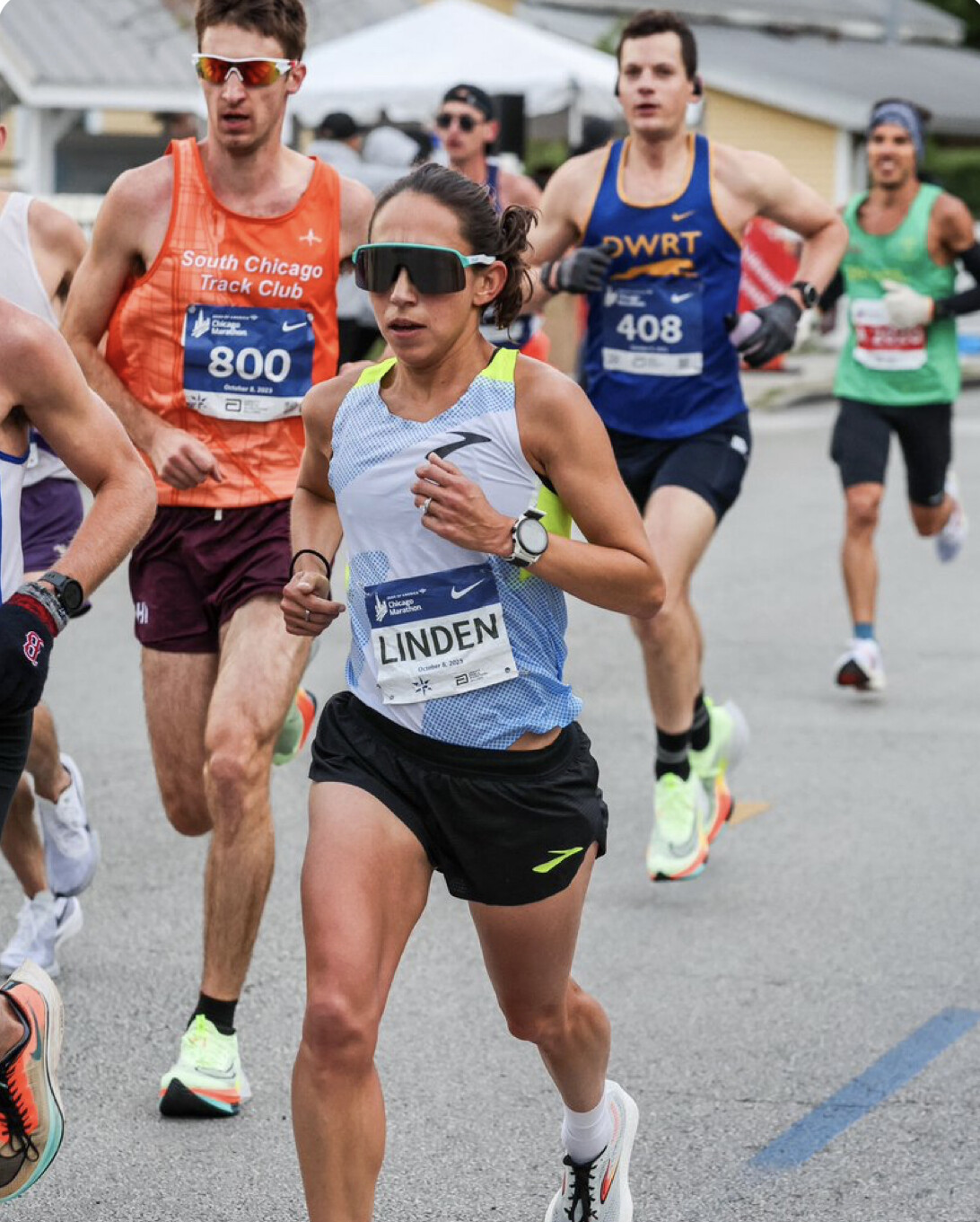
Three American women crack the top 10
A year after breaking the national record in Chicago, Emily Sisson returned as the top American with a seventh-place finish in 2:22:09. Olympic bronze medalist Molly Seidel finished eighth overall in 2:23:07, and Sara Vaughn placed 10th in 2:23:24.
After turning 40 in July, Des Linden broke the American masters record by running 2:27:35, beating the previous record (2:27:47) set by Deena Kastor.
Login to leave a comment
Bank of America Chicago
Running the Bank of America Chicago Marathon is the pinnacle of achievement for elite athletes and everyday runners alike. On race day, runners from all 50 states and more than 100 countries will set out to accomplish a personal dream by reaching the finish line in Grant Park. The Bank of America Chicago Marathon is known for its flat and...
more...Kiptum smashes world marathon record with 2:00:35, Hassan runs 2:13:44 in Chicago
Kenya’s Kelvin Kiptum became the first athlete to break 2:01 in a record-eligible marathon, clocking a tremendous 2:00:35* to take 34 seconds off the world record at the Bank of America Chicago Marathon on Sunday (8).
On a remarkable day of racing, Dutch star Sifan Hassan moved to No.2 on the women’s all-time list, running 2:13:44 to triumph in the World Athletics Platinum Label road race. The only woman to have ever gone faster is Ethiopia’s Tigist Assefa, who set a world record of 2:11:53 to win the BMW Berlin Marathon last month.
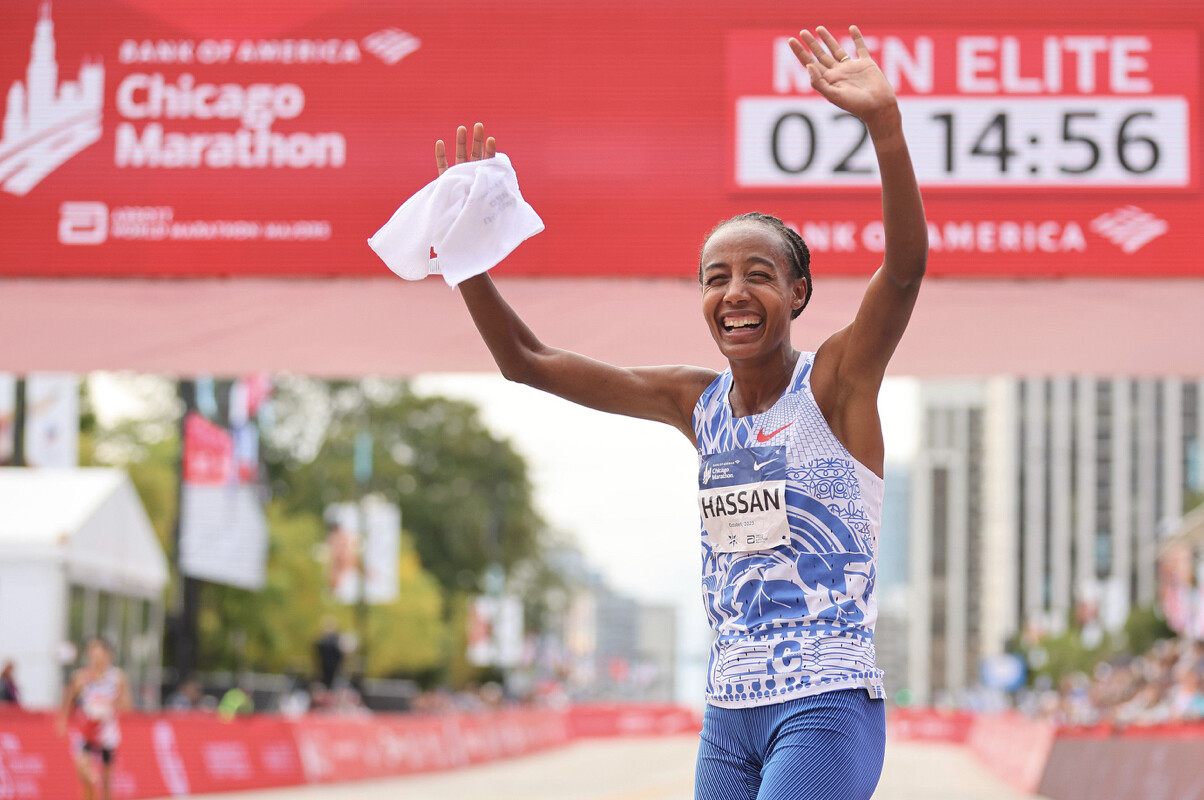
Less than six months on from his 2:01:25 London Marathon win, which saw him become the second-fastest marathon runner of all time, Kiptum improved by another 50 seconds to surpass the world record mark of 2:01:09 set by his compatriot Eliud Kipchoge in Berlin last year.
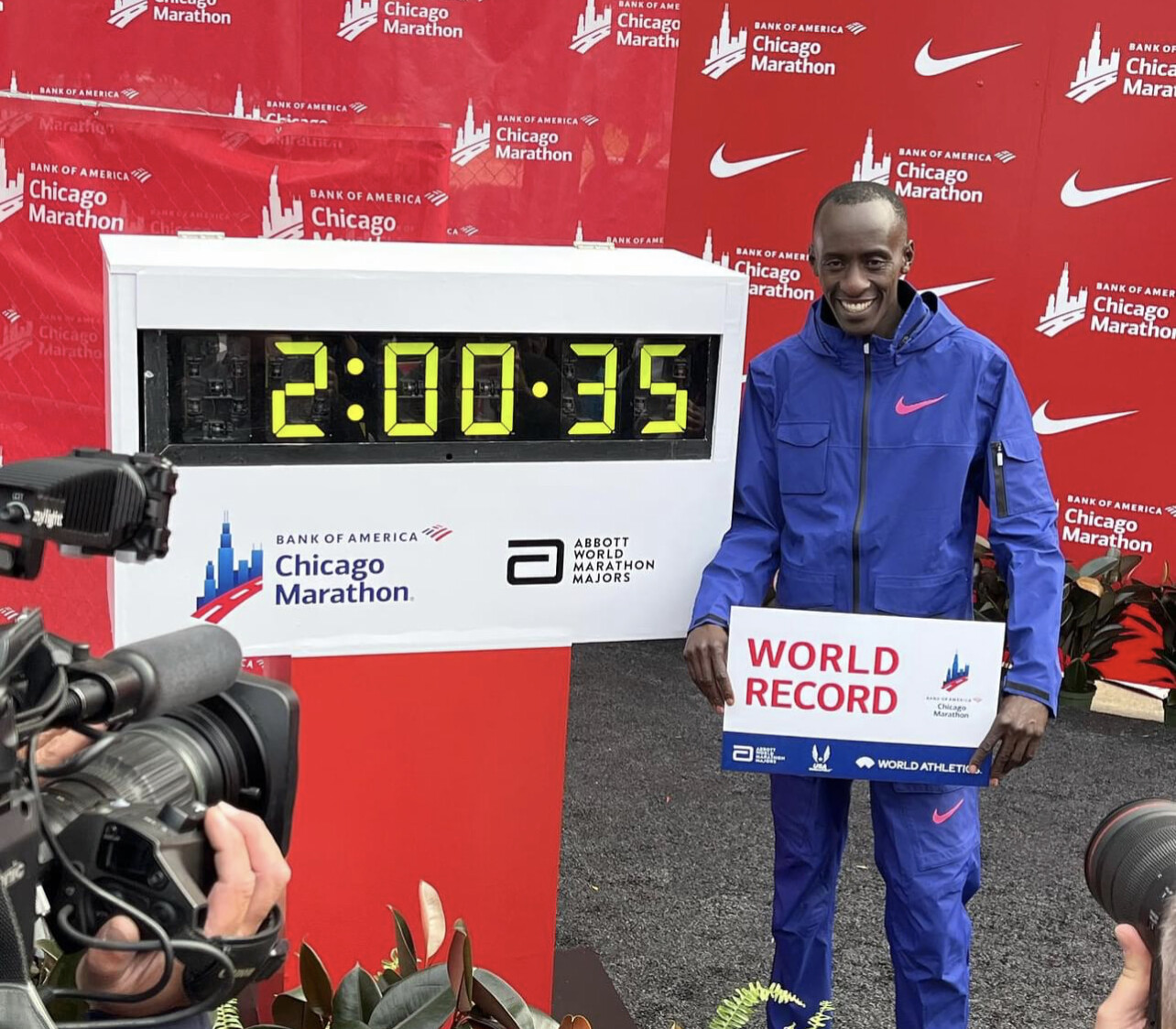
In the third marathon of his career, which began with a 2:01:53 debut in Valencia last December, Kiptum even had enough energy to celebrate his historic performance on the way to the finish line – pointing to the crowds and the tape on his approach.
The 23-year-old broke that tape in 2:00:35, winning the race by almost three and a half minutes. Defending champion Benson Kipruto was second in 2:04:02 and Bashir Abdi was third in 2:04:32.
Kiptum pushed the pace throughout the 26.2-mile race. He broke away from a seven-strong lead group after reaching 5km in 14:26, joined only by his compatriot Daniel Mateiko, who was making his marathon debut. They were on world record pace at 10km, passed in 28:42, but the tempo dropped a little from that point and they reached half way in 1:00:48.
Kiptum had been running in a hat but that came off as they entered the second half of the race. After 30km was passed in 1:26:31, Kiptum kicked and dropped Mateiko. He was glancing over his shoulder but running like he still had the world record – not only the win – in his sights.
A blistering 5km split of 13:51 took him to the 35km checkpoint in 1:40:22 and he was on sub-2:01 pace, 49 seconds ahead of Mateiko.
Continuing to run with urgency, he passed 40km in 1:54:23 – after a 27:52 10km split – and sped up further, storming over the finish line with the incredible figures of 2:00:35 on the clock.
"I knew I was coming for a course record, but a world record – I am so happy,” he said. “A world record was not on my mind today, but I knew one day I would be a world record-holder.”
Despite only having made his marathon debut 10 months ago, Kiptum now has three of the six fastest times in history to his name. Only Kipchoge (with 2:01:09 and 2:01:39) and Kenenisa Bekele (with 2:01:41) have ever gone faster than the slowest of Kiptum’s times.
Mateiko had helped to pace Kiptum to his 2:01:25 win in London, running to the 30km mark. The pair stayed together until that point in Chicago, too, but Mateiko couldn’t maintain the pace and dropped out after reaching 35km in 1:41:11.
Kenya’s Kipruto used his experience of the course to leave the chase group behind after 35km and was a comfortable runner-up in 2:04:02, finishing half a minute ahead of Belgium’s world and Olympic bronze medallist Abdi.
Kenya’s John Korir was fourth in 2:05:09, Ethiopia’s Seifu Tura fifth in 2:05:29 and USA’s Conner Mantz sixth in 2:07:47.
In the women’s race, Hassan returned to marathon action just six weeks on from a World Championships track medal double that saw her claim 1500m bronze and 5000m silver in Budapest.
She was up against a field including the defending champion Ruth Chepngetich of Kenya, who was on the hunt for a record third win in Chicago following her 2:14:18 victory last year.
It soon became apparent that it would be those two athletes challenging for the title. After going through 5km in 15:42 as part of a pack that also featured Kenya’s Joyciline Jepkosgei and Ethiopia’s Megertu Alemu and Ababel Yeshaneh, Chepngetich and Hassan broke away with a next 5km split of 15:23 and reached 10km in 31:05 – on pace to break the recently-set world record.
They ran a 10km split of 30:54 between 5km and 15km, that point passed in 46:36, and they maintained that world record pace to 20km, reached in 1:02:14.
Chepngetich had opened up a six-second gap by half way, clocking 1:05:42 to Hassan’s 1:05:48, but Hassan would have surely felt no concern. On her debut in London in April, after all, she closed a 25-second gap on the leaders despite stopping to stretch twice, and went on to win in 2:18:33.
In a race of superb depth, Alemu, Jepkosgei and Yeshaneh were still on 2:14:52 pace at that point as they hit half way together in 1:07:26.
Hassan soon rejoined Chepngetich at the front and they ran side by side through 25km in 1:18:06. Then it was Hassan’s turn to make a move. Unable to maintain the pace, Chepngetich had dropped 10 seconds behind by 30km, reached by Hassan in 1:34:00, and from there the win never looked in doubt. The Dutch athlete was half a minute ahead at 35km (1:50:17) and she had more than doubled that lead by 40km (2:06:36).
Hassan was on track to obliterate her PB and also the course record of 2:14:04 set by Brigid Kosgei in 2019, which had been the world record until Assefa’s 2:11:53 performance last month.
She held on to cross the finish line in 2:13:44, a European record by almost two minutes. With her latest performance, the versatile Hassan is now the second-fastest woman in history for the track mile, 10,000m and marathon.
"The first group took off at a crazy pace, but I wanted to join that group,” said Hassan. “The last five kilometres, I suffered. Wow – I won again in my second marathon in a fantastic time. I couldn't be happier.”
Behind her, Chepngetich held on for second place in 2:15:37 as the top four all finished under 2:18 – Alemu placing third in 2:17:09 and Jepkosgei finishing fourth in 2:17:23. Ethiopia’s Tadu Teshome was fifth in 2:20:04, her compatriot Genzebe Dibaba sixth in 2:21.47 and USA’s Emily Sisson seventh in 2:22:09.
Leading results
Women1 Sifan Hassan (NED) 2:13:44 2. Ruth Chepngetich (KEN) 2:15:37 3. Megertu Alemu (ETH) 2:17:09 4. Joyciline Jepkosgei (KEN) 2:17:235 Tadu Teshome (ETH) 2:20:046 Genzebe Dibaba (ETH) 2:21:477 Emily Sisson (USA) 2:22:098 Molly Seidel (USA) 2:23:079 Rose Harvey (GBR) 2:23:2110 Sara Vaughn (USA) 2:23:24
Men1 Kelvin Kiptum (KEN) 2:00:352 Benson Kipruto (KEN) 2:04:023 Bashir Abdi (BEL) 2:04:324 John Korir (KEN) 2:05:095 Seifu Tura (ETH) 2:05:296 Conner Mantz (USA) 2:07:477 Clayton Young (USA) 2:08:008 Galen Rupp (USA) 2:08:489 Samuel Chelanga (USA) 2:08:5010 Takashi Ichida (JPN) 2:08:57
by World Athletics
Login to leave a comment
Bank of America Chicago
Running the Bank of America Chicago Marathon is the pinnacle of achievement for elite athletes and everyday runners alike. On race day, runners from all 50 states and more than 100 countries will set out to accomplish a personal dream by reaching the finish line in Grant Park. The Bank of America Chicago Marathon is known for its flat and...
more...Molly Seidel Stunned the World (and Herself) with Olympic Bronze in Tokyo. Then Life Went Sideways.
She stunned the world (and herself) with Olympic bronze in Tokyo. Then life went sideways. How America’s unexpected marathon phenom is getting her body—and brain—back on track.
On a clear December night in 2019, Molly Seidel was at a rooftop holiday party in Boston, wearing a black velvet dress, doing what a lot of 25-year-olds do: passing a joint between friends, wondering what she was doing with her life.
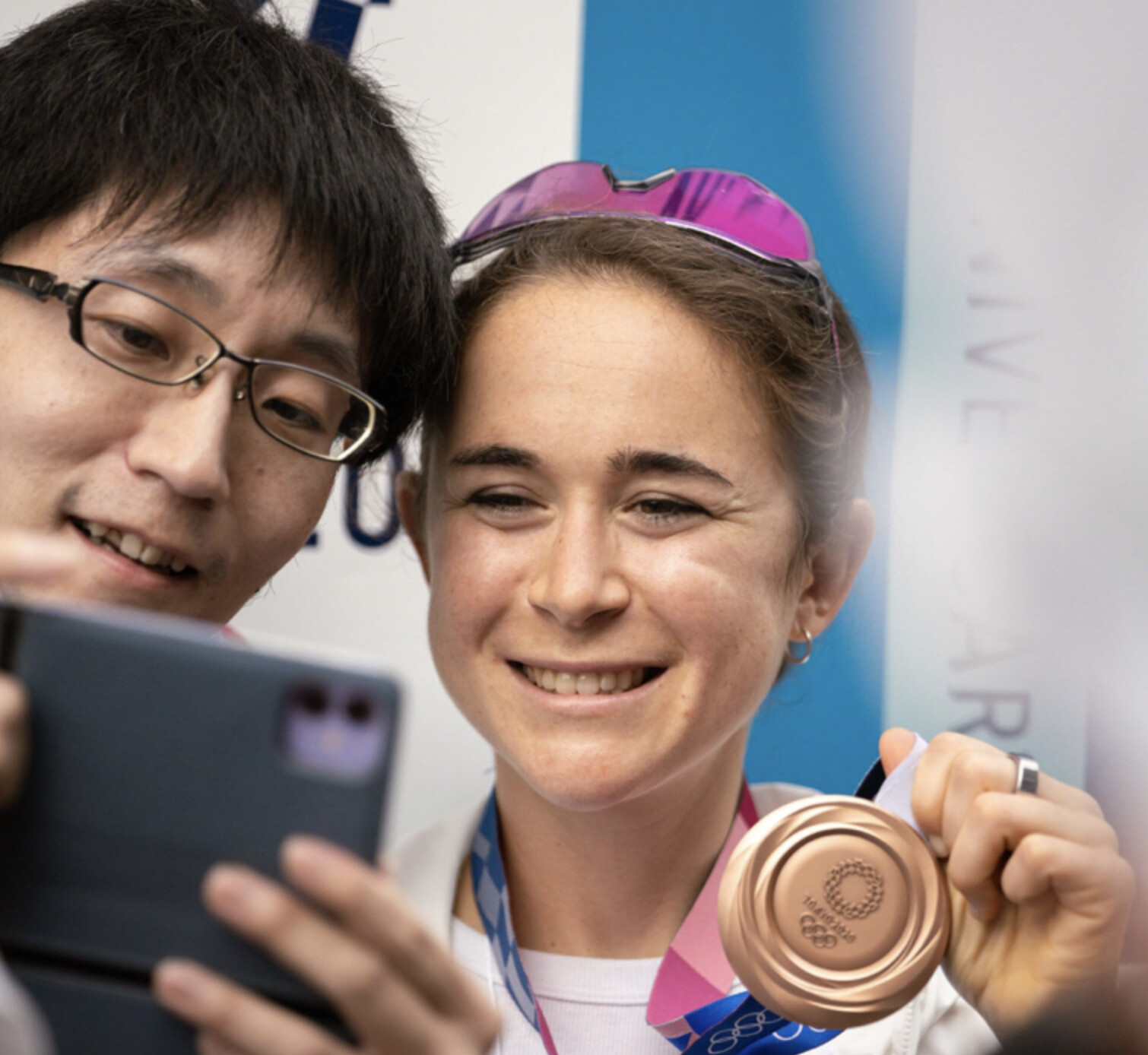
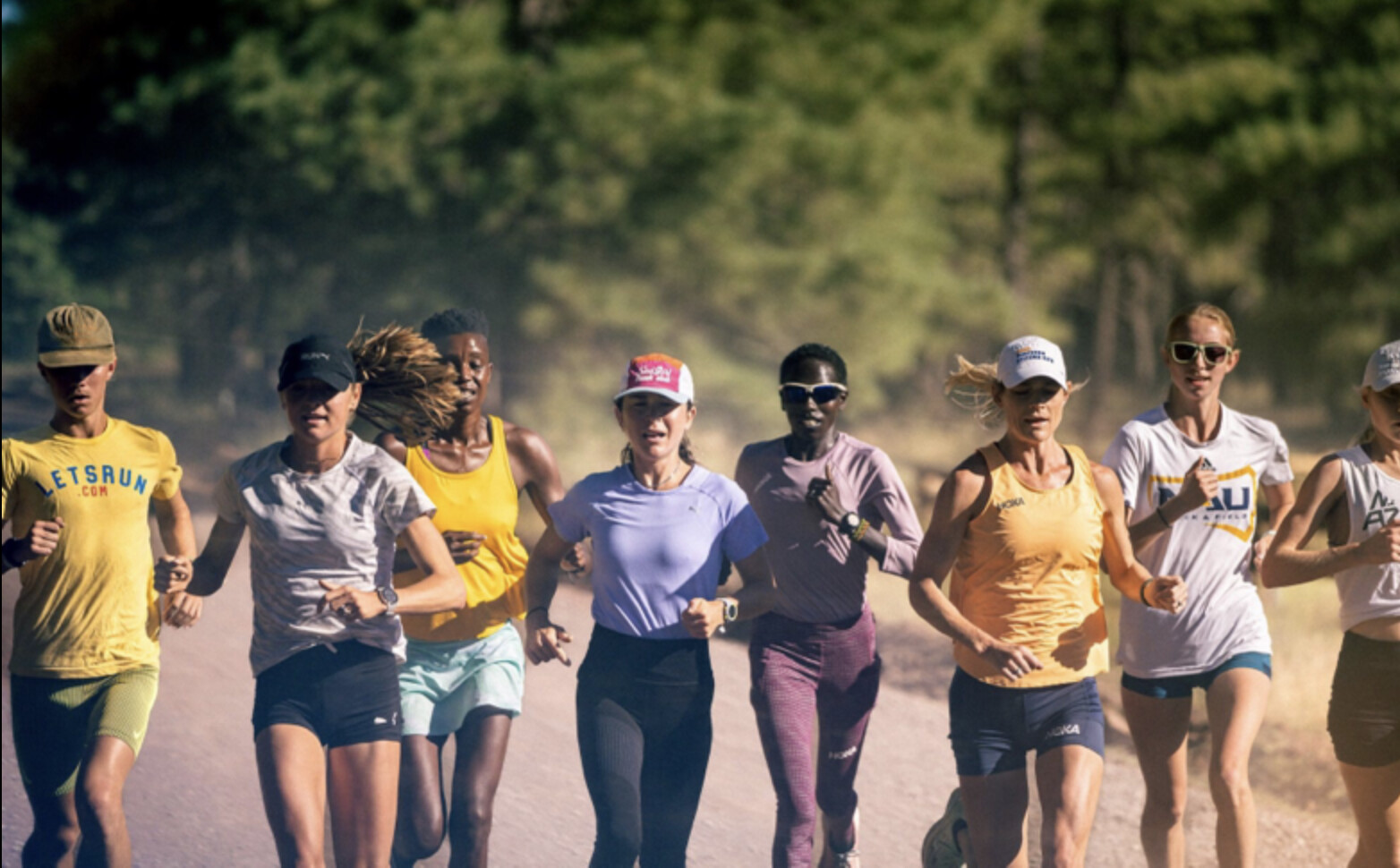
“You should run the Olympic Trials,” her sister, Izzy, said, as smoke swirled in the chilly air atop The Trackhouse, a retail shop and community hub on Newbury Street operated by the running brand Tracksmith. “That would be hilarious if you did that as your first marathon.”
Molly, an elite 10K racer who’d spent much of 2019 injured, looked out at the city lights, and laughed. Why the hell not? She’d just qualified for the trials, winning the San Antonio Half with a time of 1:10:27. (“The shock of the century,” as she’d put it.) True, 13.1 miles wasn’t 26.2—but running a marathon was something to do. If only because she never had before.
A four-time NCAA track and cross-country champion at The University of Notre Dame in Indiana, Molly had moved to Boston in 2017, where she’d worked three jobs to supplement her fourth: running for Saucony’s Freedom Track Club. The $34,000 a year that Saucony paid her (pre-tax, sans medical) didn’t go far in one of America’s most expensive cities. Chasing kids around as a babysitter, driving around as an Instacart shopper, and standing around eight hours a day as a barista—when you’re running 20 miles a day—wasn’t ideal. But whatever, she had compression socks. And she was downing free coffee and paying rent, flying to Flagstaff, Arizona, every so often for altitude camps, and having a good time. Doing what she loved. The only thing she’s ever wanted to do since she was a freckly fifth-grader in small-town Wisconsin clocking a six-minute mile in gym class.
“I was hustling, and I loved it. It was such a fun, cool time of my life,” she says, summarizing her 20s. Staring into Molly’s steely brown eyes, listening to her speak with such clarity and conviction about her struggles since, it’s easy to forget: She is still only 29.
After Molly had hip surgery on her birthday in July 2018, her doctors gave her a 50/50 chance of running professionally again. By summer 2019, she’d parted ways with FTC, which left her sobbing on the banks of the Charles River, getting eaten alive by mosquitoes and uncertainty. Her biggest achievement lately had been being named #2 Top Instacart Shopper (in Flagstaff; Boston was big-time).
The day after that rooftop party, Molly asked her friend and former FTC teammate Jon Green, who she’d newly anointed as her coach: “Think I should run the marathon trials?” Sure, he shrugged. Nothing to lose. Maybe it’d help her train for the 10K, her best shot—they both thought—at making a U.S. Olympic team.
“I’m going to get my ass kicked six ways to Sunday!” she told the host of the podcast Running On Om six weeks before the trials in Atlanta.
Instead, on February 29, 2020, she kicked some herself. Pushing past 448 of the fastest, most-experienced women marathoners in the country, coming in second with a 2:27:31, earning more in prize money ($60,000) than she had in two years of racing—and a spot on the U.S. trio for the 2020 Tokyo Olympics, along with Kenyan-born superstars Aliphine Tuliamuk and Sally Kipyego. “I don’t know what’s happening right now!” Molly kept saying into TV cameras, wrapped in an American flag, as stunned as a lottery winner.
Saucony who? Puma came calling. Along with something Molly hadn’t anticipated: the spotlight. An onslaught of social media followers. And two weeks later, a global pandemic and lockdown—and all the anxiety and isolation that came with it. She was drowning, and she hadn’t even landed in Tokyo yet.
The 2020 Olympics, as we all know, were postponed to 2021. An emotional burden but a physical boon for Molly, in that it allowed her to get in a second marathon. In London, she finished two minutes faster than her debut. When the Olympics finally rolled around, she was ready.
Before the race, Molly says, “I was thinking: ‘Once I cross the starting line, I get to call myself an Olympian and that’s a win for the day.’”
But then she crossed the finish line—with a finger-kiss to the sky and a guttural Yesss!—in third place with a 2:27:46, just 26 seconds behind first (Kenya’s Peres Jepchirchir). And realized: She gets to call herself an Olympic medalist forever. Only the third American woman to ever earn one in the marathon.
Lots of kids have fleeting hopes of making it to the Olympics. I remember thinking I could be Mary Lou Retton. Maybe FloJo, with shorter fingernails. Then I decided I’d rather be Madonna or president of the United States and promptly forgot about it. But Molly held tight to her Olympic aspirations. She still has a poster she made in 2004, with stickers and a snapshot of her smiley 10-year-old self, to prove it. “I wish I will make it into the Olympics and win a gold medal,” she wrote, and signed it: Molly Seidel, the “y” looping back to underline her name. In case there was any doubt as to who, specifically, would be winning the medal.
Molly grew up in Nashotah, Wisconsin, and is the eldest of three. Her sister and brother, younger by not quite two years, are twins. Izzy is a running influencer and corporate content creator for companies like Peloton; and Fritz favors Formula 1 racing and weightlifting and works for the family’s leather-tanning business. The family was active, sporty. Dad, Fritz Sr., was a ski racer in college; Mom, Anne, a cheerleader. You can tell. Watching clips of Molly’s mom and dad watching the Olympic race from their backyard patio, jumping up and down, tears streaming, is the kind of life-affirming moment you wish you could bottle. “I’m in shock. I’m in disbelief,” Molly says into the mic, beaming. “I just wanted to come out today and I don’t know…stick my nose where it didn’t belong and see what I could come away with. And I guess that’s a medal.” When the interviewer holds up her family on FaceTime, Molly breaks down. “We did it,” she says into the screen between sobs and smiles. “Please drink a beer for me.
Molly hasn’t always been unabashedly herself, even when everyone thought she was. A compartmentalizer to the core, she spent most of her life hiding a huge part of it: anorexia, bulimia, anxiety, obsessive-compulsive disorder, debilitating depression.
It started around age 11, when she learned to disguise OCD tendencies, like compulsively knocking on wood, silently reciting prayers “to avoid God getting mad at me,” she says. “It was a whole thing.” She says her parents were aware of the behaviors, but saw them more as odd little habits. “They had no reason to suspect anything. I was very high-functioning,” she says. “They didn’t realize that it was literally taking over my life.”
She wasn’t officially diagnosed with OCD until her freshman year of college, when she saw a therapist for the first time. At Notre Dame, disordered eating took hold, quietly yet visibly, as it does for up to 62 percent of female college athletes, according to the National Eating Disorders Association. As recently as the Tokyo Olympics, she was making herself throw up in the airport bathroom, mere days before taking the podium. Molly hesitates to share that detail; she fears a girl might read this and interpret it as behavior to model. “Having been in that place as a younger athlete, I know I would have,” she says. But she also understands: Most people just don’t get how unrelenting eating disorders can be.
In February 2022, she finally received a diagnosis of the root cause for all of it: ADHD. About being diagnosed, she says, “It made me feel really good, like [I don’t have] a million different disorders. I have a disorder that manifests itself in a lot of different symptoms.”
She waited to try Adderall until after the Boston Marathon in April, only to drop out at mile 16 due to a hip impingement. Initially, the meds made her feel fantastic. Focused. Free. Until she realized Adderall hurt more than it helped. She couldn’t sleep, couldn’t eat, lost too much weight. Within weeks, she devolved. “The eating disorder came roaring back,” she says, referring to it, as she often does, as its own entity, something that exists outside of herself. That ruthlessly takes control over her very need for control. “I almost think of it as an alter ego,” she explains. “Adderall was just bubblegum in the dam,” as she puts it. She ditched the drug, and her life—professionally, physically—unraveled.
In July 2022, heading into the World Championships, she bombed the mental health screening, answering the questions with brutal honesty. She’d been texting Keira D’Amato weeks prior. “Yo girl, things are pretty bad right now. Get ready…” Sobbing on the sidewalk in Eugene, Oregon, she texted D’Amato again. And the USATF made it official: D’Amato would take her spot on the team. Then Molly did what she’d been “putting off and putting off”— checked herself into eating disorder treatment for the second time since 2016, an outpatient program in Salt Lake City, where her new boyfriend was living at the time.
Somehow (see: expert compartmentalizer) mid-meltdown, in February 2022, she had met an amateur ultrarunner named Matt, on Hinge. A quiet, lanky photographer, he didn’t totally get what she did. “I didn’t understand the gravity of it,” he tells me. “I was like, Oh she’s a pro runner, that’s cool. I didn’t realize she was, like, the pro runner!”
Going back to treatment “was pretty terrible,” she says. At least she could stay with Matt. Hardly a honeymoon phase, but the new relationship held promise. “I laid it all out there,” says Molly. “And he was still here for it, for all the messiness. It was really meaningful.” And a mental shift. “He doesn’t see me as just Molly the Runner.”
Almost a year later, on a freezing April evening in Flagstaff, Molly is racing around Whole Foods, palming a head of cabbage, grabbing a thing of hummus, hunting for deals even though she doesn’t need to anymore.
“It’s all about speed, efficiency, and quality,” she says, explaining the secret to her earlier Instacart success. She checks the expiration date on a container of goat cheese and beelines for the butcher counter, scans it faster than an Epson DS3000, though not without calculation, and requests two tomato-and-mozzarella-stuffed chicken breasts. Then she darts over to the beverage aisle in her marshmallow-y Puma slip-ons that Matt custom-painted with orange poppies. She grabs a case of La Croix (tangerine), then zips to the checkout. We’re in and out in under 15 minutes and 50 bucks, nothing bruised or broken.
Other than her body. Let’s just say: If Molly were an avocado or a carton of eggs, she probably wouldn’t pass her own sniff test. The week we meet, she is just coming off a month of no running. Not a single mile. She’s used to running twice a day, 130 miles a week. No wonder she’s spraying her kitchen counter with Mrs. Meyer’s and scrubbing the stovetop within minutes of welcoming me into her new home.
The place, which she shares with Matt and his Australian border collie, Rye, has a post-college flophouse feel: a deep L-shaped couch draped in Pendleton blankets, a bar cluttered with bottles of discount wine, a floor lamp leaning like the Tower of Pisa next to a chew toy in the shape of a ranch dressing bottle. Scattered about, though, are reminders that an elite runner sleeps here. Or at least tries to. (“Pro runner by day, mild insomniac by night” reads the bio on her rarely used account on what used to be Twitter.) There’s a stick of Chafe Safe on the coffee table. Shalane Flanagan’s cookbooks on the counter. And framed in glass, propped on the office floor: Molly’s Olympic kit—blue racing briefs with the Nike Swoosh, a USA singlet, her once-sweat-drenched American flag, folded in a triangle. “I’m not sure where to hang it,” she says. “It seems a little ostentatious to have it in the living room.”
With long brown curls and a round, freckly face, Molly has an aw-shucks look so innocent that it’s hard, at first, to perceive her struggles. Flat-out ask her, though—How are you even functioning?—and she’ll tell you: “I’m an absolute wreck. There’s no worse feeling than being a pro runner who can’t run. You just feel fucking useless.” Tidying a stack of newspapers, she adds, “Don’t worry, I’ve had therapy today.”
She’s watched every show. (Save Ted Lasso, “too sickly sweet.”) Listened to every podcast. (Armchair Expert is a favorite.) She’s got nothing else to do but PT and go easy on the ElliptiGo in the garage, onto which she’s rigged a wooden bookstand, currently clipped with A History of God: The 4,000 Year Quest of Judaism, Christianity and Islam. “I don’t read running books,” she says. “I need something different.”
Like most runners—even the most amateur among us—running, moving, is what keeps her sane. “What about swimming? Can you at least swim?” I ask, projecting my own desperation if I were in her size 8.5 shoes. “I fucking hate swimming,” says Molly. Walking? “Oh, yeah, I can go on walks. Another. Long. Walk.”
The only thing she has on her schedule this week is pumping up a local middle school track team before their big meet. The invitation boosted her spirits. “Should I just memorize Miracle on Ice?” she says, laughing. “No, I know, I’ll do Independence Day.”
Injuries are nothing new for Molly. Par for the course for any professional athlete. But especially for women, like her, who lack bone density—and have since high school, when, according to a study in the Orthopedic Journal of Sports Medicine, nearly half of female runners experience period loss. Osteoporosis and its precursor, osteopenia, are rampant in female runners, leading to ongoing issues that threaten not just their college and professional running careers, but their lives.
Still, Molly admits, laughing: She’s especially accident-prone. I ask her to list every scratch she’s ever had, which takes her 10 minutes, and goes all the way back to babyhood, when she banged her head against the bathtub spout. There was a cracked spine from a sledding incident in 8th grade, a broken collarbone from a ski race in high school, shredded knee cartilage in college when a driver hit her while she was riding a bike. “Ribs are constantly breaking,” she says. In 2021, two snapped, and refused to heal in time for the New York City Marathon. No biggie. She ran through the pain with a 2:24:42, besting Deena Kastor’s 2008 time by more than a minute and setting the American course record.
Molly’s latest injury? Glute tear. “Literally a gigantic pain in the ass,” she posted on Instagram in March. Inside, Molly was devastated. Pulling out of the Nagoya Marathon—the night before her 6:45 a.m. flight to Japan, no less—was not in the plan. The plan, according to Coach Green, had been simple. It always is. If the two of them even have one. “Just to have fun and be consistent.” And get a marathon or two in before the Olympic Trials in February 2024.
She’d been finally—finally—fit on all fronts; ready to race, ready to return. She needed Nagoya. And then, nothing. “It feels like I’m back at the bottom of the well,” says Molly, driving home from Whole Foods in her Toyota 4Runner. “This last year-and-a-half has been so difficult. It’s just been a lot of doubt. How do I approach this, as someone who has now won a medal? Like, man, am I even relevant in this sport anymore?” She pops a piece of gum in her mouth. I wait for her to offer me some, because that’s what you do with gum, but she doesn’t. She’s so in her head. “It’s hard when you’re in the thick of it, you know, to figure out: Why the fuck do I keep doing this? When it just breaks my heart over and over and over again?”
We pull into her driveway. “I was prepared for the low period after Tokyo,” she says. “But this has been much longer and lower than I expected.”
The curse of making it to the Olympics, let alone coming back with a medal: expectations. Molly’s own were high. “I think I thought, after the Olympics, if I win a medal, then I will be fixed, it will fix everything.” Instead, in a way, it made everything worse.
That’s the problem that has plagued Molly for most of her running career: Her triumphs and troubles intermingle, like thunder and lightning. Which, by the way, she has been struck by. (A minor backyard-grill, summer-thunderstorm incident. She was fine.)
The next morning in Flagstaff, Molly’s feeling like she can run a mile, maybe two. It’s snowing, though, and she doesn’t want to risk the slippery track, so we meet at Campbell Mesa Trails. She loops a band around the back of her truck to stretch and sends me off into the trees to run alone while she does a couple of laps on the street.
Molly leaves for an acupuncture appointment, and we reunite later at Single Speed Coffee (“the best coffee in Flagstaff,” promises the ex-barista who drinks up to three cups a day). We curl up on a couch like it’s her living room, and she talks as freely—and as loudly—as if it was. Does she realize everyone can hear her? She doesn’t care. I guess that’s what happens when you’ve grown so comfortable sharing—in therapy, on podcasts, in a three-part video series on ADHD for WebMD—you just…share. Loud and proud.
Mental illness is so insidious, says Molly. “It’s not always this Sylvia Plath stick-my-head-in-a-fucking-oven thing, where you’re sad all the time,” she says. “High-functioning depressed people live normal successful lives. I can be having the happiest moment, and three days later I’m in a total downward spiral.” It’s something you never recover from, she says, but you learn to manage.
“I’m this incredibly flawed person who struggles so much. I think: How could I have won this thing when I’m so flawed? I look at all the people around me, all these accomplished people who have their shit together, and I’m like, ‘one of these things is not like the other,’” she says, taking a sip of her flat white. “I was literally in the Olympic Village thinking: Everybody is probably looking at me wondering: Why the hell is she here?”
They weren’t. They don’t. She knows that.
And yet her mind races as fast as she does. It takes up So. Much. Space. When she’s running, though, the noise disappears. She’s not Olympic Molly or Eating Disorder Molly, she’s not even, really, Runner Molly. “When I’m running,” she says, “I’m the most authentic version of myself.”
Talking helps, too. Molly first shared her mental health history a few years ago, “before she was famous,” as she puts it. After the Olympics, though, she kept talking and hasn’t stopped. The Tokyo Games were a turning point, she says. Suddenly the most revered athletes in the world were opening up about their mental health. Molly credits Simone Biles’s bravery for her own. If Biles, and Michael Phelps and Naomi Osaka, could come clean... then maybe a nerdy, niche-y, unlikely medaling marathoner could, too.
“Those guys got a lot more shit for it than I did,” says Molly. “I got off easy. I’m not a household name,” she laughs. She knows she can be candid and off the cuff—and chat freely in a not-empty café—in a way Biles never could. “I’m a nobody!” she laughs.
Still, a nobody with 232,000 Instagram followers whom she has touched in very IRL ways—becoming an unintentional poster woman for normalizing mental health challenges among athletes. “You are such an incredible inspiration,” @1percentpeterson posts, one comment of a zillion similar. “It’s ok to not be ok!” says another. Along with all the online love is, of course, online hate. Molly rattles off a few lowlights: “She’s an attention-seeking whore,” “Her bones are so brittle she’ll never race again,” “She’s running so badly and posting a lot she should really focus on her running more.” Molly finds it curious. “I’m like, ‘If you hate me, you don’t need to follow me, sir.’”
It’s Molly’s nobody-ness—what Outside writer Martin Fritz Huber called her “runner-next-door” persona, and I’ll just call “genuine personality”—that has made her somebody in running’s otherwise reserved circles.
Somebody who (gasp!) high-fives her sister in the middle of a major race, as she did at mile 18 of the 2021 New York City Marathon. “They shat on me in the broadcast for it,” she says. “They were like, ‘She’s not taking this seriously.’” (Except, uh, then she set the American course record, so…)
Somebody who, obviously, swears like a sailor and dances awkwardly on Instagram, who dresses up like a turkey, and viral-tweets about getting mansplained on an airplane. (“He starts telling me how I need to train high mileage & pulls up an analysis he’d made of a pro runner’s training on his phone. The pro runner was me. It was my training. Didn’t have the heart to tell him.”)
Somebody who makes every middle-aged mom-runner I know swoon like a Swiftie and say: “OMG! YOU HUNG OUT WITH MOLLY SEIDEL!!?” Middle-aged dad-runners, too. “I saw her once in Golden Gate Park!” my friend Dan fanboyed when he heard. “I waved!” Did she wave back? “She smiled,” he says, “while casually laying down 5:25s.”
And somebody who was as outraged as I was that I bought a $16 tube of French toothpaste from my hip Flagstaff motel. (It was 10 p.m.! It was all they had!) “For that price it better contain top-shelf cocaine,” she texted. Lest LetsRun commenters take that tidbit out of context: It’s a joke. It’s, in part, what makes Molly America’s most relatable pro runner: She’s not afraid to make jokes. (While we’re at it… Don’t knock her for smoking a little legal weed, either. That’s so 2009. Per the World Anti-Doping Agency: Cannabis is prohibited during competition, not at a Christmas party two months before it. Per Molly: “People would be shocked to know how many pro runners smoke weed.”)
I can’t believe I never asked to see it. Molly’s medal. A real, live Olympic medal. Maybe because it was tucked into a credenza along with Matt’s menorah and her maneki-neko cat figurines from Japan. But I think it was because hanging out with Molly felt so…normal, I almost forgot she’d won one.
People think elite distance runners have to be one-dimensional, she says. That they have to be sculpted, single-minded, running-only robots. “Because that’s what the sport has been,” she says.
Molly falls for it, too, she says. She scrolls the feeds, sees her fellow pros living seemingly perfect lives. She wants everyone to know: She’s not. So much so that she requested we not print the photos originally commissioned for this story, which were taken when she was at the lowest of lows. (“It’s been...refreshing...to be pretty open and real with Rachel [about] the challenges of the last year,” she wrote in an email to Runner’s World editors. “But the photos [were taken at] a time when I was really struggling and actively trying to hide how bad my eating disorder had become.”)
Molly finds the NYC Marathon high-five thing comical but indicative of a more serious issue in elite running: It takes itself too seriously. It’s too…elitist. Too stilted. “Running a marathon is a pretty freaking cool experience!” If you’re not having fun, she asks rhetorically, what’s the point? Still, she admits, she isn’t always having fun. Though you wouldn’t know it from her Instagram. “Oh, I’m very good at making it seem like I am,” she says.
She used to enjoy social media when it was just her friends. Before she gained 50,000 followers in a single day after the trials, and some 70,000 on Strava. Before the pandemic, before the Olympics. Keeping up with content became a toxic chore. “You feel like you’re just feeding this beast and it’s never going to stop,” she says. She’s taken to deleting the app off her phone, reloading it only to fulfill contractual agreements and post for her sponsors, then deleting it again.
As much as she hates having to post, she enjoys plugging products the only way that feels natural: through parody. As does Izzy, her influencer sister, who, like Molly, prefers to skewer rather than shill (à la their idea behind their joint Insta account: @sadgirltrackclub). “The classic influencer tropes make me want to throw up,” she says (perverse pun as a recovering bulimic not intended). “New Gear Drop!’ or ‘This is my Outfit of the Day!’ Cringe. “Hot Girl Instagram is not how I identify,” she says.
Nor is TikTok. “Sponsors tell me all the time: You should TikTok! I’m like, ‘I am not doing TikTok.’ I know how my brain works. They’ll say, ‘We’ll pay you less if you don’t’—and I’m, like, I don’t care.”
And to those sponsors who ghosted her after she returned to eating disorder treatment, good riddance. “Michelob dropped me like a bad habit,” she says. “Whatever. You have watery-ass beer anyway.”
To those who have stood by her, though, she’s utterly devoted. Pissed she couldn’t wear the Puma panther head to toe in Tokyo, Molly took off her Puma Deviate Elites and tied them over her shoulder, obscuring the Nike logo on her Olympic singlet for all the world to see. Or not see. “Nike isn’t paying my fucking bills.”
The love is mutual, says Erin Longin, a general manager at Puma. After decades backing legends like Usain Bolt, Puma was relaunching road running and wanted Molly as their guinea pig. “She’s a serious athlete and competitor, but she also has fun with it,” says Longin. “Running should be fun. Molly embodies that.” At their first meeting, in January 2020, Molly made them laugh and nerded out over their new shoes. “We all left there, fingers crossed she’d sign with us,” says Longin.
Come February, they all flipped out. Longin was watching the trials, not expecting much. And then: “We were all messaging, “OMG!!” Then Molly killed in London. Medaled in Tokyo. “What she did for us in that first year…” says Longin. “We couldn’t have planned it!”
Then came the second year, and the third, and throughout it all—injuries, eating disorder treatment, missed races, missed opportunities—Puma hasn’t flinched. “It’s easy for a company to do the right thing when everything is going great,” Molly posted in April, heartbroken from her couch instead of Heartbreak Hill. “But it’s when the sh*t hits the fan and they’re still right there with you….” She received 35,000 hearts—and a call from Longin: “You make me feel so proud.”
Does it matter to Puma if Molly never places—never races—again? “Nope,” Longin says.
My last afternoon in Flagstaff, it’s cloudy skies, still freezing. I find Molly on the high school track wearing neoprene gloves, black puffy coat, another pair of Pumas. Her breath is white, her cheeks red. Her legs churning in even, elegant strides. Upright, alone, at peace, backed by snow-dusted peaks. Running itself is what matters, not racing, she tells me. “I honestly don’t give a shit about winning,” she says. All she wants—really wants, she says—is to be healthy enough to run until she’s old and gray.
Molly’s favorite runner is one who didn’t get to grow old. Who made his mark decades before she was born: Steve Prefontaine. “Pre raced in such a genuine way. He made people feel something,” she says. “The sports performances you truly remember,” she adds, “are the ones where you see the struggle, the work, the realness.”
Sounds familiar. “I hate conversations like, ‘Who’s the GOAT?’” Molly continues. “Who fucking cares? Who’s got the story that’s going to get people excited? That’s going to make some kid want to go out and do it?”
I know one of those kids: My best friend’s daughter, Quinn, a rising track phenom in Oregon, who has dealt with anxiety and OCD tendencies. She has a picture of Molly Seidel, and her times, taped to her bedroom wall. This past May, Quinn joined Nike’s Bowerman Club. She was named Oregon Female Athlete of the Year Under 12 by USATF. She wants to run for Notre Dame.
“Quinn loves running more than anything,” her mom tells me, texting photos of her elated 11-year-old atop the podium. “But I don’t know…” She’s unsure about setting her daughter on this path. How could she not, though? It’s all Quinn wants to do. Maybe what Quinn, too, feels born to do.
It’ll be okay, I tell her, I hope. Quinn has something Molly never had: She has a Molly.
Molly and I catch up via phone in June. A team of doctors in Germany has overhauled her biomechanics. She’s been running 110 miles a week, feeling healthy, hopeful. Happy. A month later, severe anemia (and accompanying iron infusions) interrupts her summer racing schedule. She cancels the couple of 10Ks she had planned and entertains herself by popping into the UTMB Speedgoat Mountain Race: a 28K trail run through Utah’s Little Cottonwood Canyon—coming in second with a 3:49:58. Molly’s focus is on the Chicago Marathon, October 8th; her first major race in almost two years.
Does it matter how she does? Does it matter if she slays the Olympic Trials in February? If she makes it to Paris 2024? If she fulfills her childhood dream and brings home gold?
Nah. Not if—like Matt, like Puma, like, finally, even Molly herself—you see Molly the Runner for who she really is: Molly the Mere Mortal. She’s the imperfect one who puts it perfectly: What matters isn’t her time or place, how she performs on the pavement. Or social media posts. What matters—as a professional athlete, as a person—is how she makes people feel: human.
She’d been finally—finally—fit on all fronts; ready to race, ready to return. She needed Nagoya. And then, nothing. “It feels like I’m back at the bottom of the well,” says Molly, driving home from Whole Foods in her Toyota 4Runner. “This last year-and-a-half has been so difficult. It’s just been a lot of doubt. How do I approach this, as someone who has now won a medal? Like, man, am I even relevant in this sport anymore?” She pops a piece of gum in her mouth. I wait for her to offer me some, because that’s what you do with gum, but she doesn’t. She’s so in her head. “It’s hard when you’re in the thick of it, you know, to figure out: Why the fuck do I keep doing this? When it just breaks my heart over and over and over again?”
by Runner’s World
Login to leave a comment
The Road to the Paris Olympics and here is What You Need to Know.
American runners are about to begin training for the U.S. Olympic Trials Marathon
It’s early October, which means it’s the peak marathon season for many runners. But with an Olympic year on the horizon, it also means America’s top marathoners are about to hit the road to Paris.
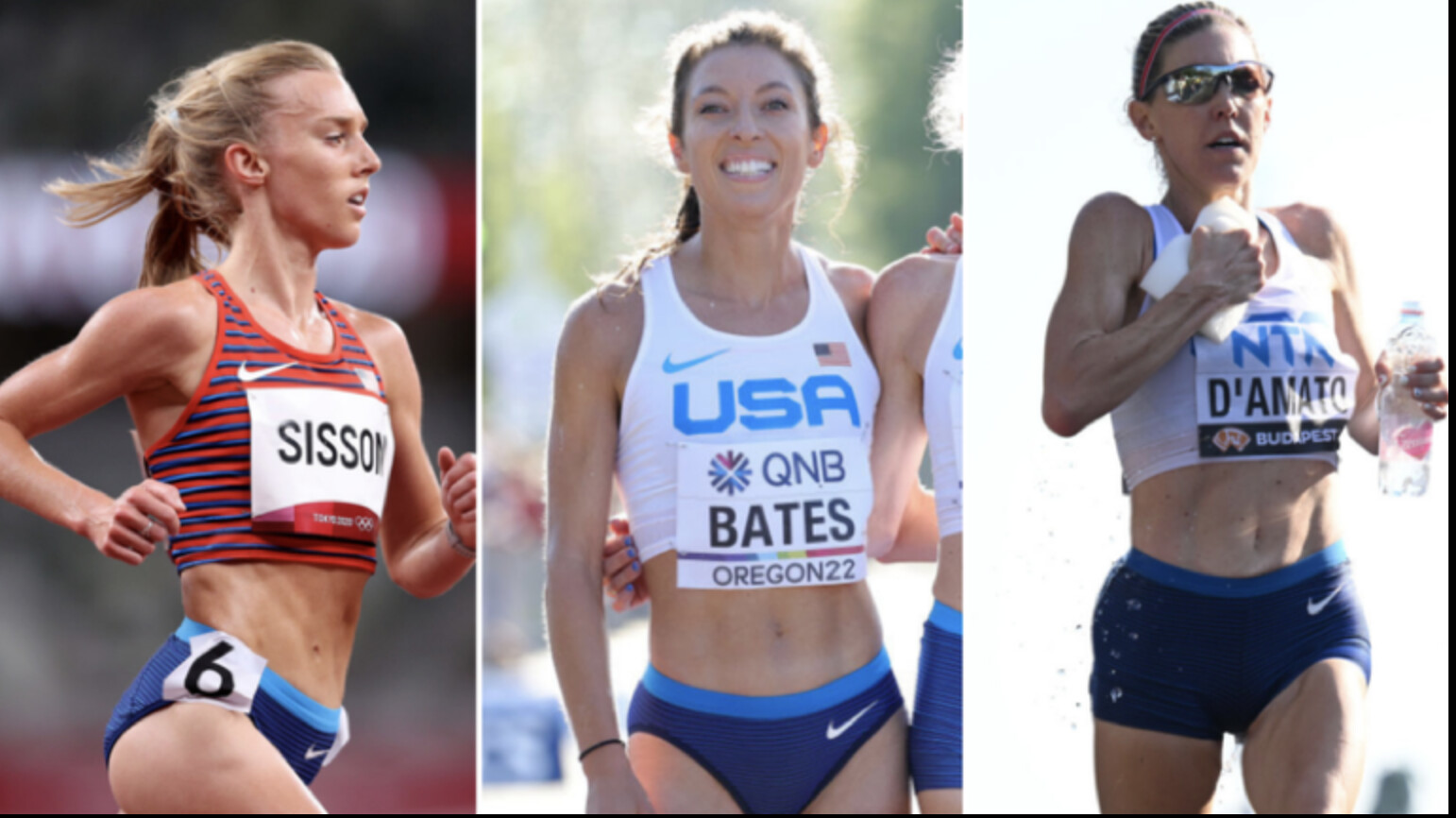
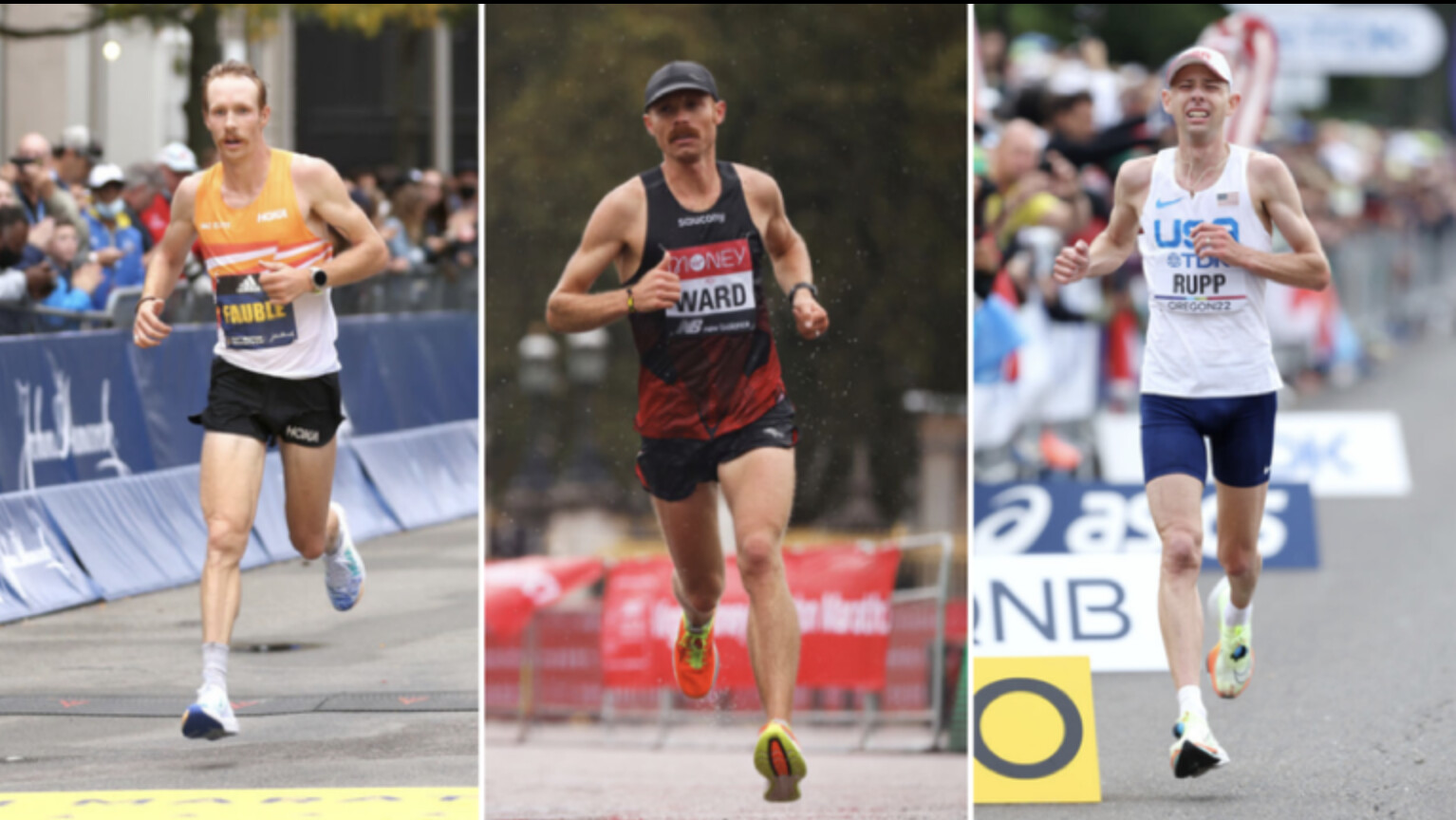
More specifically, the men’s and women’s 2024 U.S. Olympic Trials Marathon races—scheduled for February 3 in Orlando, Florida—are just four months away. And that means the top U.S. runners hoping to represent their country at next summer’s Olympics are about to begin preparing for the all-or-nothing qualifying race that decides which six runners will represent Team USA next summer on the streets of Paris.
Although several top American runners are racing the Chicago Marathon on October 8, even they have their eyes on a much bigger prize next February.
“There’s nothing in my mind that compares with being an Olympian and being in the Olympic Games,” says 26-year-old Utah-based Nike pro Conner Mantz, who returns to Chicago after finishing seventh last year in 2:08:16 in his debut at the distance. “So putting that first has been the plan for a long time. We’re just putting that first and we’re working backwards through the season with other races.”
Registration will open for the U.S. Olympic Trials Marathon in early November for runners who have surpassed the qualifying times in the marathon (2:18:00 for men, 2:37:00 for women) or half marathon (1:03:00 for men, 1:12:00 for women). The qualifying window extends through December 3—the race date of the last-chance California International Marathon, which for decades has been one of the most popular Olympic Trials qualifying races.
In 2020, a record 708 runners—465 women and 243 men—qualified for the U.S. Olympic Trials Marathon in Atlanta just before the onset of the Covid-19 pandemic. But USA Track & Field lowered the women’s qualifying standard by eight minutes from the more attainable 2:45:00 plateau, which means there will most likely be a much smaller women’s field this year.
But even so, amid the handful of runners who have a legitimate shot at making the Olympic team, there will also be dozens of dreamers, wannabes, and just-happy-to-be-there elite amateurs who have worked hard, put in the miles, and earned the chance to be on the start line of the deepest and most competitive U.S. distance-running races that only happen once every four years.
The men’s and women’s races will run simultaneously with the men beginning at 12:10 P.M. EST. and the women starting 10 minutes later. Runners have complained that a high noon start means they will be forced to race in hot, humid conditions. Over the past decade, the average temperature on February 3 in Orlando has been 69.6 degrees Fahrenheit at noon, rising to 73.3 at 4 PM. But actual temperatures have varied drastically, from 81 degrees Fahrenheit at 2 P.M. last year to 56 at the same time the year before. USATF officials have responded by saying that the start times are to accommodate live coverage on NBC and to match the expected conditions in Paris.
Here’s an update and overview of what’s next, who the top contenders are, the course, and what to expect in the next four months.
The 26.2-mile U.S. Olympic Trials course runs through downtown Orlando and consists of one 2.2-mile loop and three eight-mile loops. The marathon course will run through several neighborhoods, main streets, and business districts in Orlando, including Central Business District, City District, South Eola, Lake Eola Heights Historic District, Lake Cherokee Historic District, Lake Davis Greenwood, Lake Como, North Quarter, Lawsona/Fern Creek, SoDo District, and the Thornton Park neighborhood. It will then head east to and around The Milk District neighborhood and Main Street. (Notably, the course will come close to Disney World, which is about 15 miles to the southwest.)
Unlike the Olympic Marathon course in Paris, which will challenge runners with significant hills in the middle, the Orlando course is mostly flat. Each loop has a few minor variations in pitch, but only 38 feet separate the high and low points on the course. Ultimately, though, it’s a spectator-friendly route with chances for family, friends, and fans of runners to see the action several times.
The top women—based on personal best times and recent race results—are Emily Sisson, Emma Bates, Keira D’Amato, Betsy Saina, and Lindsay Flanagan. But the U.S. Olympic Trials races almost always produce surprises with a few great runners having off days and a few good runners having exceptional days, so there is reason to expect the unexpected.
Sisson lowered the American record to 2:18:29 last year when she finished second in the Chicago Marathon. She’s running Chicago again on October 8 along with Bates, who has said she’s hoping to break the American record. In January, Sisson, 31, chopped her own American record in the half marathon in Houston with a 1:06:52 effort, and most recently won the U.S. 20K Championships (1:06:09) on September 4 in New Haven, Connecticut. Bates, also 31, hasn’t raced at all since her sterling fifth-place effort at the Boston Marathon in April, when she slashed her personal best to 2:22:10.
While Chicago will be another good place to test themselves, both have unfinished business after Bates was seventh at the 2020 Trials and Sisson dropped out near the 21-mile mark.
The same goes for Flanagan, 32, who has been one of America’s best and most consistent marathoners for the past five years. She placed 12th at the trials in 2020. She had a breakthrough win (2:24:43) at the Gold Coast Marathon in 2022 followed by a strong, eighth-place finish (2:26:08) at the Tokyo Marathon earlier this year. In August, she ran perhaps the best race of her career, when she finished ninth (2:27:47) at the world championships in Budapest amid hot, humid conditions.
The 38-year-old D’Amato, meanwhile, just capped off another strong season with a 17th-place showing (2:31:35) at the World Athletics Championships in Budapest, a year after finishing eighth in the world championships and setting an American record 2:19:12 at the 2022 Houston Marathon. She was 15th at the Trials in 2020 in 2:34:24, just two years into her competitive return to the sport after having two kids and starting a career in real estate in her early 20s.
“It’s such a huge goal of mine to become an Olympian,” says D’Amato, who lowered Sisson’s U.S. record in the half marathon with a 1:06:39 effort at the Gold Coast Half Marathon on July 1 in Australia. “It’s really hard for me to put words into this because my whole life, wearing a Team USA jersey has been like a huge dream. And when I left the sport (temporarily), I felt like I said goodbye to that dream and I kind of mourned the loss of being able to represent my country. I feel like it’s the greatest honor in our sport to be able to wear our flag and race as hard as possible.”
Saina, a 35-year-old Kenya-born runner who ran collegiately for Iowa State University, became a U.S. citizen in late 2021. She placed fifth in the 10,000-meters at the 2016 Olympics in Rio de Janeiro while competing for Kenya. She’s spent the past several years splitting time between Kenya and Nashville, Tennessee, where she gave birth to a son, Kalya, in December 2021.
She’s returned with a strong fourth-place 1:11:40 result at the Tokyo Half Marathon last October and a fifth-place 2:21:40 showing at the Tokyo Marathon in February. In May, Saina won the U.S. 25K Championships in Michigan. Two weeks ago she broke the tape at the Blackmores Sydney Marathon in Australia in 2:26:47.
Other top contenders include but are not limited to Tokyo Olympics bronze medalist Molly Seidel (who’s personal best is 2:24:42), 2022 U.S. Olympic Trials champion Aliphine Tuliamuk (2:24:37, 11th in Boston this year), Susanna Sullivan (2:24:27 personal best, 10th in London this year), two-time Olympian and 2018 Boston Marathon winner Des Linden (2:22:38), and Sara Hall (2:20:32, fifth at last year’s world championships), plus Kellyn Taylor (2:24:29), Nell Rojas (2:24:51), Sarah Sellers (2:25:43), Lauren Paquette (2:25:56), Dakotah Lindwurm (2:25:01), Annie Frisbie (2:26:18), Sara Vaughn (2:26:23), Tristin Van Ord (2:27:07), and Jacqueline Gaughan (2:27:08).
The list of potential men’s top contenders isn’t as clear-cut, partially because there are so many sub-2:11 runners and several fast runners who are relatively new to the marathon. But all that suggests a wide-open men’s race where more than a dozen runners are legitimately in the mix for the three Olympic team spots. That said, the top runners on paper, based on both time and consistent results over the past few years, are Scott Fauble, Jared Ward, Galen Rupp, Conner Mantz, Leonard Korir, Matt McDonald, and C.J. Albertson.
The 31-year-old Fauble, who was 12th in the Olympic Trials in 2020 and owns a 2:08:52 personal best, has finished seventh in the Boston Marathon three times since 2019 and also finished seventh in the New York City Marathon in 2018. Ward is a 2016 U.S. Olympian and has three top-10 finishes at the New York City Marathon and a 2:09:25 personal best from Boston in 2019. He’s 35, but he just ran a 2:11:44 (27th place) at the Berlin Marathon in late September.
Rupp, who won the past two U.S. Olympic Trials Marathons and earned the bronze medal in the marathon at the 2016 Olympics, is nearing the end of his competitive career. He boasts a 2:06:07 personal best and has run under 2:10 more than any American in history, including when he finished 19th at the world championships (2:09:36) last year. He’s a bit of a wild card because he’s 37 and hasn’t raced since his lackluster 17th-place showing at the NYC Half Marathon (1:04:57) in March, but the world will get a glimpse of his fitness in Chicago this weekend.
Mantz followed up his solid debut in Chicago last fall with a good Boston Marathon in April (11th, 2:10:25) and solid racing on the track and roads all year, including his recent runner-up showings at the Beach to Beacon 10K in August and the U.S. 20K Championships in September.
McDonald, 30, who was 10th in the 2020 U.S. Olympic Trials, has quietly become one of the best marathoners in the U.S. while serving as a postdoctoral associate in chemical engineering at M.I.T. His last three races have clocked in at 2:10:35 (Boston 2022), 2:09:49 (Chicago 2022), and 2:10:17 (Boston 2023). The only other runner who rivals that kind of consistency is Albertson, 29, who has run 2:10:23 (Boston 2022), 2:10:52 (Grandma’s Marathon 2022) and 2:10:33 (Boston 2022) in his past three marathons and was seventh in the U.S. Olympic Trials in 2020 (2:11:49).
The men’s race will likely have a mix of veteran runners and newcomers who have run in the 2:09 to 2:10 range since 2022. Among those are 2020 U.S. Olympic Trials runner-up Jake Riley (2:10:02 personal best), who is returning from double Achilles surgery; 2016 U.S. 10,000-meter Olympian Leonard Korir (2:07:56), who ran a 2:09:31 in Paris in April; Zach Panning (2:09:28, plus 13th at the world championships in August); U.S. 25K record-holder Parker Stinson (2:10.53); Futsum Zienasellassie who won the California International Marathon last December in his debut (2:11:01) and then doubled-back with a new personal best (2:09:40) at the Rotterdam Marathon in the spring; Abbabiya Simbassa, who ran a solid debut marathon (2:10:34) in Prague this spring; and Eritrean-born Daniel Mesfun (2:10:06) and Ethiopian-born Teshome Mekonen (2:10:16), who both received U.S. citizenship within the past year; and solid veterans Nico Montanez (2:09:55), Elkanah Kibet (2:10:43) and Nathan Martin (2:10:45).
Additional sub-2:12 runners who will be in the mix are Andrew Colley (2:11:26), Clayton Young (2:11:51), Brendan Gregg (2:11:21), Josh Izewski (2:11:26), Jacob Thompson (2:11:40), and Kevin Salvano (2:11:49).
As noted previously, some top contenders will season their marathon legs one final time at the flat and fast Chicago Marathon on October 8. An even more select few will opt for the New York City Marathon on November 5. After that, nearly every American with eyes set on an Olympic berth will double-down over the holiday season for that one final, critical marathon training cycle. Expect to see a wide range in heat training, from sauna protocols, to warm weather training trips, to simply an adjusted race day strategy.
Of course, with the Olympic Marathon falling under the purview of World Athletics, qualifying for the U.S. Olympic Marathon team is not quite as simple as finishing on the podium in Orlando. Any American looking to have a breakout performance and finish within the top three at the U.S. Olympic Trials Marathon will need to have run under 2:11:30 for men and 2:29:30 for women within the qualification window, which spans from November 1, 2022 to April 30, 2024. Given the possibility of oppressively hot and humid temps on February 3 in Orlando, they’re best bet is to secure that time now.
These qualification standards are in accordance with a new rule from World Athletics, which allows national Olympic committees to circumvent the typical Olympic qualification process of running under 2:08:10 for men and 2:26:50 for women, or being ranked among the top 65 in the world on a filtered list of the top three athletes from each country. The catch, though, is that three other runners from said country must have met one of these two standards. If this sounds complicated, that’s because it is.
For the hundreds of elite amateurs on the cusp of hitting that coveted U.S. Olympic Trials qualifying time, it’s do or die mode. While a few made the cut at the Berlin Marathon on September 24, one of those opportunities was lost when the Twin Cities Marathon was canceled on October 1 because of excessive heat. Temperatures are shaping up for an auspicious day in Chicago this weekend, and many more will give it a final shot at the Columbus Marathon on October 15; Indianapolis Monumental Marathon on October 28; the Philadelphia Marathon on November 18; and the last-call California International Marathon, a point-to-point race ending in Sacramento, California on December 3.
Ultimately, only six American runners will likely continue on along the road to Paris and earn the chance to run in the men’s and women’s Olympic marathons next August 10-11. For a handful of younger runners, the 2024 U.S. Olympic Trials will be a motivation to reinvigorate the Olympic dream or keep a faint hope alive, at least until the 2028 U.S. Olympic Trials that will determine the team for the Los Angeles Olympics. But for many runners, the journey to the U.S. Olympic Trials in Orlando will lead to the end of their competitive road running careers as new jobs, young families, a switch to trail running, and other priorities will take hold.
“I think the Olympic Trials is an important part of American distance running,” says Kurt Roeser, 36, a two-time U.S. Olympic Trials Marathon qualifier who works full-time as a physical therapist in Boulder, Colorado. “I’m glad that they kept it the same event for this cycle and hopefully for future cycles because it gives people like me a reason to keep training. I’m older now and I’m not going to actually have a chance to make an Olympic team, but for somebody that’s fresh out out of college and maybe they just barely squeak in under the qualifying time, maybe that’s the catalyst they need to start training more seriously through the next cycle. And maybe four years from now, they are a serious factor for making the team.”
by Outside Online
Login to leave a comment
Stacy Ndiwa debuts World Marathon Majors in Chicago
Seven months after winning the Los Angeles Marathon, Stacy Ndiwa will be returning to American soil in search of her first World Marathon Majors title at the Chicago Marathon on October 8.
The former Commonwealth Games 10,000m silver medalist, will be up against top marathon runners across the world led by the defending champion Ruth Chepngetich.
Chepngetich has a personal best of 2:14:18. Another Kenyan Joyciline Jepkosgei (2:17:43) will also be competing.
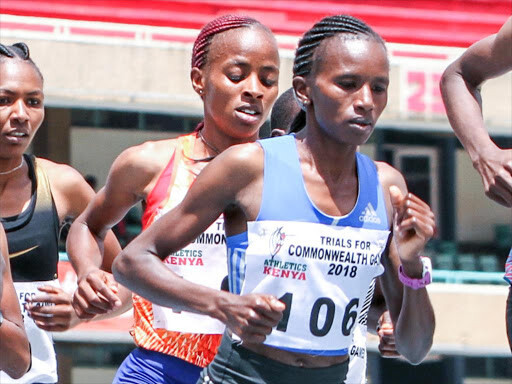
Ndiwa, who is now training in Iten, said her preparations are in top gear and she is hoping to return good results.
“This will be my first time to compete in World Marathon Majors and I am ready for the world,” she said.
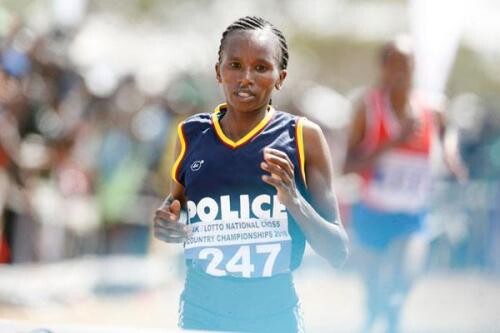
The former Africa 10,000m champion made her debut in the 42km race last year, placing fourth at the Istanbul Marathon in 2:31.53 and went ahead to win the Los Angeles Marathon in 2:31.00 in March last year.
In May, Ndiwa won the second edition of the Iten 15km Road race and went ahead to finish second at the Boston 10km in 31:25 behind champion Hellen Obiri (32:21) with Sheila Chepkirui (31:27) third in an all-podium Kenyan sweep.
“This time, I have had a very busy schedule and I need to crown it all by posting better results in Chicago,” said the athlete who compete for the National Police Service.
“This will be an avenue for me to enter into the big marathon big league. Competing at the World Majors Marathon is not a walk in the park and I really need to work hard,” she said.
Others in the race will be the Ethiopian quartet of Genzebe Dibaba (2:18:05), Tigist Girma (2:18:52), Sutume Kebede (2:18:12) and Ababel Yesheneh (2:20:51).
Emily Sisson (2:18:29) will lead the home team consisting of Des Linden (2:22:38), Emma Bates (2:23:18), Aliphine Tuliamuk (2:24:37), Nell Rojas (2:24:51), Molly Seidel (2:24:42), Dakotah Lindwurm (2:25:01), Sara Vaughn (2:26:23), Gabriella Rooker ( 2:27:38), Diane Nukuri (2:27:50) and Maggie Montoya (2:28:07).
Reigning London Marathon champion Sifan Hassan (2:18:33) from the Netherlands will also be in the contest.
by Emmanuel Sabuni
Login to leave a comment
Bank of America Chicago
Running the Bank of America Chicago Marathon is the pinnacle of achievement for elite athletes and everyday runners alike. On race day, runners from all 50 states and more than 100 countries will set out to accomplish a personal dream by reaching the finish line in Grant Park. The Bank of America Chicago Marathon is known for its flat and...
more...World class racing returns to Boston on Sunday with the BAA 10K
The BAA 10K is this Sunday in Boston. The elites—as well as a mass field of nearly 10,000 runners—will race through the streets of the Back Bay neighborhood.
Emily Sisson has her eyes on another American record; she’s been on a tear the past year on the roads. In October, at the 2022 Chicago Marathon, she took 43 seconds off Keira D’Amato’s American record, running 2:18:29 for second place. Three months later, at the Houston Half Marathon, she broke her own American record, crossing the line in 1:06:52. She’s setting her sights on Shalane Flanagan’s 10K record of 30:52, which Flanagan set at the 2016 edition of the BAA 10K.
Also toeing the line is Molly Seidel, who’s been running some shorter races to prepare for a fall marathon. In February, she finished eighth at the U.S. Half Marathon Championships in 1:13:08.
A slew of former Boston Marathon champions are also competing on Sunday. Hellen Obiri, who won April’s race, will line up next to two-time champion Edna Kiplagat and 2015 winner Caroline Rotich. The course record of 30:36 could be up for grabs.
The men’s field is highlighted by 2021 Boston Marathon champion Benson Kipruto, who won the BAA 10K in 2018. American Leonard Korir returns as the race’s reigning champion, taking last year’s win in 28:00—12 seconds off the American record of 27:48 that has stood since 1985. Gabriel Geay, Geoffrey Koech, and Tsegay Kidanu should also be in contention.
Those in the Boston area can catch coverage of the race on WCVB. The BAA Racing App will also provide live updates and results, but there is no stream of the race. The elites are scheduled to start at 8 a.m. ET.
by Runner's World
Login to leave a comment
B.A.A. 10K
The 6.2-mile course is a scenic tour through Boston's Back Bay. Notable neighborhoods and attractions include the legendary Bull and Finch Pub, after which the television series "Cheers" was developed, the campus of Boston University, and trendy Kenmore Square. ...
more...Boston champions and U.S. record holders return for 2023 B.A.A. 10K
The Boston Athletic Association (B.A.A.) has announced professional fields for the 2023 B.A.A. 10K presented by Brigham and Women’s Hospital, to be run on Sunday, June 25 through Back Bay. Among the challengers set to compete are Boston Marathon champions Hellen Obiri (2023) and Benson Kipruto (2021), defending B.A.A. 10K winner Leonard Korir, as well as national record holder Emily Sisson. Complete field lists can be found below.
The B.A.A. 10K presented by Brigham and Women’s Hospital will be the second event of the 2023 B.A.A. Distance Medley, a year-long series featuring the B.A.A. 5K (April), B.A.A. 10K (June), and B.A.A. Half Marathon (November). Registration remains open with limited spots remaining.
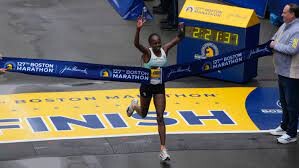
“Many fan favorites and global stars return to Boston for this year’s B.A.A. 10K, including Boston Marathoners, American record holders, Olympians and Paralympians,” said Mary Kate Shea, Director of Professional Athletes for the B.A.A. “The B.A.A. 10K course is flat, fast, and –most importantly—fun for our top contenders. We look forward to kicking off summer with a memorable competition on June 25.”
Obiri, a two-time Olympic silver medalist, won April’s Boston Marathon in her Boston debut, and will return to the roads hoping to extend her winning streak. Her 30:15 personal best at 10K is fourth fastest among the field, only trailing Sheila Chepkirui (Kenya, 29:46), Vicoty Chepngeno (Kenya, 30:14), and Joan Chelimo Melly (Romania, 30:14). Chelimo Melly won the B.A.A. 10K in 2017, while Chepkirui placed fourth at last month’s TCS London Marathon.
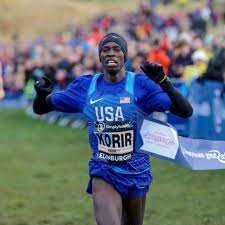
Korir, the reigning B.A.A. 10K champion, is fresh off a win at the USA 25K National Championships on May 13, and looks to become the fourth man to win back-to-back B.A.A. 10Ks. Sisson, the current American record holder in the marathon and half marathon also will return, joined by Olympic Marathon bronze medalist and former Boston resident Molly Seidel.
Among the international field squaring off are Boston Marathon winners Kipruto (2021), Edna Kiplagat (2017 and 2021), and Caroline Rotich (2015), all of Kenya. Gabriel Geay (Tanzania) will return after a runner-up finish at April’s Boston Marathon, and previously won the B.A.A. 10K in 2018.
Geoffrey Koech, winner of last year’s B.A.A. Half Marathon, will compete, as will Callum Hawkins of Great Britain, twice the fourth-place finisher at the World Championships marathon, plus decorated road racers Edward Cheserek (Kenya), a 17-time NCAA champion, and Zouhair Talbi (Morocco), most recently fifth at the Boston Marathon. From Team B.A.A. are Matt McDonald, Paul Hogan, Jonas Hampton, and Eric Hamer.
Mary Ngugi of Kenya, a two-time B.A.A. 10K winner and two-time Boston Marathon podium finisher, will aim for title number three, as fellow Kenyan Sharon Lokedi, the 2022 TCS New York City Marathon champion, looks for her first B.A.A. event victory. Team B.A.A.’s Annie Rodenfels, third place and top American at the 2023 B.A.A. 5K, will make her debut at the 10K distance leading a full contingent of Boston-based B.A.A. teammates including Bethany Hasz, Megan Hasz, and Jenna Magness.
Hermin Garic, the 2022 B.A.A. 10K winner, returns in the men’s wheelchair division, while Yen Hoang, third place at the 2021 Boston Marathon, leads the women’s wheelchair division. Brian Reynolds and Liz Willis will compete in the T61-64 (lower-limb impairment) division having already earned podium placings at the Boston Marathon in April. Reynolds, a Massachusetts native, set a world best 1:25:46 at the 2022 B.A.A. Half Marathon. Local Para athlete and last year’s T61-64 women’s winner, Adrianne Haslet, will also compete. Additional 2023 Boston Marathon Para division winners Andrew Thorson (T11-T13 vision impairment) and Atsbha Gebre (T45/T46 upper-limb impairment) are racing. The B.A.A. 10K presented by Brigham and Women’s Hospital has been certified by World Para Athletics as a record-eligible competition, paving the way for Para Athletes to set world and national records this year.
Media members interested in covering the B.A.A. 10K, presented by Brigham and Women’s Hospital, may apply for credentials here.
Registration for the 2023 B.A.A. 10K presented by Brigham and Women’s Hospital, is currently open through the B.A.A.’s online platform Athletes’ Village. All participants who enter will receive an adidas participant shirt, unique bib number, and finisher medal. Additional participant information can be found on baa.org. The race will start at 8:00 a.m. ET on Sunday, June 25 on Charles Street adjacent to Boston Common and Boston Public Garden.
Brigham and Women's Hospital, the B.A.A. 10K’s presenting sponsor and exclusive fundraising partner, will again field a team of fundraising runners. Since 2016, more than 2,100 runners and 180 teams have raised $1.2 million to fuel life-giving breakthroughs at Brigham and Women’s Hospital. Learn more and register at www.runbwh.org/10k.
Login to leave a comment
B.A.A. 10K
The 6.2-mile course is a scenic tour through Boston's Back Bay. Notable neighborhoods and attractions include the legendary Bull and Finch Pub, after which the television series "Cheers" was developed, the campus of Boston University, and trendy Kenmore Square. ...
more...Who Will Run the World Championships Marathon for the U.S. This Summer?
The three men and three women are selected by a descending order time list. But not everyone accepts their spot. Over 9 days in August, the World Athletics Championships will take place in Budapest, Hungary. The women’s marathon is scheduled for August 26, and the men’s is August 27, the last day of competition.
USA Track and Field (USATF) uses different selection procedures for this event than it does for the Olympic Games. Instead of using a Trials race, as it does for the Olympics, USATF offers spots to athletes using a descending order time list for certain marathons run between December 1, 2021, and May 30, 2023, as long as those athletes have met the qualifying criteria set by World Athletics. (The rules are complicated. For instance, the Boston Marathon is not on the list of “World Athletics approved” courses, but USATF is allowing times run at Boston in 2022 and 2023 for the descending order list.)
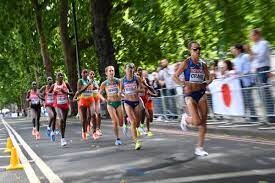
Not every American athlete will accept a spot, if offered. Some instead will choose to focus on a fall marathon, where they can earn substantial appearance fees and prize money that aren’t offered at worlds. Others won’t race at all this summer or fall, and instead they’ll train for the Olympic Marathon Trials in February 2024. How is it likely to shake out? Runner’s World reached out to the top seven men and women currently on the list or their coaches or agents to inquire about their plans. The window to run a qualifying time, however, remains open until the end of May. So a top performance in the next month could shake up the list.
Here’s what they said:
Women
Emily Sisson, 2:18:29, 2022 Chicago Marathon: Not likely, per her agent, Ray Flynn
Keira D’Amato, 2:19:12, 2022 Houston Marathon: Yes, if offered a spot
Betsy Saina, 2:21:40, 2023 Tokyo Marathon: No, she is focusing on a fall marathon
Sara Hall, 2:22:10, 2022 World Championships marathon: Has not yet decided
Emma Bates, 2:22:10, 2023 Boston Marathon: Not likely, per her agent, Ray Flynn
Susanna Sullivan, 2:24:27, 2023 London Marathon: Yes, if offered a spot
Aliphine Tuliamuk, 2:24:37, 2023 Boston Marathon: Will consider if offered a spot, per her agent, Hawi Keflezighi
Wild card: Will Molly Seidel run a May marathon?
Men
Conner Mantz, 2:08:16, 2022 Chicago Marathon: Not likely, per his agent, Ray Flynn
Scott Fauble, 2:08:52, 2022 Boston Marathon: No Elkanah Kibet, 2:09:07, 2022 Boston Marathon: Yes, currently deployed with the U.S. Army in Poland but will accept a spot if offered
Zachery Panning, 2:09:28, 2022 Chicago Marathon: Yes, per coach Kevin Hanson
Leonard Korir, 2:09:31, 2023 Paris Marathon: Did not immediately respond to a message from Runner’s World
Galen Rupp, 2:09:36, 2022 World Championships marathon: No, will run a fall marathon, per his agent, Ricky Simms
Futsum Zeinasellassie, 2:09:40, 2023 Rotterdam Marathon: Will consider if offered a spot, per his agent, Hawi Keflezighi
Wild card: Biya Simbassa runs the Prague Marathon, his debut, on May 7.
by Runner’s World
Login to leave a comment
Molly Seidel’s tips for increasing mileage
If there was every someone to listen to for advice about increasing run mileage, it’s an Olympic marathon medallist. Marathoners know how to run far, after all, and winning an Olympic medal in the event means a runner is one of the best at going long. If you’re looking to increase your mileage but don’t know how, you’re in luck, because Tokyo 2020 bronze medallist Molly Seidel has three tips that will help any runner go farther in training.
Don’t go so hard
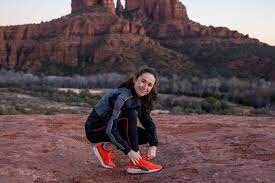
Seidel shared her advice with Coros, one of her main sponsors, and her first tip was to take it a bit easier and dial back the intensity in your runs. If you’re building toward your first half-marathon or marathon and all you’ve run previously are 5Ks or 10Ks, you can’t expect to train at the same intensity while also running two or three times farther in your workouts.
If you try to maintain your 5K training intensity while increasing your mileage, you’re probably going to end up getting hurt. That’s why Seidel recommends you focus on distance first, slowly increasing it over time. Then, once you’re used to those longer training sessions, you can re-introduce that intensity to your schedule.
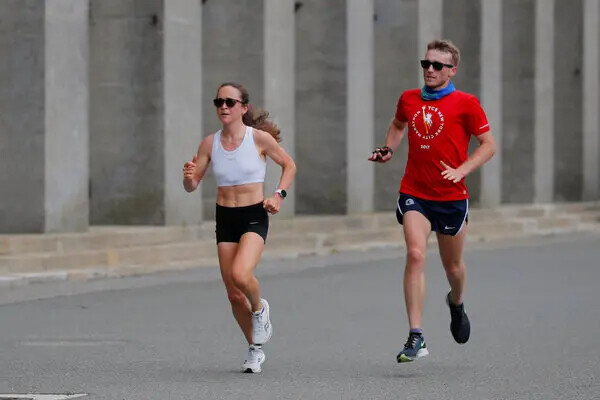
Eat on the run
When you’re training for a 5K or 10K, you’re really not running all that long. Sure, it may feel like a long time when you’re putting the work in, but compared to a marathon training load, the mileage is quite low. Thanks to such short training runs, you can probably make it through each session without bonking (assuming that you’ve eaten well before your run).
When it comes to high-mileage training, however, you may need a kick of energy every now and then, and that’s when Seidel suggests eating. If you bonk in the middle of a long run, you’re going to be miserable as you try to make it to the end. You might not even make it that far. That’s why fuelling mid-run is a great idea, as it will help to carry you through to the later kilometres of each workout. This is the time to experiment with gels, chews, or a few bites of an energy bar once every 45 minutes to an hour.
Run with others
Seidel is a proponent of the group run. She recommends finding your crew, whether that’s in an official running group or just a couple of friends, as this will help your motivation in training. It can be tough to convince yourself to get out the door to run a 5K from time to time, but it’s even harder to find the motivation when you know you’re running four times that, or more. If you have a group or friend to run with, you’ll be much more likely not only to start your run, but to finish it, too.
by Ben Snider-McGrath
Login to leave a comment
Keira D’Amato withdraws from London Marathon After Knee Problem
Keira D’Amato has decided to skip the London Marathon, after inflammation in her left knee in January set her training for the April race back by a few weeks.
D’Amato, 38, said in a phone call with Runner’s World that she tweaked her knee and instead of trying to run through it, she decided to take a couple of days off. Those days turned into a couple of weeks, long enough she would have had to rush her London buildup.
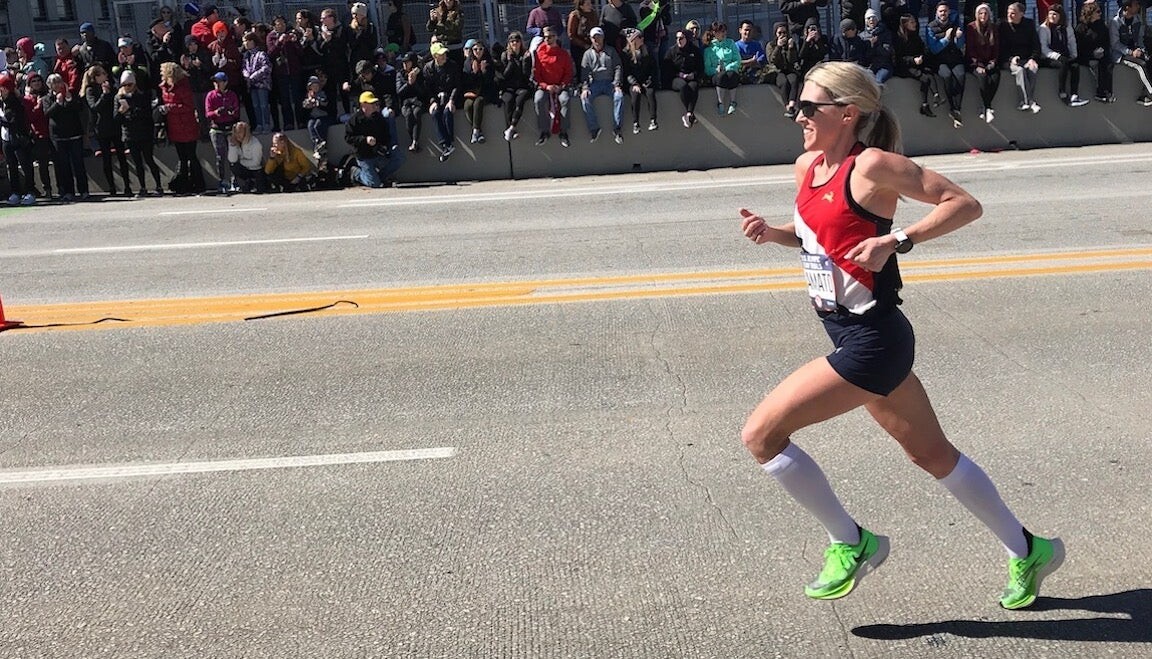
She’s done marathons off of shorter training cycles, including twice last year. She ran the New York City Marathon in November just six weeks after the Berlin Marathon. In New York, she ran 2:31:31—after running 2:21:48 Berlin.
She was also a last-minute replacement for Molly Seidel at the 2022 World Championships in July in Eugene, Oregon. D’Amato finished eighth in 2:23:34, despite being named to U.S. team less than three weeks earlier.
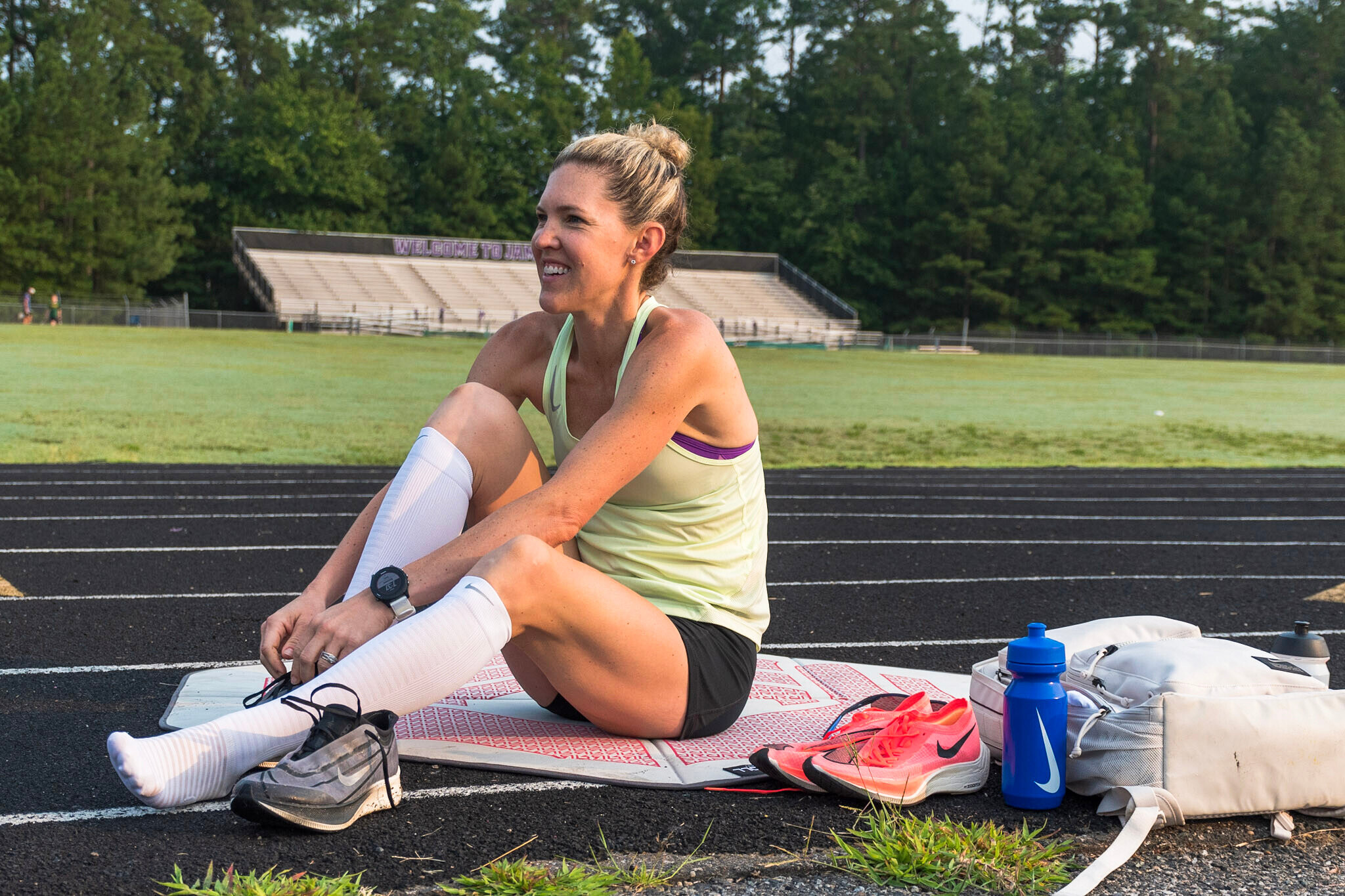
Having done those rushed marathons, D’Amato said, “I want to make sure my next one is totally right.”
She had X-rays and an MRI on her knee—both were negative. She then spent a few days at the Olympic Training Center in Colorado Springs, where she had her form and balance evaluated to make sure nothing structural was contributing to her knee pain. The evaluations turned up nothing.
“I crossed my Ts and dotted my Is,” D’Amato said. “It was a little bit of freak thing.”
She hopes her next marathon will be at the World Championships in August in Hungary. The team will be selected by a descending order time list for marathons run between December 1, 2021, and May 30, 2023. D’Amato has the second-fastest time on the list currently, 2:19:12, from her American record in January 2022 in Houston.
Emily Sisson, who is planning to run London, has the fastest time, 2:18:29. She broke D’Amato’s record in October in Chicago. The idea of a head-to-head matchup between the country’s two fastest marathoners in London had fans excited.
D’Amato, however, is looking forward. She is beginning her build now for August, and she hopes if it goes well, she’ll be racing at shorter distances on the roads through the spring and summer. She feels she has more great marathon performances in her.
by Sarah Lorge Butler
Login to leave a comment
TCS London Marathon
The London Marathon was first run on March 29, 1981 and has been held in the spring of every year since 2010. It is sponsored by Virgin Money and was founded by the former Olympic champion and journalist Chris Brasher and Welsh athlete John Disley. It is organized by Hugh Brasher (son of Chris) as Race Director and Nick Bitel...
more...Molly Seidel Withdraws From Nagoya Women’s Marathon
Olympic bronze medalist Molly Seidel, who has been slowly returning to form after a fracture in her sacrum, is facing a setback.
She has withdrawn from the Nagoya Women’s Marathon, which she was scheduled to run on March 11 in Nagoya, Japan, according to a brief statement from race organizers. The statement said her withdrawal was due to a right hip injury.
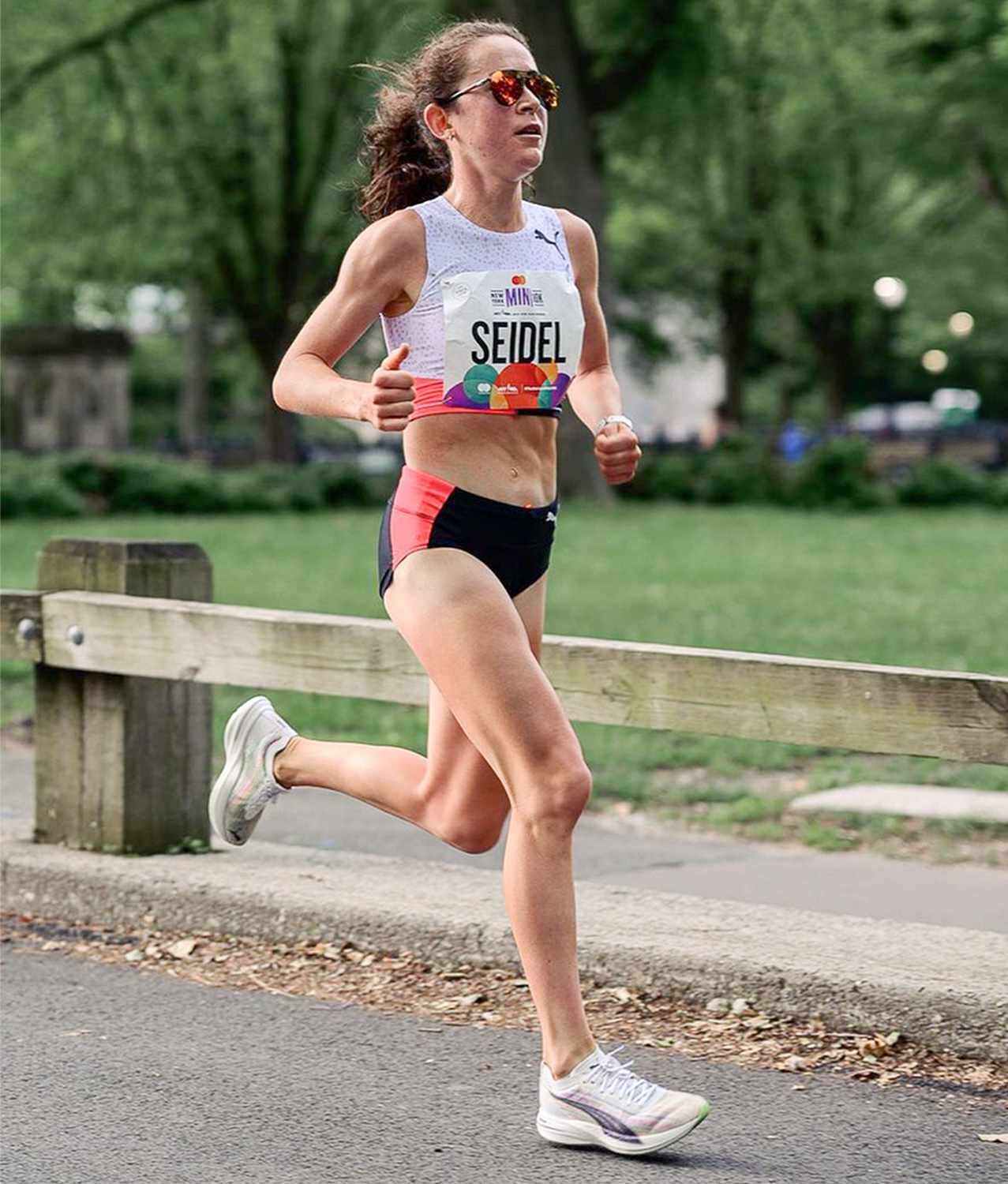
Seidel clarified in a text message to Runner’s World that she pulled her glute in the U.S. Half Marathon Championships on February 26 in Fort Worth, Texas.
“It just didn’t make sense to take that long flight and try to do it on like half capacity,” she wrote, “so we are gonna let it calm down this week and do another marathon this spring.”
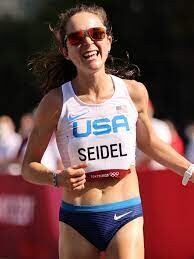
After starting her marathon career with incredible highs—second at the Olympic Trials, sixth at the London Marathon, third at the Olympic Games, and fourth in New York in a personal best of 2:24:42—Seidel, 28, has faced challenges. She dropped out of 2022 Boston Marathon, struggled with a relapse of disordered eating, and was unable to start the World Championships marathon.
In October 2022, Seidel spoke frankly to Runner’s World about her mental health battles, her injury history, and her relationship with social media.
“I’m working as hard as I can to come out the other side,” she said at the time. “But it’s a huge sense of shame and a sense that I’ve just let a ton of people down. People expect me to be fully cured, fully healed, be an advocate for this stuff. And it’s not a completely linear thing. I think that’s been the hardest thing. I just want it to be this one linear, upward trajectory. It never is.”
Seidel raced a half marathon in November in Boston, finishing 16th in 1:16:22. At the half marathon championships, with the pulled glute, she finished eighth in 1:13:08. Although the race was an improvement, she wrote on Instagram that she wasn’t happy.
“Went into the US Half champs hoping to get one last hard effort in before Nagoya, and it was pretty damn humbling,” she wrote. “Lost contact with the second pack after about 5 miles and ran 1–2 mins slower than I was going for. Getting back into form after a long period of time off is already humbling; trying to do that while also preparing to race a pro marathon feels like standing on stage at graduation in my underwear. It exposes every flaw in a public way, and is tough when the results don’t seem to match up with how hard you’re working.”
by Sarah Lorge
Login to leave a comment
Nagoya Women's Marathon
The Nagoya Women's Marathon named Nagoya International Women's Marathon until the 2010 race, is an annual marathon race for female runners over the classic distance of 42 km and 195 metres, held in Nagoya, Japan in early March every year. It holds IAAF Gold Label road race status. It began in 1980 as an annual 20-kilometre road race held in...
more...Thomson and Tuliamuk came out on top at USATF Half marathon championships
FORT WORTH, TX — The racing strategies were different, but the end result was the same for Jacob Thomson and Aliphine Tuliamuk Sunday morning in Fort Worth, Texas, as both runners claimed victory at the USATF Half Marathon Championships.
On-demand race videos and coverage of the USATF Half Marathon Championships hosted by the Cowtown Marathon, the second stop on the 2023 USATF Running Circuit.
A conservative early pace in the men’s race kept together the entire starting field, as Olympian Jared Ward jumping to the lead and taking on the pacing duties. He was joined up front by fellow Saucony pro Brian Shrader, as the 18-man lead pack passed through 5 km in 15:23. Just past the 5 km split, Thomson decided to push the pace, jumping to the lead and opening up a nearly five second gap. Thomson would continue to string the field out, running 30 seconds faster for the next 5 km split, as the Under Armour pro came through 10 km in 30:16.
As Thomson came through 10 km, defending champion Leonard Korir, 2022 runner-up Futsum Zienasellassie, Shrader, and Abbabiya Simbassa led the pack, bridging the divide and catching up to Thomson. The quickening of pace diminished the lead group, leaving a pack of 10 with half the race to go.
As mile 10 came about, Shrader jumped to the lead and started to push the pace. The pack of 10 strung out again, with only Thomson, Korir, Zienasellassie, and Simbassa able to maintain contact. For the next three miles, the five-man pack ran stride for stride, each feeling out when the right time to make a push to the finish would be. With one final turn before the finish, Thomson made the decisive move, surging ahead, using the momentum from the final turn to propel himself into the lead.
Thomson locked his eyes on the finish, pumping his arms wildly, and in the end was able to fend off the field to claim his first USATF title in 1:02:38. A stride behind Thomson, Korir and Zienasellassie battled to the finish for the second year in a row, with Korir able to withstand the kick of Zienasellassie, placing second in 1:02:39.
Zienasellassie carried his momentum from his USATF Marathon Championships victory in December to earn another top three USATF Running Circuit finish, finishing with the same time of Korir in 1:02:39. Simbassa came home fourth overall in 1:02:41, placing just ahead of Shrader, who hung on to take fifth in 1:02:43. Of note, Thomson, Korir, and Shrader will meet again next Saturday on the streets of Jacksonville, Florida, as all three are entered in the USATF 15 km Championships. Scott Fauble finished sixth in 1:02:49, while Tyler McCandless also broke the 63-minute barrier with his seventh-place finish of 1:02:52. Colin Bennie finished eighth in 1:03:08, Colin Mickow took home ninth place in 1:03:22, and Matt McDonald claimed tenth in 1:03:43, all earning points towards the USATF Running Circuit overall standings.
Unlike the conservative pace of the men’s early miles, the women’s field got off the start line and immediately hit an honest pace. HOKA Northern Arizona elite teammates Lauren Paquette and Tuliamuk jumped to the front, with Paquette in particular pushing the pace.
As Paquette led the way through the first 5 km, passing through the split in 16:31, she and Tuliamuk built an early ten second lead over the rest of the field. That lead would grow to 50 seconds over the next 5 km, as the duo came through 10 km in 32:45. Paquette did much of the pace setting over the next 5 km, with Tuliamuk just off her shoulder, both coming through 15 km in 49:16, now over a minute and a half clear of the chase pack.
At this point in the race, Tuliamuk took over the lead, and while for a moment it looked as if the two would continue to run stride for stride, Tuliamuk’s move to the front pushed the pace just enough to where Paquette started to fall off the pace and Tuliamuk built a few second lead over her teammate over the next mile.
Tuliamuk continued to push, building her lead to 12 seconds with one mile to go. As Tuliamuk came down the final straightaway, she glanced over her shoulder, then charged ahead to cross the finish line with a smile on her face, claiming her seventh USATF title in 1:09:36. Behind Tuliamuk, Paquette held on and finished a fantastic race in second place in 1:09:51.
The two teammates embraced at the finish line and then watched the rest of the top women race to the finish. Veteran Nell Rojas pulled away from the chase pack of four women over the final two miles of the race, separating herself to easily cross the finish in third place, clocking 1:11:08. Molly Grabill earned a fourth-place finish in 1:11:16, while Jessa Hanson took fifth in 1:11:26. Tuliamuk’s and Paquette’s other teammate in the race, Paige Wood, finished sixth overall in 1:11:32. Rounding out the top ten finishers, Katja Goldring scored a seventh-place finish in 1:12:36. Olympian Molly Seidel finished eighth in 1:13:07, while Bridget Belyeu and Lindsey Bradley finished ninth and tenth in 1:15:05 and 1:15:12.
The USATF Running Circuit resumes next Saturday, March 4, as the USATF 15 km Championships take place in Jacksonville, Florida, with the Gate River Run hosting the third stop on the circuit
Login to leave a comment
Runners set world, state records at Publix Atlanta Marathon
ATLANTA — With nearly 8,000 participants, world and state records were set in the Publix Atlanta Marathon weekend. From distances of 50 meters to 26.2 miles, runners of all ages shattered records.
On Sunday, during the half marathon, Kenyans Nicholas Kosimbei and Dorcas Tuitoek made history. Kosimbei ran the fastest half marathon ever in Georgia shattering the previous mark of 1:03:59 and finishing more than two minutes ahead of his nearest rival with a time of 1:00:36.Tuitoek also shattered the record with a time of 1:08:22 in the women's half marathon race just seven seconds under the Georgia state record set by Molly Seidel last year, who went on to win a bronze medal in the Olympic Games marathon.
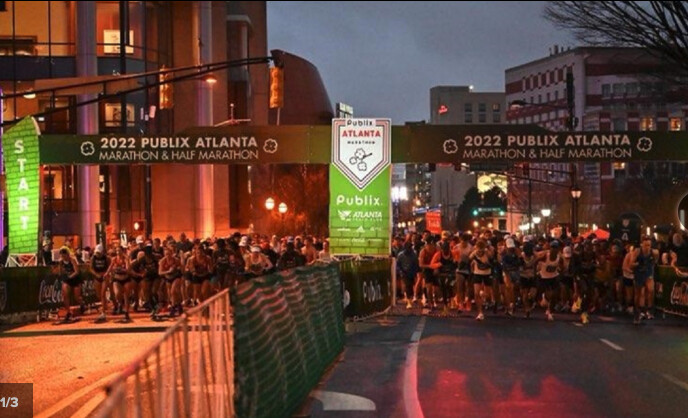
Additionally, Matt McDonald of Cambridge, Massachusetts, finished 6th overall in the half marathon at 1:05:32 and Dakotah Lindwurm of Eagan, Minnesota, finished with a time of 1:12:27. Chris Nasser of Atlanta won the Push Assist Division at 1:17:14.
“It’s fun to run by so many of my old spots,” McDonald said. “Almost every mile, I had some memory of some good time in that neighborhood, whether it was Georgia Tech where I did my Ph.D. or Piedmont Park where I did all my workouts.”
Shlomo Fishman of Silver Spring, Maryland, finished in 1st place in the Atlanta Publix Marathon with a time of 2:37:32.
“At Mile 18, I just decided I needed to get out of the rain,” Fishman said, who ran a personal best in his first marathon victory. “So, I picked it up a little bit and just went for it.”
In the women's marathon race, Amanda Furrer of Bethlehem, Pennsylvania, finished in 1st place with a time of 3:02:47, despite starting in Wave C, eight minutes behind the first non-elite runners. “I was alone for a while, so the cyclist on the course just started telling everyone my name. So people kept cheering for me. It was awesome!” Furrer said.
On Saturday, the 5K was won by Luke Mortensen, 39, of Athens, at 16:11 and Ellen Flood, 24, of Atlanta, at 17:25. Flood is also a former Georgia Tech runner.
Atlanta Track Club also hosted the USATF 5km Masters Championships, with 225 athletes ages 40 and over competing for both overall and age-group titles. Bryan Lindsey, 41, of Zionsville, Indiana, and Jessica Hruska, also 41, of Dubuque, Iowa won the overall titles. A world record was set by 97-year-old Betty Lindberg of Atlanta, a legend of the Atlanta Track Club. Her time of 55:48 set a world age-group record winning her 95+ division and destroying the previous mark by more than 30 minutes.
The 3K Atlanta Publix Kids Marathon was won by 13-year-old Nuriel Shimoni Stoil of Atlanta and 14-year-old Valeria Zambrano of Marietta.
Login to leave a comment
Publix Georgia Marathon
The Publix Georgia Marathon & Half Marathon is the perfect opportunity to visit the city of Atlanta. Atlanta's ONLY marathon, the event is a must do for adventure marathoners looking to cover all 50 states. A true Southeast tradition, you'll experience the spirit of the city as you travel through four college campuses, ten welcoming neighborhoods and dozens of iconic...
more...Ruth Chepngetich and Molly Seidel set to race the Nagoya Women’s Marathon
While the London and Boston Marathons will host some of the fastest marathon runners ever, including perhaps the deepest ever women’s line-up in London this April, fans of the sport were wonder where Kenyan Ruth Chepngetich will be racing. We now have that answer.Chepngetich is the top of the bill for the Nagoya’s Women’s Marathon happening Sunday March 12. Chepngetich is the defending champion and the second-fastest marathon runner all-time in two categories: open races, which include men and women as well as the women’s only event. Her bests are 2:14:18 from Chicago 2022 and 2:17:18 from last year’s Nagoya Women’s Marathon. However, she does have competition who will also chase after the $250,000 first place price.
Also in the field is Nancy Jelagat Meto of Kenya with a personal best 2:19:31 from Valencia 2021. American Molly Seidel is toeing the line. She earned a bronze medal at the 2020 Tokyo Olympic Games.
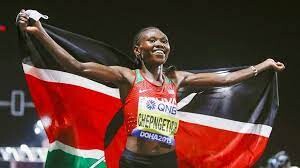
Japan has a rich history in road running and will field a competitive group of athletes including Tokyo Olympians Ayuko Suzuki and Honami Maeda, as well as Mao Uesugi and Mizuki Tanimoto, who renewed their personal best bests at the Osaka Women’s Marathon 2022. Yuka Suzuki, who set the new Japanese student record in 2:25:02 in Nagoya last year is also racing. Many Japanese athletes with high-level performances will round out the elite field including Chiharu Ikeda, Mirai Waku, and Ayano Ikemitsu, will also challenge the world’s top runners. See the complete international list below.
In addition to being the largest women’s marathon in the world and the only all-women World Athletics Platinum label road race, the race has become the marathon event with the largest first palce prize. The winner will take home$250,000 USD. All finishers of the race will receive an exclusively designed Tiffany & Co. pendant. The 2023 race will be held fully open to both domestic and international runners for the first time in three years, after the Japanese government has lifted the Covid-related border restrictions.
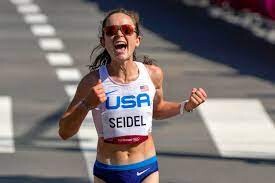
Invited elite athletes
Ruth Chepngetich, Kenya 2:14:18
Nancy Jelagat Meto, Kenya 2:19:31
Ayuko Suzuki, Japan 2:22:02
Mao Uesugi, Japan 2:22:29
Mizuki Tanimoto, Japan 2:23:11
Honami Maeda, Japan 2:23:30
Molly Seidel, USA 2:24:42
Yuka Suzuki, Japan 2:25:02.
by Christopher Kelsall
Login to leave a comment
Nagoya Women's Marathon
The Nagoya Women's Marathon named Nagoya International Women's Marathon until the 2010 race, is an annual marathon race for female runners over the classic distance of 42 km and 195 metres, held in Nagoya, Japan in early March every year. It holds IAAF Gold Label road race status. It began in 1980 as an annual 20-kilometre road race held in...
more...Want Kilian Jornet To Be Your Running Coach? Pick Up His New Watch.
It's hard to dispute that Kilian Jornet is one of the greatest mountain athletes in the world. He's a living legend, that humble-yet-tenacious Spaniard who needs no introduction and doesn't seem to be slowing down. We've reported extensively on his training consistency, his seasonal skimo/run performance composite, the food he eats (lots of bread), how much he sleeps (8 hours average), and how much he strength trains (very little).
Last week, COROS announced a new collaboration with Jornet and his year-old footwear and apparel company NNormal, with the launch of the APEX 2 Pro Kilian Jornet Edition. This has been a highly anticipated partnership-though COROS has collaborated in the past with their athletes, including Molly Seidel and Eliud Kipchoge-ever since he parted ways with Salomon and Suunto, in late 2021, and teamed up with COROS last year.
"Working with COROS developers, I've learned a lot about creating the best tools for me to use when trail running, skimo, or out in the mountains," said Jornet. "I believe that with this special edition APEX 2 Pro, we can keep pushing how the COROS device can help me-or anyone-improve their training."
Jornet's new GPS watch is a limited offering, at 5,000 units, and it not only includes some fun personalized Jornet flare, but it also arrives with an opportunity to jump-start your 2023 training with guidance from the legend himself. Here's what we know so far:
The COROS APEX 2 Pro Kilian Jornet Edition
If you're expecting the hardware of Jornet's new watch to be much different from the COROS APEX 2 Pro, you might be setting yourself up to be disappointed. Good thing there's very little to be disappointed about because the APEX 2 Pro is a top-shelf GPS watch for any trail runner.Here's a quick look at the four main innovations you need to know about this watch that sets it apart from other GPS watches out there for trail runners:
Battery. The battery can now last up to 75 hours, 88 percent longer than the first generation. (It's cool: Jornet only took 26 hours to summit Everest. No. Charge. Needed.)
GPS. The APEX 2 Pro has 50 percent higher accuracy with a new GNSS chipset and an "all satellite dual frequency."
Heart rate. COROS has upgraded the advanced optical heart rate sensor with a 5-LED system.
Recovery. The APEX 2 Pro upped its game on sleep tracking and recovery metrics dashboards.
First Impressions
We found the APEX 2 Pro to be about the perfect dimensions for a high-performance GPS watch, not terribly chunky or heavy but not too small, either. They've nailed both the watch face diameter and thickness. The navigation is seamless and quick, too. The GPS locks in mere seconds and, after completing a workout, the data zips to the COROS app, which is about as robust and intuitive as any on the market.
Sometimes the watch's interface aesthetic feels like I'm in a 90s video game, and I'm still not totally sold on the spin navigation knob, but overall, there's little to complain about. Triathlete reviewed the APEX 2 Pro favorably, though they did have a few things to say about its price-to-performance ratio and its lifestyle functions. Bottom line? The watch is an exceptional addition to any trail runner's tech gear.Takeaway
To connect our evolving trail community through a piece of high-performance wearable gear, with one of the greatest athletes alive is a unique opportunity, something that only further validates the integrity of an athlete who cares about stewarding the planet, who wishes to remain an ambassador, in contact with the many people he inspires. If you're looking to upgrade your GPS watch experience-and are willing to pay a pretty penny for it ($549)-you may be setting yourself up for a chance to gain personalized insights from Jornet himself, and that appears, well, priceless.
Go Further:
by Trail Runner Magazine
Login to leave a comment
Pool running for recovery
If you’re coming back from injury or want to safely add running volume, pool running is a great option and we have a few workouts for you to try. U.S. Olympian Molly Seidel has recently made a return to running after a sacral stress fracture, and she’s been playing it safe (as we all should), being careful not to overload her body.
“Body was feeling a little run-down after last week so we pushed today’s threshold workout to tomorrow and hopped in the pool instead,” Seidel shared in a recent Instagram post. “Trying to be smarter this build about listening to my body and taking recovery days when needed.” Learn from Seidel’s pro example and try one of these pool workouts.
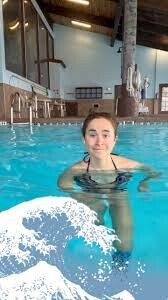
Why the pool?
Running in deep end of the pool with a flotation belt is an ideal way to simulate running without impact. The pool reduces your body weight by up to 90 per cent, meaing the impact and stress on your body is significantly reduced. Start out easy for the first few workouts and build up to doing your regular running workouts against the resistance of the water.
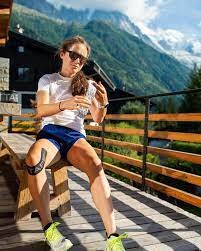
Former elite marathoner turned podcast host and coach Tina Muir shares some insight on pool running on her website, and says you can simulate any land-based running workout in the pool. To increase intensity in pool runs, Muir suggests pumping your arms back and forth quickly and driving your legs against the resistance of the water.
“Make sure you keep the full cycle for your legs; people often end up doing high knees when they increase the intensity, which does not mimic running and is nowhere near as effective,” adds Muir.
Tempo pool workout
Warm up with ten minutes of easy pool running
Increase your speed and effort for 10–15 minutes
Cool down with ten minutes of easy pool running
Easy pool intervals
Warm up with 10 minutes easy pool running
Run at a hard effort across the deep end of the pool, and recover as you head back to the other side
Repeat 4–6 times (increase as you get used to the pool)
Cool down with 10 minutes easy pool running
Hey, the pool isn’t just for aquacise or swimming laps. If Seidel’s in there running, we’re willing to jump in too.
by Running Magazine
Login to leave a comment
Coros introduces limited-edition Molly Seidel watch
The endurance sports watch company Coros has released a limited Molly Seidel edition of the Pace 2, which celebrates the Olympic bronze medallist’s achievements and captures her unique and fun personality.
The design of this special edition watch was a collaborative process with Seidel and her team, and features colors to represent her: two shades of green (her favorite color–a vibrant green to match her Puma race kit, and a more earthy green as a nod to the environment).
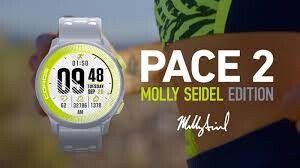
Seidel’s limited edition Pace 2 comes with two watch bands: a green silicone band and an extra nylon band with Seidel’s famous “full send” catchphrase after she won bronze in the marathon at the 2020 Tokyo Olympics.
The watch also comes with a scannable QR code to a custom 12-week marathon training plan created by COROS, Seidel and her coach, Jon Green of Verde Track Club in Flagstaff.
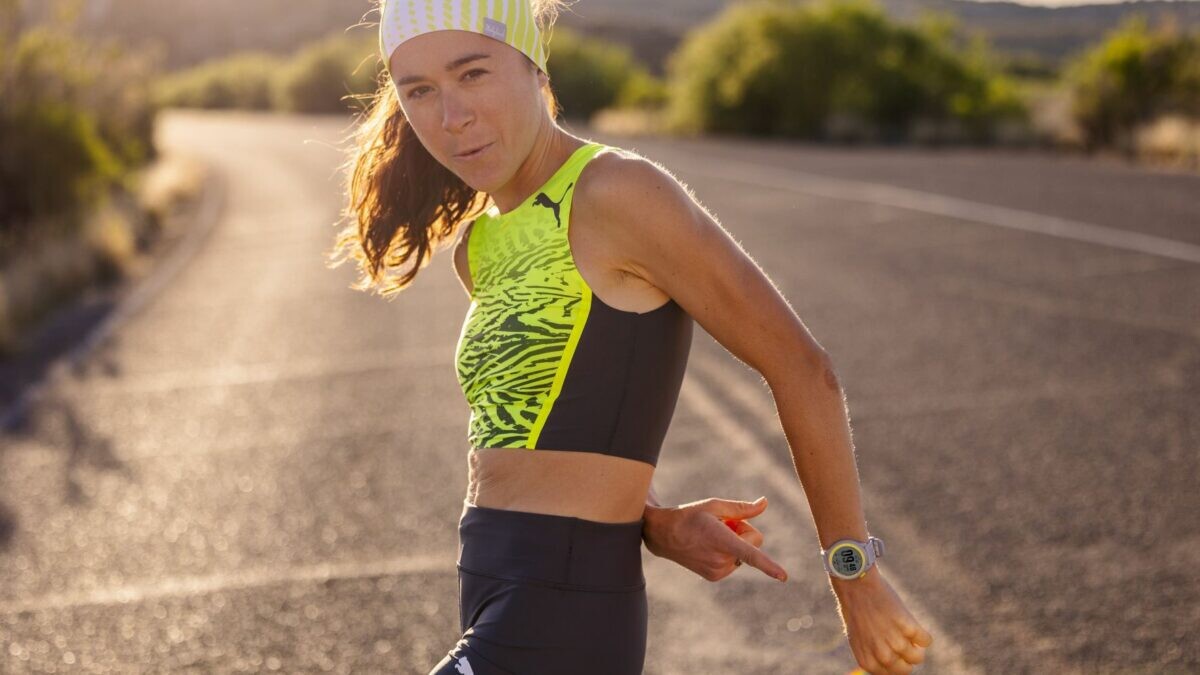
Seidel was using a Coros watch before she signed on as an official athlete for the brand. When she won her Olympic bronze, Seidel wore the Coros Apex, and made headlines as her bronze-medal-winning marathon quickly became the most kudo’d women’s activity on Strava. In November 2021, she officially signed on as a Coros athlete and was the top American at the 2021 New York City Marathon, where she wore the lighter-weight Coros Pace 2.
The Pace 2 is an excellent watch for anyone who likes to walk, run or cycle daily and wants to understand the simple statistics around their exercise. The watch also has everything you need for serious training, with stellar 30-hour GPS battery life and easy-to-understand metrics and statistics.
“This watch is Molly, and it represents all aspects of her personality, from her grit and determination to her youthful energy,” said Dan Suher, Director, Global Sales at Coros. “It is an honor to celebrate everything she has already accomplished in her career and know how much is still to come.”
The Coros Pace 2 Molly Seidel edition is available now on Coros.ca and through select running specialty retailers with a retail price of CAD $349.00.
by Running Magazine
Login to leave a comment
Molly Seidel returns to racing at BAA Half Marathon
Olympic bronze-medal marathoner and fan favorite Molly Seidel is back. Seidel jumped into the Boston Athletic Association’s (BAA) Half Marathon on Saturday, and in a post-race press interview shared that her 1:16:22 finish (16th woman) was “right in line with what I expected it to be.”
While Seidel said it was frustrating not to have been able to build the fitness she had wanted for the race, her priority had been making sure her health, both mental and physical, was strong enough to compete.
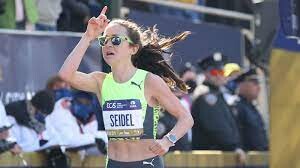
“Lots of nerves, but honestly just pumped to be back on the line in my favorite city,” she shared pre-race on social media, where the athlete has been a compelling force around mental health and eating disorder awareness for legions of fans.
With only two full weeks of running training before the race, Seidel said that while she knows she still has a long way to go, it’s nice to have a foundation of health to build on right now.
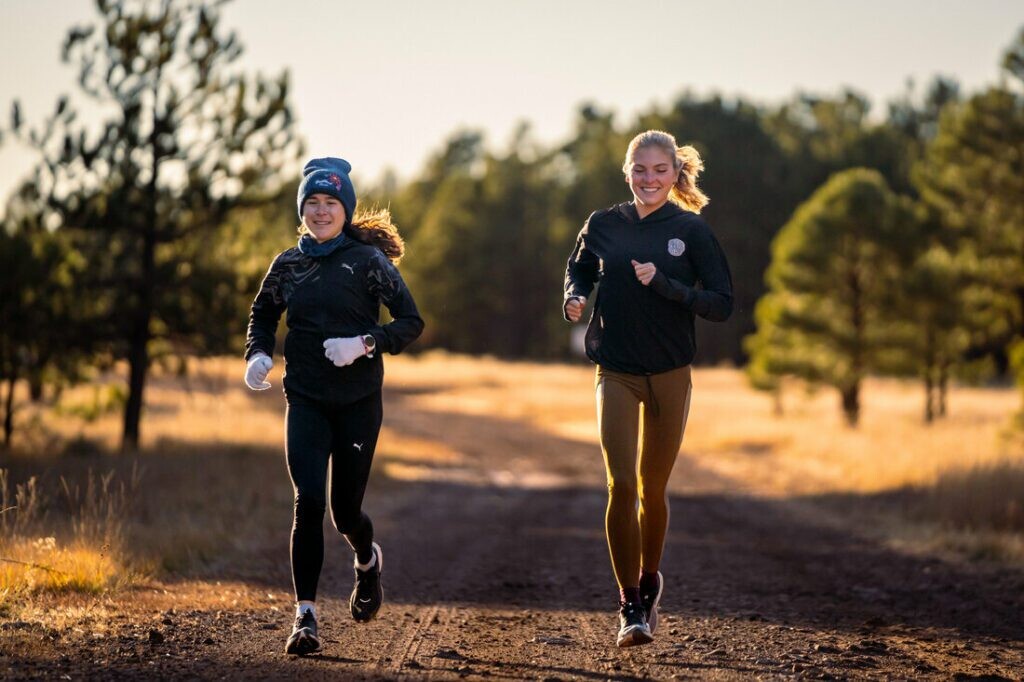
After pressing pause on competition pre-World championships in July due to a sacral stress reaction (later diagnosed as a full fracture), Seidel has courageously and candidly shared the ongoing mental health challenges she has been facing, discussing her eating disorder recovery on social media and stressing the importance of reaching out for help.
In February, the athlete was diagnosed with attention-deficit hyperactivity disorder (ADHD), and after having found some relief from the medication Adderall, dropped out of the NYC 10K Mini while waiting for a therapeutic use exemption (TUE) for the medication.
In October, Seidel went into further detail about the hurdles she was facing in an interview for Runner’s World, explaining that she had been dealing with a sense of shame after struggling throughout the summer with bulimia, a disease that she had first sought treatment for post-university and that she describes as “coming in waves.”
While Seidel felt pressure to be ‘cured’, eating disorder recovery is far from linear, and the athlete described an intense struggle after the 2022 Boston Marathon (where she was forced to drop out due to hip pain).
Seidel has also openly discussed her choices to step back from Strava and Instagram in the past year, and in sharing bravely about tough topics that are often hidden from view has undoubtedly given hope and courage to others facing similar personal challenges.
While the athlete hasn’t announced plans for her next event, fans and fellow athletes alike will be thrilled to see Seidel back in the racing game, looking healthy and happy.
by Keeley Milne
Login to leave a comment
B.A.A. Half Marathon
Dana-Farber and the Jimmy Fund have partnered with the B.A.A. in the Half Marathon for 13 years as the race’s presenting sponsor. Through this relationship, team members have collectively raised more than $5 million to support groundbreaking cancer research, and enabled Dana-Farber scientists and clinicians to positively impact the lives of cancer patients around the world. Dana-Farber runners often participate...
more...The 2022 B.A.A. Half Marathon returned to Franklin Park this morning as more than 6,300 athletes completed the 13.1-mile challenging course
At the front of the field, Kenyans Geoffrey Koech and Viola Chepngeno prevailed as men’s and women’s open division champions.
Despite sporadic rain throughout the morning, participants covered the challenging course through Boston and Brookline with smiles and enthusiasm.
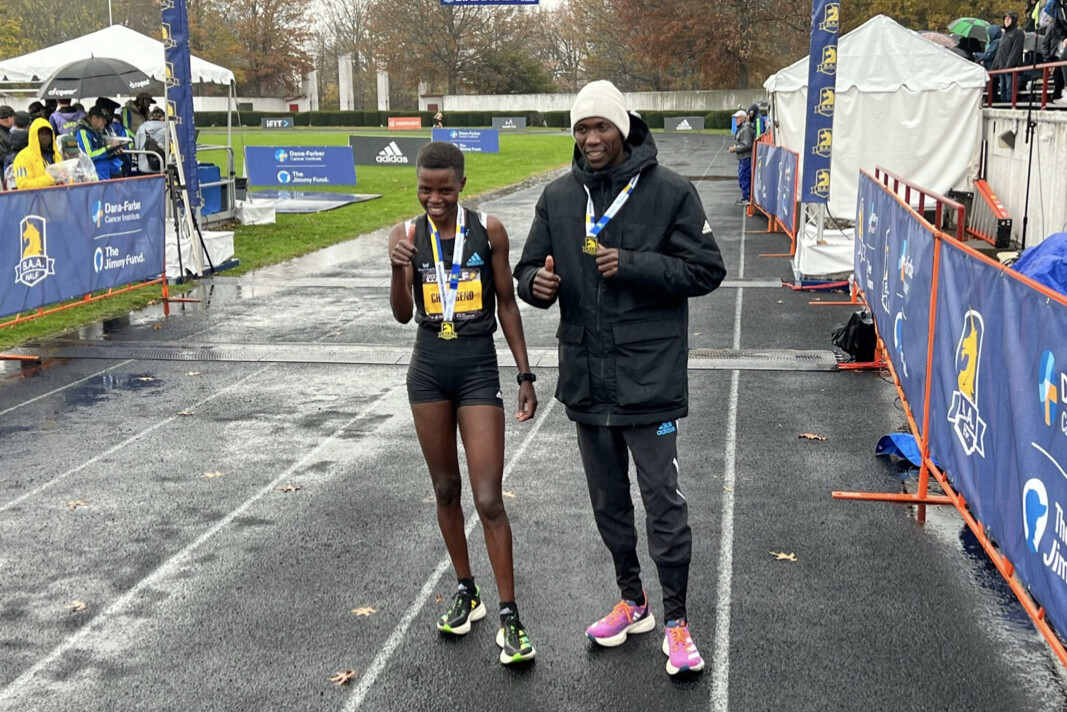
With a ferocious sprint into White Stadium, Chepngeno claimed the women’s open win in 1:10:40, just three seconds in front of Ethiopia’s Bosena Mulatie. Chepngeno, Mulatie and Hiwot Gebrekidan (Ethiopia) ran a majority of the race together, but it was ultimately the B.A.A. Half Marathon debutant in Chepngeno having the best finish of all.
“I’m happy. So, so happy,” said a smiling Chepngeno. “The rain was cold. But I am happy so much!”
Gebrekidan was third in 1:11:09, with B.A.A. High Performance Team member Erika Kemp finishing as the top American, seventh in 1:12:13. Team USA Olympians Molly Huddle and Molly Seidel placed 12th (1:13:29) and 16th (1:16:22), respectively.
As a pack of a dozen runners led the men’s race through 10K, it was Koech taking the reigns at mile 9. While Tsegay Kidanu (Ethiopia), Zouhair Talbi (Marocco), and Teshome Mekonen (USA) did their best to keep close, it was Koech who stormed out of Franklin Park Zoo in front and wound up winning in 1:02:02. Kidanu and Talbi rounded out the podium in 1:02:10 and 1:02:15, while Mekonen placed fourth in 1:02:28 as the top American finisher. This was Mekonen’s first race as an American citizen.
“The race was good, I am happy in Boston,” noted Koech, who said he came into the race briming with confidence. When did he know he had victory sealed? “The last 5K, all of the twisting [turns before the finish].”
(From Let's Run) Teshome Mekonen was born and raised in the Tigray region of Ethiopia but has been based in the US since 2020 and gained his citizenship in August (we’ll have more on his story next week on LetsRun.com). Only four Americans have ever run faster than Mekonen’s pb in the half (60:02), and while that time dates from 2018, it’s also worth noting that Mekonen raced Conner Mantz at the NYC Half in March of this year and beat Mantz by a minute.
He’s clearly one to watch for the 2024 Olympic Marathon Trials, though his two marathons so far haven’t gone very well (2:22 in New York last year, 2:13 in Ottawa this year). His performance today was solid — though 62:28 is over two minutes off his pb, the hills and rain slowed most of the field. For reference, men’s winner Geoffrey Koech ran 62:02 today but 60:01 at the Cardiff Half in October.
After crossing the finish line in Boston today, Mekonen crossed his arms above his head in a similar gesture to the one made by Feyisa Lilesa at the 2016 Olympic marathon. Mekonen said his gesture was to bring attention to his home region of Tigray, which has been at the center of a civil war between Tigray and the Ethiopian federal government over the last two years. While there was positive news last week with leaders from each side agreeing to a truce, getting humanitarian aid to the area has still been a problem and Mekonen has been unable to communicate with his family and friends in the region.
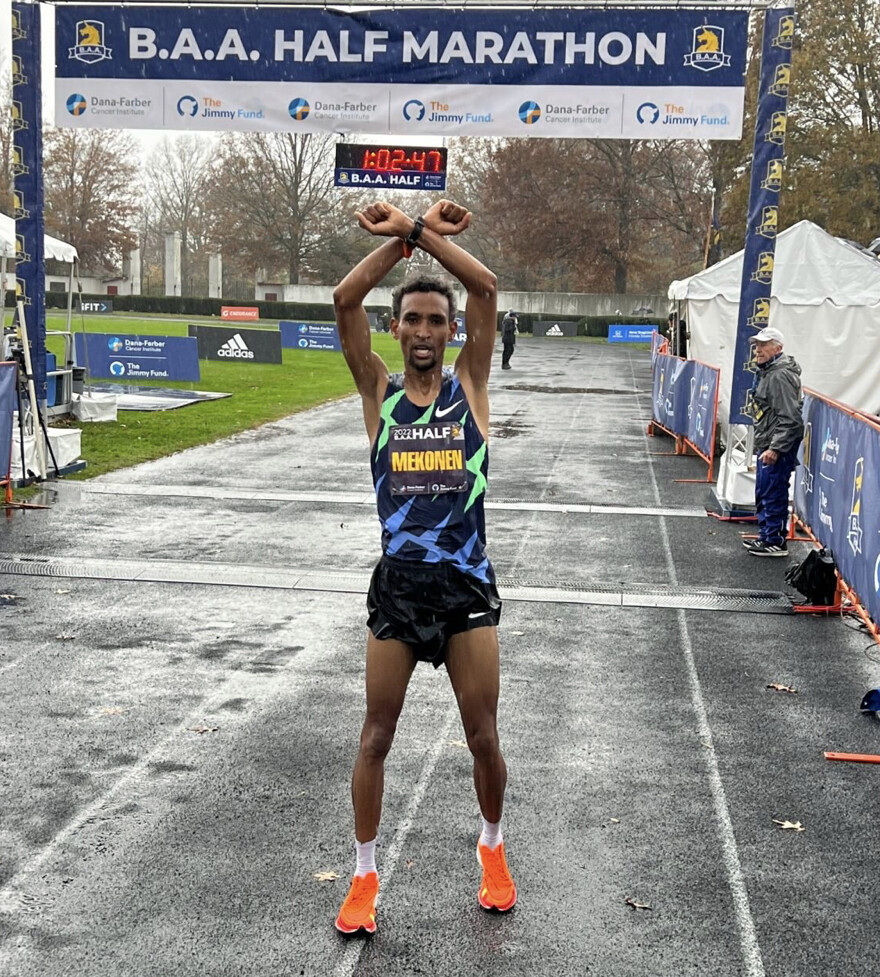
“In Tigray, still everything is no food, no medicine, no bank, no electricity,” Mekonen said.
Mekonen said right now he’s already started training for his next marathon, which will come on January 15 in Houston.
“My [training] program, everything is marathon [right now],” Mekonen said. “This [race] is like time trial.”
Mekonen said he’s hoping to run 2:08 in Houston and finish in the top three.
Quick Take: Molly Seidel — “I’m just in such a drastically better place than I have been for a long time”
Molly Seidel’s time today of 76:22 was, by her standards, poor — at her best, she can easily maintain that pace for a full marathon. But Seidel was still in good spirits. For the first time in a long time, she feels she is in a good place with her body and her mental health. Today’s race was a chance to lay down a marker of where she’s at right now, but she expects to get a lot faster in the coming months.
“While it’s frustrating to come out and not be anywhere near the front pack, it’s nice knowing that I’m just in such a drastically better place than I have been for a long time,” Seidel said.
It has been a rough year for Seidel. After the high of a bronze medal at the Olympics and American course record in the New York City Marathon last year, Seidel has faced a number of challenges in 2022. She dropped out of the Boston Marathon with a hip injury that wound up as a sacral stress fracture. She has also struggled with disordered eating and was forced to withdraw from the New York Mini 10K earlier this year because she was waiting to receive a TUE for Adderall, which she had been taking to manage her ADHD (she no longer takes the drug). But, thanks to the help of her family, her coach Jon Green, and the rest of her support team, Seidel said she is feeling the best — mentally and physically — that she has for a long time.
The stress fracture sidelined Seidel until October, and even once she resumed training, it was mostly cross-training due to an ankle issue that flared up. But she is back to full training now and says she has hit 110 miles the last couple of weeks.
“I’m like one of those steaks that’s raw and you throw it on the grill and fast-sear it,” Seidel joked.
Quick Take: Molly Huddle’s comeback continues — though it’s different racing now as a mom
Molly Huddle had already raced twice since giving birth to daughter Josephine in April, both at 10 kilometers (33:59 at the Lone Gull 10K on September 25 and 33:32 at the Boston 10K for Women on October 8). Today was another step forward on her comeback and the longest race she’s done so far.
Huddle said her time of 73:29 was slower than she hoped but knew it would be tough after 10 miles — which is exactly what happened. Huddle already has another half lined up in Houston in January and hopes that with two more months of training under her belt, she will be able to feel stronger in that race.
“This [race today] will bring me along, for sure,” Huddle said. “I think the next half will be a lot faster.”
Huddle also thinks she’ll feel stronger once she stops breastfeeding Josephine — she had to pump milk today 20 minutes before her warmup.
Huddle is returning to a faster marathon scene in the United States than the one she left when she took her maternity break. The American record has been broken twice this year and now stands at 2:18:29 to Huddle’s occasional training partner Emily Sisson.
“It’s crazy,” Huddle said. “The women are running so fast and it’s so deep up front. From the 2:18 to 2:22 range, we have a lot of women. I’m just hoping to PR. Mine is 2:26 the last time I ran. That was pre-supershoe era.”
Huddle will be 39 by the time of the 2024 Olympic Marathon Trials and right now would not be among the favorites to make the team — even in her prime, Huddle was always better at the shorter distances on the roads. She admitted she’d need to catch some breaks to have a shot at the Olympic team in 2024 but isn’t completely counting herself out.
“Marathons have a lot of variables, so I’d need a few to go in my favor and against somebody else,” Huddle said. “But you never know. The marathon, I think I have a shot.”
Login to leave a comment
B.A.A. Half Marathon
Dana-Farber and the Jimmy Fund have partnered with the B.A.A. in the Half Marathon for 13 years as the race’s presenting sponsor. Through this relationship, team members have collectively raised more than $5 million to support groundbreaking cancer research, and enabled Dana-Farber scientists and clinicians to positively impact the lives of cancer patients around the world. Dana-Farber runners often participate...
more...After Much Anticipation, Orlando Announced as Host of the Olympic Marathon Trials
The race will take place on February 3, 2024.
USA Track & Field (USATF) has named a host city for the 2024 Olympic Marathon Trials, and it’s Orlando, Florida.
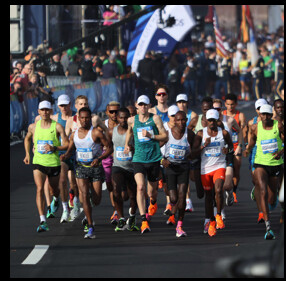
The Trials will take place on February 3, 2024, giving the local organizing committee on the ground only 15 months to prepare for the high-profile event.
The top three finishers in the men’s and women’s races will represent Team USA at the 2024 Olympic Games in Paris (provided they have met the ever-evolving standards set by World Athletics, the sport’s worldwide governing body, to run at the Games).
USATF was slow in naming a host city for the event. By contrast, when the Atlanta Track Club hosted the 2020 Olympic Trials, those organizers had 22 months to put together a race for about 700 men and women.
The fields for the race in Orlando will likely be smaller, however, because the qualifying standards to get into the Trials are tougher than they were to get into the 2020 race. In December 2021, USATF announced that women had to run a marathon faster than 2:37 in order to qualify. (For the 2020 Trials, that time was 2:45.) Or, they need to run a half marathon faster than 1:12.
Following Sunday’s NYC Marathon, only 60 women have run a marathon qualifying time. The window for half marathon qualifying opens on January 1, 2023. Men wanting to qualify for the 2024 Trials have to run 2:18 or faster (last time, the standard was 2:19) or 1:03 in the half marathon. As of mid-October, which was the last time USATF updated its list, 68 men had qualified for the Trials.
The California International Marathon, to be run this year on December 4, typically yields several Trials qualifiers.
Orlando is the first Florida city to be awarded the event.
The 2020 Olympic Marathon Trials were one of the last elite races held before the COVID pandemic shut down the world for more than a year and postponed the Olympics. At the 2021 Olympic marathon, held in Sapporo, Japan, American Molly Seidel won a bronze medal. The 2024 Olympic marathons in Paris will be held in August of that year.
Login to leave a comment
2022 B.A.A. Half Marathon Returns to Franklin Park on Sunday
The 2022 B.A.A. Half Marathon, presented by Dana-Farber Cancer Institute and the Jimmy Fund, will be held this Sunday, November 13, starting and finishing within Franklin Park. The event returns to an in-person format for the first time since 2019 and features a star-studded professional field leading the charge for 9,000 entrants from the Greater Boston area and beyond.
To support your coverage of this year’s event, please find event storylines and race information below. Media interested in covering the 2022 B.A.A. Half Marathon can submit credential requests here or email media@baa.org for more information. Credential pick-up will occur at the Media Tent within White Stadium on Sunday, beginning at 6:45 a.m. Additional details will be sent in the coming days to those who’ve requested credentials.
The B.A.A. Half Marathon will start at 8:00 a.m. this Sunday, November 13, from Franklin Park. The 13.1-mile course runs along the picturesque Emerald Necklace Park System, past area landmarks such as the Arnold Arboretum and Franklin Park Zoo, before finishing at White Stadium in Franklin Park. A detailed course map can be found here.
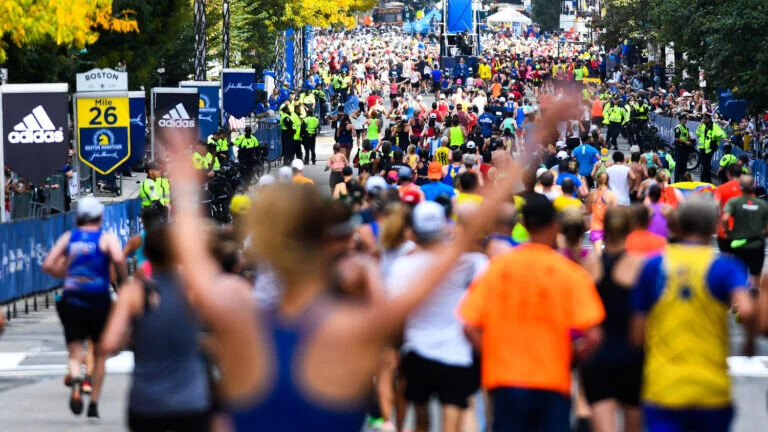
- Dana-Farber Cancer Institute and the Jimmy Fund has partnered with the B.A.A. Half Marathon since 2003 as the race’s presenting sponsor and exclusive charity team. Through this relationship, Dana-Farber runners have collectively raised more than $8 million to support groundbreaking cancer research, and enabled Dana-Farber scientists and clinicians to positively impact the lives of cancer patients around the world. A team of 400 athletes will be part of the Dana-Farber Cancer Institute and Jimmy Fund team for this year’s event, having already raised nearly $350,000 to defy cancer.
- At the front of the field, Olympic and Paralympic medalists, Boston Marathon champions, and top international contenders will square off in pursuit of finishing atop the podium. Among the notable professional athletes entered are Olympic marathon bronze medalist and former Boston resident Molly Seidel, two-time Boston Marathon champions Lelisa Desisa and Daniel Romanchuk, and USA Olympian and former American half marathon record holder Molly Huddle.
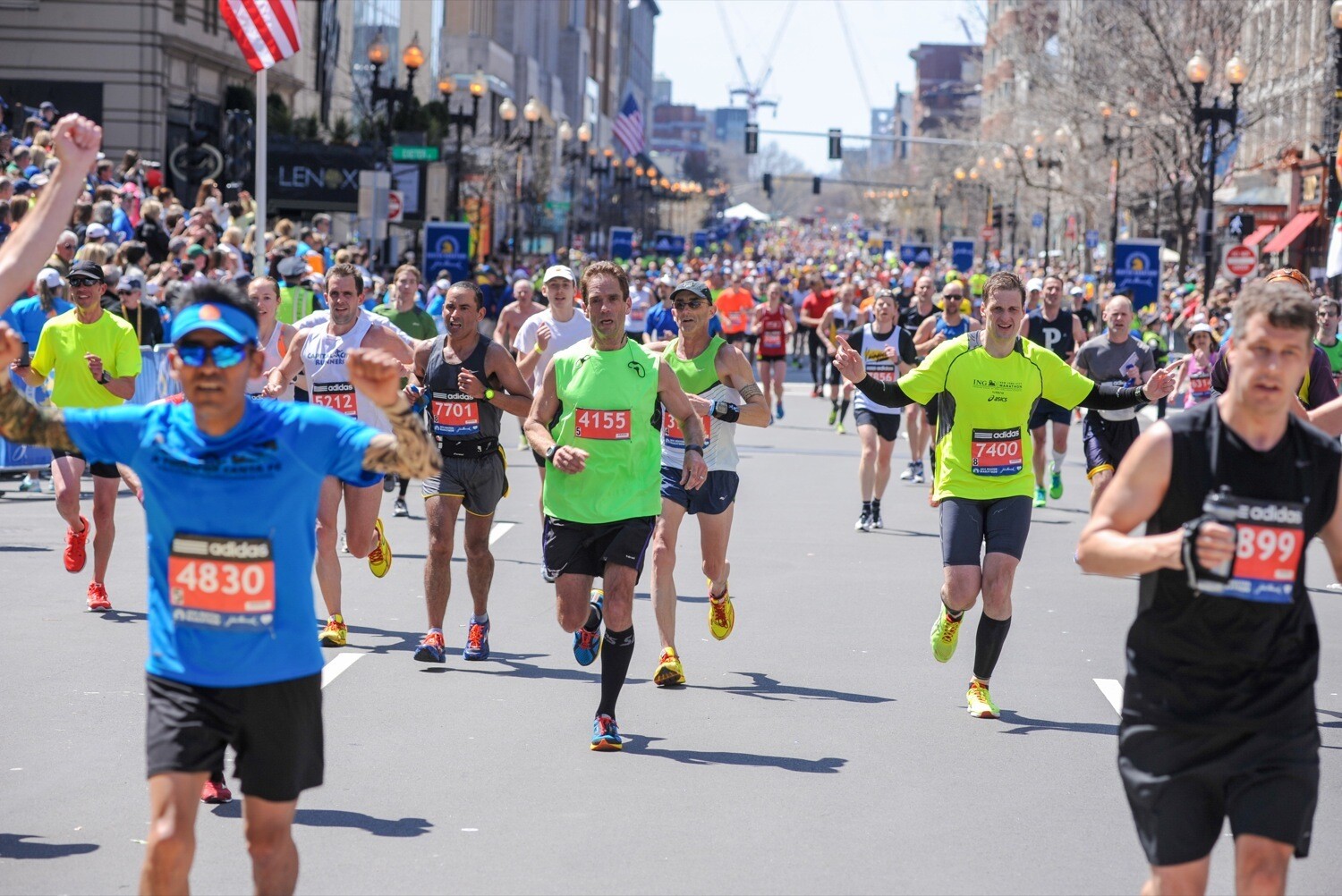
Seven women who’ve run under 1:08:30 and nine men with lifetime bests under 1:01:30 will compete on the roads of Boston. Desisa is also a two-time B.A.A. Half Marathon champion and the event record holder (1:00:34). Romanchuk aims to become the first athlete in history to podium at each of the B.A.A.’s four signature events (B.A.A. 5K, B.A.A. 10K, B.A.A. Half Marathon, and Boston Marathon). On Sunday he finished second at the TCS New York City Marathon in 1:27:38.
- For the first time, the B.A.A. Half Marathon will feature a Para Athletics Division showcasing athletes with lower-limb, upper-limb, and visual impairments. Competitors include Jacky Hunt-Broersma (T64, lower-limb impairment), who finished a Guinness World Record 104 marathons in 104 days this year; Marko Cheseto Lemtukei (T62, lower-limb impairment), who won the Para Athletics Division at the 2021 and 2022 Boston Marathons (timing 2:37:01 in April) and Brian Reynolds (T62, lower-limb impairment), who has run a world best 1:17 for the half marathon. The B.A.A. Half Marathon course is World Para Athletics record eligible, signaling that national or world records may be in jeopardy of falling on race day for wheelchair and Para athletes.
- Among the field of nearly 9,000 participants are 257 athletes also entered in April’s 127th Boston Marathon. Participants in this year’s B.A.A. Half Marathon are from 46 U.S. states (plus Washington, DC) and 95 countries.
- 1,418 participants are aiming to complete the 2022 B.A.A. Distance Medley, a three-race series which includes April’s B.A.A. 5K, June’s B.A.A. 10K, and November’s B.A.A. Half Marathon. The B.A.A. Distance Medley series provides athletes a year-long way to experience training and racing at three different distances, with the aim of improving fitness throughout the calendar year.
- The B.A.A. Half Marathon is a family-friendly event for athletes and spectators of all ages. Free youth events will be offered on race morning within Franklin Park, including races and medals for all. Youth track races will begin on the White Stadium track at 8:20 a.m. Registration will open at 7:00 a.m. on Sunday.
- Spectators and runners are encouraged to download the B.A.A. Racing App powered by TCS for live race day tracking, leaderboards, results, custom selfie stations, course maps, information, and more. The B.A.A. Racing App is available for free within Apple iOS and Android.
- On display for viewing at the 2022 B.A.A. Half Marathon will be an Indigenous Peoples' Day Banner, created by Boston Art Institute alum Yatika Fields (Osage/Cherokee/Creek) which honors the Boston Marathon's Indigenous runners, past and present. Following the Awards Ceremony on race day, the banner will be blessed as it is sent from Boston to its home with Wings of America in Albuquerque, New Mexico, where it will inspire young Native runners.
The blessing will be given by Hiawatha Brown (Narragansett), the longest serving Tribal Councilman, a Veteran of the United States Navy, and the nephew of two-time Boston Marathon Champion, Ellison 'Tarzan' Brown. Words will be offered from Robert Peters, a Mashpee Wampanoag artist who contributed his talent to the mural, on behalf of himself, Yatika Fields, and Wings of America Executive Director, Dustin Martin (Dine). Also in attendance will be Jordan Marie Daniel (Kul Wicasa Lakota) who is participating in the 2022 B.A.A. Half Marathon and is featured on the banner.
- A prize purse of $96,200 is available for professional athletes in the open, wheelchair, masters, and Para Athletics Divisions.
- Course records for the B.A.A. Half Marathon are:
Open Men: 1:00:34, Lelisa Desisa (Ethiopia), 2013 (Lelisa Desisa is competing in this year’s race, aiming to win his third B.A.A. Half Marathon title)
Open Women: 1:07:40, Brillian Kipkoech (Kenya), 2019
Wheelchair Men: 53:07, Tony Nogueira (New Jersey), 2008 and 2004
Wheelchair Women: 1:00:43, Katrina Gerhard (Massachusetts), 2019.
Login to leave a comment
B.A.A. Half Marathon
Dana-Farber and the Jimmy Fund have partnered with the B.A.A. in the Half Marathon for 13 years as the race’s presenting sponsor. Through this relationship, team members have collectively raised more than $5 million to support groundbreaking cancer research, and enabled Dana-Farber scientists and clinicians to positively impact the lives of cancer patients around the world. Dana-Farber runners often participate...
more...Aliphine Tuliamuk says the weather at the NYC marathon was not as bad as she expected as she finished first American in 7th place
It did not take long for Aliphine Tuliamuk to find air conditioning after finishing seventh as the top American in the warmest New York City Marathon since 1985.
She picked up her giggling 21-month-old daughter, Zoe, and placed her face directly in front of the cool air.
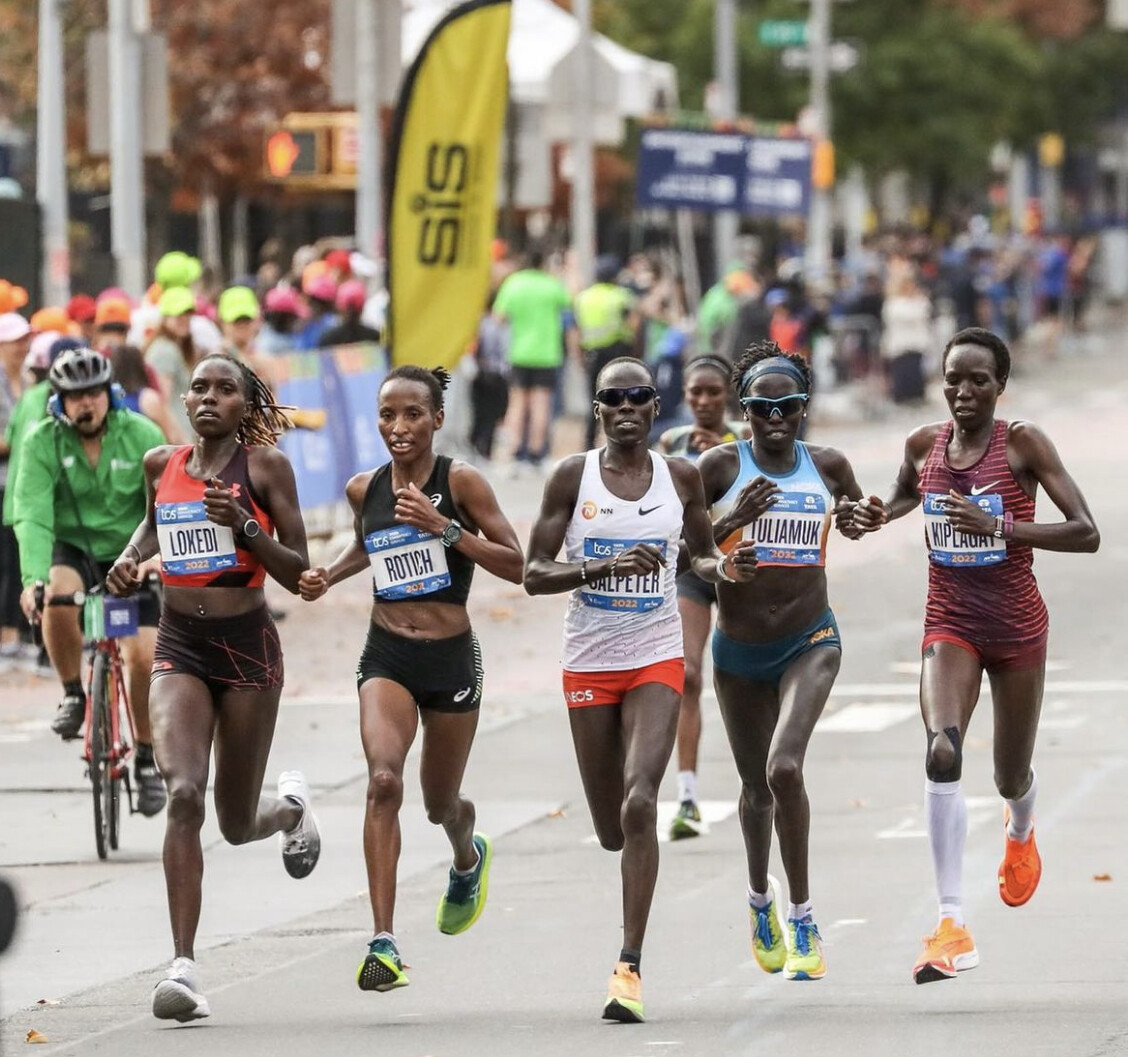
“To be honest with you, I don’t think it was actually as bad as I expected,” Tuliamuk said of the temperature, which reached 73 degrees when she crossed the Central Park finish line. “I was on point with my hydration.”
She clocked a personal-best 2:26:18, despite ankle swelling hampering her build up. She estimated that she only had five weeks of training before taking the last two weeks to taper.
“I excel when the conditions are not perfect,” she said. “I rise to the occasion, and I believe that today that was the case.”
Seventh was the lowest placing for the top American woman in New York City since 2015, when Laura Thweatt also finished seventh.
“I remember going into the race thinking, if I could get top seven, that would be really good,” Tuliamuk said. “I obviously wanted more.”
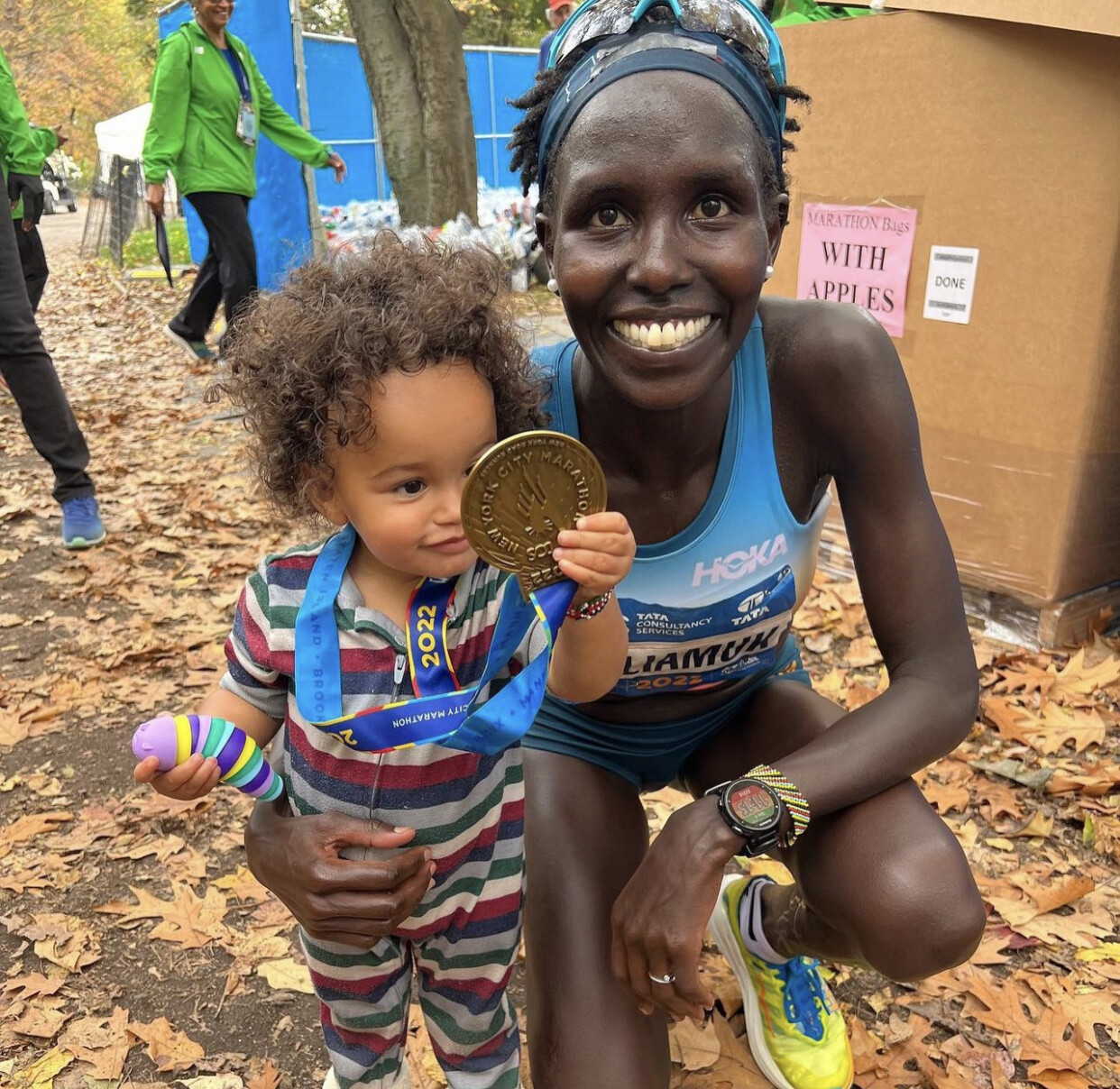
Tuliamuk is beginning to turn her attention to the Olympic Trials in the first quarter of 2024 at a to-be-announced site.
She plans on running a spring 2023 marathon, which could be her final marathon before trials, where the top three are expected to make up the team for the Paris Games.
“Once the [trials] schedule is out,” she said, “we’ll work backwards from that.
“I think that next Olympic team is going to be really, really hard to make.”
Tuliamuk identified Emma Bates, Keira D’Amato, Molly Seidel and Emily Sisson as her toughest competition. Sisson broke the American record at October’s Chicago Marathon, clocking 2:18:29 to lower D’Amato’s record from Jan. 16 by 43 seconds. Seidel claimed the bronze medal at the Tokyo Olympics.
“There’s so many Americans right now that are doing amazing,” Tuliamuk said. “It’s like you just have to have a perfect day.”
Tuliamuk made her Olympic debut at the Tokyo Games. She did not finish the race, seven months after she gave birth.
“I really want to make the next Olympic team,” she said. “The last one, the pandemic and having a child, I never really got to represent my country the way I wanted it.”
Tuliamuk will be 35 in 2024. The U.S. Olympic women’s marathon team included a 35-year-old at three of the last four Games.
“I really want a medal for my country,” she said. “I think that I have a lot of running in me. I have a lot of speed.”
Bates, 30, finished 35 seconds behind Tuliamuk for eighth place on Sunday.
“Those hills were a lot harder than I imagined,” said Bates, who revealed that she did not look at the course map before the race.
Bates wore a matching snake ring and earrings as she made her New York City debut, one year after placing second at the Chicago Marathon.
“I think I’m going to take some more risks next time,” she said. “Hopefully I’ll do better next time. I want to be top five.”
It was a big 48 hours for Bates, who was inducted into the Boise State Hall of Fame on Friday. She planned on celebrating with a Modelo beer.
Tuliamuk envisioned a tamer celebration, including showing Zoe around Central Park and other tourist attractions.
“I’m really grateful that I’m able to do all of it,” she said. “I’m able to run at the very highest level of our sport and be a mom at the same time.”
Login to leave a comment
TCS New York City Marathon
The first New York City Marathon, organized in 1970 by Fred Lebow and Vince Chiappetta, was held entirely in Central Park. Of 127 entrants, only 55 men finished; the sole female entrant dropped out due to illness. Winners were given inexpensive wristwatches and recycled baseball and bowling trophies. The entry fee was $1 and the total event budget...
more...Runners and stress fractures: why you should start taking vitamin D
If you’re a regular runner, you probably know someone who has had to take time out due to a dreaded stress fracture. You may have heard of pro athletes like Molly Seidel and Gabriela DeBues-Stafford taking time out for stress reactions.
Vitamin D has long been known to help the body absorb and retain calcium and phosphorus; both are critical for building bone. Recent studies have shown that vitamin D insufficiency is not only common in athletes but can be a serious factor leading to a stress fracture. Should you be taking a supplement? Here’s what you need to know.
Stress fractures v. stress reactions

Readers may be more familiar with the term “stress fracture,” which is further along the stress injury spectrum. (In other words, a stress reaction may lead to a stress fracture if left untreated.) The cause of the initial reaction (and subsequent possible fracture) is usually overuse, as opposed to more serious traumatic types of fractures from falls or other accidents.
Stress injuries are classified upon diagnosis: early (stress reaction) or late (stress fracture). A stress reaction can be considered similar to a deep bone bruise. A stress fracture is a small hairline crack in the bone.
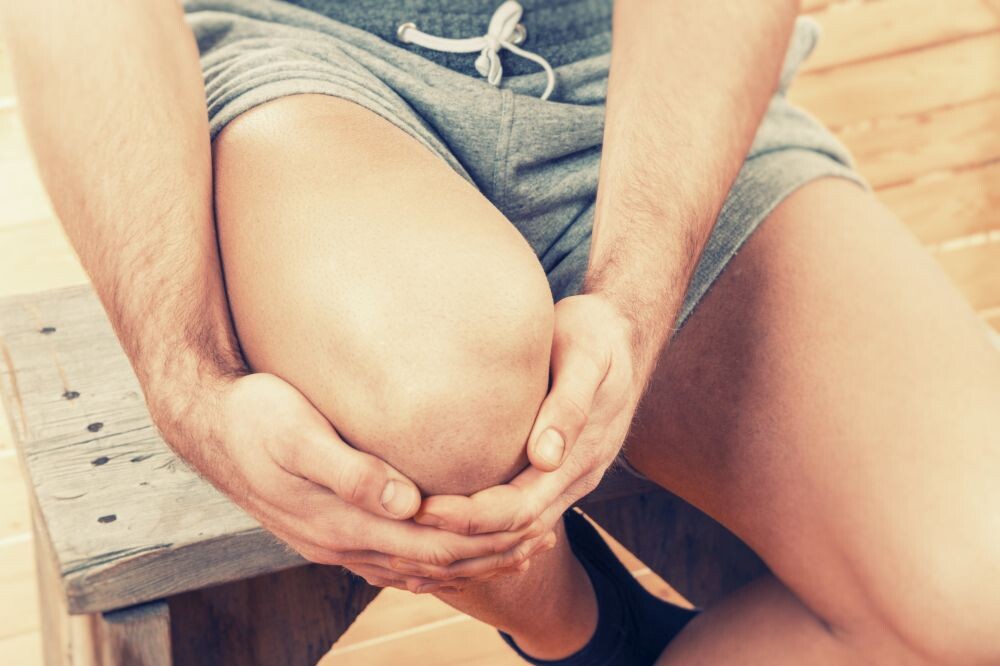
The study
Researchers reviewed more than 180 scientific studies to determine the impact of vitamin D on musculoskeletal health and athletic performance. They found that stress fractures impact approximately 20 per cent of all athletes, both elite and amateur.
The review explores the importance of vitamin D in athletes’ diets, what type of athletes are most likely to be affected by stress fractures and what precautionary measures athletes can take. While runners of any kind were one of the most common groups sidelined by stress fractures, athletes in a wide range of load-bearing sports are affected by them.
The takeaway
We get vitamin D largely from the sun’s ultraviolet-B (UVB) rays, and many people, particularly those living above the equator, are vitamin D deficient. While only one per cent of the general population is impacted by stress fractures, one in five athletes (20 per cent) will experience one.
Vitamin D plays important role in preventing stress fractures and can be safely taken as a preventative measure. Runners should ask their doctor for regular bloodwork to check vitamin D levels, along with calcium, creatinine and parathyroid hormone. Insufficient levels of vitamin D can be restored by optimizing your diet (while few foods naturally have much vitamin D, some are fortified with it) and taking supplements.
Work with your doctor to find the right amount of vitamin D to take: researchers determined that the prevalence of stress fractures decreased when athletes are supplemented daily with 800 IU vitamin D and 2,000 mg calcium.
by Keeley Milne
Login to leave a comment
Lelisa Desisa, Vicoty Chepngeno, Molly Seidel, Molly Huddle Running 2022 BAA Half
The Boston Athletic Association today announced the professional field for the 2022 B.A.A. Half Marathon, presented by Dana-Farber Cancer Institute and the Jimmy Fund, to be held on Sunday, November 13.
Two-time Boston Marathon champions Lelisa Desisa and Daniel Romanchuk return, while 2021 Olympic Marathon bronze medalist Molly Seidel and two-time Olympian Molly Huddle lead the American charge. Seven women who’ve run under 1:07:30 and nine men with lifetime bests under 1:01:30 will compete on the roads of Boston.
The B.A.A. Half Marathon will be run for the first time in-person since 2019, beginning and finishing in Boston’s Franklin Park. The event begins at 8:00 a.m. with a field of nearly 9,000 participants. Open registration is already sold out, however entries remain available through presenting sponsor Dana-Farber Cancer Institute and the Jimmy Fund.
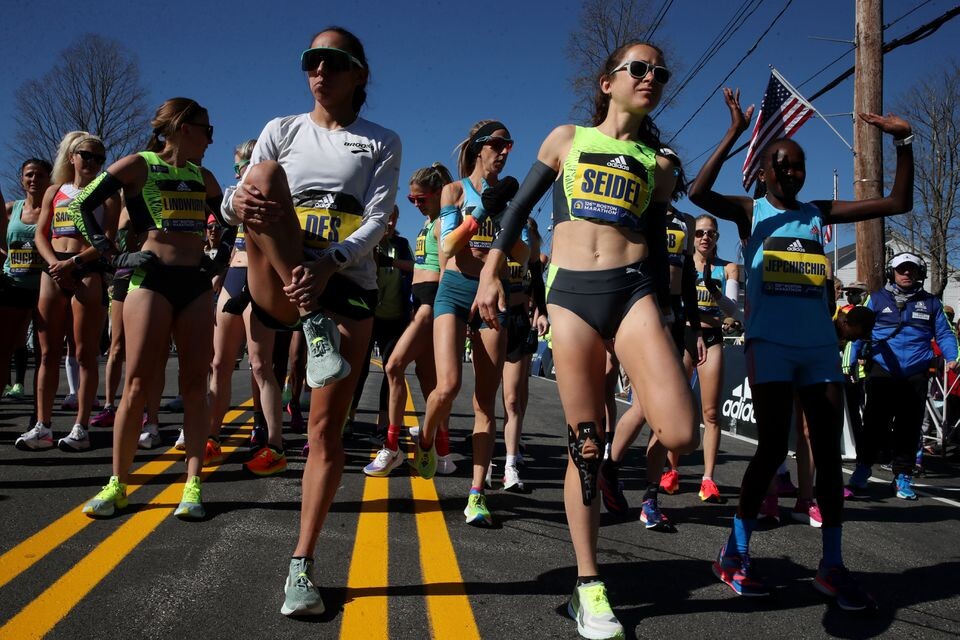
Seidel, a former Boston resident, will make her B.A.A. Half Marathon debut as she returns to racing. The 2:24:42 marathoner and former NCAA champion at Notre Dame finished fifth at the 2018 B.A.A. 5K and 10th at the 2019 B.A.A. 10K.
Huddle, a 28-time USA national champion, will race at the B.A.A. Half eight years after placing third in 2014. B.A.A. High Performance team member Erika Kemp –a two-time USA national champion at 20K and 15K— will also compete among the strong American field, fresh off a win at the Boston 10K for Women on October 8.
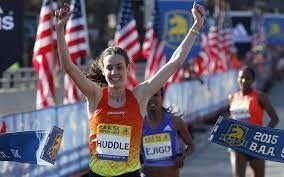
“The B.A.A. Half Marathon is always a fun fall event, and I’m eager to race again through Boston with hopes of returning to the podium,” said Huddle.
The international women’s contingent is led by 2022 Houston Half Marathon winner Vicoty Chepngeno of Kenya, who owns the fastest lifetime best (1:05:03), though is followed closely by Ethiopia’s Bosena Mulatie (1:05:46). Mulatie was eighth at the 2022 World Athletics Championships 10,000m in Oregon over the summer. Other athletes with world championships experience include Kenya’s Margaret Wangari and Cynthia Limo, and British duo Jess Piasecki and Calli Thackery. Wangari earned a silver medal at the 2022 Commonwealth Games Marathon, and placed fifth at the B.A.A. Half Marathon in 2018. Limo is the 2016 World Half Marathon Championships silver medalist.
On the men’s side, Desisa, winner of the Boston Marathon in 2013 and 2015, owns a pair of B.A.A. Half Marathon titles from 2013 and 2014, as well as the event record (1:00:34). The Ethiopian fan favorite is also the event record holder (1:00:34), and considers Boston his second home.
“Boston holds a special place in my heart and I’m excited to return again to race in the B.A.A. Half Marathon, where I have had great success before,” said Desisa. “I hope to run very well again!”
Kenyans Josphat Tanui (59:22) and Shadrack Kimining (59:27) have the two fastest personal bests in the field, which includes five men who have run under one hour for the half marathon. Geoffrey Koech, the 2022 Cardiff Half winner, and Ethiopian Tsegay Kidanu, 11th at the Copenhagen Half Marathon, are competing, as is Morocco’s Zouhair Talbi, the third-place finisher at the 2022 B.A.A. 5K. The top American entrant is Teshome Mekonen, who formerly represented Ethiopia internationally, has run 1:00:02, and won this year’s Brooklyn Half.
Daniel Romanchuk, two-time Boston Marathon wheelchair division champion and 2019 B.A.A. 10K winner, looks to win his first B.A.A. Half title, joined by Boston Marathon top-20 finishers Hermin Garic, Dustin Stallberg and Velera Jacob Allen. Jenna Fesemyer and Yen Hoang, both 2021 Paralympians for Team USA, will race as well. Fesemyer won this year’s B.A.A. 5K.
“I’m very much looking forward to racing the B.A.A. Half Marathon for the first time,” said Romanchuk, who finished runner-up at the Chicago Marathon on October 9. “I’ve raced the Boston Marathon, B.A.A. 5K, and B.A.A. 10K, and am excited to add the Half Marathon. I can’t wait to be back in Boston.”
For the first time, the B.A.A. Half Marathon course will be World Para Athletics certified, eligible for world or national records to be set by Para athletes. Marko Cheseto Lemtukei (T62), Brian Reynolds (T62), and Jacky Hunt-Broersma (T64) each have Boston Marathon Para Athletics Divisions experience and are eligible for prize money.
Login to leave a comment
B.A.A. Half Marathon
Dana-Farber and the Jimmy Fund have partnered with the B.A.A. in the Half Marathon for 13 years as the race’s presenting sponsor. Through this relationship, team members have collectively raised more than $5 million to support groundbreaking cancer research, and enabled Dana-Farber scientists and clinicians to positively impact the lives of cancer patients around the world. Dana-Farber runners often participate...
more...Ultrarunner Tim Tollefson shares mental health challenges in new film
Tim Tollefson is a celebrated American ultratrail runner with wins at big races like the Javelina Jundred, Lavaredo Ultra Trail 120K and Ultra Trail Australia 100K; in 2017 he was third overall at Ultra Trail du Mont Blanc (UTMB), finishing well under 20 hours.
But then followed a string of failures, including at this year’s UTMB, which went badly from the start, forcing him to drop out about four hours in. (Tollefson went into the race with a positive COVID result.) A new film, What Goes Unsaid, reveals something only those closest to Tollefson knew previously–alongside his many successes and the admiration of his fans, for years Tollefson has been dealing with poor mental health and an eating disorder.
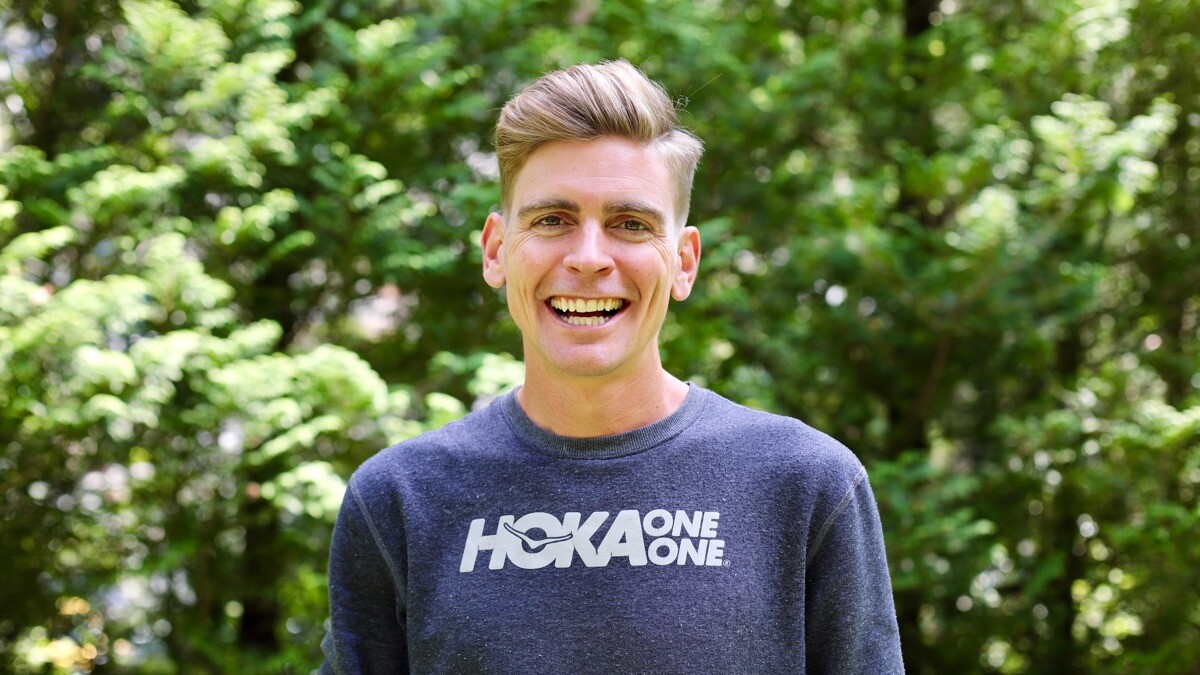
Tollefson, who is sponsored by Coros, had a tough adjustment when his family moved from rural Minnesota to the Auburn, Calif. (the sight of the iconic Western States 100 finish) when he was 10, and he was bullied– for wearing glasses, for his accent and his haircut. He started running in middle school, which helped him feel more accepted.
But it also made him want to be leaner, and more like the other runners’ body types he observed on the team; and since he wasn’t the only one trying to eat less to force his body to conform to an “ideal” body weight, he didn’t realize how insidious and dangerous it could be.
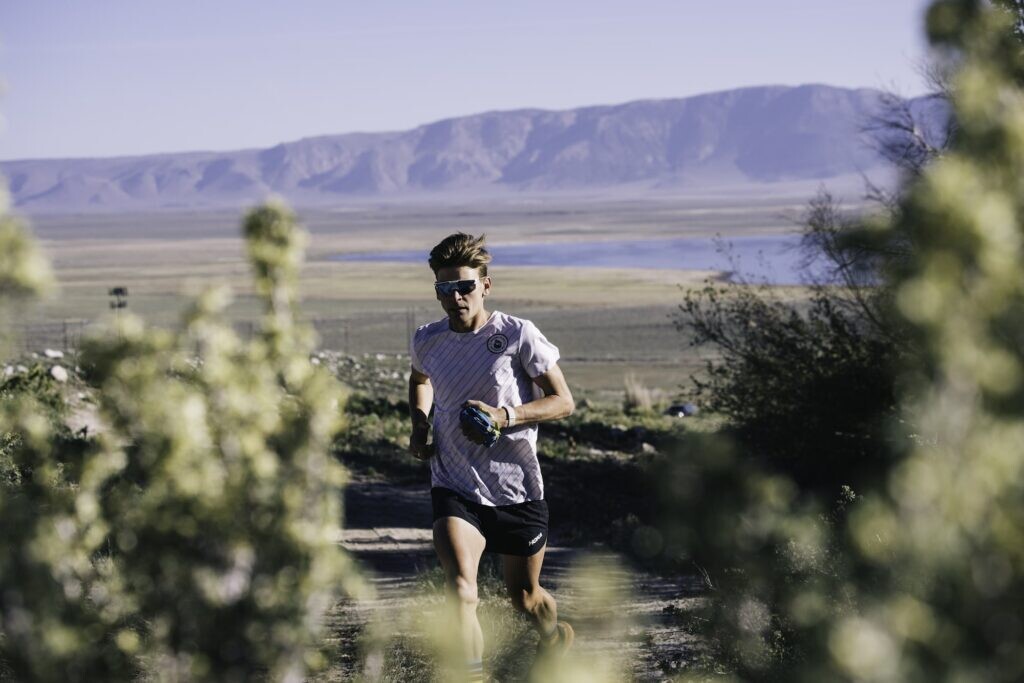
Tollefson qualified for the 2012 Olympic Marathon trials, but struggled in his brief marathon career, ultimately switching to trail running, which he hoped would bring greater success (and therefore self-acceptance). UTMB represented, in his mind, the acme of achievement in the ultratrail world–and he describes his 2017 podium finish, where he broke 20 hours (along with winner François D’Haene and runner-up Kilian Jornet) as the best race of his career. (He finished third in 2016 also.)
But the euphoria was short-lived. In 2018, he returned to UTMB and DNF’d–and again in 2019 and 2021. In the flim, he reveals that, even during the good years, he would almost be paralyzed with anxiety over being seen by others, and by perfectionism, severe body dysmorphia and obsessive-compulsive disorder (OCD).
Interestingly, this is one of the reasons he was attracted to UTMB: it starts in the evening, and much of the first half of the race takes place in darkness. By the time the sun rises, he has run long enough to feel slightly less bad about being seen. “I feel thin again, because I’ve run for 12 hours,” says Tollefson.
Tollefson says it’s not the running, or the altitude, that strikes fear into his heart–it’s being seen by other runners. He says he has been counting calories since 2003, and he only sought therapy recently. He now recognizes that what he sees when he looks in the mirror is distorted and not real.
Having grown up in the area and competed at Placer High (where Western States runners finish), Tollefson avoided it until 2021. He admits he was always critical of the race, whose course is not as technical or as spectacular as UTMB’s. Ultimately, he realized he was holding it to an unfair standard–much as he had always done to himself and his body. And he decided to run it.
He finished fifth last year, and as his fans already know, this year he finished, but not without struggling mightily–against dehydration and a powerful urge to quit. He placed 33rd overall, with a time of 20:41:28. “I decided that I wasn’t going to give up on myself,” Tollefson told filmmaker Billy Yang, who was commentating, after finishing. He also felt he owed it to his crew the volunteers and the runners who didn’t make it off the waitlist, to finish.
He shares his story now in the hope that it will encourage others to do the same. Several female athletes (including Olympic bronze medallist Molly Seidel, trail runner Amelia Boone and steeplchaser Allie Ostrander) have shared their stories, but as Tollefson’s makes clear, eating disorders are not limited to female athletes. (Canadian beer miler Corey Bellemore opened up about his own experience during the pandemic.)
“When other people share things publicly, and I relate or emphathize, it makes me feel less alone,” he says. “I’ve never had the confidence to reach out to those people and say thank you, but I know it has an impact.”
by Anne Francis
Login to leave a comment
Is Top Miler Jenny Simpson About to Become a Marathoner?
The Olympic medalist signs with Puma and moves to the roads—although she still hits the track in spikes.
Jenny Simpson refuses to come out and say she’s training for a marathon. But all signs point to her training for a marathon.
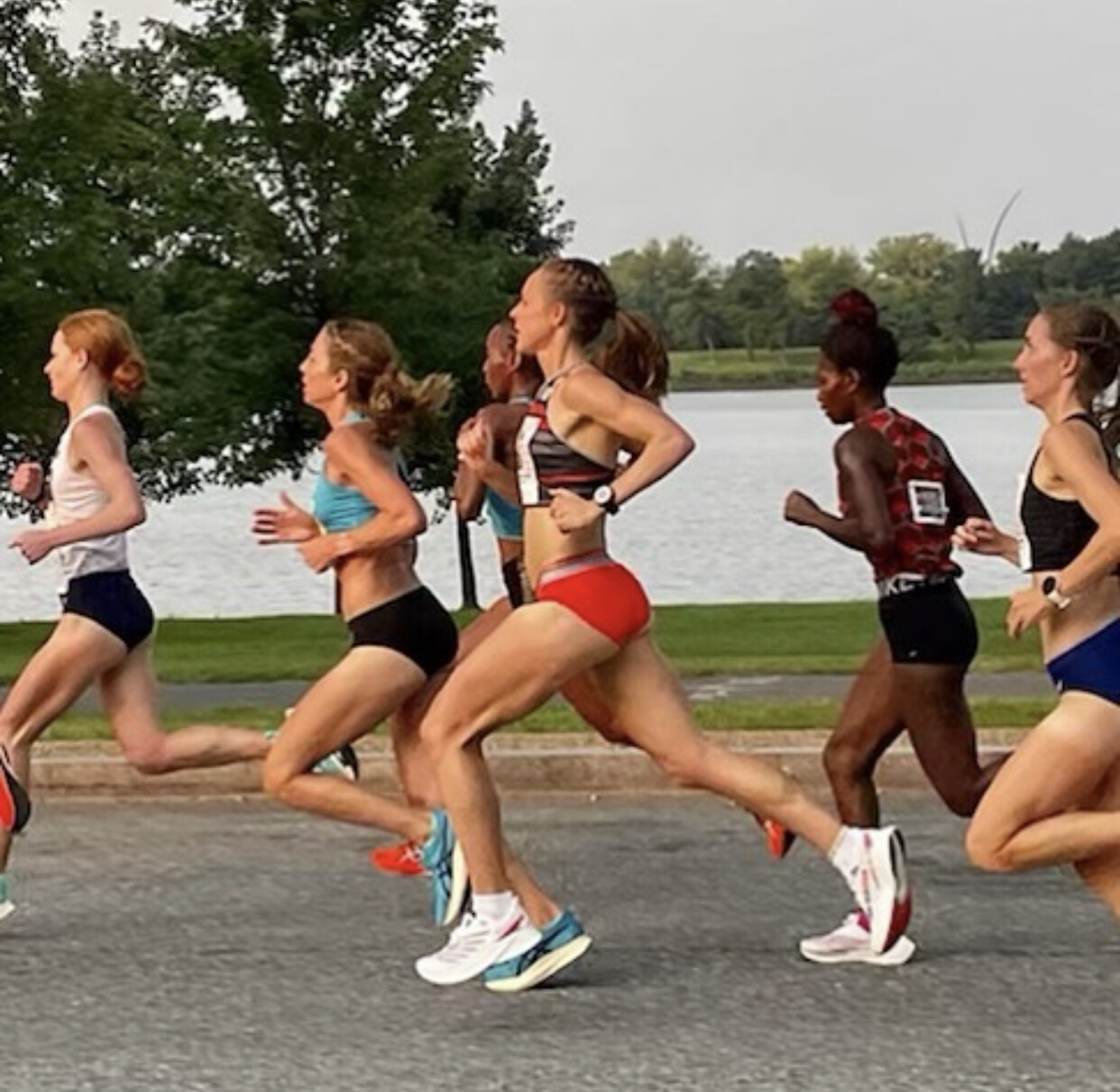
She’s consistently running the highest mileage of her life (85 miles per week). And she has a new sponsor, Puma.
“It’s correct that my emphasis is on the roads,” she said on an October 6 call with Runner’s World. “These next few years is an exploration in the distances and some of the challenges in running that I haven’t tried yet. That’s what I’m most excited about.”
Simpson, 36, has been a stalwart on the track since she was in college at the University of Colorado, going to Europe every summer and building her training around Olympics and World Championships cycles. Between 2011 and 2017, she won four global medals: a gold and two silvers in the World Championships 1500 meters, and Olympic bronze in the same event.
Through 2019, she made every U.S. team going back to 2007. But the pandemic put a sudden halt to that streak. In 2021, she made the finals of the 1500 meters at the Olympic Trials for the postponed Games in Tokyo, but she finished 10th.
“I had such an incredible run on the track,” Simpson said. “And then, just like a lot of people starting in 2020, the vision that I had for those next few years of my career got derailed.”
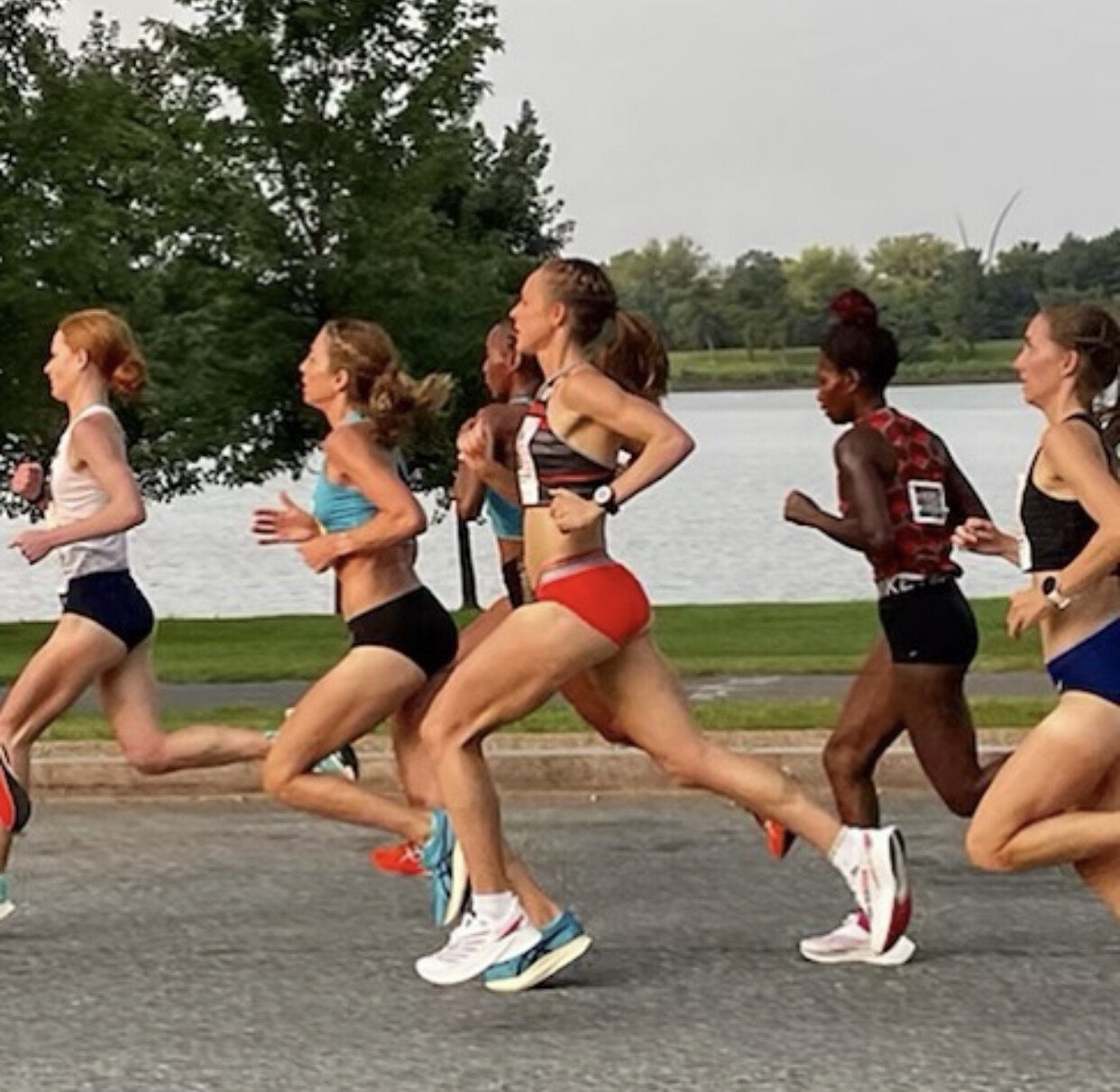
That fall, she began her transition to the roads, racing the Cherry Blossom 10-miler and finishing second in a sprint finish to Nell Rojas. But at the end of the year, Simpson’s life was upended.
Simpson suffered a stress reaction in her right hip, which took a long time to heal. She was diagnosed with a sports hernia in one of her adductor muscles, which pulled tissue away from one of the pubic bones. “A lovely place to be injured and have people poking and prodding,” Simpson said.
It was by far the most serious injury of her career, but she was able to avoid surgery with hours of physical therapy, working on her adductors, hamstrings, core, and glutes—anything near the hips. When she returned to running, she had several months of stopping and starting until she was finally pain-free.
At the same time, she learned that her future with New Balance—the company that had sponsored her since the beginning of 2010—was not secure.
And then on December 30, 2021, a wildfire broke out close to Simpson’s home, an old schoolhouse in South Boulder, Colorado, that she shares with her husband, Jason, and their dog. They had to flee with little warning. Most of the Simpsons’ immediate neighbors lost their homes, and entire neighborhoods in the bordering towns of Louisville and Superior were destroyed. The couple was displaced for three months while damage was repaired.
“So many things in my life were disrupted at the same time,” she said. “Between the fire and no longer having a sponsor and an injury, all those things swallowed up the first half of my 2022.”
By late spring, things were starting to come around. The Simpsons were back in their home. Her injury was healing. And sponsors were still interested. Simpson, who had represented herself for years, enlisted an agent, Hawi Keflezighi, to help her with a new shoe deal.
“Parting ways with New Balance will be one of the great heartbreaks of my life,” she said. “It was really hard. I didn’t want to make a change. But life is full of surprises. The change to doing a different event felt like this is going to give me some new energy and a new scene. Now that I’m on the other side of a contract with a new brand, I feel very much the same way. Puma believed in what I want to do. That’s really invigorating.”
Puma has made a substantial investment in American women’s distance running over the past two years. The company has added marathoners Molly Seidel, Annie Frisbie, and Dakotah Lindwurm to its roster, and funds a Puma training group with Fiona O’Keeffe and others in North Carolina. But it’s not just 20-somethings. They’ve also signed track runner turned marathoner Sara Vaughn, and now Simpson.
To be clear, Simpson doesn’t intend to just dabble in the roads. She wants to be excellent. And that’s the only thing that’s keeping her from saying “yes,” she’s doing a marathon.
“I will do one if I believe I can be competitive at it,” she said. “We don’t have enough information yet to know if I’ll be really good at it. I have the desire to do it, if my body and mind can handle it.”
Simpson is relishing the chance to reimagine what the end of her career might look like. For a long time, she said, she laser focused on the 1500 meters (and yes, she still spikes up for track workouts). “I’ve been one thing, a very good one thing, for a long time,” she said.
But now it’s time to try something different. She sees American marathoners running well into their late 30s, and doing it after having children, and she realizes she has to adjust her own thinking about what’s possible.
“This new wave of women racing later and having families and racing competitively at the same time, I feel like people just don’t remember how much of a zero option that was when I was younger,” she said. “And it’s not just the world is progressing. I have to progress. I don’t have to just pack it in.”
Simpson said she wants to show that she can try to be good at something else.
“I don’t know if I’m going to be great at the marathon,” she said, “but I really want to try.”
MORE FROM RUNNER'S WORLD ON APPLE NEWS
by Runner’s World
Login to leave a comment
Are records going to be broken at the Berlin Marathon this weekend?
The fall marathon season kicks off this Sunday, Sept. 25, in Germany for the 48th annual Berlin Marathon, which is the first of four Abbott World Marathon Majors over the next six weeks. The biggest name is distance running Eliud Kipchoge returns to the course he set the world record on four years ago, but the question everyone is asking is whether he can run 2:01:39 again?
He also looks to become the second man to win four Berlin Marathon titles, joining the great Haile Gebrselassie, who won four consecutive between 2006 and 2009.
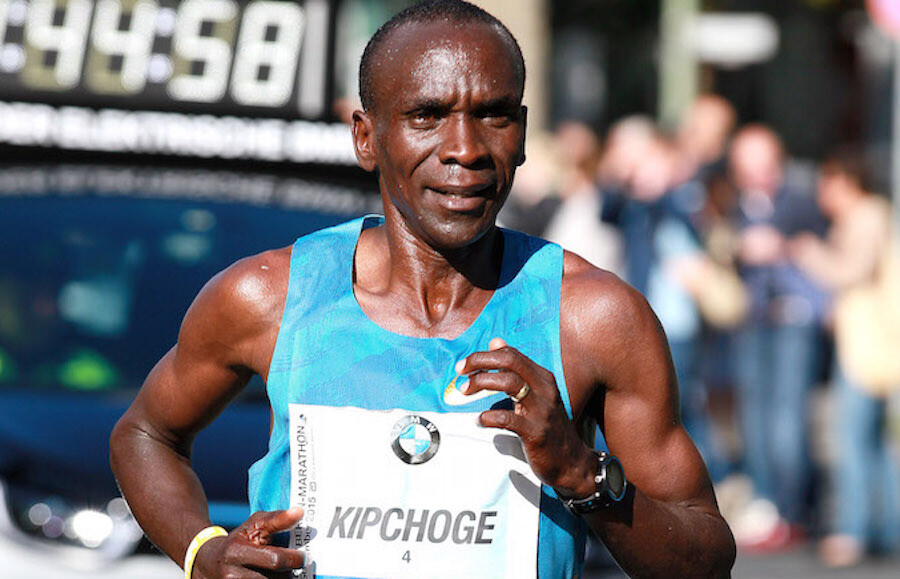
Kipchoge isn’t the only athlete chasing a record in Berlin. U.S. marathon record holder Keira D’Amato has made a quick turnaround from her eighth place finish at World Championships and has her eyes on the American record of 2:19:12, which she ran in Houston earlier this year.
Vancouver’s Natasha Wodak is the lone Canadian in the elite field, and she is looking to take advantage of the fast Berlin course. In 2020, Wodak ran the second fastest marathon time by a Canadian woman, 2:26:19, at The Marathon Project in Arizona. She followed up that performance with an impressive 13th place finish in the marathon at the 2020 Olympics Games.
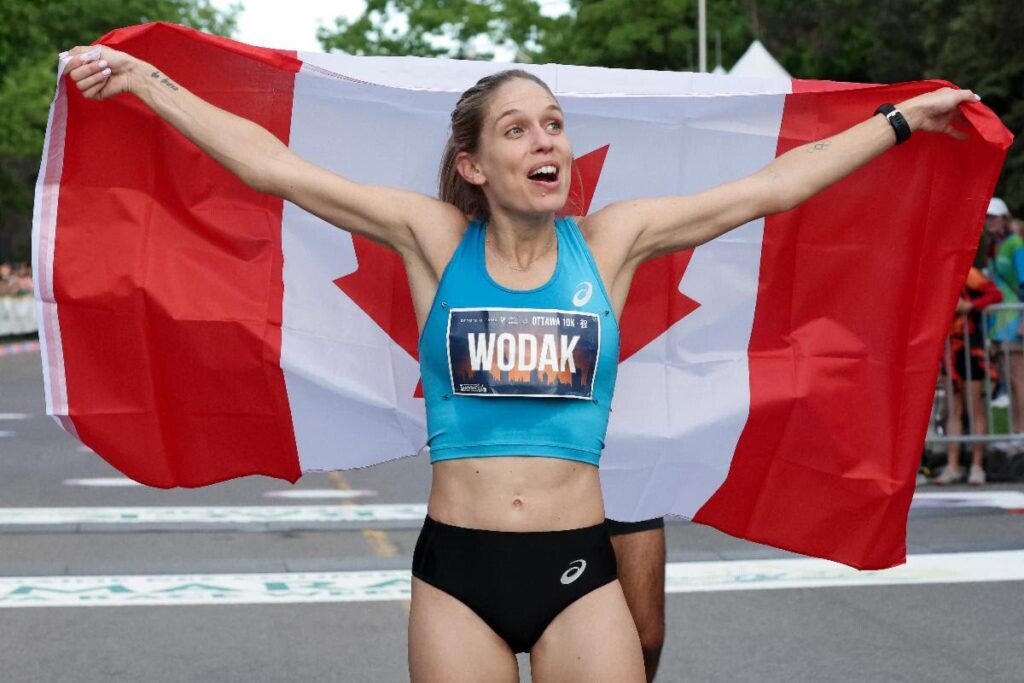
Wodak hopes to shake 90 seconds off her marathon PB Sunday to challenge Malindi Elmore’s Canadian record of 2:24:50 from 2019.
The weather
The race starts at 9:15 a.m. local time on Sunday (which is 3:15 a.m. E.T. in Canada). The temperature looks to be perfect for marathoning — between 10 C and 14 C, with next to no wind.
Men who hope to finish near Kipchoge
It is well-known that Kipchoge is the favorite, but who are the guys most likely to finish second or stick with him until 30K?
Ethiopia’s Guye Adola, who was second to Kipchoge in 2017, won Berlin last fall in 2:05:45. The win marked his first major victory after struggling with injury earlier in his career. Like Kipchoge, Adola is fast and knows what it takes to win on this course. In 2017, he ran the fastest marathon debut in history on this course but since has not run near 2:03.
Adola is the only other sub-2:05 runner, which Kipchoge is bound to finish under. If anyone else wins this race, it would take a miracle, or mean both Kipchoge and Adola have blown up.
Ghirmay Ghebreslassie of Eritrea won the 2015 World Championships in Beijing and the New York Marathon in 2016 after missing the podium at the Rio Olympics. Although Ghebreslassie has the experience, in a sub-2:05 race, he may not have the speed to keep up with Adola and Kipchoge.
Marley’s Pick: Eliud Kipchoge (KEN) – 2:02:29
Can Keira D’Amato become the first American winner?
D’Amato has the fastest time out of the 24 runners in the women’s elite field with a time of 2:19:12, but she has only had nine weeks to prepare for Berlin after her 2:23:34 at the World Championships in Eugene. She was only selected for the U.S. team after Molly Seidel dropped out a few weeks before the championships.
To run 2:23 at worlds off not much training is impressive and should be a confidence booster for D’Amato on a faster Berlin course.
Many of the top Kenyan and Ethiopian runners will be competing later this fall, but there are other sub-2:22 runners in Berlin. Kenya’s Nancy Jelagat Meto (2:19:31 – Valencia) and Vibian Chepkirui, the winner of the Vienna City Marathon in 2:20:59 in April, have the experience and speed to deny D’Amato the title.
Rosemary Wanjiru of Kenya, a 65:34 half marathoner, is making her marathon debut here in Berlin. Although this is her first marathon, she will likely be in contention most of the race.
Marley’s Pick: Rosemary Wanjiru (KEN) – 2:18:39.
by Marley Dickinson
Login to leave a comment
BMW Berlin Marathon
The story of the BERLIN-MARATHON is a story of the development of road running. When the first BERLIN-MARATHON was started on 13th October 1974 on a minor road next to the stadium of the organisers‘ club SC Charlottenburg Berlin 286 athletes had entered. The first winners were runners from Berlin: Günter Hallas (2:44:53), who still runs the BERLIN-MARATHON today, and...
more...Keira D’Amato Will Attempt to Lower Her American Record at Berlin Marathon
After winning the Falmouth Road Race on Sunday morning, Keira D’Amato confirmed that she will be running the Berlin Marathon on September 25 in an attempt to lower her own American record.
D’Amato set the current record of 2:19:12 in Houston in January, eclipsing Deena Kastor‘s 16-year-old American record of 2:19:36.
“I think I can run faster than I did in Houston, and I’m going to go to try to prove it in Berlin,” D’Amato told Citius Mag after Falmouth, confirming what many insiders expected as she wasn’t listed in the NY or Chicago elite fields and former NY elite athlete coordinator David Monti had previously tweeted out (but then deleted) that D’Amato was headed to Berlin.
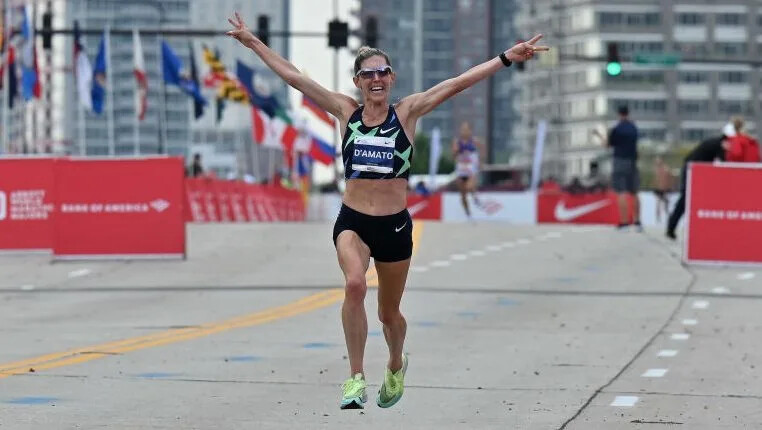
This will be D’Amato’s second Berlin Marathon. In 2019, she finished 17th in 2:34:55 in what was then a PR of more than six minutes. This time around, she will be looking to run more than 35 seconds per mile faster.
As the American record holder, D’Amato would have attracted a hefty appearance fee from either of the two American major marathons this fall, Chicago and New York. She also would have had more time to recover from her last marathon, an eighth-place finish at the World Championships on July 18 (there are 10 weeks between Worlds and Berlin; there are 12 weeks between Worlds and Chicago and 16 between Worlds and NYC).
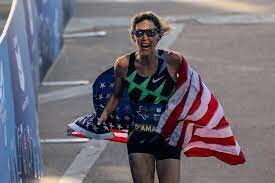
But D’Amato typically bounces back quickly between races — she won Falmouth less than five weeks after Worlds — and did not log a full buildup for Worlds as she was named as a late injury replacement for Molly Seidel barely two weeks before the championships. Additionally, American records result in big endorsement bonuses from shoe sponsors.
Berlin has become the go-to course for world record attempts in recent years, as it has hosted the last seven men’s world records and was also the venue of choice for Shalane Flanagan‘s American record attempt in 2014 (Flanagan fell short of the AR but still ran her lifetime best of 2:21:14). But three of the last four women’s world records have fallen in Chicago, including the current mark of 2:14:04 set by Brigid Kosgei in 2019. Either would have been fine options for an American record attempt; the better option may come down to weather on race day.
by Jonathan Gault
Login to leave a comment
BMW Berlin Marathon
The story of the BERLIN-MARATHON is a story of the development of road running. When the first BERLIN-MARATHON was started on 13th October 1974 on a minor road next to the stadium of the organisers‘ club SC Charlottenburg Berlin 286 athletes had entered. The first winners were runners from Berlin: Günter Hallas (2:44:53), who still runs the BERLIN-MARATHON today, and...
more...Have a blast on your easy runs, just like olympian Molly Seidel
U.S. Olympic marathoner Molly Seidel can run a magnificently fast race, but she’s also an expert on running slowly. She completed the #slowestmilechallenge in 2020 and revived it this year, managing to run a mile in an impressively slow 36:56. Her enthusiasm, along with her sister Isabel Seidel‘s commentary, will motivate you to keep those easy runs sloth-like (OK, maybe not quite that slow).
The slowest mile challenge is funny, but you can also use it as inspiration to inject some zest into your own easy runs.
Easy runs can get boring. Most of us know we should maintain a slow (for us) pace most days, but it can be ever-so-tempting to pick it up–you might even catch yourself speeding up accidentally. Many runners associate that completely wiped-out feeling you get after speedwork with a great workout, and it’s time to change that perspective.
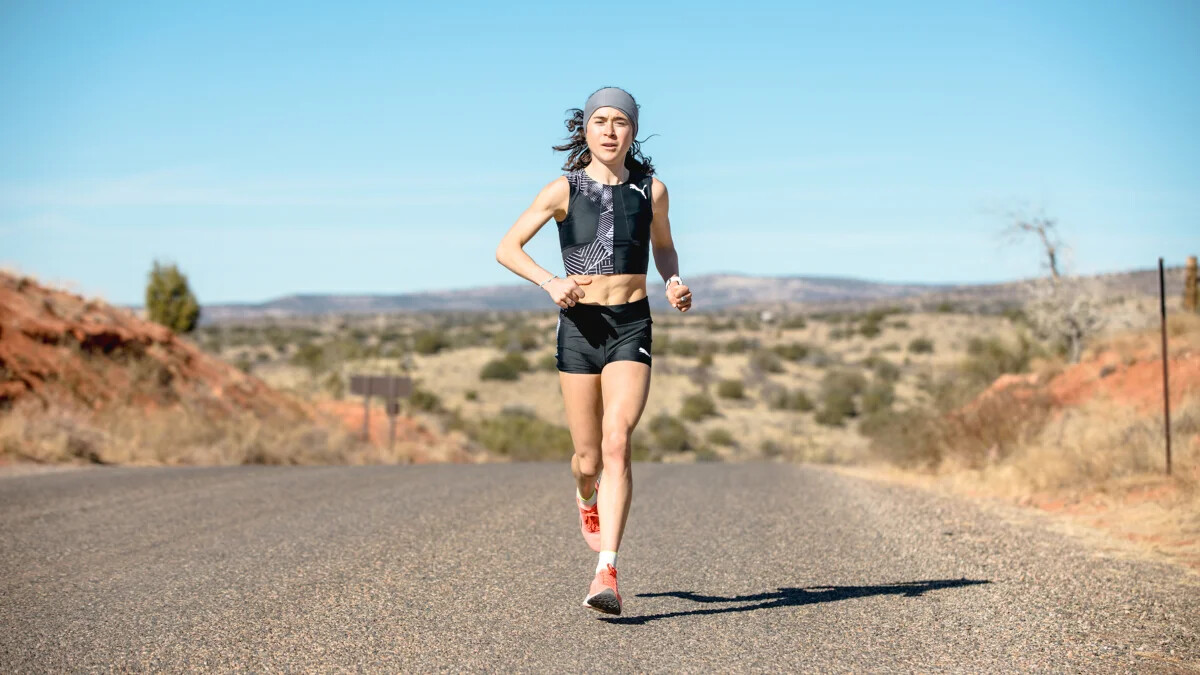
Turn it into a challenge
It certainly doesn’t have to be as extreme as Molly’s slowest mile, but adding a personal challenge to your run can motivate you to get out the door. Set a (slow) goal pace, and see if you can maintain it throughout your run, catching yourself when you start speeding up. Not only will this keep you focused during your time out there, but you’ll reap the benefits of practicing discipline and patience on race day.
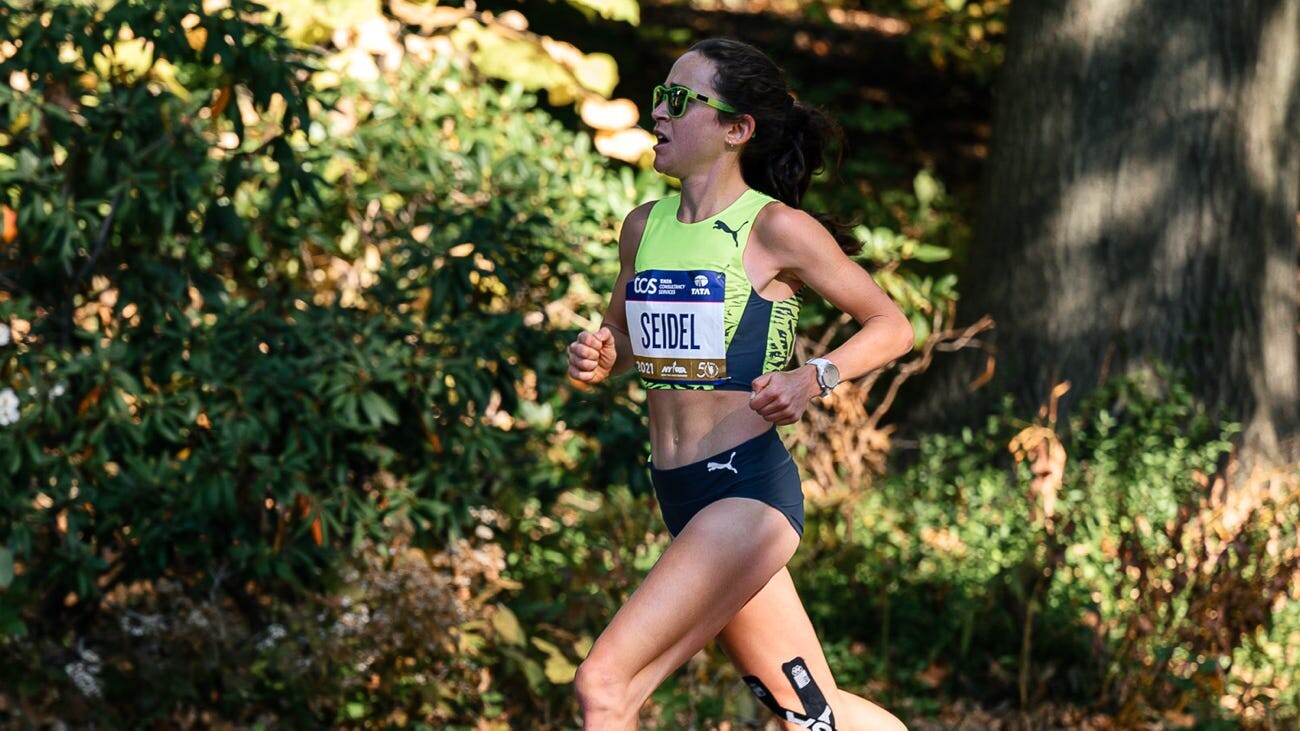
Try new, unique (and fun) routes
An easy run is a perfect opportunity to explore a new area or route. Use your easy runs as a chance to finesse your route-mapping skills on Strava, or aim for a specific destination.
Make your end (or mid-point) goal a coffee shop, ice cream stop, or local park, and for bonus points, invite some friends to meet you. The small reward will give you a boost to get going and to maintain your easy-pace goals.
Be open to suggestions
Runners can be notoriously stuck in their habits–I once listened to the same playlist for an entire year. We’re often reluctant to throw something new into the routine. To spice up those easy runs, be open to ideas from others.
If a friend recommends a fantastic audiobook and you generally only listen to music, a slow run is a perfect time to give the book a fighting chance. If you always run alone, but know of a local running group, join them on a slow day. It might feel initially uncomfortable to throw a small wrench into your routine, but you’ll have the opportunity to work through the discomfort, another integral skill to fine-tune for races.
Slow runs have a multitude of benefits: you’ll increase running efficiency, have the opportunity to work on better form, and build strength without needing a lot of recovery time. By upping the enjoyment of your easy run days, you’ll be less likely to skip them or to run too quickly.
by Running Magazine
Login to leave a comment
Some running quotes to inspire you
It can be hard to maintain your zest for running when the temperatures soar.
We dug up some running wisdom from some great athletes and minds to get you out the door. When your workout motivation wanes in the face of weather or whatever comes your way, read a few lines and consider it your calling to rise up and run.
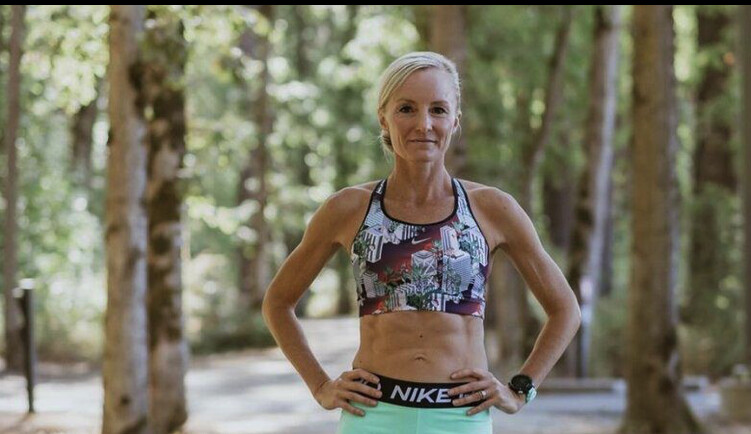
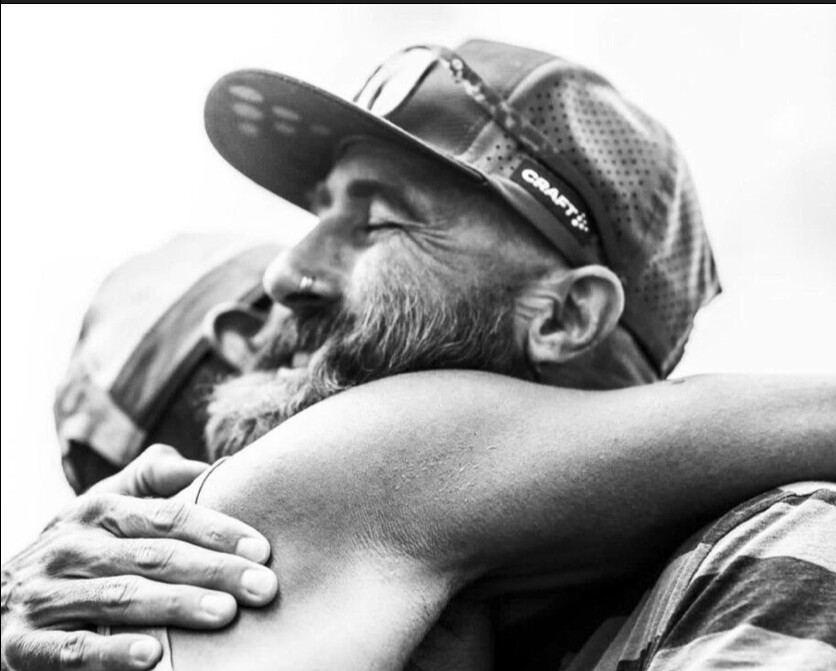
You are a runner, no matter your distance, pace or natural ability
“All runners are tough. Everyone has to have a little fire in them, that even in tough times, can’t be turned off.”
— Shalane Flanagan
“If one could run without getting tired I don’t think one would often want to do anything else.”
– C. S. Lewis
“To give anything less than your best is to sacrifice the gift.”
–Steve Prefontaine
“I just wanted to come out today and, I don’t know, get up in it, stick my nose where it didn’t belong, and just see what I could come away with. I guess that’s a medal.”
–Molly Seidel
“The advice I have for beginners is the same philosophy that I have for runners of all levels of experience and ability: consistency, a sane approach, moderation, and making your running an enjoyable, rather than dreaded, part of your life.”
— Bill Rodgers
Remember why you do it
“Why do we do this? To feel something. To move ourselves, to ensure that we don’t get stuck. And most of all, we do this to be a part of something. To insert our individual effort into a sea of human energy and force out the other side, hopeful that somehow we’ll be different. Changed in some way.”
–Peter Bromka
“Because during every run, for a few seconds or a few minutes, you have a moment where it feels really good. You forget about the discomfort and you find rhythm, maybe some grace, and a feeling of strength and confidence as you move as well as you’ll ever move doing anything. And that’s one of the best reasons to run.”
― Brendan Leonard
“Keep moving. You’re still here. We all are. As long as you’re moving you’re still here.”
–Tommy Rivers Puzey
“…For me there has always been a place to go and a terrible urgency to get there.”
—Joan Benoit Samuelson
“The reason we race isn’t so much to beat each other… but to be with each other.”
–Christopher McDougall
Login to leave a comment
What is a stress reaction, and how can you prevent one?
Molly Seidel missed world championships because of a stress reaction; how can the rest of us stay injury-free?
Avoiding injury is the goal of every runner, and that includes preventing a season-ending (and painful) stress reaction. Olympians Molly Seidel and Gabriela DeBues-Stafford have both been sidelined this year with stress reactions; ultrarunner Gary Robbins had to pull out of his 2019 Barkley attempt due to one. So what is a stress reaction, and how can a regular runner prevent it?
Stress injuries: the basics
Readers may be more familiar with the term “stress fracture,” which is further along the stress injury spectrum. (In other words, a stress reaction may lead to a stress fracture if left untreated.) The cause of the initial reaction (and subsequent possible fracture) is usually overuse, as opposed to more serious traumatic types and of fractures from falls or other accidents.

Stress injuries are classified upon diagnosis: early (stress reaction) or late (stress fracture). A stress reaction can be considered similar to a deep bone bruise. A stress fracture is a small hairline crack in the bone.
Stress reactions are usually diagnosed through an MRI, and we see pro athletes catch their injury at this early stage because they’re more likely to have quick access to medical technology. Regular runners often don’t realize they have a serious injury until an X-ray shows a stress fracture.
Why are runners vulnerable?
Runners tend to get stress injuries in their leg bones, feet and hips due to the repetitive nature of our sport. DeBues-Stafford’s and Seidel’s stress reactions were in their sacrums (the triangular bone at the base of the spine, just above the tailbone); Robbins‘ was located at the head of his femur (thigh bone), close to the sacrum.

The pain from this injury is often barely noticeable at first, but progresses over time until you can even feel it at rest. Runners may be used to running through niggling pain and soreness and will ignore the symptoms of a stress injury until it’s past the reaction stage.
Proactive steps
Overtraining and underfuelling are major contributing factors to stress injuries.
A paper in the Journal of Orthopaedic and Sports Physical Therapy reported that while micro-damage to tissues and bones is essential to athletic improvement, stress reactions occur when the strain caused during accumulated activities is disproportionate to the body’s ability to recover.
What does that mean for the regular runner? Be mindful of nutrition, recovery and training load. Running a big marathon build, but not fuelling appropriately for your body to actually repair the incremental damage done by that build, is a recipe for disaster.
Allowing appropriate recovery time (including sleeping 8-9 hours per night) after hard sessions or training blocks and eating enough nutritious food to fuel that recovery are essential to avoiding stress injuries. (They’re also key to becoming a faster, stronger runner.)
by Keeley Milne
Login to leave a comment
Running motivation: running quotes to inspire you
It can be hard to maintain your zest for running when the temperatures soar.
We dug up some running wisdom from some great athletes and minds to get you out the door. When your workout motivation wanes in the face of weather or whatever comes your way, read a few lines and consider it your calling to rise up and run.
You are a runner, no matter your distance, pace or natural ability
"Love hard. Live hard. Keep moving forward" –Tommy Rivers Puzey
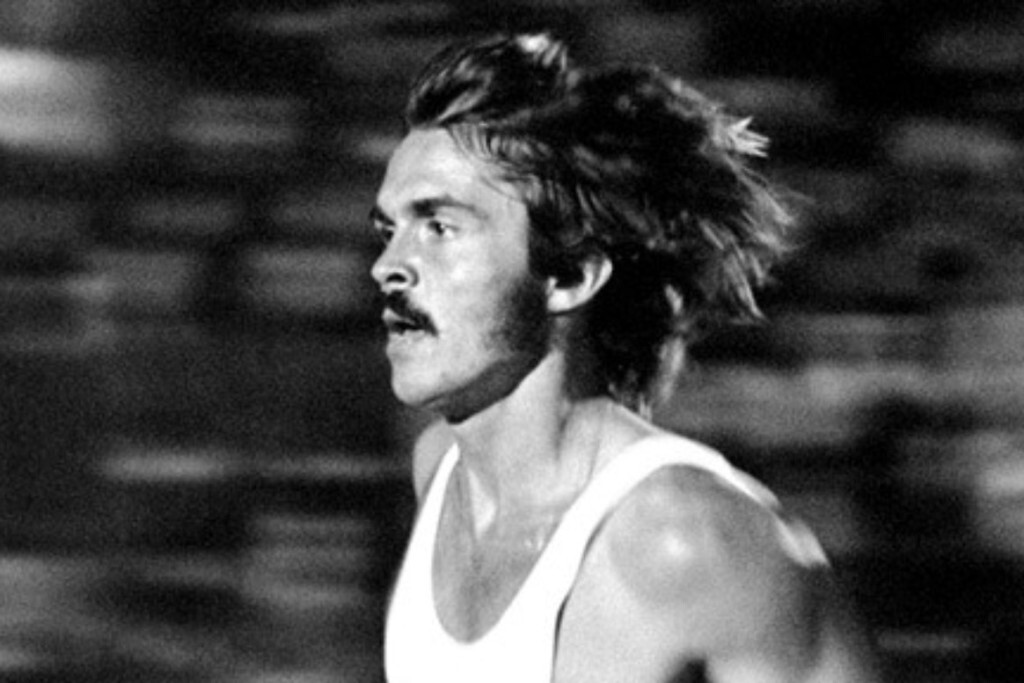
“All runners are tough. Everyone has to have a little fire in them, that even in tough times, can’t be turned off.” — Shalane Flanagan
“If one could run without getting tired I don’t think one would often want to do anything else.” – C. S. Lewis
“To give anything less than your best is to sacrifice the gift.” –Steve Prefontaine
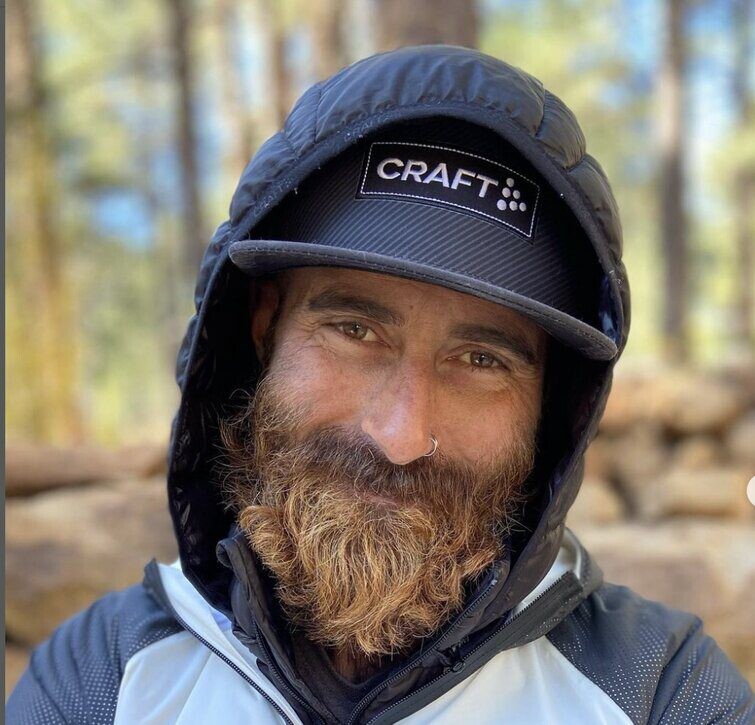
“I just wanted to come out today and, I don’t know, get up in it, stick my nose where it didn’t belong, and just see what I could come away with. I guess that’s a medal.” –Molly Seidel
“The advice I have for beginners is the same philosophy that I have for runners of all levels of experience and ability: consistency, a sane approach, moderation, and making your running an enjoyable, rather than dreaded, part of your life.” — Bill Rodgers
Remember why you do it
“Why do we do this? To feel something. To move ourselves, to ensure that we don’t get stuck. And most of all, we do this to be a part of something. To insert our individual effort into a sea of human energy and force out the other side, hopeful that somehow we’ll be different. Changed in some way.” –Peter Bromka
“Because during every run, for a few seconds or a few minutes, you have a moment where it feels really good. You forget about the discomfort and you find rhythm, maybe some grace, and a feeling of strength and confidence as you move as well as you’ll ever move doing anything. And that’s one of the best reasons to run.” ― Brendan Leonard
“Keep moving. You’re still here. We all are. As long as you’re moving you’re still here.” –Tommy Rivers Puzey
“…For me there has always been a place to go and a terrible urgency to get there.” —Joan Benoit Samuelson
“The reason we race isn’t so much to beat each other… but to be with each other.” –Christopher McDougall
by Keeley Milne
Login to leave a comment
Gotytom Gebreslase Wins World Marathon Gold in Championship Record
With a strong downhill surge in the 41st kilometer, Gotytom Gebreslase of Ethiopia won the 2022 world marathon title in 2:18:11. The time set a new championship record; the previous mark of 2:20:57 was held by Paula Radcliffe.
Judith Korir of Kenya, who led Gebreslase by half a step for most of the closing miles, finished second in 2:18:18, and Lonah Salpeter of Israel took the bronze medal in 2:20:18.
Sara Hall was the top American finisher, placing fifth in 2:22:10. Emma Bates placed seventh in a personal best of 2:23:18, and U.S. record-holder Keira D’Amato finished eighth in 2:23:34. D’Amato was added to the team at the beginning of the month after Molly Seidel withdrew because of injury. The three ran together through the middle miles until Hall, ninth at halfway, pulled away and started picking off former members of the lead pack.
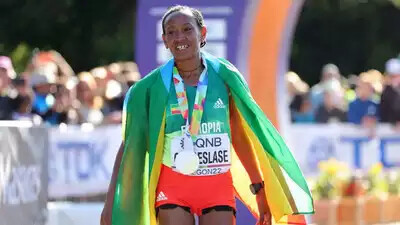
Today’s 5-7-8 is the best team performance by a U.S. squad, male or female, since the marathon world championship was first run in 1983. They succeeded thanks to just the right mixture of aggressiveness and patience.
“I went out with the leaders, but then I could tell it was a little too fast,” Hall said. “So fortunately I had talked to Emma and Keira and been like,‘Hey, I’d love to work with you guys. I don’t want to mess up your mojo, but if we’re together somewhere I’d love to work together.’ So thankfully Emma and I found each other.
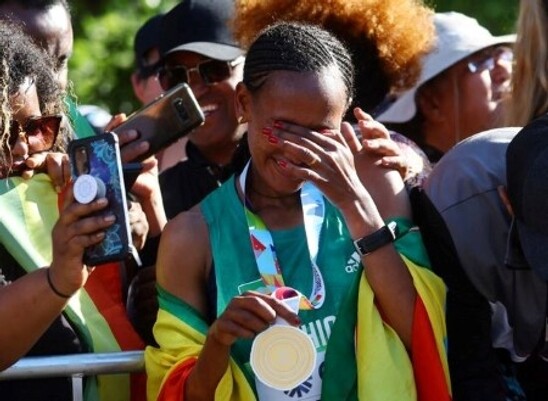
"I was checking our splits and we were running plenty fast out there, so I didn’t really want to run faster than that,” Hall continued. “It was awesome to get to work with [Emma] for so much of the race.”
Bates, who was the top American at Chicago last October, said, “My coach and I had decided that I go out in 70-minute pace for the first half. Which I had never done before, that’s close to my PR for the half marathon. We knew I could be in 2:20 range, fitness-wise.
“I went out with Sara. We were planning on working together before the race, so it was great the first lap to be with each other and then the second lap. Sara took off the later portion of the second lap. So proud of her today for going after it. She really pulled me along that first bit.
“I’m very happy,” Bates continued. “I always want more, we always want more. But to be top 10 in the world is something really really cool, especially on U.S. soil. And to run a PR doing it, it’s something that I won’t forget.”
Well past 30K, Hall was still acknowledging cheering spectators (including Olympian and fellow Flagstaff resident Rachel Schneider).
“I think this is the most fun I’ve ever had in a marathon,” Hall said. “I wanted to smile as much as I could early on, ’cause you know its gonna turn to a grimace eventually. But I was even smiling that last lap. I’m really thankful for everyone that turned out, ’cause I knew that this would be so special. I don’t know if I’ll ever get the opportunity to run a championship like this in the U.S. again.”
How the Race Was Won
Within the opening kilometer, it was obvious that the script for yesterday’s men’s marathon—a huge lead pack running cautiously for the first half—would be ignored. Headed by three Kenyans and three Ethiopians, the leaders took off at 2:17 marathon pace. D’Amato started with the pack but dropped back in the fifth kilometer; in the 12th kilometer, a chase pack led by Bates and Hall caught D’Amato, who then tucked in.
Toward the end of the first of three 14-kilometer loops, the chase pack got within 11 seconds of the leaders. Korir then spurted ahead just before an aid station. That reestablished a quicker tempo for the leaders, and the chase pack’s hope of joining the leaders was permanently ended.
The first significant event occurred in the 19th kilometer, when defending champion Ruth Chepngetich of Kenya stepped off the course, apparently looking for tall grass in which to make a pit stop. Sensing an opportunity, Gebreslase and fellow Ethiopian Ababel Yeshaneh surged on a downhill stretch. Subsequent kilometers of 3:05 and 3:09 (an average of roughly 5:00 mile pace) pared the group to four. They passed halfway in 69:01; the chase pack, including the three Americans, hit halfway in 70:17.
Toward the end of the second lap, Korir again surged approaching an aid station. Her teammate Angela Tanui briefly lost contact for the second time, clawed her way back, but was then dropped for good. In the 27th kilometer Yeshaneh started grabbing at her side and was left by the eventual gold and silver medalists.
Korir and Gebreslase ran within inches of each other for most of the third lap; the Ethiopian was usually just off of Korir’s right shoulder. Korir occasionally motioned to her rival to either help with the pace or back off a bit. It was hard to tell who was feeling more feisty or fatigued.
Or at least it was until the overpass over Route I-5. After cresting the summit, Gebreslase leaned into the long, gradual descent toward the finish. She almost immediately had two, then three, then five seconds on Korir. Gebreslase, who won Berlin last fall, had judged her effort perfectly. For the second day in a row, an Ethiopian won the world title in a championship record.
by Scott Douglas
Login to leave a comment
World Athletics Championships Budapest23
Budapest is a true capital of sports, which is one of the reasons why the World Athletics Championships Budapest 2023 is in the right place here. Here are some of the most important world athletics events and venues where we have witnessed moments of sporting history. Throughout the 125-year history of Hungarian athletics, the country and Budapest have hosted numerous...
more...World Athletics Championships Oregon22 preview: marathon
Kenya’s Geoffrey Kamworor, whose career was traumatized in June 2020 when he was hit by a motorbike during a training run and required surgery on a broken tibia, is due to contest his first major championship marathon in Eugene on July 17.
The 29-year-old from Nyen was named on the Kenyan team for the World Athletics Championships Oregon22 along with 33-year-old Lawrence Cherono – who missed a medal by one place in the marathon at last year’s Olympics – and 35-year-old Barnabas Kiptum.
Kamworor, confident and outgoing, was flying high when he had his accident.
Although he had performed to high levels on the track, where he earned 10,000m silver at the 2015 World Championships in Beijing, it was on grass and roads that he had excelled, winning the world cross-country senior titles in 2015 and 2017, and world half marathon titles in 2014, 2016 and 2018.
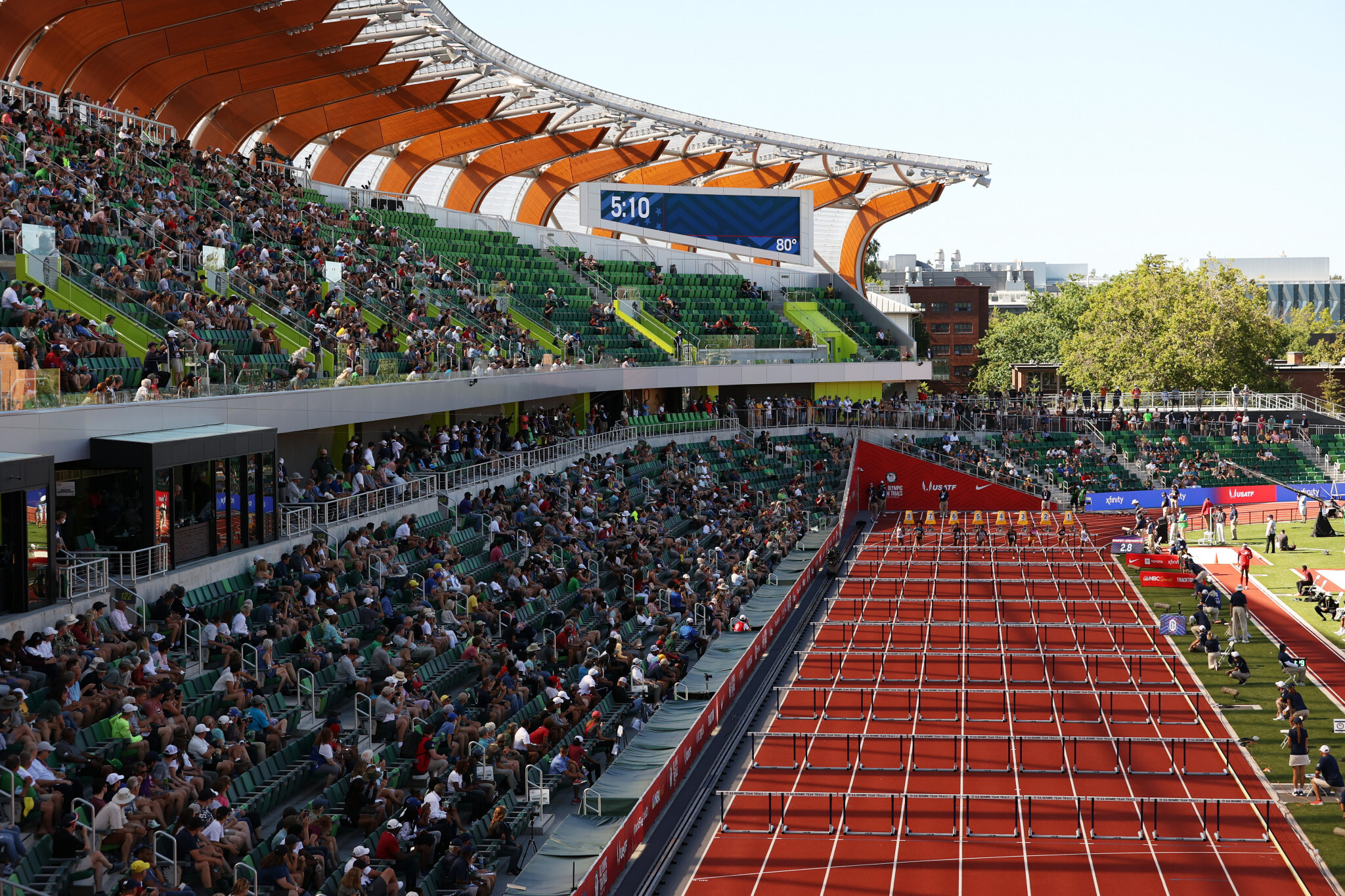
In his first competitive marathon in 2012 he finished third in Berlin in 2:06:12, and he was a consistent presence on the podium at World Majors Marathons thereafter, particularly in New York, where he finished second in 2015, first in 2017, third in 2018 and first again in 2019.
Kamworor ran his first race since the accident in January 2021, winning the Kenyan Police Cross Country Championships before going on to secure a place on Kenya’s Olympic 10,000m team after winning the national trials, only to have to pull out with an ankle injury.
But at the Valencia Marathon last December he was able to perform to the peak of his ability once more as he set a personal best of 2:05:23 in finishing fourth.
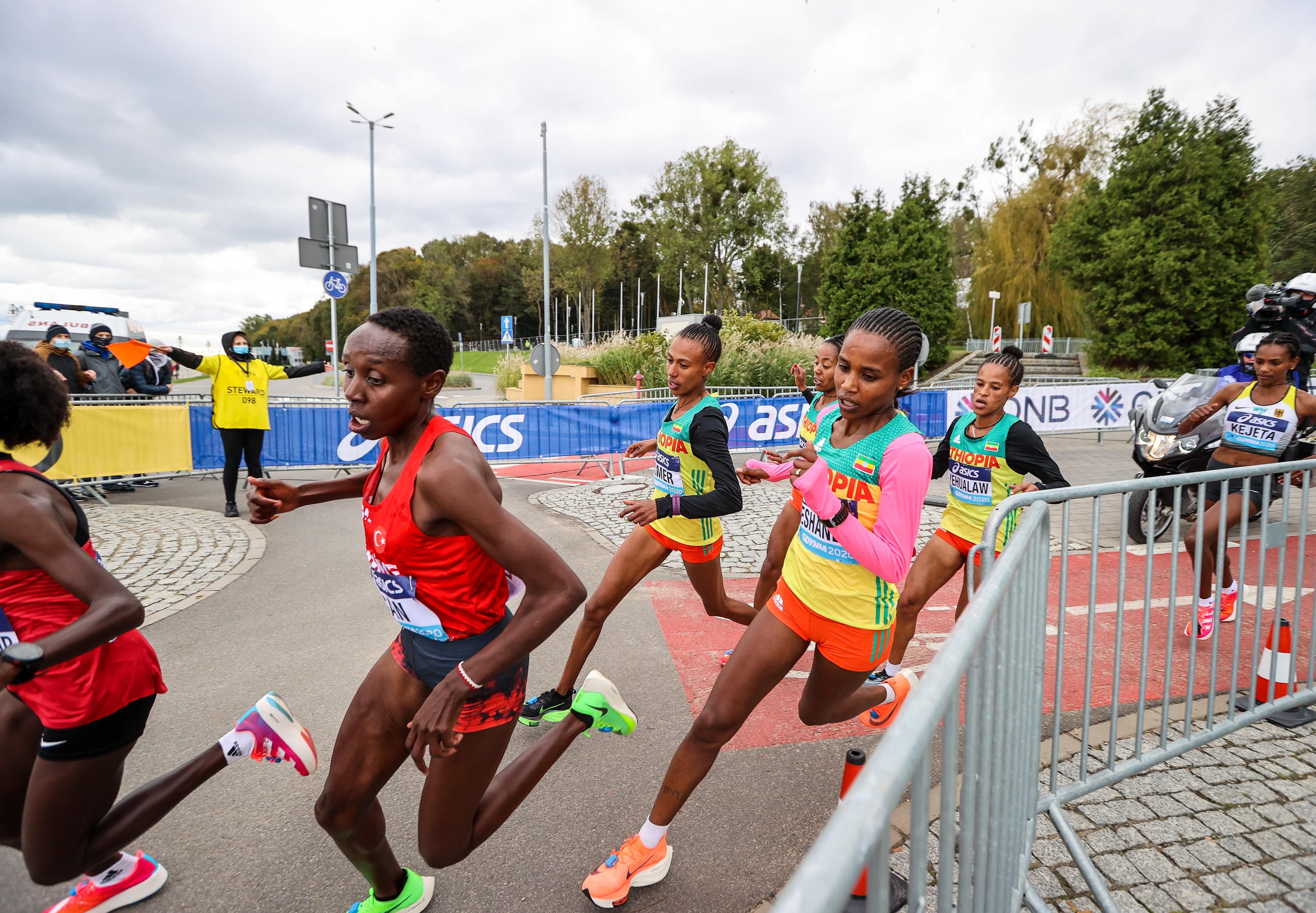
At the previous year’s running in Valencia, Cherono was second in a personal best of 2:03:04, putting him eighth on the world all-time list, having made his World Marathon Majors breakthrough in 2019 when he won in Boston in 2:07:57 and then Chicago in 2:05:45.
Like Kamworor, Kiptum also set a personal best last year as he clocked 2:04:17 in placing third at the Milan Marathon and he has a solid top-three record in virtually every race he has contested.
Such is the depth of Kenyan talent that they can name 2017 world champion Geoffrey Kirui as a reserve.
Meanwhile Kenya’s perennial rivals Ethiopia will be looking to their current world champion Lelisa Desisa, who found the way to win in the steamy heat of Doha three years ago, to make the most of his wild card entry to this year’s competition.
Desisa had early track success, winning the African U20 10,000m title in 2009, and he has since become a highly consistent performer at the highest level, achieving podium finishes four times in New York, including victory in 2018, and four times in Boston, where he won in 2013 and 2015.
He also has championship pedigree, having earned world silver in 2013 six years before his Doha gold, and has a personal best from 2013 of 2:04:45.
The formidable talent Ethiopia can call upon was made clear when it was confirmed that Desisa will have as teammates Tamirat Tola, Mosinet Geremew and Seifa Tura.
Tola earned Olympic 10,000m bronze in 2016 and world marathon silver in 2017. He set his personal best of 2:03:38 last year.
Geremew took silver behind Desisa at the 2019 World Championships, having finished second at that year’s London Marathon in 2:02:55, the third-fastest time in history.
Tura set his personal best of 2:04:29 last year in Milan before going on to win the Chicago Marathon in 2:06:12.
Uganda, the rising nation in distance running, earned this title in 2013 thanks to their 2012 Olympic champion Stephen Kiprotich. But the 33-year-old hasn’t been selected for Oregon, nor have Stephen Kissa, who ran a national record of 2:04:48 in Hamburg earlier this year, and Victor Kiplangat who was third in the second-fastest time ever by a Ugandan, 2:05:09.
Instead, Filex Chemonges, Fred Musobo and Jackson Kiprop will run the World Championships marathon, according to the Uganda Athletics Federation. So Kiprop, who helped Kiprotich to win the 2013 world title, is back at the World Championships for the first time since 2015.
Kissa, meanwhile, is due to be in Oregon in the 10,000m, where he will run with fellow Ugandan Joshua Cheptegei, the world 5000m and 10,000m record-holder, while Kiplangat is reported to be running the Commonwealth Games marathon.
Abdi Nageeye of the Netherlands and Belgium’s Bashir Abdi earned surprise silver and bronze medals respectively at the Olympics last year, but went on to confirm that their performance in Sapporo was anything but a fluke. Abdi set a European record of 2:03:36 to win the Rotterdam Marathon just two months later, while Nageeye was victorious at the Rotterdam Marathon earlier this year in a Dutch record of 2:04:56, finishing ahead of Abdi.
Both men will line up for the marathon in Oregon, only this time it will be less of a surprise if they reach the podium.
The United States will be looking to the highly consistent figure of Galen Rupp. After taking Olympic 10,000m silver in 2012, Rupp moved to the roads and earned Olympic bronze in 2016.
In 2017 he became the first US man to win the Chicago Marathon since 2002 and finished second at the Boston Marathon. He qualified for Oregon by finishing eighth at last year’s Olympics.
The championships will be in Rupp’s home state, in the same city where he made his first Olympic team in 2008 while he was a student at the University of Oregon.
The other US selections are Elkanah Kibet and Colin Mickow. Kibet, who is with the US military, finished 16th at the 2017 World Championships and set a personal best of 2:11:15 in finishing fourth at last year’s New York marathon.
Mickow is a 32-year-old full-time financial analyst for an organic and natural foods distributor who took up road running six years after finishing his college track career. He qualified for his first international vest after being the top US man home at last year’s Chicago Marathon, where he was sixth in 2:13:31.
Japan’s trio of male runners will be headed by Kengo Suzuki, who set a national record of 2:04:56 in February 2021 at the Lake Biwa marathon in Otsu. Daniel Do Nascimento of Brazil has run a 2:04:51 personal best this year and is another one to watch.
The three-loop World Athletics Championships marathon course only varies by about seven meters between its high and low points and the weather is likely to be considerably cooler than it was in Sapporo or Doha, where the men's marathon had to be held at midnight and the start time temperature was 29C/84F with 51% humidity.
Women's marathon
Ruth Chepngetich will defend her marathon title at the World Athletics Championships Oregon22 on July 18 by virtue of a wild card.
Chepngetich claimed the first gold medal of the 2019 World Championships, clocking 2:32:43 in the steamy heat to gain her first major gold.
She went on to finish third at the 2020 London Marathon before a roller coaster 2021, when she set a world record of 1:04:02 at the Istanbul Half Marathon, failed to finish the Tokyo 2020 Marathon in Sapporo but then won the Chicago Marathon.
At this year’s Nagoya Women's Marathon she won in 2:17:18, just 10 seconds off her personal best and the second-fastest ever women-only marathon.
She will be joined on the Kenyan team in Oregon by Judith Jeptum and Angela Tanui. Jeptum set a French all-comers’ record of 2:19:48 to win the Paris Marathon this year, while Tanui won the 2021 Amsterdam Marathon in 2:17:57.
Ethiopia will be represented by Gotytom Gebreslase, who won the 2021 Berlin Marathon on her debut and finished third in this year’s Tokyo Marathon in 2:18:18, Ababel Yeshaneh, second at the 2019 Chicago Marathon in a personal best of 2:20:51, and Ashete Bekere, third in last year’s London Marathon in 2:18:18, who has run 2:17:58 this year.
USA’s Keira D’Amato, who broke the North American record when winning January’s Houston Marathon in 2:19:12 – taking 24 seconds off the mark set by Deena Kastor in 2006 – has answered a late call to join the host nation’s team following the withdrawal of Olympic bronze medalist Molly Seidel.
Seidel has been suffering from a hip injury that forced her to drop out of the Boston Marathon in April and withdrew from the team after being unable to resolve her issue, giving the 37-year-old D’Amato, who only began serious marathon running in 2017, three weeks to prepare, but she is reported to be in “great shape”.
Her teammates will be Emma Bates, runner-up at last year’s Chicago Marathon, and Sara Hall, who finished second at the 2020 London Marathon and third at last year’s Chicago Marathon.
Japan has named Mizuki Matsuda, who has a personal best of 2:20:52, Mao Ichiyama, who has run 2:21:02, and Hitomi Niiya, who has a best of 2:21:17.
Britain will be represented by Rose Harvey, Olympian Jess Piasecki and Charlotte Purdue, who ran a personal best of 2:23:26 in finishing 10th at last year’s London Marathon.
Other names to watch out for are Bahrain’s Eunice Chumba, who ran 2:20:02 in Seoul in April this year, and Israel’s European 10,000m champion Lonah Salpeter, who won the 2020 Tokyo Marathon in 2:17:45 and was going well in the lead group at last year’s Olympic marathon before dropping down to 66th place in the closing stages.
After also dropping out of the 2019 World Championships marathon, Salpeter will be seeking to make the global impact her talent warrants.
Meanwhile Eritrea’s Nazret Weldu, who has run a personal best of 2:21:56 this year, is another one to watch.
by World Athletics
Login to leave a comment
World Athletics Championships Budapest23
Budapest is a true capital of sports, which is one of the reasons why the World Athletics Championships Budapest 2023 is in the right place here. Here are some of the most important world athletics events and venues where we have witnessed moments of sporting history. Throughout the 125-year history of Hungarian athletics, the country and Budapest have hosted numerous...
more...Peres Jepchirchir, world’s top marathoner, withdraws from world championships
Kenyan Peres Jepchirchir, who in the last year won the Olympics, New York City and Boston marathons, withdrew from next Monday’s world championships marathon due to a right hip injury, her agent confirmed.
Jepchirchir, a 28-year-old mom, began feeling discomfort last week, according to the Daily Nation.
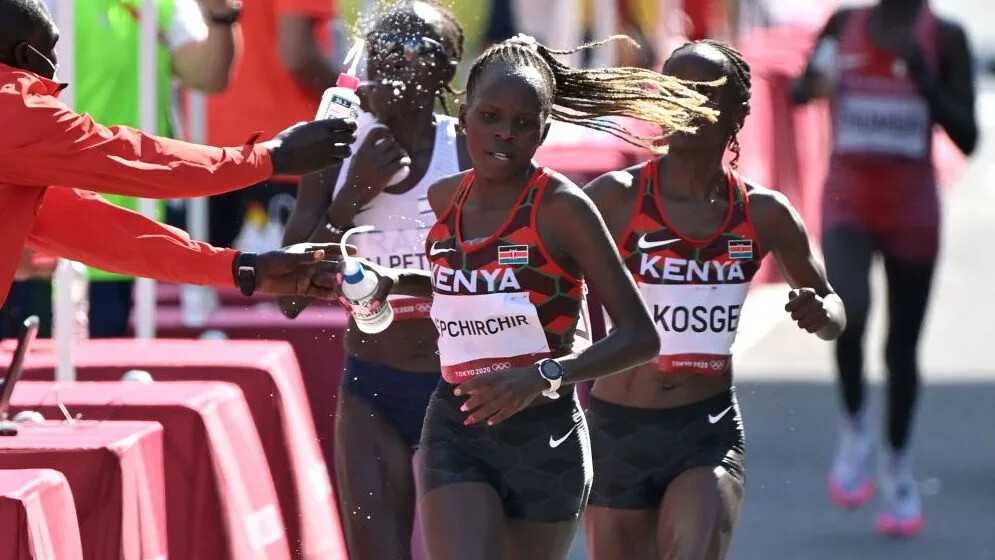
Last year, Jepchirchir became the first person to win the Olympic and New York City Marathons in a career, doing so in a span of three months. She then added a title in Boston on April 18, cementing her status as the world’s top marathoner.
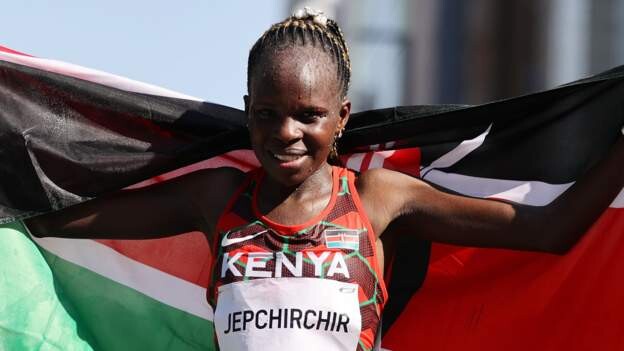
In Jepchirchir’s absence, the marathon field at worlds in Eugene, Oregon, is led by defending champion Ruth Chepngetich of Kenya and Ethiopians Ababel Yeshaneh (second to Jepchirchir in Boston) and Gotytom Gebreslase (Berlin Marathon champion), plus American record holder Keira D’Amato.
D’Amato replaces Olympic bronze medalist Molly Seidel, who withdrew two weeks ago, citing a hip injury, an ongoing process seeking a therapeutic use exemption for ADHD medication and a focus on her mental health.
by Olympic Talk
Login to leave a comment
World Athletics Championships Budapest23
Budapest is a true capital of sports, which is one of the reasons why the World Athletics Championships Budapest 2023 is in the right place here. Here are some of the most important world athletics events and venues where we have witnessed moments of sporting history. Throughout the 125-year history of Hungarian athletics, the country and Budapest have hosted numerous...
more...Keira D’Amato will be running the marathon in Eugene
How awesome is this!?! Keira D'Amato has been named to the team for the marathon at the World Track and Field Championships! She will be replacing Molly Seidel who unfortunately has an injury. Keira will be joining Sara Hall and Emma Bates to make up the U.S team. I wish Molly a speedy recovery. See you all in Eugene!
by Dave Ross
Login to leave a comment
Molly Seidel Out, Keira D’Amato in for World Championships Marathon
Seidel said last month she had sought a therapeutic use exemption for Adderall, which is banned in competition.
Keira D’Amato, the American record holder in the marathon, was named to Team USA for the World Championships today, replacing Molly Seidel, according to multiple sources.
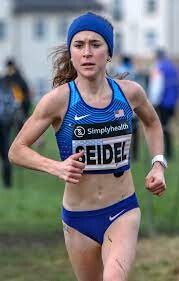
The women’s marathon at the World Championships, to be held in Eugene, Oregon, is on July 18.
Seidel, who won Olympic bronze last year in Sapporo, Japan, was named to the U.S. squad for the marathon based on that performance. But a hip impingement caused her to drop out of the Boston Marathon in April.
On June 8, Seidel, 27, posted to her Instagram account that she had been taking Adderall for ADHD since Boston. Adderall is banned for in-competition use by the World Anti-Doping Agency (WADA). Seidel wrote that taking the medication was “life changing,” and she was able to “get the quiet, functioning brain in my day-to-day life that I could previously only achieve with intense physical activity.”
Seidel had applied to WADA for a therapeutic use exemption (TUE) to be able to take the medication when she was competing, but it had not been granted before the New York Mini 10K—and it wasn’t clear if it would be granted—so she withdrew.
The reason why her spot is going to D’Amato is not clear, and Runner’s World sought clarification from Seidel, her coach, and her agent.
D’Amato, 37, has less than three weeks to prepare for a marathon, but she “is in great shape,” according to her agent, Ray Flynn. She ran 2:19:12 in setting the American marathon record in January in Houston.
She won the BAA 10K last Sunday on a hot day in 31:17. Her Strava training shows she did an 18-miler on June 27 and has been averaging 73 miles per week for the last four weeks. She’s also been racing frequently, finishing third at the New York Mini on June 11.
On June 21, Runner’s World asked D’Amato if, in light of Seidel’s post, she was doing marathon training and was told she was an alternate for the Worlds team. “No one has contacted me,” she said at that time.
Emma Bates and Sara Hall are the other two American women in the World Championships marathon. Galen Rupp, Elkanah Kibet, and Colin Mickow are the men.
USA Track & Field usually names its World Championships marathoners based on a descending order time list. But given many marathons were canceled or postponed in 2021, it announced it would pick top 10 finishers from the Games (Seidel and Rupp) and then top finishers from the Chicago, Boston, and New York City marathons last fall. That decision was controversial because the selection criteria were announced in October after the Chicago and Boston marathons had already taken place.
Login to leave a comment
What Are therapeutic use exemptions and Why Are They Controversial?
Athletes such as Molly Seidel, who was recently diagnosed with ADHD and prescribed Adderall, must receive exemptions from doping agencies in order to use medications that are banned.
Olympic bronze medalist Molly Seidel announced on Instagram on June 8 that she’d be missing the New York Mini 10K last weekend. The reason? She’d been diagnosed with ADHD early in 2022, and after the Boston Marathon, she started taking the prescription drug Adderall.
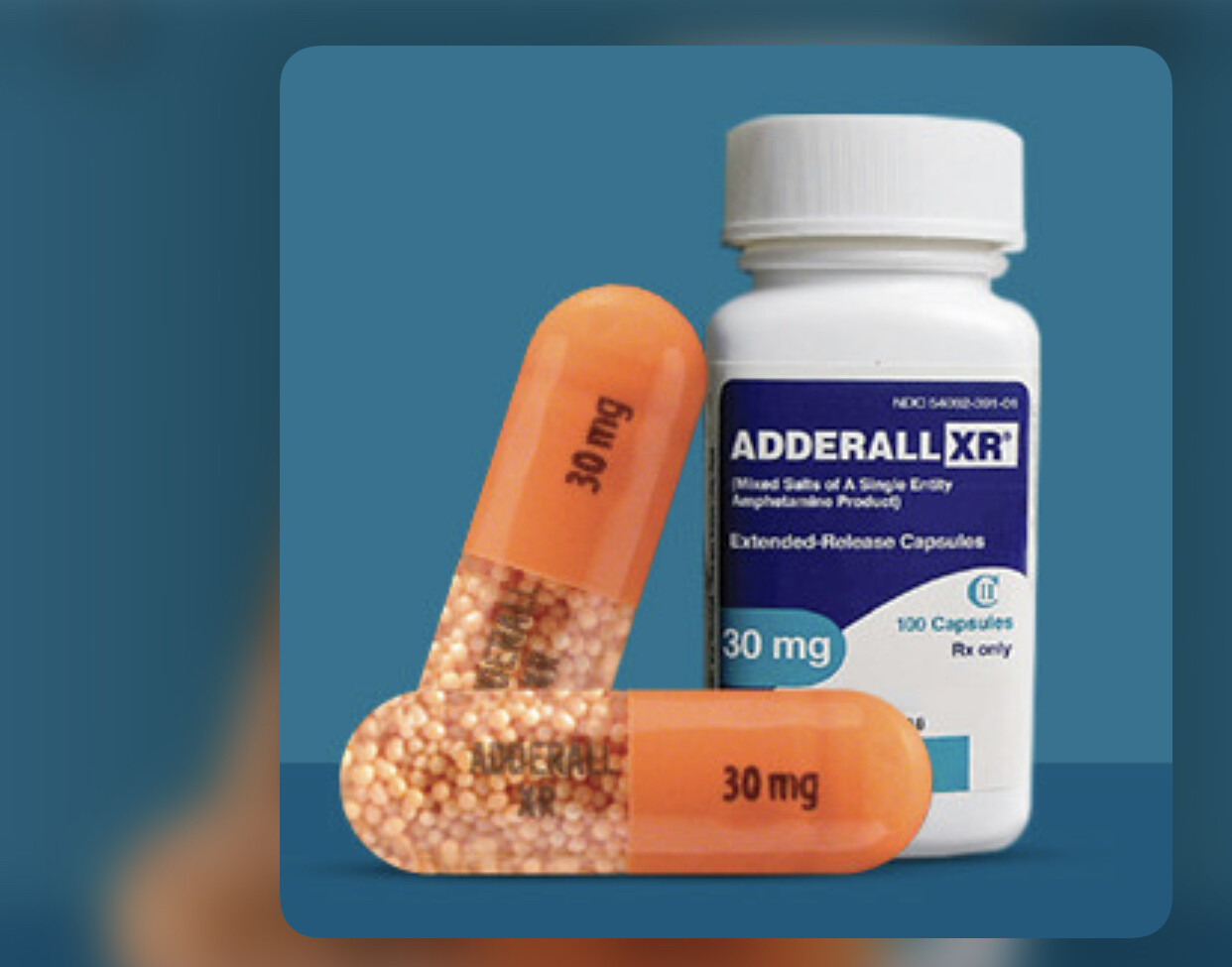
Adderall is banned by the World Anti-Doping Agency (WADA) for use in competition, because it can be used as a performance enhancer. But Seidel has a legitimate medical need for the drug, so she can apply for a therapeutic use exemption, commonly known as a TUE.
Seidel wrote on Instagram that she applied for a TUE about six weeks ago, and she won’t have an answer on her application until the end of June at the earliest.
Since she started taking Adderall, she had been feeling much better. “I felt like I was able to get the quiet, functioning brain in my day-to-day life that I could previously only achieve with intense physical activity,” she wrote. “It also gave me remission of many eating disorders behaviors that I’ve dealt with consistently since my teens.”
She was disappointed to pull out of the New York Mini 10K. Seidel wrote, especially after she has had a tough few months. (She dropped out of the Boston Marathon in April with a hip impingement at about the 16-mile mark.)
“However, I’m committed to a clean sport and respecting my own mental health needs, so that means following the appropriate procedures of this TUE process,” she wrote. “Mental health takes work, and I want to be transparent about the fact that medication is sometimes a very necessary part of that work.”
Seidel is due to run the World Championships marathon in Eugene on July 18.
Her case illustrates a years-long debate among athletes, coaches, and officials about TUEs. At issue: How can the sport allow its athletes to legally obtain treatment for diagnosed medical conditions while preventing others from abusing the system?
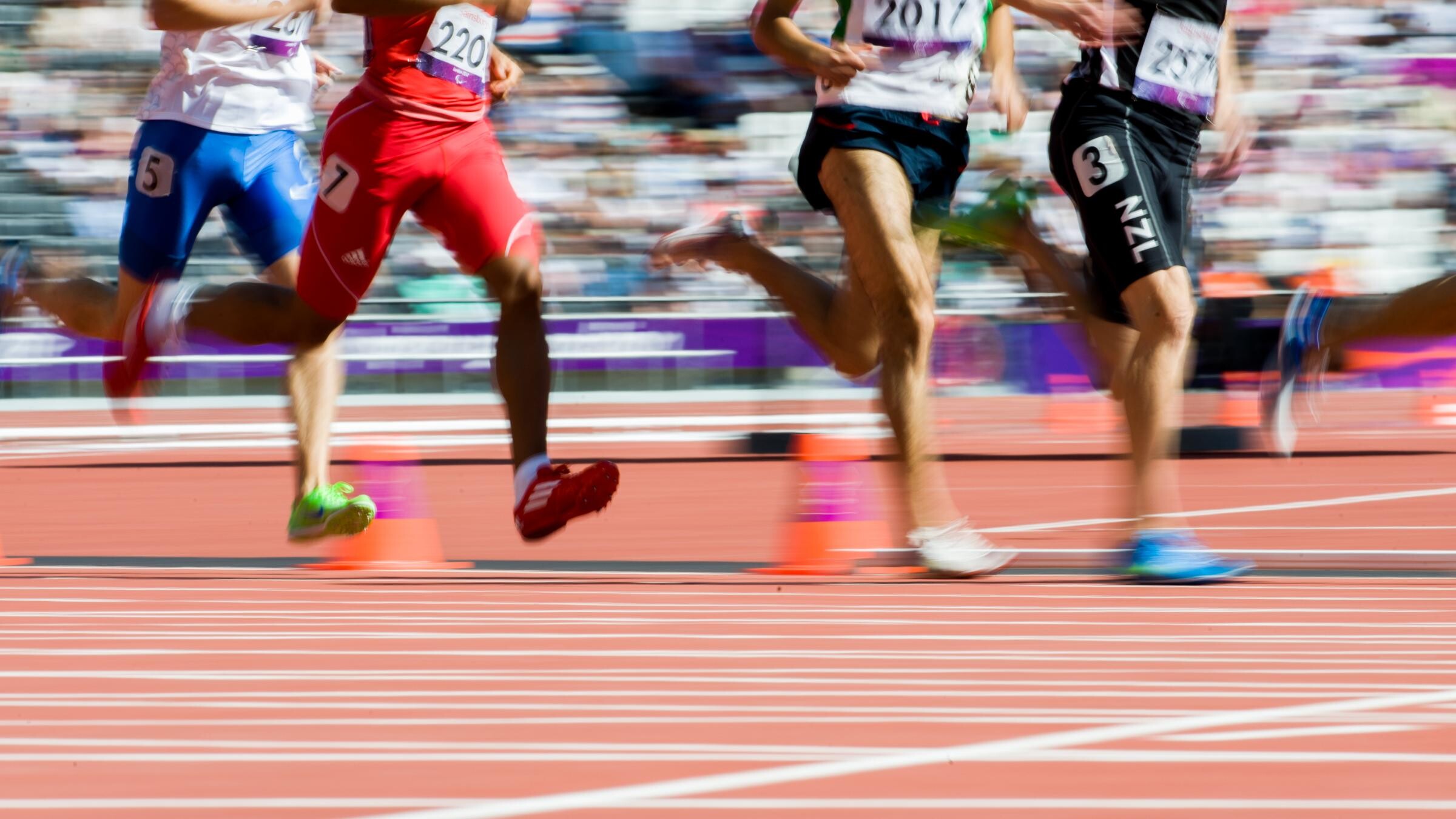
Below, we answer a few common questions about TUEs.
What is a therapeutic use exemption (TUE)?
When an athlete is sick or has a condition that requires treatment with medicine that is listed on WADA’s prohibited substance list, he or she can be granted a TUE to take the drug, according to the U.S. Anti-Doping Agency (USADA).
Some drugs are prohibited when an athlete is competing. Other drugs are also banned for out-of-competition use. If a TUE is approved, it usually has a starting and ending date during which the athlete may take the medication. If the athlete is drug tested during that period and tests positive for an illegal substance for which they are granted an exemption, he or she will not face disciplinary measures.
In an emergency situation, if somebody is treated with a prohibited substance, he or she is allowed to file an emergency TUE afterward, as soon as possible. For example, when Shalane Flanagan received an IV for severe dehydration in February after the 2016 Olympic Marathon Trials, which is otherwise a banned practice, she was granted an exemption because she was in medical need.
“I resisted getting an IV but a lot of the doctors there were insisting that I needed it,” Flanagan said, weeks after the race. “It would have taken a really long time to get those fluids in orally. So the IV really speeded up my recovery. It actually made me realize probably why they are illegal [in competition] under most circumstances—my core temperature immediately went down. If I hadn’t had that, I would have had a much longer process.”
How does an athlete get a TUE?
U.S. athletes apply for a TUE through USADA, though if somebody is also competing at an international event, it may require that person to obtain another exemption through World Athletics, the governing body for track and field.
“The TUE application process is thorough and designed to balance the need to provide athletes access to critical medication while protecting the rights of clean athletes to compete on a level playing field,” according to USADA.
If a pro runner is in need of a TUE, he or she downloads the application and completes it with a doctor. A medical file must accompany the application.
Who decides if the athlete gets a TUE?
The Therapeutic Use Exemption Committee reviews the application, the medical details, the patient history, test results, how the condition has been managed over time, and attempts to treat it with non-prohibited medications and methods. Galen Rupp, for example, has been granted exemptions to take prednisone to treat asthma.
The committee includes doctors and medical experts, according to USADA. They review and either approve or deny the application without knowing the athlete’s name by following WADA’s standards, outlined in an annual 30-page document.
WADA policy states that athlete must prove that the prohibited substance is needed to treat an acute or chronic medical condition, “such that the athlete would experience a significant impairment to health” if it is withheld; that the medication is highly unlikely to produce any enhancement of performance beyond what would be considered “anticipated” by a return to the individual’s normal health; and that there is no reasonable alternative to treat the condition.
What is on the WADA prohibited substance list?
The prohibited list includes more than 300 substances and methods of taking substances (for example, orally, by injection, intravenously). It also includes those that are always prohibited and those that are only prohibited during a competition. The lists are updated by WADA each year, and it’s up to the athletes to be aware of changes of the rules.
Some examples of prohibited substances include steroids, human growth hormone, certain stimulants, diuretics, and masking agents that can interfere with drug tests.
How could an athlete use TUE system or prescription drugs to cheat?
Athletes at the highest level are constantly searching for fractions of percentages in performance gain. Some, of course, seek such gains illegally. Should that athlete have a support team of coaches and doctors who also engage in unethical practices, they can collectively seek exemptions for medications that are not medically needed but could produce a competitive advantage.
In July 2015, Rupp and his coach Alberto Salazar were accused by former members of the Oregon Project of manipulating the TUE system for performance gain and faking symptoms in an effort to be prescribed legal thyroid medications. Those medications could help with a runner’s energy levels, allowing an athlete to train with more intensity and volume. Rupp and Salazar have strongly denied those accusations. Salazar has since received a four-year ban for trafficking performance-enhancing drugs to his athletes and in a separate matter, he has been banned permanently from track by SafeSport.
by Runner’s World
Login to leave a comment
Twelve Olympians will lead star-studded lineup at 50th anniversary of Mastercard New York Mini 10K
Twelve Olympians and five Paralympians will line up in Central Park for the 50th anniversary of the Mastercard® New York Mini 10K, the world’s original women-only road race, on Saturday, June 11, New York Road Runners (NYRR) announced today.
U.S. Olympians Emily Sisson, Molly Seidel, Aliphine Tuliamuk, and Rachel (Schneider) Smith will lead a strong American contingent that will go up against previously announced Olympic, TCS New York City Marathon, and Boston Marathon champion Peres Jepchirchir, United Airlines NYC Half champion and 5K world-record holder Senbere Teferi, and two-time Mini 10K champion Sara Hall.
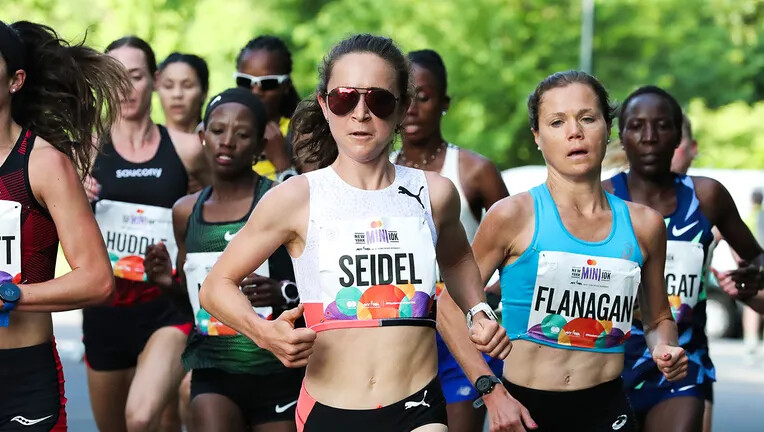
Sisson will come into the race after claiming her sixth national title last month in an American record 1:07:11 at the USATF Half Marathon Championships. She made her Olympic debut in Tokyo last summer after winning the 10,000 meters at the U.S. Olympic Track and Field Trials, where she broke the 17-year-old Trials record set by Deena Kastor in 2004. She has been very successful in her last three trips to New York, finishing as the runner-up at the United Airlines NYC Half twice and winning the USATF 5K Championships.
“After breaking the American record in the half-marathon, I’m excited to step down in distance and compete in the Mastercard® New York Mini 10K for the first time,” Sisson said. “It will be a privilege to take part in such a powerful event that has paved the way for so many women over the last 50 years.”
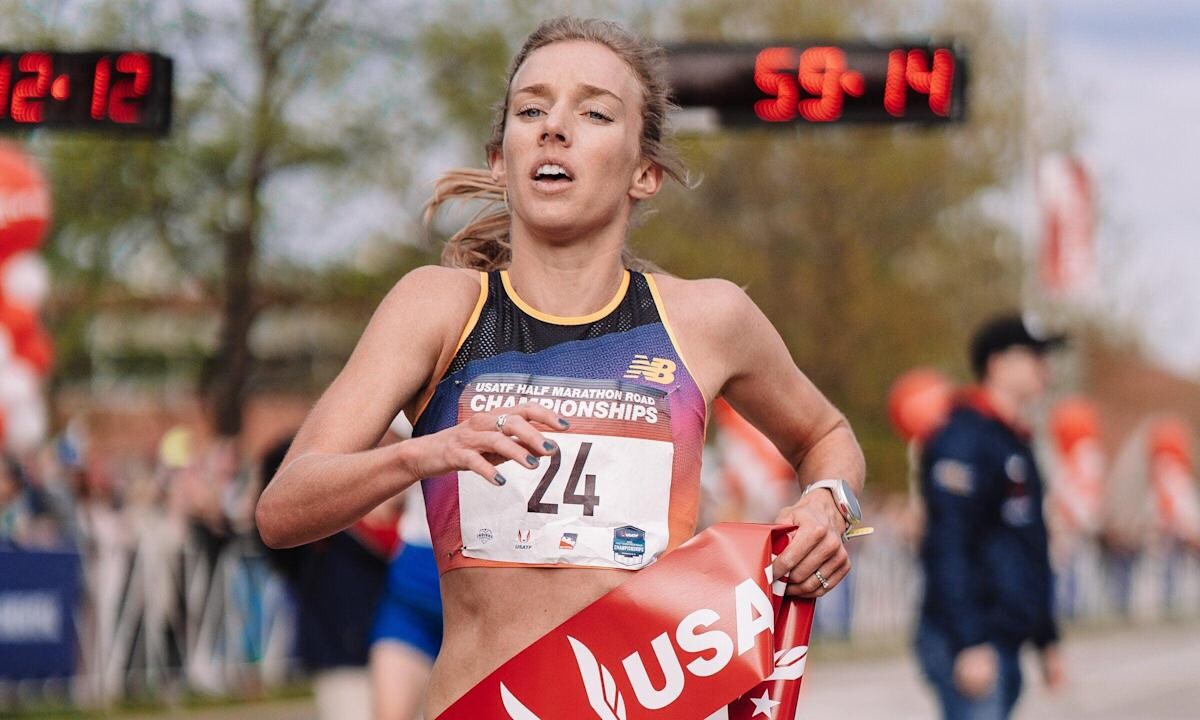
Seidel owns a bronze medal from the Tokyo Olympic marathon last year and in her last trip to New York set an American course record and recorded a fourth-place finish at the TCS New York City Marathon. Tuliamuk won the 2020 U.S. Olympic Marathon Trials and then gave birth to her daughter before running in the Olympic marathon in Tokyo. She will be making her first trip to New York since 2019 and is coming off winning the 25km national title, bringing her national title count to 11. Smith represented the U.S. at the Tokyo Olympics in the 5,000 meters after finishing third in the distance at the U.S. Olympic Track and Field Trials.
The deep U.S. women’s contingent also includes American marathon record-holder Keira D’Amato, the top American finisher at the last two Boston Marathons Nell Rojas, 2019 New York Mini 10K runner-up Stephanie Bruce, U.S. national champion Erika Kemp, and the top American finisher at the 2022 United Airlines NYC Half Lindsay Flanagan.
Returning to the event 10 years after her victory will be Kenya’s Edna Kiplagat, a two-time world champion in the marathon who won the 2010 New York City, 2014 London, and 2017 Boston marathons, and was the runner-up in Boston in 2019 and 2021.
“Winning the New York City Marathon 12 years ago changed my life, and now, 10 years after also winning the Mini 10K, I still enjoy my racing and am happy to still be competing at a high level,” Kiplagat said. “NYRR always invites the highest quality fields, so I always like lining up in New York with the best in the world. There are so many inspiring women who have participated in this race over the years who set a positive example for everyone – both runners and non-runners – and I’m lucky to be part of such a prestigious group.”
Last year’s TCS New York City Marathon runner-up and Mastercard® New York Mini 10K runner-up Viola Cheptoo of Kenya and former NCAA 10,000-meter champion Sharon Lokedi of Kenya will contend for the title as well.
The professional wheelchair division will be headlined by two-time Paralympic medalist and three-time Mastercard® Mini 10K defending champion Susannah Scaroni. Since the addition of the professional wheelchair division in 2018, Scaroni is the only athlete to have won the race.
“The Mastercard New York Mini 10K is a special one to me for so many reasons, and I’m excited at the chance to race on what will be a milestone day for women’s running in Central Park,” Scaroni said. “Not only is the Mini 10K the world’s original women-only road race, but it is also one of the only women-only wheelchair races at the present time, which will hopefully pave the way for future generations of women’s wheelchair racers in the next 50 years.”
Lining up against Scaroni will be U.S. Paralympians Jenna Fesemyer, Yen Hoang, Hannah Dederick, and Eva Houston.
The Mini 10K, which began in 1972 as the Crazylegs Mini Marathon, was the first women-only road race and has gone on to garner more than 200,000 total finishers to date. Former NYRR President Fred Lebow named the race after the miniskirt, which back then was in vogue. A total of 72 women finished the first race, and three weeks later, Title IX was signed into law, guaranteeing girls and women the right to participate in school sports and creating new opportunities for generations of female athletes.
The Mastercard® New York Mini 10K will offer $45,000 in total prize money, including $10,000 to the winner of the open division and $2,500 to the winner of the wheelchair division. The professional athlete races will be streamed live on USATF.TV beginning at 7:40 a.m. ET. Mastercard® will serve as title sponsor of the event for the second time, and as part of its on-going partnership with NYRR will also serve as the presenting sponsor of professional women’s athlete field.
by Running USA
Login to leave a comment
New York Mini 10K
Join us for the NYRR New York Mini 10K, a race just for women. This race was made for you! It’s the world’s original women-only road race, founded in 1972 and named for the miniskirt, and it empowers women of all ages and fitness levels to be active and to look and feel great on the run. Every woman who...
more...

